- South Africa
- Afghanistan
- North Korea
- Adventure + Outdoors
- Amusement Parks
- Backpacking Trips
- Boating + Cruises
- Budget Travel
- Bus + Train Travel
- Coasts + Islands
- Country Trips
- Fall Vacations
- Family Vacations
- Green Travel
- Heritage + History
- Honeymoons + Romance
- Inspiration + Guide
- Landmarks + Attractions
- LGBT Travel
- Markets + Bazaars
- National Parks + Reserves
- Nature + Wildlife
- Parks + Gardens
- Pets + Animals
- Photography
- Airlines + Airports
- Budgeting + Currency
- Business Travel
- Celebrity Travel
- Customs + Immigration
- Deals + Rewards
- Family Travel
- Hotels + Resorts
- Luggage + Packing Tips
- Offbeat News
- Photography Tips
- Responsible Travel
- Solo Travel
- Tech + Gear
- Travel Etiquette
- Travel Warnings
- Bars + Clubs
- Celebrity Chefs
- Restaurants + Cafés
- Wine + Vineyards
- Beach Hotels
- Boutique Hotels
- Hotel Openings
- Hotel Reviews
- Luxury Hotels
- Mountain + Ski Resorts
- Spa Resorts
- Vacation Rentals
- Asia Cruises
- European Cruises
- Festivals + Events
- Museums + Galleries
- Style + Design
- Travel’s Best
- Hotel with Agoda.com
- Hotel with Booking.com


Seoul autumn foliage 2024 forecast — The timeframe & 13+ best…
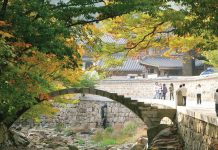
Busan fall foliage forecast 2024 — When & 6+ best places…
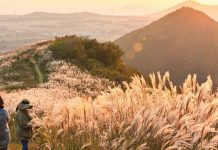
Jeju fall foliage forecast 2024 — The timeframe & 6+ best…
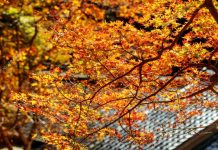
Taiwan fall foliage forecast 2024 — When & 9+ best place…

The complete Seoul subway guide: How to use, lines, fares for…

How much does it cost to travel to Korea? Tips on…

The ultimate guide to NETS FlashPay Card: What is it, how…

How much will it cost to go to Singapore? Tips on…

13 best, most famous & popular bubble tea in Taiwan

Where to eat in Penang? 17 best places to eat &…

Best bubble tea in Taiwan — Top 11 most famous &…

29+ must-try foods in Thailand

11+ best homestays in Kuala Lumpur near famous tourist attractions

Mövenpick Resort Kuredhivaru Maldives reviews. The detailed review of my vacation…

Hyatt Regency Danang Resort and Spa reviews. The resort is highly…

+7 luxury resorts you must stay in Danang, Vietnam

10 must-know things for your best first time European river cruise

Top 3 best luxury cruises in Halong Bay, Vietnam

Cherry blossom festival Korea 2024 — Top 5 cherry blossom festivals…

Ghibli museum blog — The fullest Ghibli museum guide for first-timers

Kyoto festival — Top 10 best events & most famous festivals…

National Palace Museum Taipei blog — What to see in National…

Japanese waterfall — Top 10 most beautiful waterfalls in Japan in…

19+ most beautiful towns in Europe every tourist need to visit…

Georgia travel photos — 20+ captivating photos show Georgia is heaven…

Explore Damnoen Floating Market — The oldest floating market of Thailand

Visiting Fenghuang Ancient Town — One of the most charming ancient…

Mekong Delta travel blog — Beyond rivers of Southwestern Vietnam

14 reasons why you should travel when you are young

Shigaraki Tanuki – An animal symbol of good luck in Japan

Living in the charms of cave houses in Andalucia, Southern Spain

20+ jaw-dropping tiny homes around the world
Japan itinerary 4 days — how to spend 4 days in japan to visit naria, tokyo, fuji.
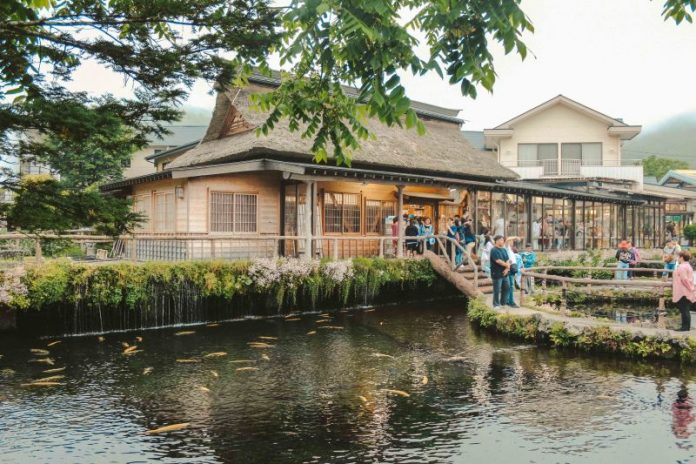
Summer has come, I packed up again and hit the road, this time to the land where the sun rises the earliest in the world — Japan, dubbed the land of the rising sun, the land of cherry blossoms and one of the world’s most beautiful autumn places as well. I didn’t have too much time for this trip because I planned for some long upcoming trips, so I chose to go to Japan for a short time, enough to embrace the rainfall in Tokyo, strolling around Shinjuku, visit Naritasan Shinshoji Temple and fruit picking in Yamanashi.
- What to do in Japan? — 100 things to do in Japan & best, must things to do in Japan
- Japan itinerary 9 days — How to spend 9 days in Japan to visit: Osaka – Kobe – Kyoto – Nara?
- 8 recommended onsen (hot springs) you should visit when traveling in Beppu, Japan
Japan fall foliage forecast 2024 — The timeframe & 41+ places to visit in Japan during autumn
Tokyo fall foliage forecast 2024 — when & 13+ best place to see autumn leaves in tokyo.
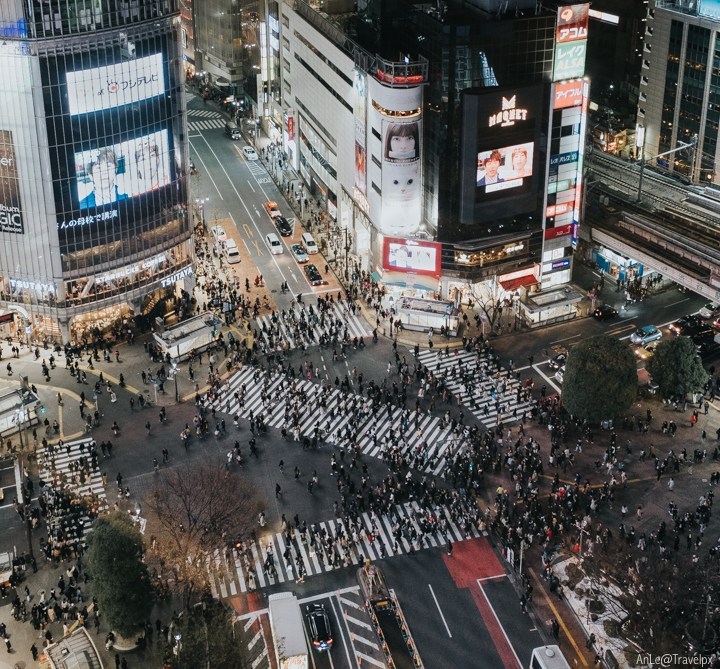
So, what to do and how to spend 4 days in Japan? Let’s check out our suggested Japan itinerary 4 days 3 nights on my field trip in summer to visit Narita, Tokyo and Mount Fuji with a very detailed plan from how to get to Japan, where to go, what to do as well as the trip cost.
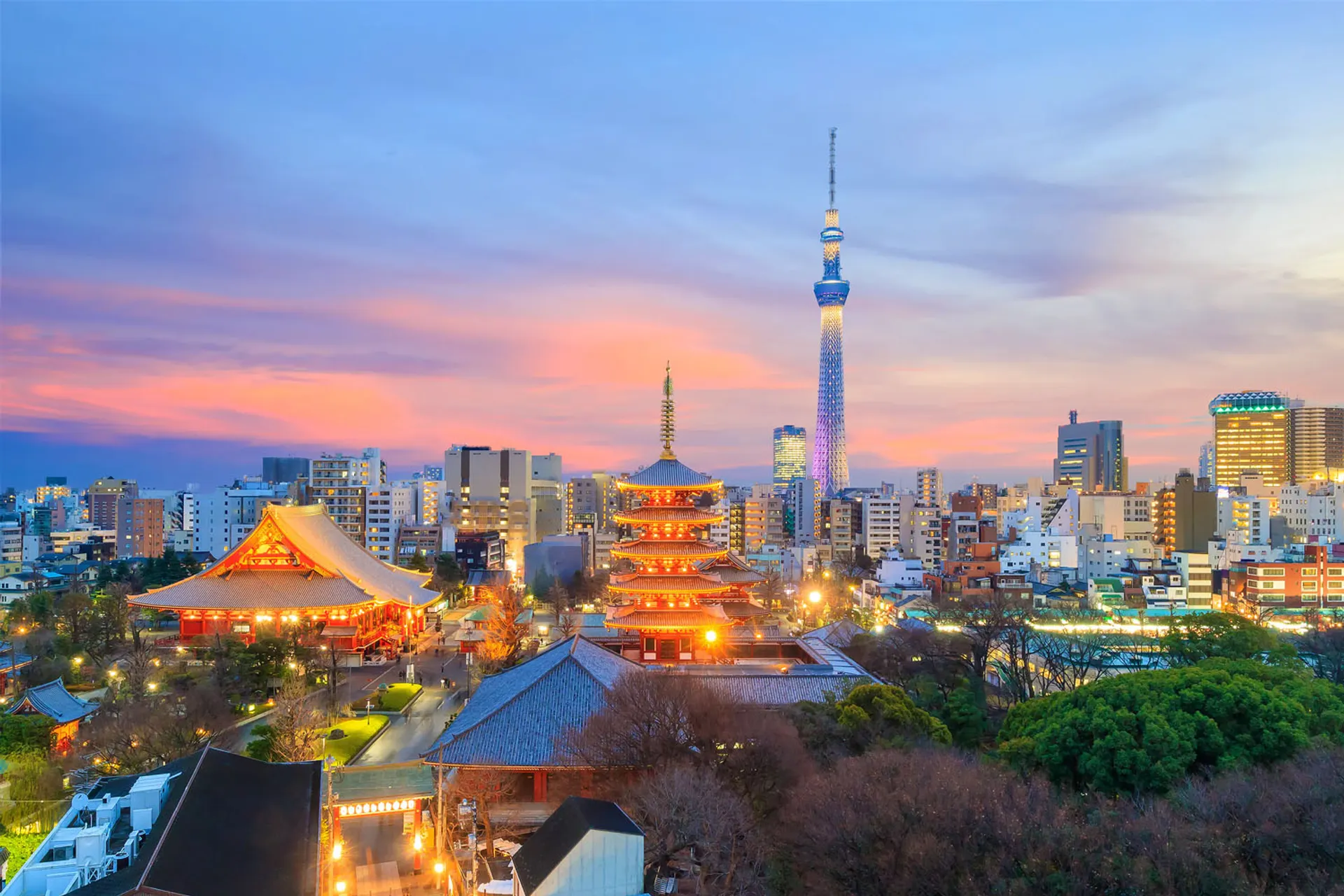
Japan itinerary 4 days: Fly to Japan
I chose to flying with Vietnam Airlines because I want to fly directly and Vietnam Airlines allows up to 40kg of free checked baggage, which is convenient because every trip to Japan I often bring back a bunch of beautiful things, delicious food and buy all kinds of miscellaneous things, usually at least 30kg will be needed to store. There is a small note, you should bring one normal suitcase and another empty suitcase to be able to shop comfortably.
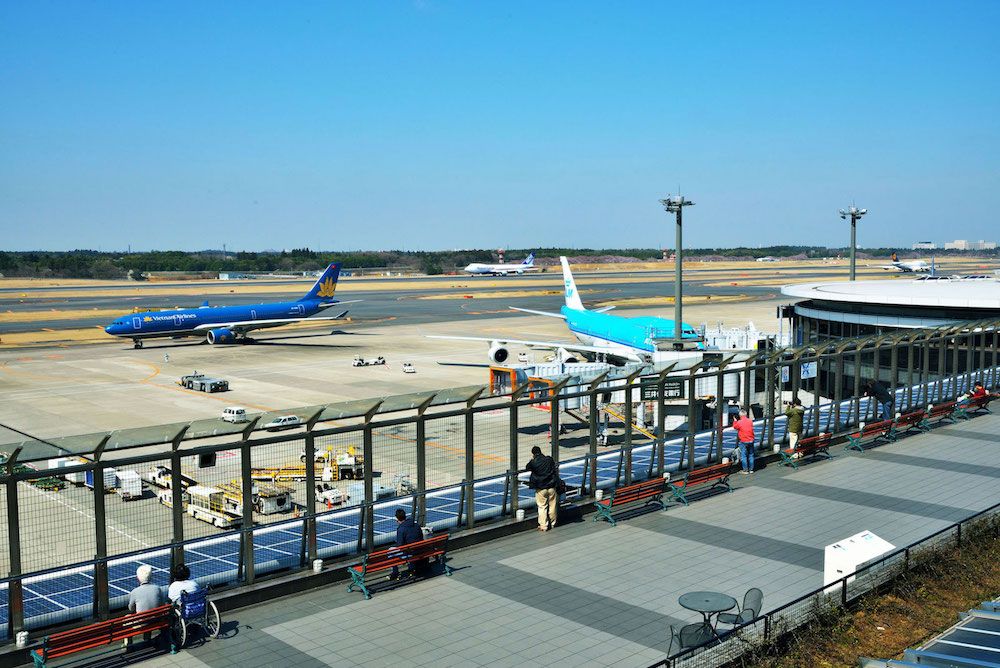
The airfare from Saigon, Vietnam to Tokyo ranges: USD 439 – USD 657/round-trip. You should book one month in advance to get low fare.
How to spend 4 days in Japan?
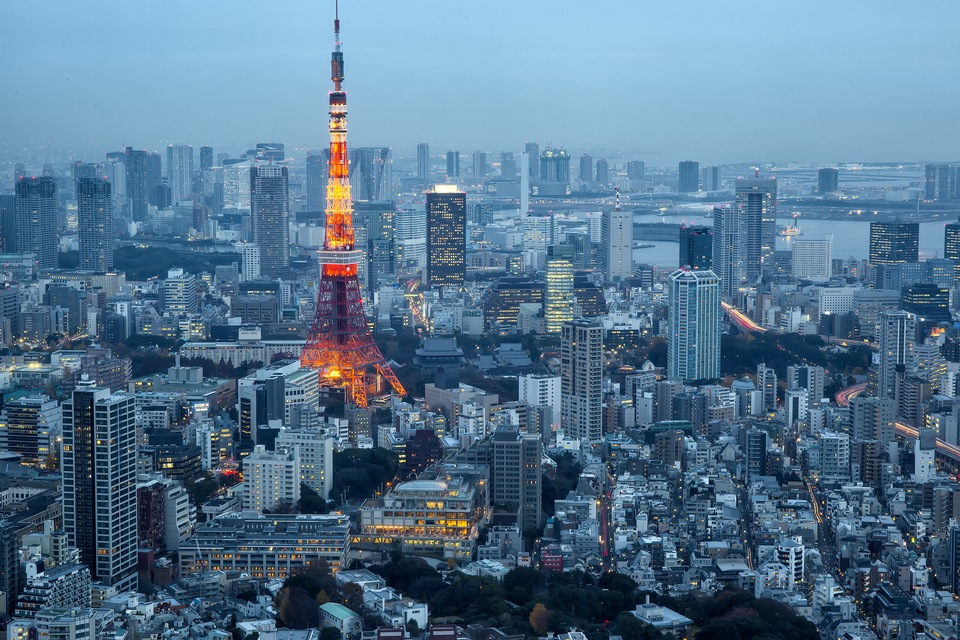
Here are my detailed suggested Japan itinerary 4 days 3 nights.
Day 1: Saigon – Narita, visit Shinshoji temple in Narita, try Shabu Shabu hot pot and stay overnight at Toyoko Inn.
Day 2: Tokyo – Odaiba, visit Asakusa Shrine in Tokyo, take photos with Tokyo Skytree, visit Akihabara electronics district, go to Teamlab Planets – an impressive digital museum, go to Odaiba to see the Statue of Liberty and overnight at Grand Hotel Kanachu in Kanagawa near mount Fuji to visit it on the next day.
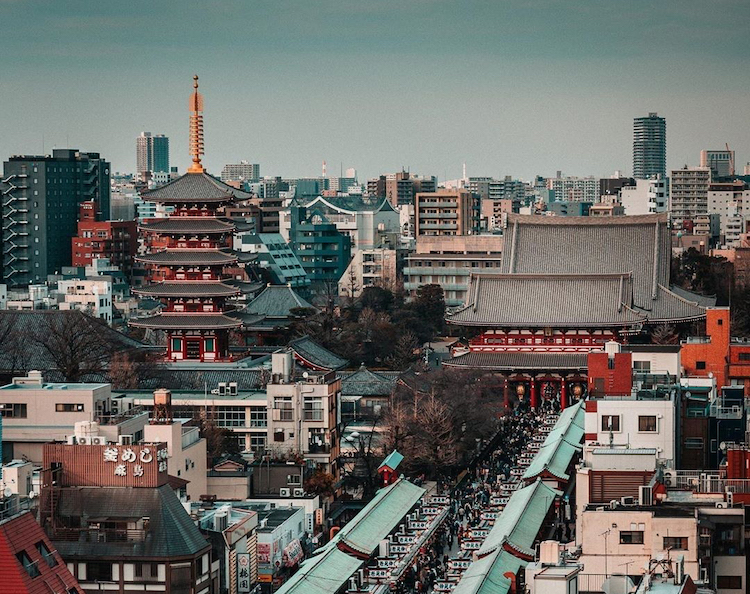
Day 3: Tokyo – Kawaguchiko – Fuji: Visit Yamanashi Fuehukigawa Fruit Park to pick seasonal fruits, experience an earthquake at Earthquake Simulation Center, visit Oishi Park flower garden, visit Oshino Hakkai ancient village. Overnight at Route Inn and bath onsen.
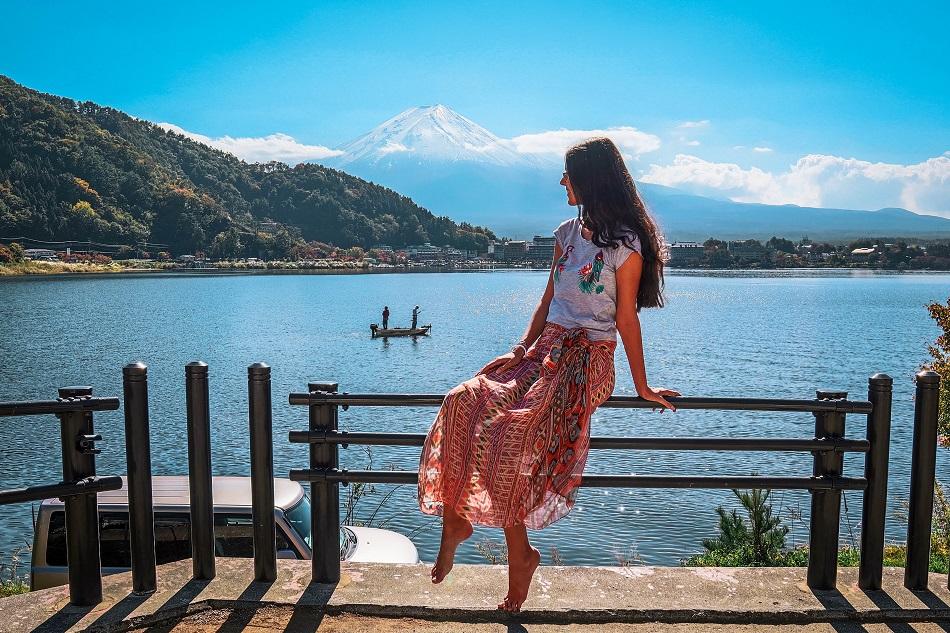
Day 4: Fuji – Narita, shopping at Aeon Mall and fly back to Vietnam.
Japan itinerary 4 days: The most impressive places and best things to do of the trip on 4 days in Japan journey.
Naritasan shinshoji temple, narita.
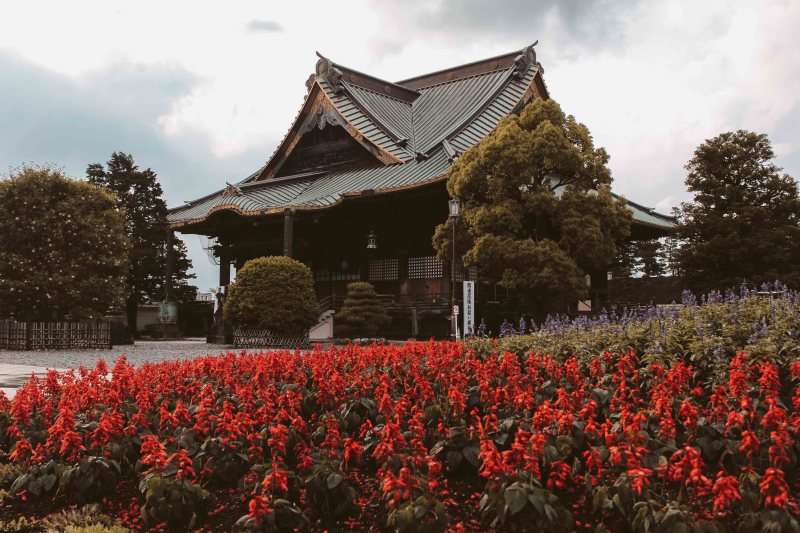
Shinshoji Temple left an impression on me because of the peace and grandeur of its architecture, coming here you will feel as to live in a completely different space. This place is not crowded but the area is extremely huge, to walk and explore entire the temple area you will need a whole day.
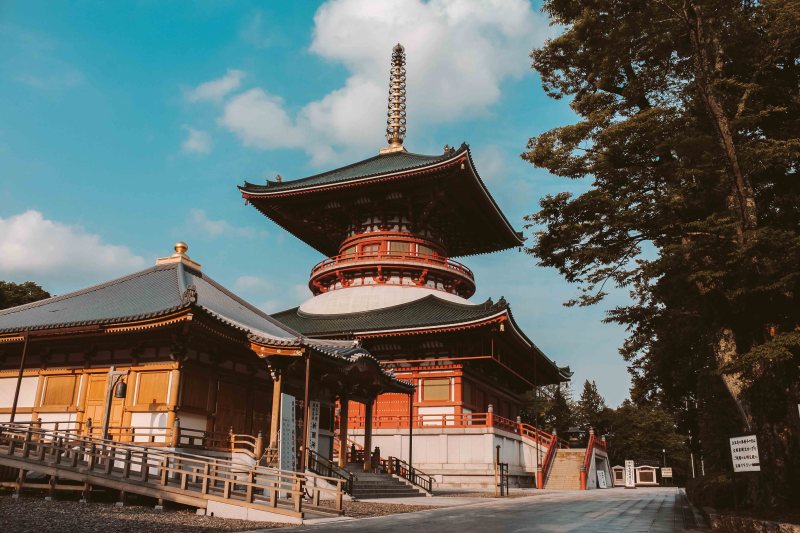
Address: 1 Narita, Chiba 286-0023, Japan Hours: 8AM–4PM Founder: Kanchō Daisōjō Opened: 940 AD
teamLab Planets TOKYO
In Tokyo, there is not only one teamLab museum but also 2, one is teamlab Planets in Toyosu and another is teamlab Borderless in Odaiba. You can go to 1 of 2 because each place has extremely impressive digital galleries. I chose teamlab Planets because that day Borderless closed for maintenance. But really overwhelmed with the exhibitions that hit all the senses, here you will be able to step into the star-lit room, go into the luminescent lake, and watch the night sky full of glowing flowers.
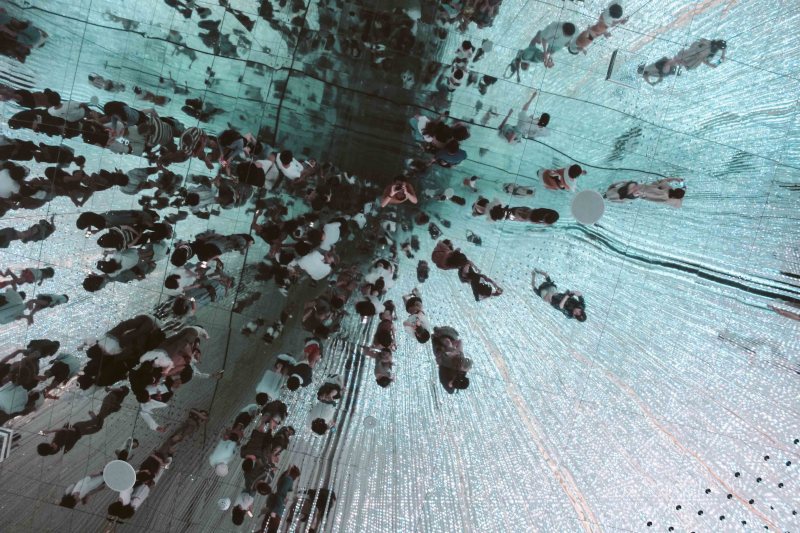
Address: 6 Chome-1-16 Toyosu, Koto City, Tokyo 135-0061, Japan Hours: 9AM–8PM Entrance fee: 3,200 JPY Website: https://teamlabplanets.dmm.com/en/
Peach picking in Yamanashi
During this trip to Japan, I had the opportunity to visit Yamanashi Prefecture to visit fruit farms, Yamanashi Prefecture is considered the fruit garden of the whole of Japan with a variety of fruits grown all year round.
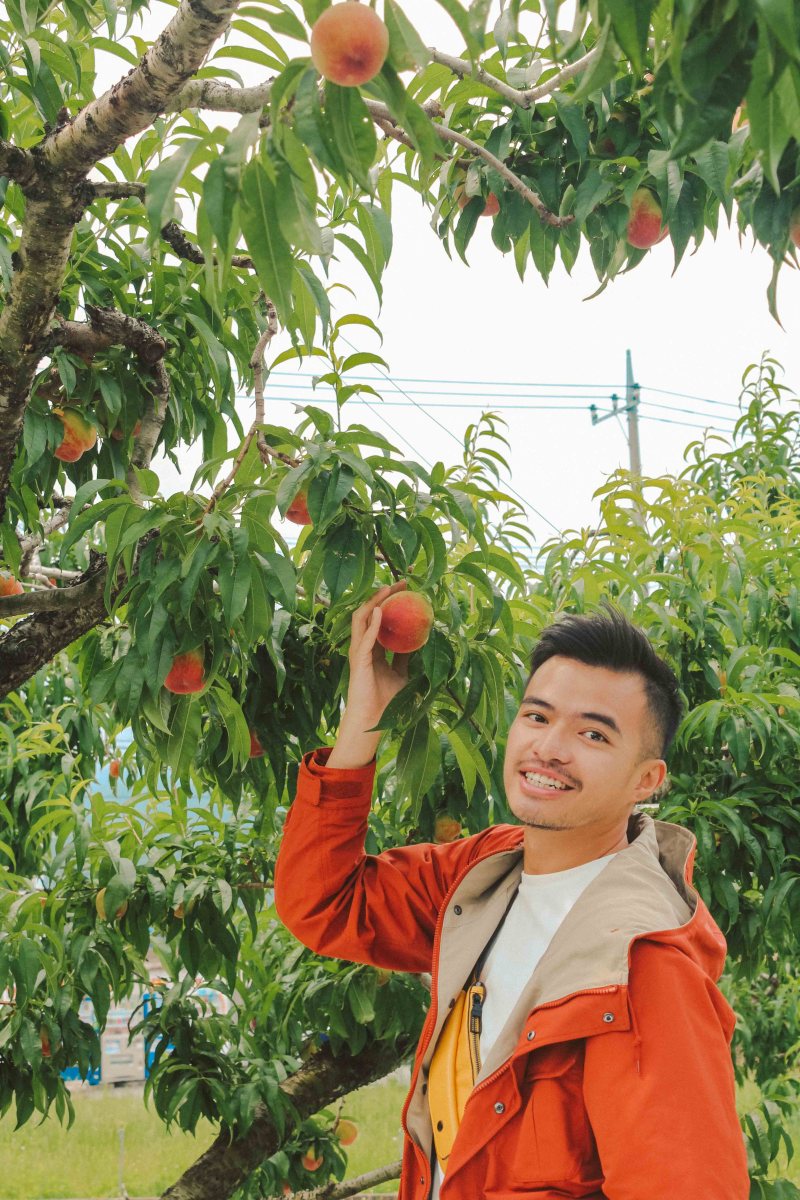
June is the peach harvest season. Delicious, succulent and ripe. When I arrived, I saw many green grape vines, ready for August to be harvested. Coming to Yamanashi, except for winter, you can participate in fruit picking activities at the garden in the rest of the seasons: Cherry (April-May), peaches or apples (July 6), grapes (November 8).
Lavender Garden – Oishi Park in Kawaguchiko
Coming here, you will not only see lavender flowers but also many other flowers. Don’t forget to try the lavender ice cream here for only 350-400 yen.
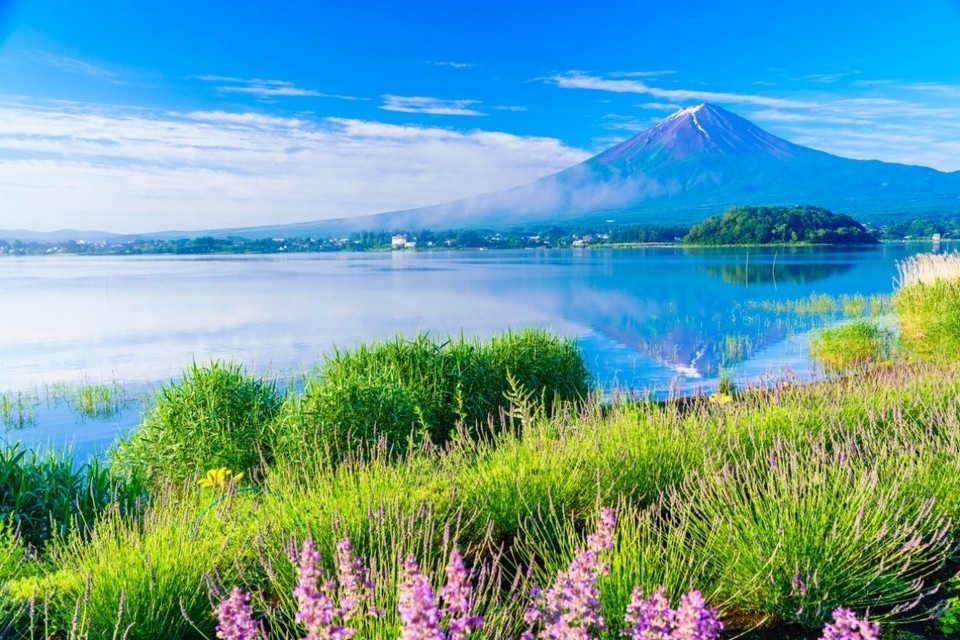
Address: 2525番地の11先 Oishi, Fujikawaguchiko, Minamitsuru District, Yamanashi 401-0305, Japan
Getting there: The way to go to Oishi Park is relatively simple, from Tokyo you can depart from Shinjuku and Shinagawa stations, there are trains to Kawaguchiko Station. From Kawaguchio Station, take another bus trip following the instructions of this link to get there. https://goo.gl/maps/NUetGQwETH4ZhrWSA
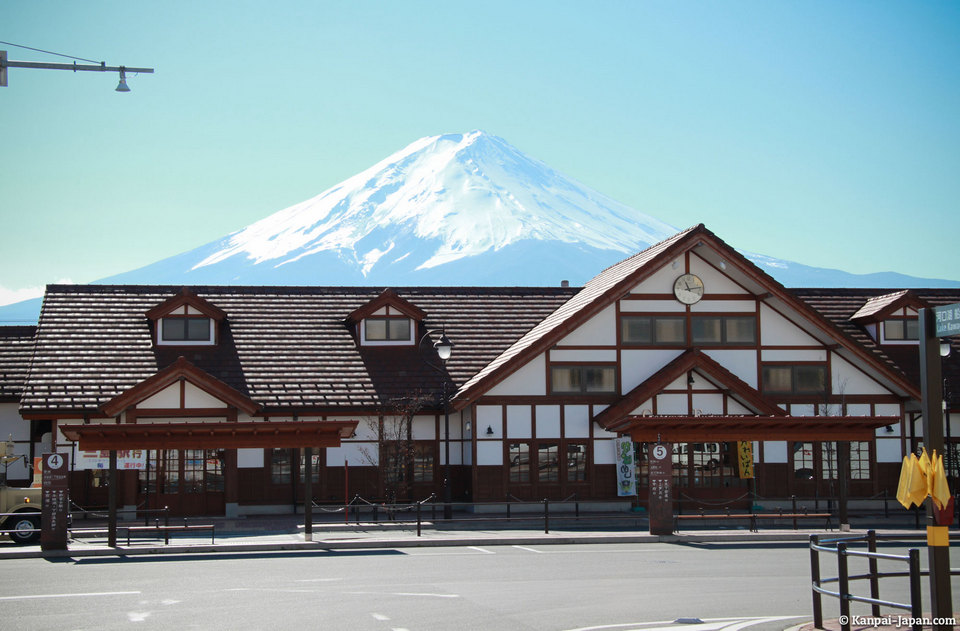
Oshino Hakkai Ancient Village
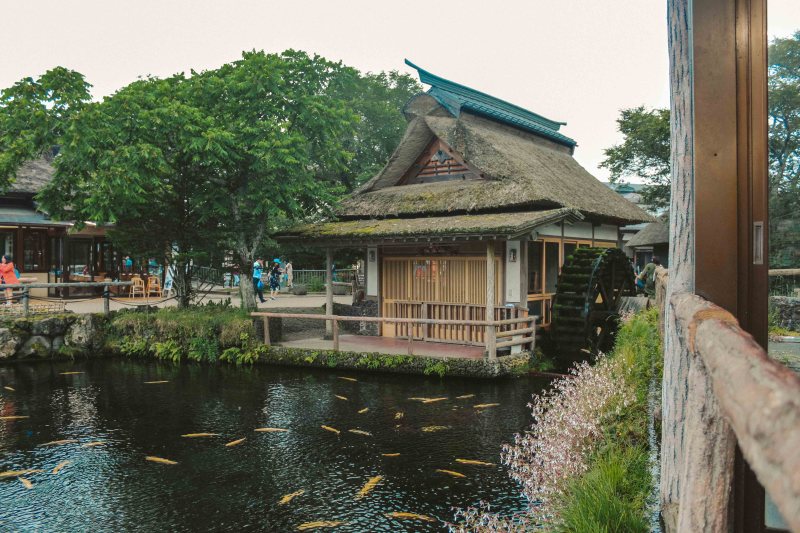
Oshino Hakkai is the perfect choice for my summer trip. Located in the area of the five lakes around Mount Fuji, this ancient village has eight clear spring water ponds which completely formed by melting ice from Mount Fuji for over the past 80 years . That’s why the water is crystal clear.
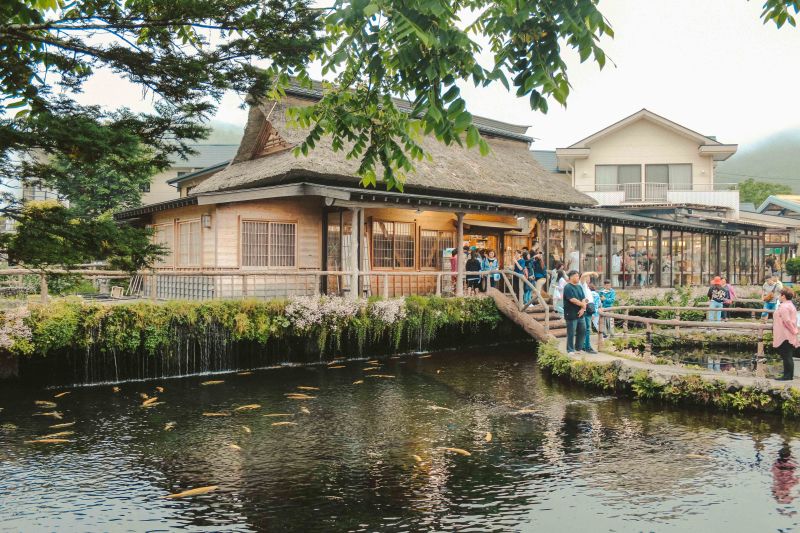
Address: Shibokusa, Oshino, Minamitsuru District, Yamanashi 401-0511, Japan
Getting there: The way to get to Oshino Hakkai is very simple. From Tokyo, take the train from Shinjuku to Kawaguchiko Station, then there will be a bus that runs every an hour from Kawaguchiko Station to the old village.
Japan itinerary 4 days 3 nights: Trip cost for 4 days in Japan
Airfare: USD 615 because I bought it 2 weeks in advance
- Transportation: $8.77 (by public transport)
- Shabu-shabu hot pot: $13.16
- Stay: Toyoko Inn : $140.22/night/double room for 2 people
- Traveling from Narita to Tokyo: $21.94/person
- Getting around Tokyo: $26.32
- Tickets to teamlab Planets: $28.48/ticket
- Lunch buffet at Carne Station Ginza: $10.97/person
- Dinner: $13.16
- Grand Hotel Kanachu : $140.40/night/double room for 2 people
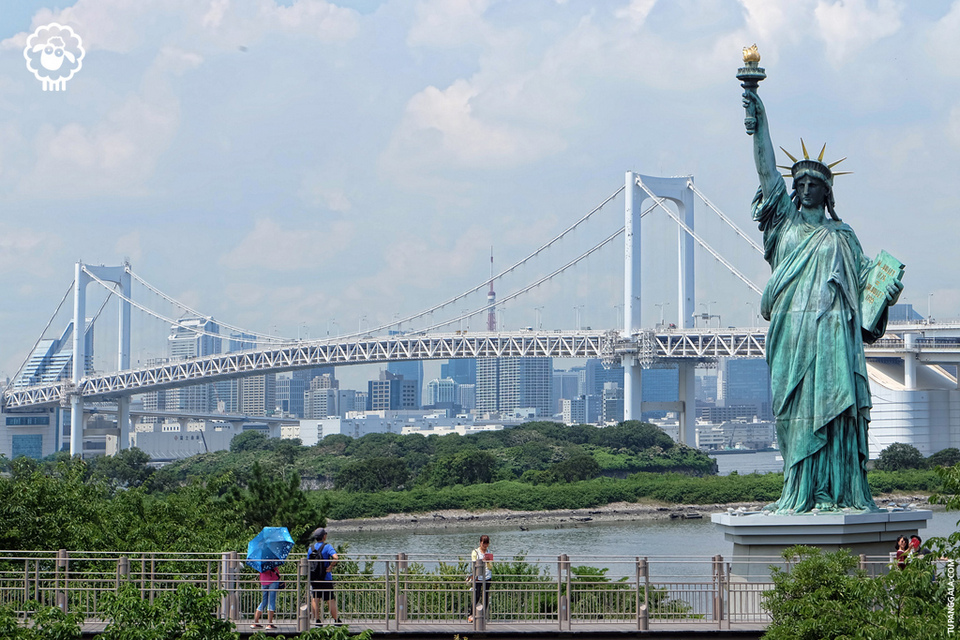
- Tickets to the peach garden: $13.16
- Gettingn from Kanagawa to Misaka noen: $39.49
- Lunch at Houraiya: $10.97
- Earthquake Museum: $20.18
- Traveling all day: $70.11 because sometimes I had to take a taxi
- Dinner at Route Inn: $13.16
- Stay: Route Inn Hotel: $140.40/night/double room for 2 people ( Agoda.com or Booking.com )
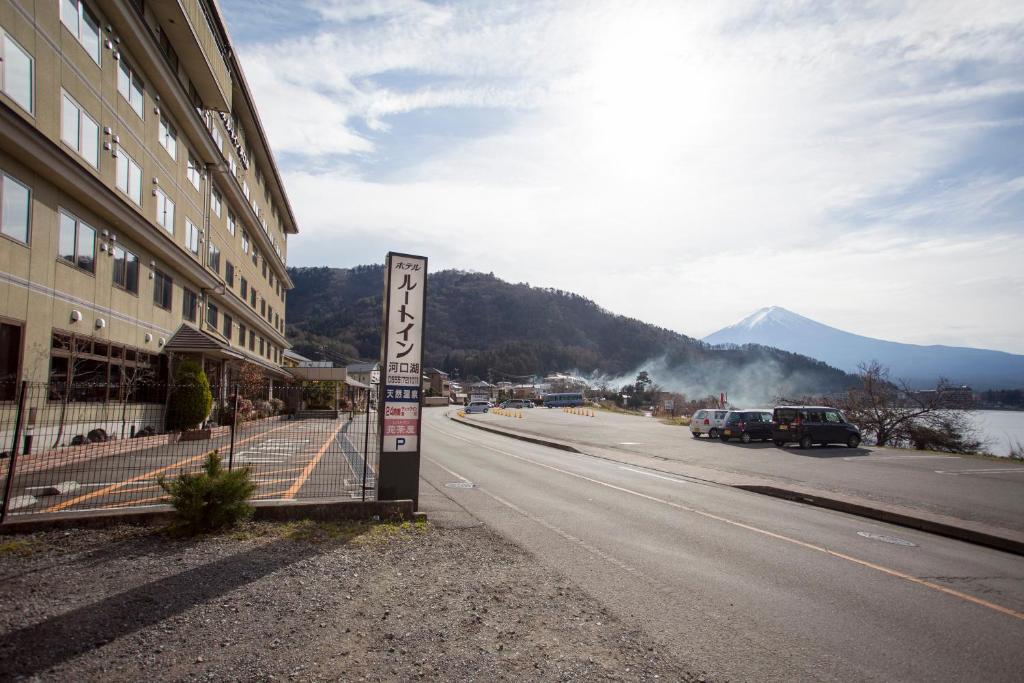
- Getting from Fuji to Narita: $61.43 by bus and train
- Lunch: $10.97
- Transfer from Aeon to the airport: $7.02
A TOTAL OF $1,405.08 for this self-sufficient trip.
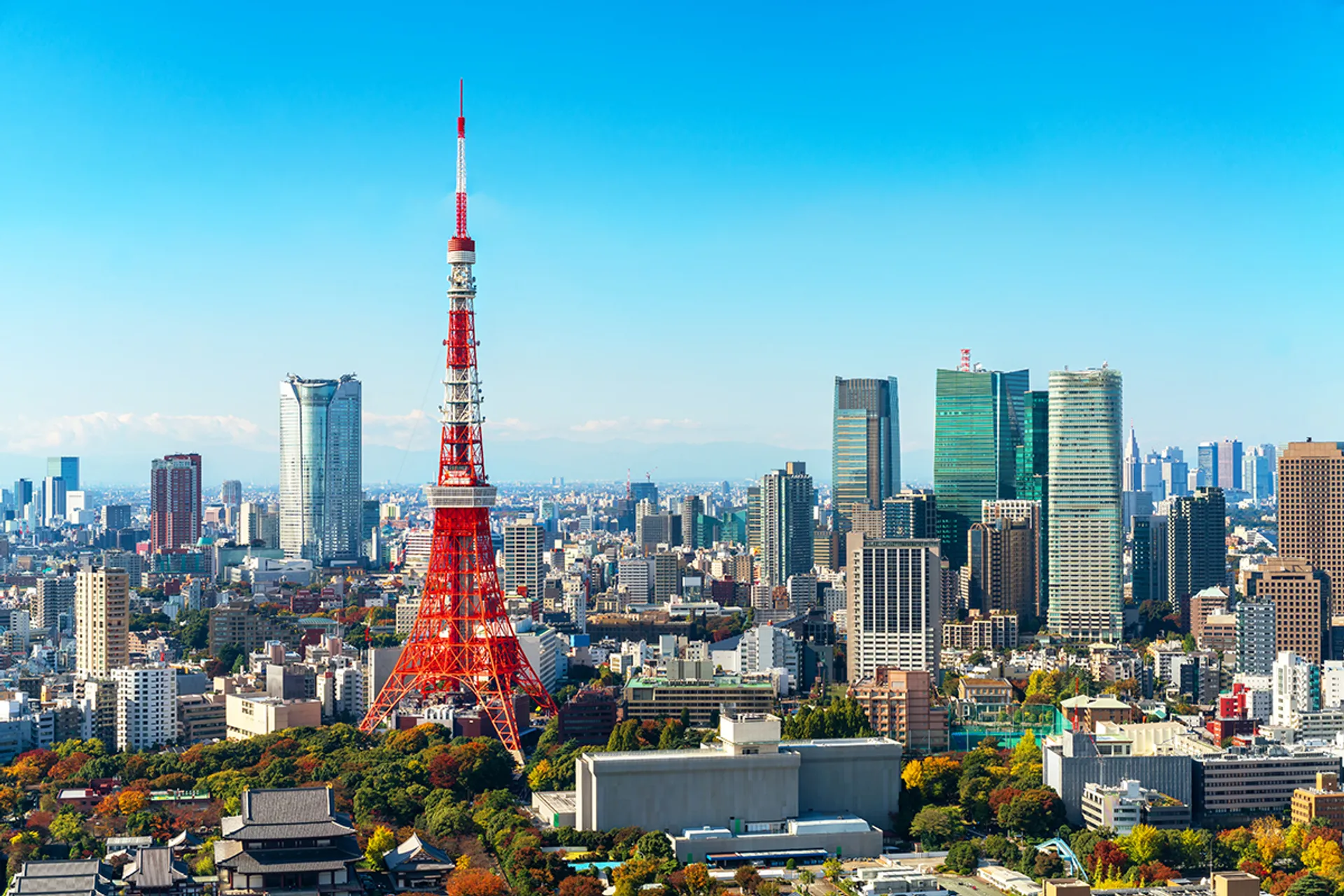
Some best day tours, trips, activities and transfer services, tickets in, to and from Tokyo you can refer to
- Private Narita International Airport Transfers (NRT) for Tokyo 23 Wards, Hakone, or Karuizawa
- Private Haneda International Airport Transfers (HND) for Tokyo 23 Wards, Hakone, or Karuizawa
- Airport Limousine Bus Transfers from/to Narita and Haneda International Airport (Free Wifi Onboard)
- Tokyo Amazing Sightseeing Bus Day Tour
- Tokyo Highlights Private Day Tour
- Nikko Day Tour from Tokyo
- Mt Fuji & Hakone Day Tour: Lake Ashi & Ropeway Day Trip from Tokyo
- Nikko Cultural Day Tour from Tokyo
- Tokyo Subway Ticket (24, 48, or 72 Hours)
- Tokyo Skyliner and Tokyo Subway Ticket
- Shuttle Bus Transfers (One Way/Round Trip) from Shinjuku/Ikebukuro to Tokyo Disneyland or Tokyo DisneySea
- Tokyo Disney Resort Park Ticket
- Klook Pass Greater Tokyo
- SHIBUYA SKY Ticket
- Warner Bros. Studio Tour Tokyo – The Making of Harry Potter Ticket
- Skyliner Narita Airport Express Ticket
- TeamLab Planets Ticket
- TOKYO SKYTREE® Ticket
- Limousine Bus Narita or Haneda Airport to Tokyo
- Skyliner Narita Airport Express With Tokyo Subway Ticket
- JR Tokyo Wide Pass
- Sky Hop-on and Hop-off Bus Pass
- 4G Prepaid Sim Card (JP Airports Pick Up) for Japan
- 4G WiFi (BKK and DMK Airport Pick Up) for Japan (Unlimited Data)
- JR Pass for Whole Japan (7, 14, or 21 Days)
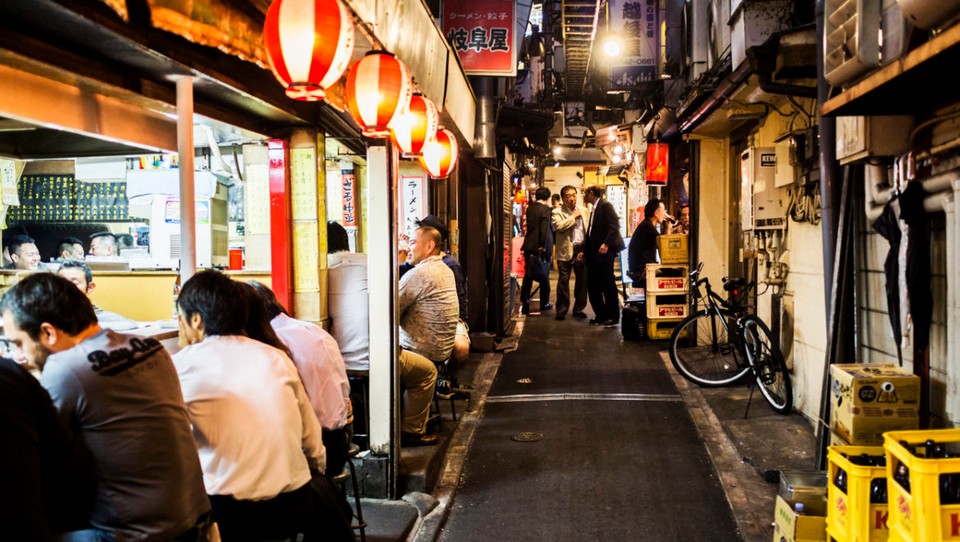
Are you finding more top things to do in Japan: Tours, activities, attractions and other things? Let’s check it out here.
Related articles

RELATED ARTICLES MORE FROM AUTHOR
Seoul autumn foliage 2024 forecast — the timeframe & 13+ best places to see autumn leaves in seoul, busan fall foliage forecast 2024 — when & 6+ best places to visit in busan during autumn, jeju fall foliage forecast 2024 — the timeframe & 6+ best places to visit & top things to do in jeju autumn foliage season, taiwan fall foliage forecast 2024 — when & 9+ best place to see autumn leaves in taiwan.
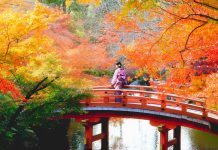
Hokkaido autumn travel blog — 15+ top things to do & best places to visit in Hokkaido during autumn
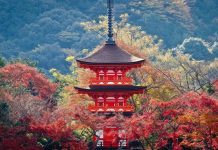
Kyoto fall foliage forecast 2024 — The timeframe & 15+ best place to see autumn leaves in Kyoto
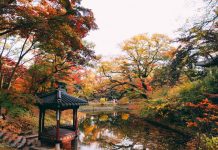
Korea fall foliage forecast 2024 — The timeframe & 16+ best place to see autumn leaves in Korea
Editor picks.

Seoul autumn foliage 2024 forecast — The timeframe & 13+ best...

Busan fall foliage forecast 2024 — When & 6+ best places...

Jeju fall foliage forecast 2024 — The timeframe & 6+ best...
Popular posts.

What to buy in USA? — 17+ must buy in USA...

What to buy in Korea? — Top +23 cheap, famous &...

Must buy souvenir in Taiwan — Top 17+ most famous, cheap...
Popular category.
- Inspiration + Guide 1529
- Trip Inspiration 468
- Food + Drink 223
- Thailand 217
- Coasts + Islands 202
- South Korea 179
- Vietnam 172
- Travel Photos 144
- Work for Us
- Terms & Conditions
- Privacy Policy

Tokyo Itinerary: How to Spend 4 PERFECT Days in Tokyo
by Julie Itinerary , Japan , Travel 26 comments
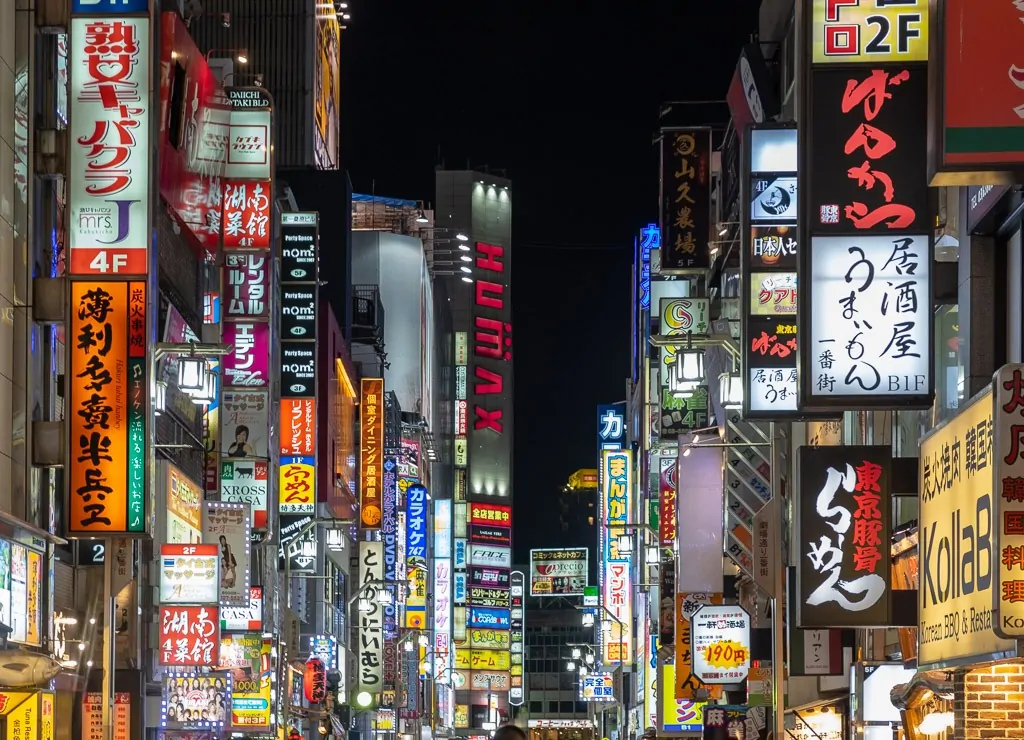
There is so much to do and see in Tokyo that it can be hard to plan a trip there. But at the same time, because there’s so much to see in the rest of Japan, you’ve got to limit your time in Tokyo. In this post, I’m going to help you squeeze everything you should see into a Tokyo itinerary of 4 days.
This Tokyo itinerary is great for those who want to explore Japan’s culture, history, and food. I’ve got tons of recommendations for places to eat, neighborhoods to explore, and museums to discover.
Let’s get started by learning what to see, where to eat, and how to get around this amazing city.
This 4-day Tokyo itinerary is also part of my 3 weeks in Japan itinerary . Check it out!
And if you’re looking for the perfect place to stay in Tokyo, you can find one in this article about how to find the best places to stay in Tokyo .
BONUS: I've created a FREE PDF version of my Japan itinerary guide . It includes detailed day-to-day itineraries for Tokyo, Kyoto, and 9 other destinations in Japan. You'll also get step-by-step instructions for buying and using your Japan Rail Pass.
Click here to get lots of great tips for traveling around Asia as well as my FREE Japan itinerary guide.
Disclosure: This post may contain affiliate links. As an Amazon Associate and a Bookshop.org Associate, I earn from qualifying purchases. Please see this website's Disclosure for more info.
Tokyo Itinerary 4 Days Overview
Click on the day to jump to that section of the itinerary. You can do this itinerary in any order.
Day 0 – Airport arrival, airport transfer, and hotel check-in
Day 1 – Historical Tokyo Itinerary – Asakusa (1) Ueno (2) Yanaka (3) Tokyo Sky Tree (4)
Day 2 – Modern Tokyo Itinerary – Harajuku (5), Shibuya (6)
Day 3 – Cultural Tokyo Itinerary – Tsukiji (7)- Ginza (8) – Akihabara (9)
Day 4 – Food and Fun Tokyo Itinerary – teamLab Borderless (11) – Shinjuku (12)
The above itinerary depends on where you’re staying. If your accommodation is in the Shinjuku area, I’d move (12) Shinjuku from Day 4 to Day 1.
You can add a fifth day to your Tokyo itinerary by taking a day trip to Mt. Fuji, Hakone , Kamakura, or Nikko. All 4 of these cities are just 1 to 2 hours by bus or train from Tokyo. Read how to visit them in this 4 Best Day Trips from Tokyo .
Tokyo Itinerary- Day 0 – Airport & hotel transfer
When you arrive at either the Narita Airport or the Haneda Airport , you’re going to need to take care of the following things before heading to your hotel/hostel:
1. Pick up Your Pocket WiFi or SIM Card
Order a pocket WiFi or a SIM card before your trip to Japan and pick it up at the airport. You’ll need Wi-Fi when you’re out and about trying to find your way or checking train times.
I bought my pocket wifi from Japan Experience.
Get an eSIM
A third way is even easier. You can get an eSIM and not worry about having to pick up anything at the airport. Before leaving your home country, you purchase an eSIM with Klook or Airalo.
2. Validate Your Japan Rail Pass
Don’t leave the airport without validating your Japan Rail Pass at the Japan Rail office.
When you validate your pass, you can choose which day it begins . You don’t have to start the ticket on the day you validate it.
I bought my Japan Rail pass from Japan Experience. You can also buy your pass through the very reliable Klook .
3. Make Seat Reservations for Future Trail Travel
If you have a Japan Rail Pass , make seat reservations for future train travels at the Japan Rail office. Seat reservations are free for Japan Rail Pass holders. You can cancel or change them free of charge.
4. Get Some Japanese Yen
Get some Japanese currency from the many ATMs around the airport .
You can also get Japanese yen from ATMs at convenience stores like Family Mart and 7/11 after you get to your hotel, but it’s good to have some yen right away.

5. Get a SUICA or PASMO Card or an Unlimited Train Ticket
There are 2 types of transportation cards you can get at the airport in Tokyo:
- Unlimited Metro Pass (1-day, 2-days, or 3-days)
- IC card – Suica or PASMO
Unlimited Metro Pass for Tokyo
I used an Unlimited Tokyo Metro Pass (US$10) both times I was in Japan. It’s very convenient and a good deal. You don’t have to buy a new subway ticket every time you ride the subway.
You can get a Pass for 1 day, 2 days, or 3 days.
The Pass gives you unlimited train travel on the Tokyo Metro Line and the Tokyo Toei Line. It doesn’t include JR trains like the Yamanote Line.
IC Card – Suica or PASMO
Your second option is to get a Welcome SUICA or PASMO Passport card at the airport. SUICA and PASMO cards are used for taking public transportation like the subway, trains, and buses around Japanese cities. To use the card, load money onto it at a subway station and tap it at the subway gate to get on the subway. You can also use the card to buy stuff at convenience stores or from vending machines. They are good for 28 days.
Unfortunately, it’s still hard to find Suica Cards in Japan. If you arrive at Haneda Airport , you can get a Welcome Suica card, but they are not available at Narita Airport. If you have an iPhone you can get a digital Suica card.
6. Stop at the Tourist Information Booth
At the Tourist Information desk at the airport, you can find out how to get to your hotel . I originally got my info from someone on Trip Advisor. They told me the wrong train line! The information desk was correct!
7. Find Your Transport to Your Accommodations
You have several options for getting to your accommodations from Narita Haneda. Most importantly, you arrive within walking distance of your hotel.
I recommend stopping by the airport’s Tourist Information Desk to find out your best option for getting to your accommodation.
Transport Options from Narita
1. Narita Expres s (¥4,070): buy tickets at the Japan Rail East Service Center office at the airport; a good option if staying in Shinjuku
2. Keisei train (¥2,570) has several train lines. Buy your ticket at the Keisei Skyliner office at Narita. Keisei has a line called the Toie Asakusa line that goes to Asakusa. You can also take the Keisei Skyliner train to Tokyo Station. Buy your ticket on the Skyliner ahead of time through Get Your Guide.
3. Airport Bus TYO-NRT (¥1,300 – 2,600) – The cheapest option is the airport bus. The bus goes to Ginza Station, Tokyo Station, Shinjuku and Disneyland. Purchase tickets at the ticket sales counter from 9:00 – 22:00 or at the bus stop outside of those hours. You can also purchase your bus ticket before your trip through Klook for US$9.15 .
Transport Options from Haneda
1. Keikyu Line – Buy tickets at the Keisei Skyliner ticket office.
2. Friendly Airport Limousine (¥950 – Asakusa; Shinjuku ¥1,250) connects to different hotels throughout Tokyo. Please see their website for information.
3 . Tokyo Monorail – Take the monorail to Hamamatsucho (¥500) where you then need to transfer to the JR Yamanote train line.
My Experience Getting to/from Narita
I flew into Narita and stayed in Asakusa for my first and second trips to Japan. To get to Asakusa, I took a Keisei train . Keisei trains have many lines, so it can be confusing. The wonderful people at the airport information desk told me to take the Toei Asakusa Line from Narita to Asakusa station (¥1290; over 1 hour) . On my first trip, I had to walk 15 minutes to my hotel. But I was too tired to walk, so I got a taxi for ¥960. On my second trip, my hotel was 5 minutes from the subway station.
When I left Tokyo , I was staying in Tsukiji . I took the Narita Express Bus from Ginza station (2 subway stops from Tsukiji; take exit C4 at Ginza) to Narita airport (¥1,000, 1 hour and 20 minutes). The bus ride was so much preferable to the train because I didn’t need to go up and down subway stairs, figure out the ticket machines, and navigate the subway’s maze-like and crowded subway stations.
The second time I was in Tokyo , I stayed in Shinjuku . My hotel recommended that I take the Airport Bus to Narita. The bus had a shuttle that picked me up from my hotel and took me to the bus stop in Shinjuku. It was convenient!
Just make sure to get to the bus stop early as these airport buses can fill up , and if you can’t get on one, you need to wait 30-60 minutes for the next one.
You can also buy your bus ticket online to ensure you can get a seat.
Tokyo Itinerary – Day 1 – Historic Tokyo
Asakusa – ueno – yanaka.
On day 1 of your 4 days in Tokyo, explore the traditional east side of Tokyo. Start off in Asakusa where Sensoji Temple, one of the most important Buddhist temples, is located, then head over to Ueno to visit the Tokyo National Museum before finishing your tour in Yanaka, a very traditional area of Tokyo.
1. Asakusa Area
Start off the day in Asakusa, an area that is famous for being the main temple, merchant, and entertainment area of old Tokyo.
How to Get to Asakusa:
There are two subway lines that get you to Asakusa Station: the Ginza and the Asakusa lines. When you’re inside Asakusa station, follow the signs for exit 1 to get to the temple district. You can also take exit 2 to get to the Asakusa Culture Tourist Center on Kaminarimon Street to pick up a map of the area.

Asakusa is where you’ll find the most important Buddhist temple in Tokyo, Sensoji Temple.
In old times, merchants and craftsmen set up their businesses outside the temple gate. The area near temples was safer than others because warlords would leave temples alone when attacking a community. These areas became known as the mon-zen machi (town in front of the temple gate). The merchant area in front of Sensojii Temple became particularly famous.
Asakusa was also well-known as the entertainment district of old Tokyo . There were many theaters in this area. Behind Sensoji temple was a famous prostitution area.
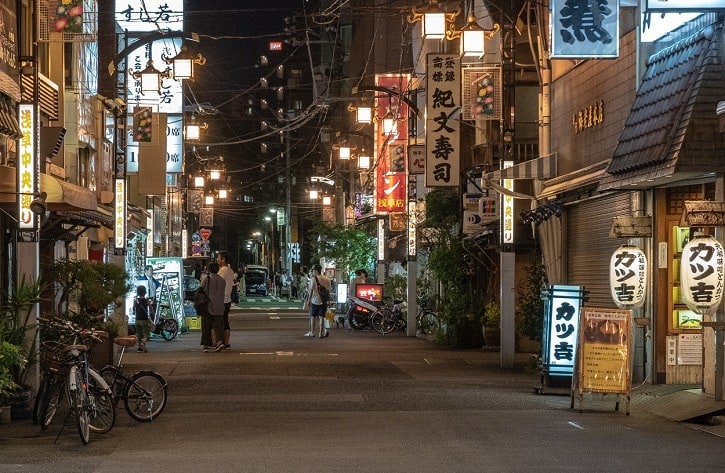
In the early morning , Asakusa is a wonderfully quiet and peaceful place . It’s so quiet that it’s hard to believe you’re in a city of 9 million people.
At night, just a few locals and tourists are out and about. Locals can drink and eat outside on tables set up in quiet alleyways. However, it’s nowhere near as crazy as Shibuya or Shinjuku.
Is it Safe to Walk Around Late at Night?
I felt completely safe walking back to my hotel from the subway station at around 10:00 pm.
Where to Eat in Asakusa:
- Ippudo – ramen chain restaurant
- Sometaro – Okonomiyaki; really hot inside and often long waits; not ideal for solo travelers as it’s more of a group experience.
- Sushi Zanmai – chain sushi restaurant; I think they have pretty good sushi; get the tuna set for ¥3200; always filled with locals whenever I ate there
- Ichiran – near Ginza station; their ramen is better than Ippudo’s
1.1 Kaminarimon Gate
Start your day off at the Kaminarimon Gate. This is the outer gate of Sensoji Temple.
The Kaminarimon is named after the two statues located on both sides of the gate. The left statue is the god of thunder and the right one is the god of wind . They protect the Sensoji temple from storms, floods, and fire.

1.2 Nakamise-Dori Street
After passing through Kaminarimon Gate, walk up Nakamise-Dori Street to Sensoji Temple.
You’ll see lots of souvenir shops along the way especially ones selling rice cakes and green tea-flavored snacks. Supposedly, this street along with Shin-Nakamise Dori are the best places to buy souvenirs in Toky o.

Nakamise-Dori Street helped Asakusa become one of the main entertainment areas of old Tokyo.
The story goes that tea shops opened up along the road that led to Sensoji. After the shogun made Edo his capital, more and more people visited Sensoji. They would visit the tea shops on their way to the temple. This increase in business made the tea shop owners quite wealthy .
Naturally, tea shop competition increased as more and more people saw the money-making potential of having a tea shop outside Sensoji. To stay competitive, the owners needed to think of other ways to attract customers , so they started offering other forms of entertainment, hiring young women to serve tea. Sometimes they would offer other services as well and that is how prostitution became part of Asakusa.
You can find out more info on the history of Tokyo from this wonderful website on the history of Tokyo and the history of Japan podcast.
1.3 Senso-ji Temple
- OPEN : 6:00/6:30 am – 5:00 pm
- SUBWAY STATION: Asakusa Station
- LOCATION: Google Maps
Finally, you’ll make it to Sensoji Shrine. The temple was first built in 628 . Like many structures in Tokyo, it burned down many times over the centuries, including during World War II.
Go through the bright red gate called Hozomon Gate , the inner gate of Sensoji Temple.

After you pass through the gate, look back at it and notice the two large straw sandals . The sandals are called o-waraji . People offer waraji to temples to pray for safe travels and healthy legs. Without healthy legs, one can’t work, and if one can’t work, one can’t eat.

Before going into the main hall, get an omikuji , which is a paper fortune.
To get your fortune told , put a 100 yen coin in a slot. Then shake a canister until a wooden stick falls out. The stick contains a number on it that's written in Kanji. Find the drawer that corresponds to the number on your stick. Pull out a paper fortune from the drawer. The fortunes can be both good and bad. Mine was good, but the person I was with got a bad fortune . If you get a bad one, you’re supposed to tie the paper fortune to a nearby rack.
When you enter the huge temple, you’ll notice that there are no Buddha statues even though this is a Buddhist temple.
You’re not allowed to take any pictures of the altar when inside the temple.
1.4 Shin-Nakimise Dori and/or Dembouin Dori Street
After visiting Senso Ji Temple, walk around Asakusa for a while walking under the covered pedestrian-only arcades . These are Shin-Nakimise Dori and Dembouin Doir Streets. They’re full of souvenir shops and restaurants.

If you walk east along one of these streets, you’ll eventually make it back to the subway station .
2. Ueno Area
The next stops on your Tokyo itinerary are the Ueno and Yanaka districts. To get to Ueno, hop on the subway and travel 3 stops on the Ginza line to Ueno station.
Ueno’s subway station was famous after the war for being the place where all the homeless (veterans, widows, and orphans) camped out.
A famous post-WWII black market was also located outside the subway station called Ameyokocho . Today the market is full of discount stores, souvenir shops, and restaurants.
The whole area is now known for a terrific park and several of Tokyo’s best museums.
Where to Eat in Ueno and Yanaka:
- Kamachiku – I ate here. They have delicious soba noodles in a beautiful old building
- Izuei Honten – it’s supposed to have good unagi
- Starbucks – This coffee shop is in a convenient location in Ueno Park
- Hantei – I’ve eaten here. The restaurant is in a beautiful traditional wooden building. Very delicious . It’s a set multi-course meal. A bit pricey. I felt comfortable eating here solo.
- Nagomi – They serve skewers
2.1 Tokyo National Museum
- COST: ¥1,000 (US$7.78 | €7.5 | £6.38); ¥500 for college students
- OPEN: 9:30 am – 5:00 pm (last entry is 30 minutes before closing)
- WEBSITE: https://www.tnm.jp/
- SUBWAY STATION: Ueno Station
When you get to Ueno, head to the Ueno-Koen park. There’s a lot to see in the park: a zoo, a lotus pond, and several museums . The park is huge and with such limited time, I suggest going straight to the museum.

Inside the park is the main museum of Tokyo: the Tokyo National Museum. The museum has five buildings with exhibits:
1. Honkan Gallery – Must-see: the “Highlights of Japanese Art” on the second floor . The second floor gives you an excellent overview of Japanese Art from the Jomon period (11,000 BCE – 5th Century BCE) to the Edo period (1603-1868). The first floor is organized by genre, which is also good but not as good as the 2nd floor. One painting not to miss is the Hakusai’s “Great Wave of Kanagawa.” It’s at the end of the tour on the 1st floor.
2. Heiseikan Gallery: This gallery focuses on Japanese archaeology . I’m into archaeology, so I enjoyed touring it. It’s connected to the Honkan by a passageway.
3. Hyokeikan Gallery: This gallery is closed unless there’s a special exhibition.
4. Toyokan Gallery: This gallery shows art and artifacts from Asia including China, Central Asia, and India. I didn’t get to visit this gallery.
5. The Gallery of Horyuji Treasures: This gallery exhibits 8th and 9th-century objects from Horyuji Temple . Lonely Planet highly recommends visiting this gallery. I did not have time. There is a restaurant on the 1st floor.
The one building that you must start with and go to if you’re limited on time is the Honkan Gallery . It’s the above picture.
You can pay one price ( ¥1,000 for adults; ¥500 for students and free for children ) for all regular exhibits in all galleries at the ticket booth on the right side of the main gate to the museum.
When you get inside the Honkan, you’ll see lockers where you can store your stuff.
Take the grand staircase in the lobby of the museum to the second floor. The second floor gives you an excellent overview of the art from different periods in Japan’s history.
Make sure to get the excellent written guide to the museum on the second floo r before you enter the first room.
3. Yanaka Area
After visiting the Tokyo National Museum, explore the lovely and tranquil Yanaka neighborhood .
It’s quite a long walk from the museum to this area. But it’s well worth it. In Yanaka, you’ll get to see a more traditional side of Tokyo . Historically, this area was where the artists of Tokyo lived . It is still home to many artisans making things like pottery, textiles, and traditional cuisine.

There are lots of temples and a cool cemetery in Yanaka .
The food is another highlight of Yanaka. I had some great udon noodles at a beautiful restaurant called Kamachiko and on another visit, I ate at the famous Hantai restaurant .
End your walk at Sendagi Station .
You might be interested in these Japan travel posts:
- Kyoto Itinerary 4 Days: A City of a Million Temples
- The Best Ever Guide to the Tateyama Kurobe Alpine Route
- Kamikochi Hiking: A Perfect Day Trip from Takayama
4. Tokyo Sky Tree
- COST: Floor 350 – ¥2060; Floor 450 – additional ¥1,030. You first need to go to the 350 th floor and then buy another ticket for the 450 th floor
- OPEN: 8:00-22:00
Finish your first day in Tokyo at the tallest building in the city, the Tokyo Sky Tree . You’ll get some memorable views of the city.

.You can buy tickets online for the Sky Tree to avoid the long lines, or you can buy tickets on the fourth floor at the Sky Tree . They might be sold out by the time you get there, though.
The photo above is from the 350th floor.
PRO TIP: If you are lucky to be in Tokyo in January, March, May, July, September, or November , you can watch a sumo tournament at Ryogoku Kokugikan Sumo Stadium . Check here for how to buy tickets. If you can’t make it to a sumo match, you can always watch the professional sumo wrestlers do their morning training exercises .
Tokyo Itinerary – Day 2 – Modern Tokyo
Harajuku – shibuya.
Spend the second day of your 4 days in Tokyo exploring the modern side of the city with its neon lights, skyscrapers, and hoards of fashion-crazy young people.
I lived in Asia for many years, but I’d never experienced any place as dynamic and as vibrant as Harajuku, Shibuya, and Shinjuku . I’m not into partying and shipping, yet these neighborhoods were two of my favorite areas of Tokyo .
1. Harajuku Area
Harajuku is one of the most fashionable areas of Tokyo with its designer stores and boutiques. However, there’s also a famous shrine , some charming museums , and a fun energetic street full of fashion, food, and young people.
Where to Eat in Harajuku
- Harajuku Gyoza-ro – ( Google Maps ) – This is where I ate. It’s a famous gyoza restaurant; they’re used to having foreign customers – 6 gyoza – ¥319 – ¥374 (US$2.45/£1.99/€2.32) – What a deal!
- Marion Crepes – ( Google Maps ) – You can find these crepes all over Tokyo; looking at the plastic replicas of the crepes is almost as fun as actually eating one
- A Happy Pancake – ( Google Maps ) – I had breakfast here; make sure to try Japan’s fluffy pancakes
- Kawaii Monster Café – They permanently closed as of January 31, 2021. It’s too bad as this was a fun restaurant.
- Afuri – ( Google Maps ) – I love the ramen here ; they charcoal grill the pork and add yuzu to the broth.
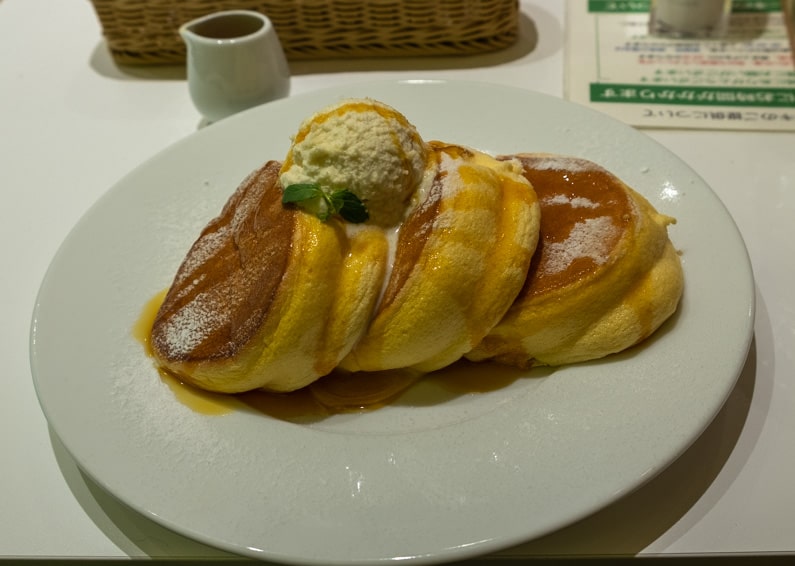
1.1 Meiji Shrine
- OPEN: sunrise to sunset
- SUBWAY STOP: Meiji-jingumae Station or the JR line to Harajuku Station.
- LOCATION OF ENTRANCE: Google Maps
Start day 2 of your 4-day Tokyo itinerary at Tokyo’s most popular shrine, the Meiji Shrine, in Harajuku.

Over 3 million people visit the shrine during the first few days of the New Year. To make the most of your visit, make sure to perform all the Shinto rituals. You can read about how to perform the rituals in my Meiji Shrine guide.

Don’t forget to write your wishes on the votive tablets under the big camphor tree. You can get detailed information about the Meiji Shrine here.
1.2 Omotesando Street
Take a stroll down Omotesando and window shop. You can see lots of designer-brand stores.
Make sure to stop at Kiddy La nd — ( Google Maps ) a 5-storey toy store .
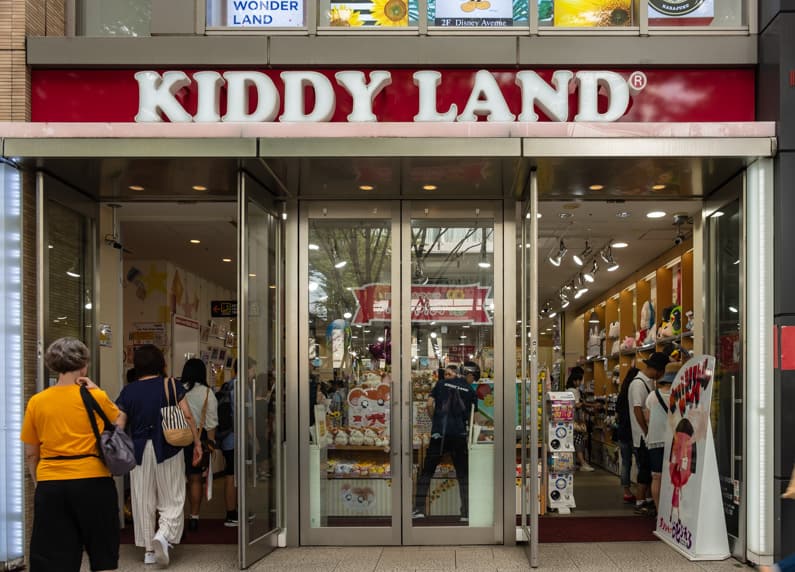
1.3 Explore the narrow side streets
Next, explore some of the side streets off of Omotesando. It’s easy to get lost (I did!), though.
The narrow winding streets are filled with beautiful boutiques, cafes, and restaurants.
Make sure to walk down Cat Street ( Google Maps ).
What stood out for me was how incredibly quiet i t was as if I wasn’t even in a big city. That’s Tokyo. One moment you’re on a street teeming with an ocean of people and cars and the next you are on a quiet street without a car or human being around you.
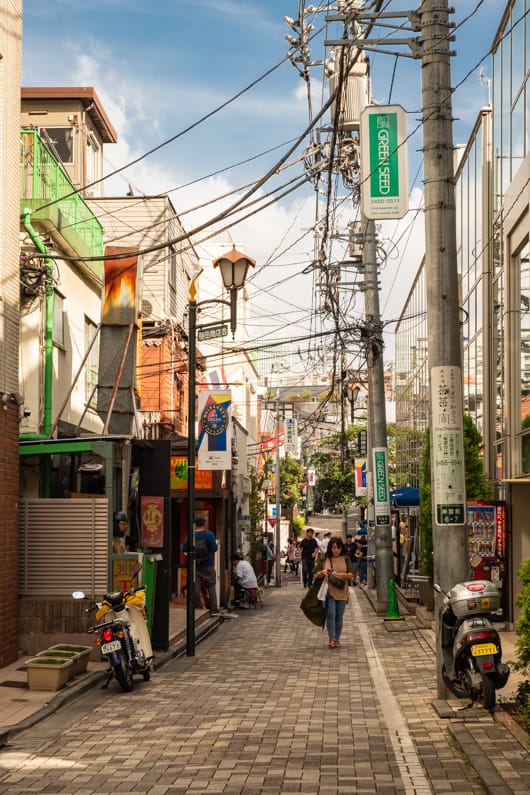
1.4 Ukiyo-e Ota Memorial Museum of Art
- COST : ¥800 – 1,200 depending on the exhibition (US$6-$9/£5-8/€6-9)
- OPEN : 10:30 am – 5:30 pm
- WEBSITE: http://www.ukiyoe-ota-muse.jp/eng
Visit the small Ukiyo-e Ota Museum, a museum devoted to beautiful ukiyo-e woodblock prints .
Ukiyo-e means the floating world in Japanese . This was the pleasure world of kabuki actors, geishas, and prostitutes (the outcasts of Edo society) during the Edo and Meiji periods in Japan.
The museum rotates its collection every month .
You could spend about 1 hour here.
1.5 Takeshita-dori

Your final stop on your Harajuku itinerary is a street called Takeshita-dori ( Google Maps ), which is not far from the museum.
This is Tokyo’s teenage fashion street where young people from all over Japan go to shop.
Be forewarned that the street is jam-packed with people . I loved it.
Looking for More Info on Japan...
- Japan Itinerary: The Perfect 3 Weeks in Japan
- How to Find the Perfect Place to Stay in Tokyo
- Hakone Itinerary: A Guide for 2 Fabulous Days in Hakone
2. Shibuya Area
The next stop on your Tokyo itinerary is a trip to Shibuya. You can take the subway or walk to get there from Harajuku .
Make sure to stay around the area until it gets dark , so you can see all the neon lights .
Check out the Shibuya Crossing, the famous Hachiko statue, wander around the pedestrian streets, and do a ramen food tour.
I was so tired after my day in Harajuka that I went all the way back to my hotel in Asakusa to rest and then went back to Shibuya later in the evening.
Where to Eat in Shibuya
- Starbucks – A great place to watch Shibuya crossing
- Kamakura – Great ramen restaurant – I ended up eating here both times I was in Shibuya. Decent. Lots of foreign tourists end up here.
- Ichiran – A chain ramen restaurant–for me, they have the best ramen
- 35 Steps Bistro – Izakaya with English menu – Tripadvisor reviews
- Food Show – Supermarket where the bento boxes are discounted after 5:00
- Sushi no midori – I tried finding this place, but no luck. The sushi is supposed to be really good.
- Kaikaya by the Sea – Good seafood
2.1 Hachiko Statue
The story goes that back in the 1920s, a professor had a dog named Hachiko who would meet him every day after work at Shibuya Station. The professor died, but the dog kept on showing up for the next 8 years to meet his owner at the station. Hachiko is a sign of loyalty in Japanese culture . It’s popular to take a photo of yourself with the statue .
2.2 Shibuya Crossing

Shibuya Crossing is famous for the scramble where cars are stopped at all intersections to let all of the pedestrians cross at the same time . Surrounding the crossing are buildings adorned with neon lights and large video screens. For me, it was one of my biggest OMG I can’t believe I’m in Japan! m oments in Tokyo.
You can take a rest at the Starbucks that overlooks the crossing and watch people walk back and forth.
2.3 Wander Around Shibuya

After you’ve done Shibuya Crossing a number of times and gotten your photo taken with Hachiko, walk around the back streets of Shibuya taking in the energy of all the people, food, bars, and neon lights.
2.4 Ramen Food Tour

One of the BEST ways to experience Shibuya and Tokyo in general is through its food . Shibuya has a very popular and highly rated food tour devoted solely to one of Tokyo’s most iconic dishes: ramen.
Do you know how many different types of ramen there are?
According to Tasting Table, there are 27 types of ramen . But others say there are 5 main types and 14 regional varieties . Who knows? It’s best to take the tour and find out from the experts . Or you can also visit the ramen museum in Yokohama/
Tokyo Ramen Tours takes you to 3 Tokyo neighborhoods including Shibuya. You’ll visit 3 ramen shops where you get to sample 6 different bowls of ramen as well as learn all about where the popular noodle soup comes from and how it’s made.
Tokyo Itinerary – Day 3 – Cultural Tokyo
Tsukiji – ginza – akihabara.
Your 3rd day on your 4-day Tokyo itinerary is spent sampling Tokyo street food and experiencing Japanese traditional culture at the Kabuki-za Theater and modern culture at Akihabara.

1. Tsukiji Area
The highlight of Tsukiji is the Tsukiji Food Market . If you have time, also check out the Namiyoke Shrine . The Hamarikyu Gardens are within walking distance of Tsukiji Market but they’re huge so you’ll need 2 or 3 hours to see much.
1.1 Tsukiji Outer Market
Start day 3 of your 4 days in Japan by visiting the Tsukiji Outer Marke t for some amazing sushi and street food . Make sure you get here before 9:00 am so that you can get to the next stop of your Japan itinerary on time.

Tsukiji Market used to consist of both the Inner Market and the Outer Market . The Inner Market was the wholesale market and it was where the tuna auction took place. That market moved to new facilities at Toyosu Market.
The Outer Market is all that is left. You can still sample street food (tamagoyaki, raw oysters, Kobe beef, sea urchins, and grilled seafood) at the many street vendors or have a sushi breakfast at the remaining sushi restaurants. Many of the famous restaurants moved to Toyosu but still have a branch in Tsukiji.
A great way to explore the market is with this VERY popular and VERY highly-rated guided food tour of Tsukiji ( RATED: 4.9/5). You get to learn all about the history of the market and local foods. Plus you get to try lots of different foods: fried fish cakes, a Japanese omelet, Japanese tea, katsuobushi, dashi stock, and a fish bowl (food is included in the price).
2. Ginza Area
Ginza is home to m any upscale shops, restaurants, and cafes . It’s considered one of the most expensive pieces of real estate in the world.
Historically during the Edo period, a silver coin mint was located there , hence the name Ginza , which means “silver mint.”
When Japan was opening up to the outside world, the buildings in Ginza became the first ones to be modernized . European-style brick buildings were constructed. The area also became the media center of Tokyo where there wee lots of newspaper and magazine publishers . Unfortunately, during the war, many of these buildings were destroyed by American bombs.
Where to Eat in Ginza:
- Mitsukoshi Department Store – buy some food in the basement and go to the 9th floor to eat it; this is where I ate
- Kyubey – sushi – very expensive but cheaper at lunch
- Sushizanmai – great sushi (¥3,000 for a set meal of tuna); picture menus; I ate at their restaurant in Tsukiji, Asakusa, and Shinjuku
2.1 Kabuki-za Theater
- COST FOR SINGLE ACT SEATS: ¥1,200-¥2,600 (US$9 – $18 | €8 – €17 | £7 – £15) depending on the length of the show
- SHOWTIMES: 6 – 7 acts/day; first act: 11:00 am; last act: 8:00 pm
- TICKET SALES : Online the day before the performance; 10:00 am on the day of the performance. Seats are limited.
- WEBSITE: Kabukiza Theater
- SUBWAY STATION: Higashi-Ginza station
The next stop after Tsukiji is the Kabuki-za Theater in Ginza.
Kabuki is Japan’s traditional dance-drama performance . The stories are historical dramas and comedies set in old Japan. They center around samurai, geisha, and the common people of Japan and involve tales of ambition, betrayal, revenge, and broken hearts.
Watching a kabuki performance was the highlight of my trip . I loved the story, costumes, and acting.
How to Get to the Kabuki-za Theater:
From the Tsukiji Market, it’s a 10-minute walk .
If you’re coming from outside the area, take the subway to the Higashi-Ginza station . The theater is right next to the subway station. Just follow the signs for Kabuki-za.
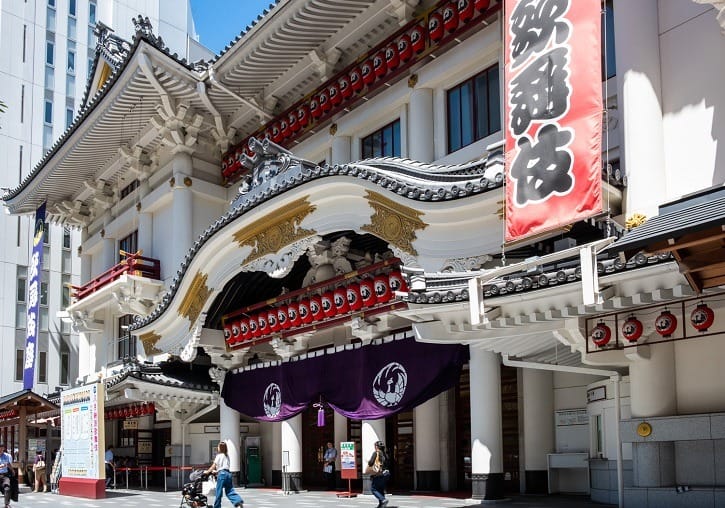
At the Kabukiza Theater , there are usually 2 Kabuki shows a day:
- Matinee – 11:00 am
- Evening – 4:00 pm
Each show consists of 3 – 4 acts and can last up to 4 hours . Tickets can also be quite expensive (up to ¥17,000)
However, the good news for tourists is this:
Kabukiza Theater has made kabuki more accessible for tourists by allowing them to buy tickets for just one act , meaning you don’t need to stay for the whole 4-hour show . These are called Single Act Tickets.
There are usually 6 to 7 acts per day . Some acts are 30 minutes, while others are 60 to 90 minutes. You can choose to go to any act.
The person who was managing the line for the tickets told me to avoid the 30-minute shows as they’re only dancing.

Shows change each month , and the number of acts per day and start times vary . Check the Kabukiza Theater website for that month’s performance.
To give you some idea of the start times and prices for each act, here they are for November 2023 :
Matinee Show
- Act 1 – 11:00 am – 12:32 pm – ¥1,400
- Act 2 – 1:07 pm – 2:07 pm – ¥1,300
- Act 3 – 2:27 pm – 3:30 pm – ¥1,300
Evening Show
- Act 1 – 4:30 pm — 5:35 pm – ¥1,400
- Act 2 – 6:20 pm – 7:40 pm – ¥1,300
- Act 3 – 8:00 pm – 8:59 pm – ¥1,300
How to Buy Single-Act Tickets:
There are 2 ways to buy the Single Act Tickets .
- Reserved Seats – Tickets go on sale at 12:00 pm (noon) the day before the performance. Buy online with credit card. You can buy up to 4 tickets per person.There are 70 reserved seats.
- Non-reserved Seats – Tickets go on sale at 10:00 am on the day of the performance. Cash only. You can only buy 1 ticket per person. There are 20 non-reserved seats.

Although the performances are in Japanese, you can rent a portable translator that translates the whole show . The translation machine didn’t distract me from the show.
Check Out These Hidden Gems:
- Takayama Itinerary: How to Spend 2 Days in Japan's "Little Kyoto"
- Travel Guide to Shirakawago: Enter a Japanese Fairy Tale
- Day Trip to Nara: A Suggested Itinerary
3. Akihabara Area
Day 3 of this 4-day Tokyo itinerary ends with a visit to Akihabara.

Akihabara is famous for its electronics, video games, and anime and manga shop s. If you want to see the famous maid cafes , then Akihabara is the perfect stop on your Tokyo itinerary.
To get the best experience of this area, take a stroll along Chuo Dori Street .
If you need to buy camera equipment, stop at Bic Camera or Yodobashi Camera.
If you spend at least ¥5000 in one store in one day , your purchase is tax-free . You will need your passport with you to not pay any taxes. You must leave Japan within 30 days.
Tokyo Itinerary – Day 4 – Fun Tokyo
Tokyo bay – shinjuku.
This is my favorite day of the itinerary because today you’re going to one of my favorite museums in the world and finally to my favorite area of Tokyo, Shinjuku.
1. Tokyo Bay
You’ll be crossing Tokyo Bay to Odaiba , a collection of islands of reclaimed land.
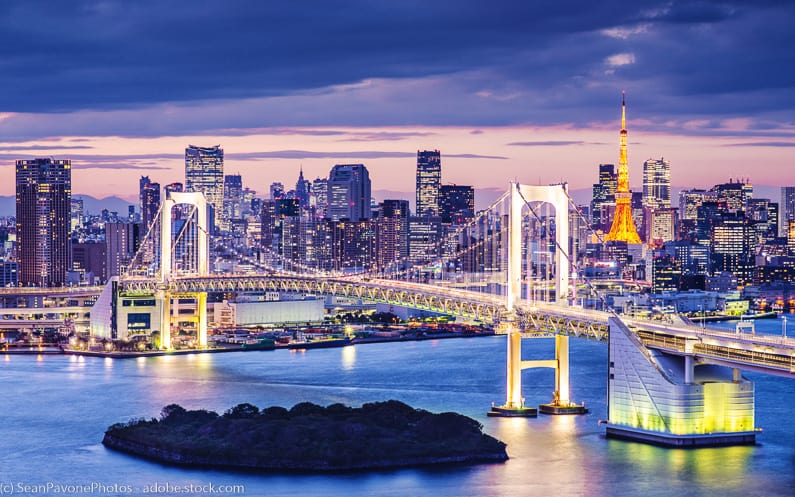
1.1 teamLab Planets or teamLab Borderless
- COST OF TEAMLAB PLANETS: ¥3,800 (US$27 | €24 | £21) for adults; ¥1,300-¥2,300 for children | ¥1,900 disabled person discount
- COST OF TEAMLAB BORDERLESS: Closed until Feb 9, 2024; tickets go on sale Jan 16, 2024 – check website for price
- TIMES FOR PLANETS: 9:00 am – 10:00 pm (every day)
- BUYING TICKETS: teamLab Planets with Get Your Guide ; teamLab Planets with Klook
- LOCATION: teamLab Planets ; the new teamLab Borderless in Azabudai
Day 4 of your 4-day Japan itinerary starts at teamLab Borderless, a digital art museum. Teamlab Borderless wasn’t in my guidebook when I first visited Japan. But I’d seen so many Instagram photos of it that I had to check it out on my next trip to Japan. Instagram didn’t do it justice .
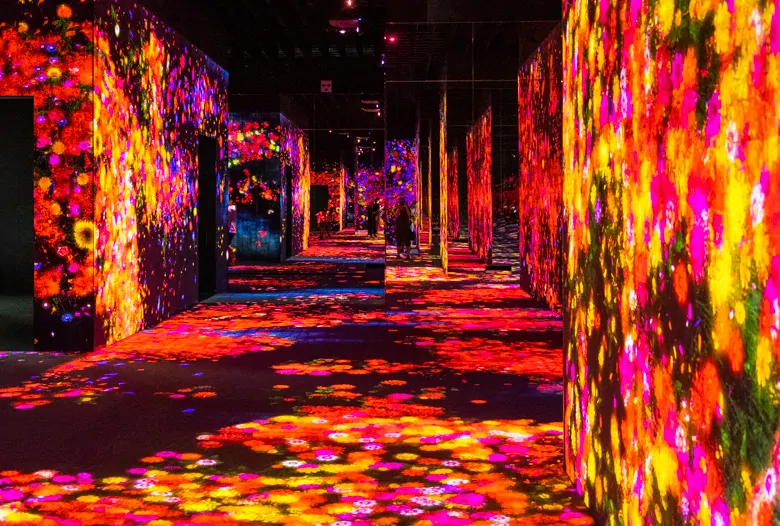
There are 2 teamLab museums in Tokyo :
- teamLab Borderless
- teamLab Planets
Both museums exhibit interactive digital art . Artwork is displayed digitally on the walls, ceilings, and floors and changes as you move barefoot from room to room. The concept is that there is no border between art, design, and technology and between humans and nature.
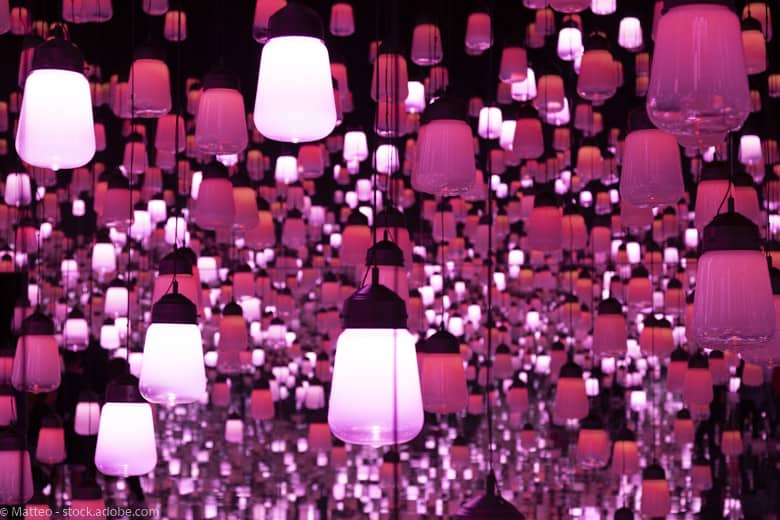
teamLab Planets is a temporary museum that focuses on water and flowers . It was supposed to close in 2020 but it proved to be so popular that the museum will remain open until 2027 . Wear shorts as you will need to walk through water but not a skirt as the floors have mirrors.
I have only visited teamLab Borderless and loved it! teamLab Planets also gets rave reviews.
Expect to stay between 2 and 3 hours.
It’s very popular so buy your tickets ahead of time . Get Your Guide also sells tickets for teamLab Planets .
Getting to teamLab Planets in Toyosu:
Toyosu is located in Odaiba and often takes 1 hour to get to from most popular tourist districts in Tokyo.
- Take the Yurakucho Line and get off at Shijo Mae Station. Then walk 5 minutes to teamLab Planets
- Take the Yurikamome Line and get off at Shin Toyosu Station. Then walk 1 minute to teamLab Planets or
- Take the Yurikamome Line and get off at Toyosu Station. Then walk 10 minutes to teamLab Planets.
I couldn’t use my 72-hour Unlimited Train Pass on the Yurikamome Line as the pass only works on the Tokyo Metro and Toei Subway Lines.
Getting to teamLab Borderless in Azabudai:
The good news is that teamLab Borderless’s new location is close to Roppongi District which makes it closer to Shinjuku and Asakusa Districts.
- Take the Tokyo Metro Hibaya Line to Kamiyacho Station and take Exit 5 to teamLab Borderless.
- Take the Tokyo Metro Namboku Line to Roppongi-Itchome Station . Take Exit 2 and walk 4 minutes to teamLab Borderless
2. Shinjuku Area
End day 4 of this Tokyo itinerary by touring Shinjuku . This is my favorite area in Tokyo.
The BEST time to experience Shinjuku is at night when the neon lights turn on, the crowds come out, the crazy cafes and izakayas fill with people, and the narrow alleyways with their tiny bars buzz with life.
Yes, you’ll see signs for sex shops, sex shows, host and hostess bars, love hotels, etc. But it doesn’t feel seedy or dangerous even walking alone at night.
The interesting thing is that Shinjuku has always had a shady reputation . It began as a post town on one of Edo’s main highways, where travelers stopped to rest.
Then it became one of Edo’s six licensed pleasure quarters , catering to a more working-class clientele . Soon Shinjuku grew into a bustling area of shops, inns, theaters, and teahouses.
In the late 1800s, its population began to grow when newly built railway lines began carrying passengers to Shinjuku. It grew even more after the 1923 earthquake destroyed much of the eastern part of the city. People started to live in Shinjuku and it lost a bit of its bad-boy reputation.
However, Shinjuku’s shady past came back with a vengeance when immediately after the war, the yakuza opened Tokyo’s largest black market in Shinjuku .
Starting in the 1950s, Shinjuku’s dark alleys with their tiny bars and izakayas have attracted intellectuals and student radicals . Nowadays add a whole bunch of tourists to the mix and you have Tokyo’s version of a red-light district.
Where to Eat in Shinjuku
- Sushi Zanmai
- Fuunji – ramen
- Tsunahachi Shinjuku – tempura
2.1 Kabukicho

Take a stroll around Kabukicho , the Red Light District. Don’t worry about walking around this area by yourself. The streets are packed with tourists. It may be seedier than most other parts of Tokyo, but I felt safe when I was there.
Take a look inside Don Quixote store . It’s a multi-storied store selling everything from food to maid costumes. The aisles are so narrow and jam-packed with goods that it’s difficult to walk down them. It’s not a great store if you’re claustrophobic.
2.2 Omoide Yokocho

The highlight of a tour of Shinjuku is a walk down Omoide Yokocho or Memories Lane . Another name for it is Piss Alley . It’s a very narrow alley lined with red lanterns and tiny bars and yakitori restaurants .
2.3 Shinjuku Golden Gai

Golden Gai is a seedy but atmospheric area of around 200 small bars . Just walk around and find one that seems open to tourists.

I went to Araku Golden Gai bar. Look for the red sign and the red staircase.
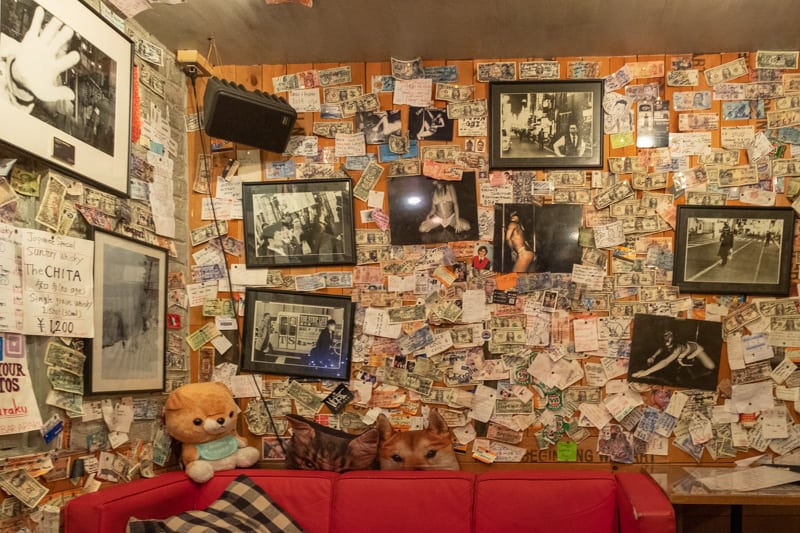
The bartender speaks English and there’s an English menu. When I was in Golden Gai, everyone was excited by the fact that Quentin Tarantino had just been there.
Visiting some of these tiny bars in Shinjuku as a foreigner can be intimidating. Some of the bars would rather you not visit as they’re more for locals. I went to all the tiny bars in Omoide Yokocho and Golden Gai on a guided tour .
More ideas for your trip to Japan:
- Matsumoto Itinerary: Exploring Japan's Coolest Castle
- Hiroshima and Miyajima Day Trip Itinerary
- Hiking in the Japan Alps: Perfect Day Trip from Takayama
Where to stay in Tokyo
One of the hardest decisions to make about Tokyo is where to stay . So, I wrote this post on how to find the best places to stay in Tokyo (even on a budget) .
I’ve stayed in three different areas of Tokyo: Asakusa, Tsukiji, and Shinjuku. All of them have their pros and cons. However, I prefer Asakusa for its price and the laid-back vibe of the neighborhood and Shinjuku for its excitement and energy .
My favorite hotel was the Hotel Gracery Shinjuku . It’s the one with the Godzilla head sticking out of it . A bit gimmicky, I know, but you can’t blame the hotel for trying. It’s in the perfect location: right in the heart of Kabukicho and just a five-minute walk from Shinjuku Station .

Grab a FREE Japan Itinerary Guide
Get all my great travel tips as well as this FREE Japan travel and itinerary guide sent to your email right away!
You have Successfully Subscribed!
Final thoughts: tokyo itinerary.
After you’ve explored Tokyo for 4 days, where should you go next?
I highly recommend taking a trip to Hakone for 1 or 2 days , where you can soak in a traditional onsen, see some fabulous art, delve into Tokyo’s history, take one of Japan’s most Instagram-worthy shots, and perhaps get a glimpse of Mt. Fuji.
Other amazing day trips or overnight trips close to Tokyo include Kamakura, Nikko, and Mt. Fuji.
If you’re following my 3-week Japan itinerary , your next stop is to visit the Japan Alps and the magical towns of Takayama and Shirakawa-go .
Best Resources for Your Trip to Japan
Book your flights for japan.
Use Skyscanner to find the cheapest flights to Japan. They will turn up results for all airlines including major ones and local airlines. You’re going to find EVERYTHING that’s available and thus get the cheapest price.
Book Your Accommodations for Japan:
The best hotel booking sites for Japan are Booking.com and Agoda . They have the biggest selection, and they consistently churn out hotels and hostels at the lowest prices of any other booking site. Another website for backpackers and budget travelers is Hostel World .
Book Your Tours for Japan:
The three best tour booking sites for Japan are Viator , Get Your Guide , and Klook . Viator has the biggest selection. Get Your Guide has terrific customer service. Klook specializes in tours in Asia.
Get Connected when in Japan:
You’ve got 3 options for staying connected in Japan: a pocket WiFi (what I used), a physical SIM card , or an eSIM . Several companies offer eSIMs for Japan. I recommend getting one through Klook or Airalo .
Book your Japan Rail Passes:
Japan has many different types of passes. The JR Pass is one of the most popular passes. Buy them through Klook before your trip to Japan. There are other passes as well like the Hakone Freepass .
Get Your Rail Pass for Tokyo
Get an unlimited train pass for most metro lines in Tokyo. They’re good for 1, 2, or 3 days. I always get the 3-day pass.
Are you on Pinterest?
Hey! How about saving one of these pins to Pinterest to read for later?
And feel free to follow me on Pinterest, where you'll find lots of travel articles for everywhere around the world.
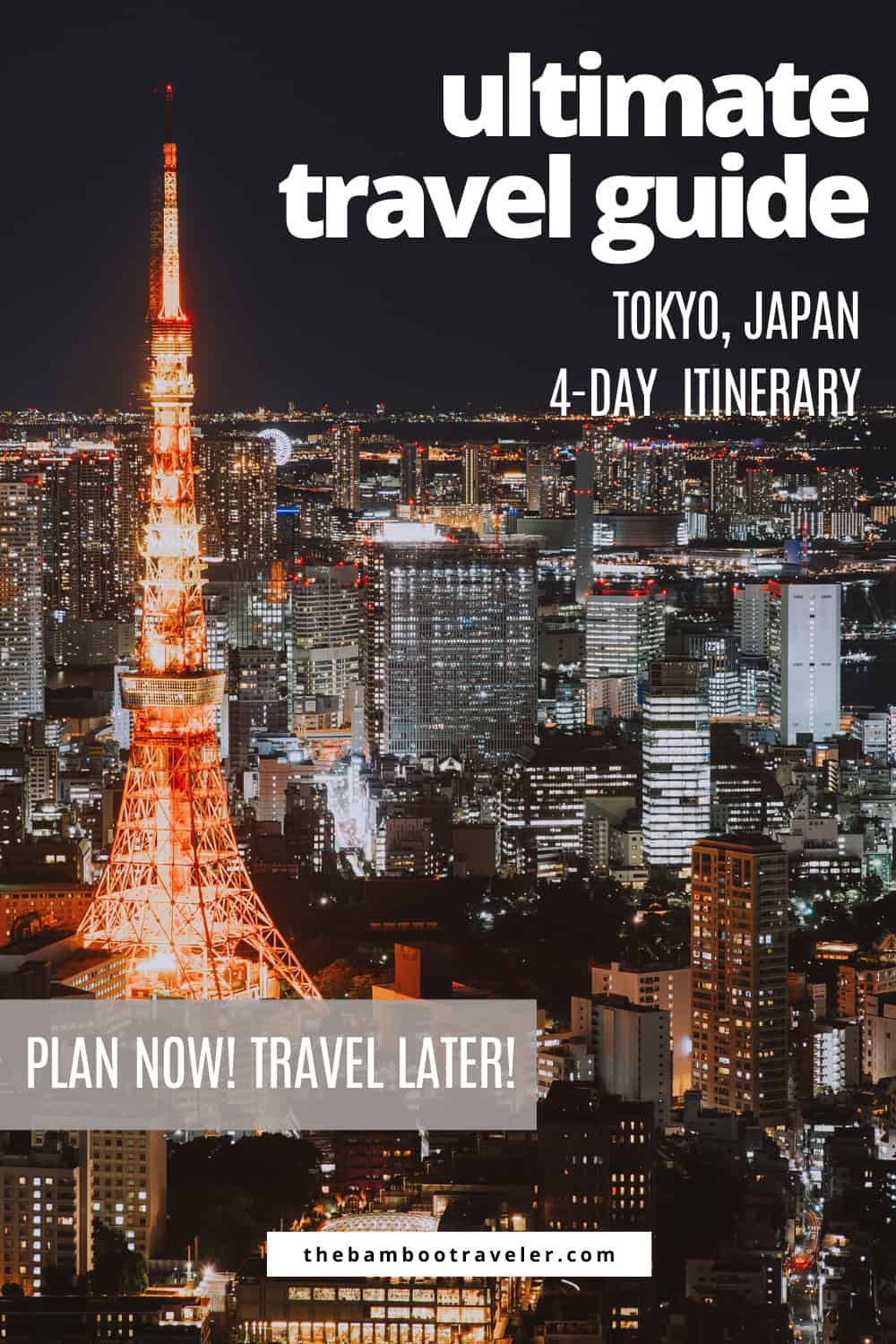
Looking for more info on Japan? Check out these posts:
- Tokyo Itinerary: How to Spend 4 Perfect Days in Tokyo
- Hakone Itinerary: How to Spend 2 Days in Hakone
- Kyoto Itinerary 4 Weeks: A City of a Million Temples
- Nara Itinerary: The Perfect Day Trip from Kyoto
- Matsumoto Itinerary: Exploring Japan’s Coolest Castle
- Shirakawago Itinerary: Enter a Japanese Fairytale
- The Ultimate Day Trip to Hiroshima and Miyajima
- Kamikochi Hiking: The Perfect Day Trip from Takayama
- Takayama Itinerary: Travel Back in Time to Old Japan
- The Best Ever Guide to Japan’s Tateyama Kurobe Alpine Route
- Top 10 Must-See Places to Visit in Kyoto
- 13 Things You Need to Know Before Going to Japan
- The 20 Best Novels to Read Before Visiting Japan
- A Foolproof Japan Packing List
26 Comments
I absolutely love that I sound this post! I have been planning to go in January but then I thought I might as well brave the tourists and go in March. I have been planning to spend exactly 4 days in Tokyo so I am saving this article. thanks for this.
I’m glad this will be helpful! Tokyo is such a great place!
What a great post, so extensive. I absolutely loved Tokyo and I definitely want to go back one day. Didn’t know the Tsukiji market changed location! Reason to go to Toyosu Market during my next visit.
I’m so sad that it has moved. Now it’s kind of out of the way and the new place I hear doesn’t have the character that Tsukiji had.
Thanks for writing such a super detailed post! I can’t wait to visit Tokyo one day and you’ve given me serious wanderlust!
You should definitely visit! For me, it was one of the most exciting cities that I’ve been to.
Tokyo is number one on my bucket list right now! I really appreciate the time you put into this itinerary– it’s super helpful as a starting point for my trip! I’m especially interested in Harajuku and all the fun cafes!!
Thanks! I hope you get a chance to go soon! It’s a great city!
Great blog. This has been on mutt bucket list for so long.
Thanks! I hope you get a chance to go to Tokyo soon! It’s a great city!
WOW! this is such an incredibly comprehensive and complete itinerary… I’m definitely saving it for when I go to Tokyo! You’ve got me craving ramen too! 🙂
Thanks! Ever since I went to Tokyo, I’ve been craving ramen like crazy! I hope you get a chance to go soon!
You made me miss Japan! I wish I had more time in Tokyo but with only 2 days, I just ate and relaxed. Ha! Saving your post for when I go back for some sightseeing 🙂
I also wish I had spent more time in Tokyo!
Thank you for the wonderful itinerary ideas…gives me a great idea how to plan for my upcoming 4 days in Tokyo! It looks like a great place to visit.
Thanks! I hope you have a fabulous trip to Tokyo! It’s an amazing, unforgettable city.
Tokyo is on our bucket list and your post want me to go and see it even more. Im pinning it for later
I hope you get a chance to travel there soon! It’s definitely worth it. I was surprised by how much I loved Japan.
I am staying in Shinjuku now and wondering how to spend a couple of days that are currently unplanned. This is extremely helpful and love that you included restaurants in each area. This is the best article I have found and am planning Kyoto solely from your recommendations also. One thing to include in Tokyo is information on attending baseball games. Can’t thank you enough!
Hi Jill, Thank you so much! I’m glad you found this useful. I’ll be back in Tokyo soon and will hopefully have time to research more places, especially restaurants. I’ll definitely look into including more information on attending a baseball game in Tokyo.
Wow what an amazing write up about Tokyo. Loved the Japan Rail pass, got to see so much more of Japan than I thought during my two weeks there.
Hi Patrick, Glad you found the JR Pass so useful!
“The wonderful people at the airport information desk told me to take the Toei Asakusa Line from Narita to Asakusa station (¥1290; over 1 hour)”
Hi, can you explain more on this? Because I can’t find the route for it. Does the Toei Asakusa Line included Narita in their map?
Hi Gee, The Tokyo train system is very confusing. Before my trip, I couldn’t find this route either, but it does exist. A few paragraphs above the quote is a link to the Keisei Electric Railway website that has information on the Keisei train that connects Narita and Asakusa Station. https://www.keisei.co.jp/keisei/tetudou/skyliner/us/traffic/index.php The people at the information desk called it the Toei Asakusa Line of Keisei Railway. The train arrives at the same station and same tracks as the normal Toei Asakusa Line that you see on the Tokyo subway maps.
Julie These guides look great. I very much would love a pdf of your Tokyo and Kyoto itineraries but can’t seem to download them. You also should get some kind of compensation for your hard work. Do you offer to guide any trips????? Thanks
Hi Robert, Thanks! I’m glad you you found the guides useful. I’m not sure how to download them. I don’t do any guided trips.
Submit a Comment Cancel reply
Your email address will not be published. Required fields are marked *
Submit Comment
This site uses Akismet to reduce spam. Learn how your comment data is processed .
What are you looking for?
About the bamboo traveler.

Welcome to The Bamboo Traveler, a travel blog dedicated to helping those travelers who want to dig deeply into the history, heritage, and culture of a place. Whether it’s through the pages of your passport or the pages of a book, I’ll help you travel the world and uncover the history, culture, food, architecture, and natural beauty of some of the world’s most fascinating places.

Traveling to Japan soon?
Japan itinerary posts.
- Japan Itinerary : The Perfect 3 Weeks in Japan
- Hakone Itinerary : How to Spend 2 Days in Hakone
- Kamikochi Hiking : The Perfect Day Trip from Takayama
- Kanazawa Itinerary: 2 Days in the City of Samurais
- Kyoto Itinerary 4 Weeks : A City of a Million Temples
- Matsumoto Itinerary : Exploring Japan’s Coolest Castle
- Nara Itinerary : The Perfect Day Trip from Kyoto
- Takayama Itinerary : Travel Back in Time to Old Japan
- Tokyo Itinerary : How to Spend 4 Perfect Days in Tokyo
Posts About Kyoto
- Kyoto Itinerary: A City of a Million Temples
- Top 10 Must-Visit Places in Kyoto
- The Best of Kyoto: Fushimi Inari Shrine
- The Best of Kyoto: The Bamboo Forest
- The Best of Kyoto: Kinkaku-ji Temple
- The Best of Kyoto: Tenryu-ji Temple
Preparing for a Trip to Japan
- Top 10 Must-Visit Places to Visit in Kyoto
- Traveling Solo in Japan: The Good, the Bad, and the Ugly
- Don’t Panic: What to do if you need a doctor in Japan

Get Your FREE Japan Itinerary Guide Here!
Subscribe to my newsletter to receive the latest travel tips for Asia and get a free 4-page PDF version of my 3-Week Japan Itinerary.
Pin It on Pinterest

- Japan Package Tours
Our Japan package tours are thoughtfully designed to provide you with an unforgettable experience where you’ll discover the best of this iconic destination. Visit renowned Japanese destinations and attractions with expert local tour guides, without having to worry about planning the details. Simply choose the Japan tour package that suits you, and immerse yourself in the beauty and culture of Japan. Our operations team is available 24/7 to ensure everything runs smoothly, with their top priority being that you have a stress-free and enjoyable trip.
We offer a variety of package tours in Japan to cater to different needs and budgets. Our tours cover all the key sites in Japan, from the bustling city of Tokyo to the traditional streets of Kyoto, and the natural wonders of Hokkaido. Additionally, we can arrange custom itineraries for private groups traveling to Japan.
One of the highlights of any trip to Japan is visiting Tokyo, the bustling capital city, with its vibrant culture and iconic landmarks like the Tokyo Tower and the Sensoji Temple. Our package tours of Japan ensure that you won’t miss these incredible sites and allow you to spend ample time exploring the cities, museums, and natural landscapes, while going off-the-beaten-path and seeing the lesser-known sites that only a travel expert would know about. We look forward to being that expert for you and helping you create your dream package tour of Japan!
43 Handpicked package s in Japan Package Tours
- Hiroshima Tours
- Kanazawa Tours
- Korea Tours from Japan
- Kyoto Tours
- Mount Fuji Tours
- Nikko Tours
- Osaka Tours
- Shirakawago Tours
- Takayama Tours
- Tokyo Tours
- Tours From Osaka
- Tours From Tokyo
- Tours from Kobe
- Tours from Kyoto
- Tours from Seoul, Korea
- Tours from Yokohama
- 14-16 Day Japan Tours
- 3-5 Day Japan Tours
- 6-8 Day Japan Tours
- 9-13 Day Japan Tours
- Japan & South Korea Package Tours
- Japan Budget Package Tours
- Japan Food & Drink Tours
- Japan Golden Route Package Tours
- Japan Mini Package Tours (2-5 days)
- Japan Only Package Tours
- Japan Private Package Tours
- Pre/Post Japan Cruise Tour Packages
- South Korea Package Tours
- Tours from Japan to Nearby Countries
- Hiroshima Tour Packages
- Korea Tour Packages
- Kyoto Tour Packages
- Mount Fuji Tour Packages
- Nara Tour Packages
- Nikko Tour Packages
- Osaka Tour Packages
- Takayama Tour Packages
- Tokyo Tour Packages
- All Private Japan Tours
- Price low to high
- Price high to low

7 Day Best of Japan Tour Package

13 Day Best of Japan Tour Package – The Golden Route

11 Day Ultimate Japan Tour Package

9 Day Best of Japan Tour Package

10 Day Best of Japan Tour Package

14 Day Best of Japan Tour Package – The Golden Route

7 Day Best of Japan Tour Package – The Golden Route

7 Day Budget Japan Tour Package

12 Day Best of Japan Tour Package – The Golden Route

3 Day Kyoto, Osaka & Nara Tour from Tokyo

5 Day Kyoto, Osaka & Nara Tour Package

7 Day Tokyo, Mount Fuji & Nikko Tour Package

8 Day Budget Japan Tour Package

5 Day Tokyo & Mount Fuji Tour Package

8 Day Best of Japan Tour Package

11 Day Budget Japan Tour Package

10 Day Budget Japan Tour Package

5 Day Pre/Post Cruise Tokyo, Mount Fuji & Hakone Tour Package

9 Day Budget Japan Tour Package

4 Day History of Tokyo Districts Tour Package

4 Day Pre/Post Cruise Kyoto Tour Package

4 Day Pre/Post Cruise Tokyo Tour Package

7 Day Flavors of Japan Tour Package

14 Day South Korea & Japan Tour Package

10 Day South Korea & Japan Tour Package

13 Day South Korea & Japan Tour Package

11 Day South Korea & Japan Tour Package

15 Day Japan & World Expo Osaka 2025 Tour Package

10 Day Japan & World Expo Osaka 2025 Tour Package

4 Day Osaka & World Expo Osaka 2025 Tour Package

10 Day Best of Japan Private Tour Package

7 Day Tokyo, Mount Fuji & Nikko Private Tour Package

5 Day Tokyo & Mount Fuji Private Tour Package

13 Day Best of Japan Private Tour Package – The Golden Route

7 Day Best of Japan Private Tour Package

9 Day Best of Japan Private Tour Package

14 Day Best of Japan Private Tour Package – The Golden Route

11 Day Ultimate Japan Private Tour Package

8 Day Osaka, Kyoto & Nara Private Tour Package

12 Day Best of Japan Private Tour Package – The Golden Route

6 Day Seoul, South Korea from Japan Tour Package

4 Day Seoul South Korea from Japan Tour Package

5 Day Seoul, South Korea from Japan Tour Package
There are no packages which match these criteria.
- Traveler Services
- Why Travel to Japan
- Special Experiences
- Accommodations & Culinary Experiences
- Japan Itineraries
- Signature Journey Collection
- Luxury Ryokan and Hotel Collection
- Hakone and Shizuoka
- Kanazawa and Onsen Areas
- Kyoto and Nara
- Mie and Wakayama
- Our Company & Approach
- Our Difference
- How We Work
- Testimonials
- Awards and Designations
- Japan Corporate Travel Services
- Partners & Affiliations
- Photo Credits
- Privacy Policy
- Terms and Conditions
- Request Information
- Client Questionnaire
- Bespoke Itineraries
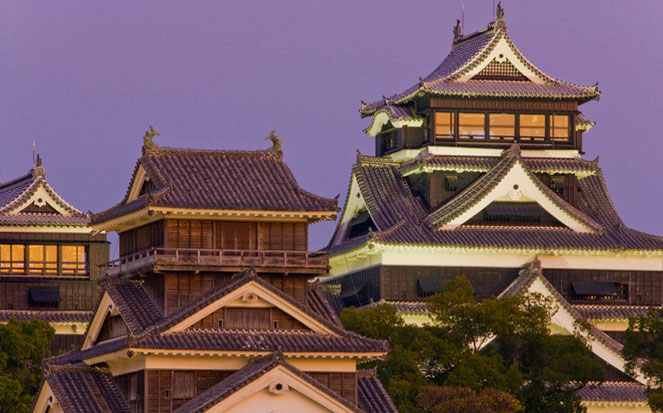
Signature Journey Collection Japan Tour Itineraries
From $3,000 per person per day, double occupancy
Welcome to our Signature Journey Collection , representing some of the most amazing and timeless places that remain off well-trodden paths and encompass fabulously beautiful, interesting and culturally enriching areas throughout Japan. Our shorter duration trips are perfect for travelers in the Asia region, cruise shore excursions and for those passing through Japan seeking a very special experience. These Japan tour itineraries can also be added as extensions to any of our bespoke ‘tailor-made’ tours and can be joined with each other. Combined with some of the absolute best and eclectic accommodations in the country, our journeys are masterfully crafted to meet the interests and passions of our clients.
From the northern island of Hokkaido and its great outdoors to the spiritual centers of Koyasan and Ise to the art and hot spring rich areas on the Island of Kyushu to remote and untouched islands in Japan, let JapanQuest Journeys offer you the chance to explore Japan’s mysteries and delights undisturbed and in-depth, unlocking thousand year-old secrets one by one.
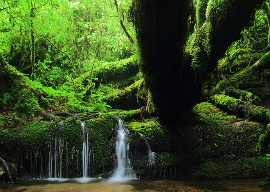
Featured In

Join Our Mailing List
Sign up for the JapanQuest Journeys mailing list to stay in contact and receive our latest news.
- Luxury Accommodations
- (202) 455-0095 (US)
- Contact Us →
- Back To Top
Remote and Untouched Japan Tour Itinerary (4 Days | 3 Nights)

Revisit the mainland 2-days later when you will take a 2.0-hour hydrofoil journey on the open sea from Yakushima to Kagoshima. In Kagoshima, stroll through Senganen Garden also known as Isoteien, a Japanese style landscape garden along the coast. One of its most striking features is its borrowed scenery of Sakurajima (a live volcano) and Kagoshima Bay. From Kagoshima, venture by car to Kumamoto on a 2-hour and 20-minute drive then a 30-minute ferry ride to Unzen where you will stay at a beautiful ryokan.
The following morning of day four you will be driven to Nagasaki where you will be introduced to Koshi-byo Confucian Temple, one of the few beautiful shrines dedicated to the Chinese philosopher Confucius in Japan and Nagasaki Peace Park commemorating the atomic bombing of Nagasaki on August 9, 1945. A monument around a black pillar marks the atomic explosion's epicenter in the nearby Hypocenter Park.
Enchanting Kyushu Japan Tour Itinerary (4 Days | 3 Nights)
Journey to Onta the following morning which will bring you back to the stone ages where rustic pottery is made before one's eyes. A giant mallet fed by a river running through the center of Onta adorns this small village where one can see rocks crushed to make clay in this age-old setting of stone kilns. Moving onward you will travel through central Kyushu to the pottery town of Karatsu located on the Sea of Japan coast. One of Japan's world-renowned pottery towns, Karatsu is a must-see for yakimono (pottery or ceramic ware) fans. Already a well-known pottery town, Karatsu's Korean influences elevated it from useful ceramic ware to art. Karatsu-made vessels are some of the finest in Japan. In Karatsu, visit with several well-known potters at their studios. Spend the night at a splendid Japanese inn in Karatsu that will make you feel right at home.
We will begin day three's journey in Arita, the town from which the styles of Japanese ceramics most well known in the West derives their name. Arita, the cradle of porcelain manufacturing in Japan, is a quiet town among mountains, located in the western part of Saga. Ri Sampei, a potter from Korea, discovered a fine-quality white porcelain mineral in Mt. Arita-Izumi-yama. This was the beginning of Arita's development into an internationally known town of porcelain. Imari is the European collectors' name for Japanese porcelain wares made in the town of Arita. Following your visit to Arita, take a short drive to Okawachiyama, a village bustling with many kilns in operation and an opportunity to observe potters at work creating their artistic pieces and shops to meander around. Visit the magnificent Imaemon Museum of Ceramic Antiques. After a day spent seeing beautiful ceramics, you will journey southward along glistening Omura Bay to the mountain resort of Unzen on the Shimabara Peninsula where you will spend the evening at a lovely inn in the midst of wooded surroundings.
The Great Outdoors Japan Tour Eastern Hokkaido (4 Days/3 Nights)

Day one of this journey begins with a ninety-minute flight from Tokyoâs Haneda Airport to Hokkaidoâs Kushiro Airport. You will be met at the airport and driven approximately thirty- minutes to Kushiro Shitsugen National Park, Japanâs largest wetland and home to the countryâs only population of Japanese cranes. You will explore the park on a series of walking trails offering a splendid opportunity for nature viewing and bird watching. From Kushiro Shitsugen National Park you will travel onwards approximately ninety-minutes to Hazel Grouse Manor where you will stay during the duration of your trip in Eastern Hokkaido. Hazel Grouse Manor is a quintessential English style manor house with eight suites offering exquisite food and excellent service.
The following day, you will visit Akan National Park, considered by many to be the crown jewel of Hokkaido, with its stunning lakes. Visit Lake Mashuko, ringed by white birch forest and often enshrouded in mist. Lake Mashuko was revered by Hokkaidoâs native Ainu as being the âLake of Gods.â You will also visit Kussharoko, Hokkaidoâs second largest lake in a beautiful mountain setting. Alternatively, you may choose to spend the day at leisure fly-fishing, canoeing or horseback riding.
On day three of your trip to Eastern Hokkaido you will venture forth on a two-hour drive to Shiretoko National Park, a UNESCO World Heritage site that is home to some of Japanâs most rugged and beautiful landscape. You will drive around the Shiretoko Peninsula where mountain streams cascade over cliffs into the sea and where in the autumn, bears can sometime be seen snatching salmon from mountain streams.
You will have a leisurely morning on day 4 of your stay in Eastern Hokkaido before being driven thirty-minutes to Nakashibetsu Airport for your ninety-minutes return flight to Tokyo.
Pure Japan Tour Itinerary (4 Days | 3 Nights)
Visit Seisuiji Temple, one of the most famous temples in Sado Island, erected in 806 Daido-era. The temple is quite famous for its crystal stream well up from the earth, in the mountain behind the temple. From Seisuiji, venture to Chokokuji Temple. Legend has the founding of Chokokuji by Kukai (Kobo Daishi) in 807, but there is no written record of him ever visiting Sado. The exiled Emperor Juntoku is said to have renamed the temple with the same kanji characters as Hasedera Temple in Nara or the Hasedera in Kamakura. One particular treasure of Chokokuji is a wooden statue of an eleven-headed Kannon. Afterwards, take a private tour of Hokusetsu Sake Brewery where you can experience the inner workings of this famed brewery that was selected to supply Nobu Restaurants with its delicious sake.
On day two, visit the beautiful Myosenji Temple with its five-story pagoda and interesting architecture. Following this, experience one of Sado's important Noh Theaters for a behind the scenes experience of this important art form. About one third of the Noh Theater stages in Japan are found on Sado Island. Here, the local color of Noh is so prosperous that Sado also boasts more types of Noh stage than you will find in any other one place. With our special access, you can partake in personal Taiko "drumming" lessons conducted under the auspices of the celebrated Kodo Drummers who are based on Sado Island and have toured the world for over 30 years. Taiko drumming is very rhythmic and awe-inspiring in its power, beat and spirituality. Pure fun to listen and partake. You will also get an inside tour of Kodo Village where the Kodo drummers train and rehearse. While in Sado you will stay at a Japanese style hotel with hot spring baths.
On day three, visit the studio of one of the most famous and talented basket makers in Japan. Afterwards, return from Sado via hydrofoil and experience a fabulous ryokan outside of Niigata, moving to your next destination on day four.
The Land and Sacred Places Japan Tour Itinerary (4 Days | 3 Nights)
The following day, continue south through forests and mountains on a two and half hour drive to Shuzenji on Shizuoka's Izu Peninsula. It is lovely strolling through the quaint hot-spring village of Shuzenji with its historic buildings and bamboo groves. The mystery of Shuzenji is what you cannot see from the streets---its world-class ryokans and onsens tucked away in perfectly groomed gardens hidden away from view. Frequented by foreign dignitaries, they offer only the finest of Japanese hospitality in a relaxing, refined and quintessential setting. While in Shizuoka, enjoy the beauty of its agricultural landscape of tea plantations, mikans and wasabi fields. Try matcha tea making and harvesting a bit of green tea for yourself. Shizuoka is a leading agricultural producer in Japan and you will experience hands-on learning in this region. The evening will be spent at one of Shuzenji's beautiful ryokan or Japanese inns.
On day three, travel further south by car and train via Nagoya to Ise where you will visit the most ancient and holiest of Japanese shrines, Ise Jingu. Of Japanâs thousands of Shinto shrines, Ise Jingu is paramount. The area comprises hundreds of subsidiary shrines but the main structures you will see will be the Outer Shrine (Geku dedicated to the goddess of harvests, homes and food) and the Inner Shrine (Naiku dedicated to the sun goddess and mythical ancestor to the emperor and the Japanese race). The inner sanctum of Naiku contains one of the great imperial treasures; the sacred bronze mirror said to have been presented to the first emperor by the sun goddess Amaterasu herself. The shrines are made of fresh hinoki (cypress) wood from the Kiso Mountains. The evening will be spent in Toba an area of stunning beauty near Ise.
The following day four visit Futamigaura, known for its Husband-and Wife Rocks (Meoto-iwa), two curious outcrops standing in the sea connected by a sacred straw rope when they are symbolically wed each year.
The Mountains Japan Tour Itinerary (4 Days | 3 Nights)
The following day two you will retrace the footsteps of travelers of the Edo-period on a beautiful stretch of the Nakasendo, a road that linked Tokyo to Kyoto during Japanâs feudal period. Visit Kisohirasawa, Narai and Tsumago, evocative Edo-period post towns. Fall back in time in Tsumago, a living museum of old Japan, including some wonderful lacquer ware indigenous to the area. Stay in a beautiful contemporary ryokan in the remote area of Kaida, with a fabulous view of the mountainous terrain and green fields which are filled with colorful flowers in the warmer months.
On day three of this journey, you will venture on a beautiful sojourn through the stunning Japanese Alps to Takayama, a living museum rich with charm located in the heart of central Japan. Its well-preserved homes and shops allow one to glimpse into the Japan of a bygone era. Takayama is a very quaint town and quintessentially Japan. Takayama is ideal for exploring by foot. Visit nearby Takayama Jinya, Japan's only existing provincial government office of the Edo Shogunate or heads of Japanâs feudal regime. Sojourn through Takayama's picturesque Sanmachi Quarter, home to rows of exquisitely preserved merchant houses in which there are a number of sake breweries and stores selling miso or bean paste, products for which Takayama is famous. Takayama also has a plethora of small antique shops to wander around. Enjoy tasting sake at Takayama's many sake breweries. You may choose to spend this evening in a lovely Japanese inn located in the forest near Takayama or at hotel with a panoramic view of the surrounding mountains.
In the morning of day four, journey first to the colorful morning vegetable and flower market. Afterwards, continue your exploration of Takayama.
The Spiritual Japan Tour Itinerary (3 Days | 2 Nights)
Your pilgrimage this first day will start at Hayatama Taisha. You will then travel approximately thirty-minutes to the stunning Nachi Taisha. Following your visit to Nachi Taisha, you will have a ninety-minute journey through mountainous landscape where upon arriving in the Kumano Hongu area. Afterwards, you will embark on a 45-minute walk along the unpaved and beautiful Kumano Kodo Trail with a local trail guide to Hongu Taisha. At the conclusion of your walk you will be at Kumano Hongu Taisha. At Hongu Taisha, you will receive a talk and special blessing from the Shrine's Shinto Priest. Following your visit to Kumano Hongu Taisha you will drive approximately ninety minutes to Nanki Shirahama where you will spend the evening at a Japanese style property with wonderful hot springs.
The following day two will start northward through the heart of mountainous Wakayama to Mt. Koya, Japan's best-known Buddhist mountain retreat. In 2004, UNESCO designated Mt. Koya as a World Heritage Site. Mt. Koya is the heart of Shingon Buddhism and the resting place of the sect's founder, perhaps Japan's best-known Buddhist, known as both Kukai and Kobo Daishi.The eight-forested peaks of Mt. Koya reach eight hundred meters into the clouds, surrounding the high plateau with a sense of serenity and boasting over one hundred temple complexes. Kongobuji Temple, erected by the Shogun Toyotomi Hideyoshi in 1592 and containing fine Kano School (famous Japanese school of artists from the 14th to 16th centuries) screen doors, is the focal temple. A number of the many temples provide temple-stays or shukubo for travelers. Staying on Mt. Koya is one of the best ways to experience Buddhist life in Japan: bathing before a dinner of traditional shojin-ryori or Buddhist vegetarian meal, and rising with the birds for the morning prayers with the monks. It is an absolutely gorgeous and spiritual setting.
Contemporary Arts, Gardens and The Venice of Japan Tour Itinerary (4 Days | 3 Nights)
From Takamatsu you will journey by ferry to Naoshima Island, which has emerged as a center of contemporary art in Japan. On Naoshima you will spend two evenings at Benesse House, designed by famed Japanese architect Tadao Ando as a museum of contemporary art that splendidly blends in with its natural surroundings. Visit the newest museum on Naoshima designed by Tadao Ando which opened in 2010, the Lee Ufan Museum. The museum features works by the Korean contemporary artist Lee Ufan, who was born in Korea but has been working and teaching in Japan. On display are large installations made of stone, concrete and huge slabs of iron, as well as a number of paintings from earlier in his career.
The following day two, take a water taxi on a short ride to the Island of Teshima. On Teshima, rent bikes, choose your route and visit Teshima Art Museum and Les Archives du Coeur. Uniting the creative visions of artist Rei Naito and architect Ryue Nishizawa, Teshima Art Museum stands on a hill on the island of Teshima overlooking the Inland Sea. Shaped like a drop of water, the museum lies in a corner of the spacious grounds surrounded by once-fallow rice terraces that have been restored with help from local residents. "Les Archives du CÅur" compiles recordings of heartbeats from around the world for exhibition, listening, and the creation of an archive. This project is made up of three elements: an installation using recordings of heartbeats, a listening room where visitors are able to listen to archived recordings, and a recording room where their own heartbeats can be recorded. Continue your exploration of Naoshima begun the day before including the Art House Project where artists transform spaces into contemporary artworks while restoring old buildings and shrines. Included in Art House Project are works by artists such as James Turrell and Tatsuo Miyajima. Follow this unique encounter with a must see walk-through of the Chichu Art Museum which is one of the prettiest museums to be encountered anywhere â built specifically to house the works of Claude Monet, Walter De Maria and James Turrell.
From Naoshima on day three, travel on a ferry ride to the Port of Uno where you will travel to Kurashiki where your day will be spent strolling along Kurashiki's willow lined canals, hump-backed stone bridges and dozens of white washed, black-tiled kura or rice storehouses experiencing its immaculately preserved merchant quarter that dates to the Edo period. Also, visit the Ohara Museum of Art with its wonderful collection of Western art including works by Monet, Renoir, Gauguin and Picasso. With a splendid panoramic view from atop Mt. Tsurugatayama, visit historic Achi Shrine that was built to hold back invading sea tides; in time it became the very heart of prosperous Kurashiki. Relax in a fabulous ryokan in the town center.
On day four, travel to Okayama and Koraku-en Garden where you will sip tea in a garden tea house while viewing Okayama Castle. Outside of the City is Kibitsu-jinja Shrine, an old shrine with its main sanctuary built in the peculiar Kibitsu-style, which joins the two roofs of the Irimoya-style with a pitch on the two sides on the upper part and on the four sides at the bottom. Meet with a Shinto priest who will bestow private blessings on you in a very sacred room in a ceremony unique to this shrine.
Scenic Hokkaido, Japan Tour Noboribetsu Onsen and Shikotsu Toya National Park (4 Days/3 Nights)
The following day you will journey onwards by car on a seventy-minute drive to Lake Toya, part of the splendid Shikotsu-Toya National Park. The active volcano that stands proudly near Lake Toya with white smoke rising above it is Mt. Usu. Lake Toya is an ice free lake whose beauty and clarity can be admired year-round. This evening and the following night you will stay at the majestic The Windsor Hotel Toya offering stunning, panoramic views of Lake Toya, Uchiura Bay and the surrounding mountains. This afternoon and the next day you may select from a variety of activities while enjoying the natural beauty of the Lake Toya area: go trekking, canoeing, horseback riding and/or golfing.
Day four of your journey will begin with a scenic ninety-minute drive through the Shikotsu Toya National Park to Lake Shikotsu, a serene caldera lake that is the deepest in Hokkaido. After taking in the beauty of Lake Shikotsu travel onwards approximately thirty-minutes to Chitose Airport for your flight to your next destination in Japan or you may choose to spend an evening in Sapporo, a delightful city that is the capital of Hokkaido.

Japan Itinerary for First-Time Visitors: 4 to 21 Days or More (Ultimate Travel Guide)
by Aileen Adalid Itineraries , Japan 70 comments
- World Nomads Travel Insurance: Honest Explanation & Review (2024)
- How to Quit Your Job & Travel the World: 5 Steps to Start (All the Tips & Hacks You Need to Know!)
- Heleats: Top Helsinki Food and Drinks & Where to Try Them (Finland)
- Top 10 Reasons to Explore India in The Maharajas Express Luxury Train
- Steigenberger Wiltcher’s: More Than a Luxury Hotel in Brussels
- Complete List of Countries That Require Travel Insurance for Entry (with COVID-19 Coverage)
- Best Hotels in Skopje, Macedonia: From Cheap to Luxury Accommodations and Places to Stay
- Exploring Vlkolinec: Slovakia UNESCO Site in Winter (Travel Tips & Guide)
- Seoul Itinerary: Ultimate DIY Travel Guide for South Korea for 5 Days (More or Less)
- All About YOU: Letters from My Readers / Volume 6
I’ve managed to travel to all 7 continents now, and from all of my adventures, one of the countries that I will never get tired of revisiting multiple times would be Japan! (Japan Itinerary)
As a timeless destination, I am forever enamored by Japan’s ancient traditions that are perfectly fused with its vibrant modernity. Not to mention the lush nature and exquisite cuisine that it has and I’m sure that I’ll still barely ‘ scratch the surface ‘ even if I spend my life exploring it in its entirety.
With that said, it does seem daunting to whip up a Japan itinerary — but then again, not really! The country may be vast but it’s totally possible to make the most of it with whatever time you have.
TRIVIA : Japan has 4 main islands: Hokkaido, Honshu (the largest where Tokyo is found), Kyushu, and Shikoku. These areas are all divided into 47 prefectures that are grouped into 8 regions (chihō). . For instance, the capital of Tokyo is within the Tokyo prefecture and under the Kantō region. Whereas the popular cities of Kyoto, Osaka, and Nara each have their own separate prefecture (under the same name) and are all under the Kansai region.
Where to Stay in Japan?
Come and check out my lists below that feature the top-recommended choices for cheap to luxurious accommodation choices in the country: Best Hotels in Tokyo Best Hotels in Kyoto Best Hotels in Osaka Best Hotels in Hiroshima
As of this date, I think I have already visited Japan more than 15 times and I still can’t get enough of it! Hopefully, with what knowledge I have, I can help you plan a great Japan itinerary trip with ease and speed.
Rest assured, the Japan itineraries in the latter section of this post is totally customizable to fit any number of days that you might be spending.
Top photo by: Shutterstock
Table of Contents
Japan Travel Guide
» quick travel planning.
- Top tours & experiences
- Find flights to Japan
- Visa requirements
- Best places to stay
- Travel insurance (5% discount)
- Stay connected
– – –
» Best Time to Visit
Honestly…? Any time! After all, Japan is a ‘year-round’ destination. But depending on your preference, below are the country’s seasons…
- Beware though because this is high season, so do expect higher prices and bigger crowds. It’s the same as well during Golden Week (concentration on national holidays) which happens from late April to the first week of May.
- Summer: Be prepared for high humidity and smoldering heat (with June being the rainy season) . If you want to escape this, head on ever to the mountains or to the northern island of Hokkaido.
- ★ Autumn: This is yet another great time for visiting Japan; besides, I personally love it when the trees turn into warmer hues. September though is usually the time when typhoons visit the country, so it could be best to plan your trip somewhere from late October to November (it’s also the best time for seeing the full autumn colors).
- Winter: As the temperatures drop, prices and airfares also drop. Take note though that it can get very chilly; but, supposing you’re not that sensitive to the cold, this can be a fun time given all the amazing ski resorts and festive atmosphere.
- WINTER: Dec to Feb
- SPRING: March to May
- SUMMER: June to Aug
- AUTUMN: Sept to Nov
Other Japan blooms to watch out for?
See this list of the most popular spring flowers in Japan — when to see them and where to go!
» Getting in to Japan
International visitors typically arrive at Tokyo’s Narita Airport (NRT), followed by Kansai Airport (KIX) which is south of Osaka. To get to any of these points, I recommend browsing through Skyscanner to find the best flight deals from your point of origin. If you’re from the Philippines like me, Skyscanner also scans through the budget airlines such as Air Asia and Cebu Pacific in order to find which of the 2 has the cheapest rate on the dates you choose.
From Narita Airport to Tokyo, you can:
- Ride an airport limousine shuttle bus that goes to key points and areas in Tokyo (around 1,000 yen = $10~).
- Is it worth it to buy a JR Pass for your Japan itinerary? Read here .
- Ride a taxi , which would be the most expensive at the range of 20,000 to 30,000 yen = $195~ to $295~.
- Uber is also a possible option to take, but a private transfer is usually at a better price — more so if you want a bigger car. Otherwise, if you’re coming from Haneda Airport , you can book through this service .
» Visa for Japan
If you’re NOT a citizen of any of Japan’s exempted countries , you are then required to avail of a visa beforehand. (If you’re from the Philippines, you can read my guide on how to get a Japan visa in Manila here .)
- Check full visa requirements here as per your nationality.
» Where to Stay (Japan Accommodations)
To search for the best hotel accommodation in Japan at the best prices, I suggest cross-checking hotel prices between Agoda and Booking.com . But if you’re rather interested in renting comfortable houses or apartments, you should search through AirBnB .
If you want particular hotel names per district, I prescribe that you read my lists below: Best Hotels in Tokyo Best Hotels in Kyoto Best Hotels in Osaka Best Hotels in Hiroshima
» Japan Currency
Japanese yen (JPY / ¥) wherein ¥100 is equal to about USD $1~ / €0.85~ / Php 45~ (this is as of March 2021). In the event that you want to exchange your money for JPY, I highly advise that you do NOT exchange your money at the airport since the rates there are not competitive.
- How to best exchange your currency? Either exchange it at a bank or at a money exchanger in your home country or in Tokyo’s city center. Better yet, just withdraw from an ATM with your debit/credit card — however, you must do one big withdrawal to minimize fees with your bank. Speaking of cards, a lot of Japan’s establishments accept credit cards but it’s always advisable to have cash on hand because a lot of smaller shops do not accept international credit cards.
» Cost of Travel in Japan
A lot of people have the misconception that Japan is an expensive destination; however, it is totally possible to travel on a budget! Just take note that accommodation rates typically go up during peak season (March to April in Spring and November in Autumn) .
To give you an idea, you should expect to travel in Japan with an average daily cost of about USD $45~ per person on a budget, or at least $120~ if you want to experience more comfort in activities, tours, hotels, and more. (Values below show low budget to medium budget ranges).
- Hotels: $25 to $120 USD / day
- Food: $12 to $30 USD / day
- Fun: $5 to $20 USD / day
- Transport: US$1 per subway ride*
*FREE subway and bullet train rides if you hold a Japan Rail Pass
» How to Get Around Japan
You could flag down a taxi, an Uber , ride the bus, rent a bike or go on foot; but if you want to be efficient and fast, the trains are the way to go!
Take note that Tokyo’s train system is dense and extensive, so it can be very confusing. However, all throughout my stay in Tokyo, I’ve managed to make it less complicated by simply using Google Maps (mapping my point A and point B and then checking out the directions for the subway/train/bus. — it even has real-time walking navigation and an offline option!)
TIPS : – Though Google Maps can be used offline, if you want routes or transportation schedules, it won’t work. So I recommend that you get a pocket WiFi or a SIM Card to stay connected online. . – Tokyo’s trains typically open around 5AM and close somewhere around midnight. If you don’t have an IC Card , purchasing local rail lines and subway tickets can only be done with cash or coins at the ticket machine. Credit cards are only applicable when buying long-distance bullet train tickets. . – If you’re traveling by train during rush hour, be wary that it can get crowded. If you’re a woman, you can ride the carriages that are designated only for females (this is only during weekdays until 9AM). . – You will notice that on escalators in Tokyo, people stand on the left side so that those who are in a hurry can pass on the right. But when you’re in the Kansai area (Kyoto, Osaka, etc.) it’s the other way around. . – When riding taxis, the left rear door is operated automatically by the driver so do NOT try to open or close it by yourself. . – There are several train etiquettes that you should remember when in Japan, number one of which is to keep the noise down to a minimum.
Speaking of which, when it comes to local train tickets in Tokyo, there are several types that you can choose from but what I would highly recommend is if you’re only planning on traveling INSIDE Tokyo, buy the prepaid IC cards (like Suica ) that can be used in any train or bus in the city.
NOTE: There is also the option of buying the Tokyo Subway Ticket which will give you UNLIMITED access to all subway lines of Toei and Tokyo Metro (but NOT JR lines, which is fine since most key places in Tokyo is accessible via Toei and Tokyo Metro). . There are options for this for 24 hours, 48 hours, and 72 hours. I only find this choice as economical IF, and only if, you are going to ride the train for MULTIPLE times in a day or a span of days. But if let’s say, you’re only going to one place or district in a day, then just use your IC card as per normal.
On the other hand, if you’re traveling outside of Tokyo, that’s a different matter since I would recommend that you consider buying a Japan Rail Pass or JR Pass for unlimited rides. To see if buying this train pass will be worth it for your Japan itinerary, go and read my explanation here .
- See the whole list of available train passes that you can get in Japan here !
» Staying Connected in Japan
Japan has one of the fastest internet connections in the world so you’re assured of great connections wherever you go. Hotels and most shops (even convenience stores) offer FREE WiFi connections — but in order to stay connected online at all times during your Japan trip, I recommend getting your own pocket WiFi or a SIM Card .
» Safety in Japan
Japan is one of the safest countries in the world with very low crime rates. I have been traveling solo to this country many times now and I have never felt unsafe even in the late hours of the night — however , this is NO excuse to get too complacent. ‘Little crime’ does not mean ‘no crime’, so stay vigilant and be “street smart” by using your common sense at all times.
Nevertheless, the Japanese people are one of the kindest and most respectful people I have ever met, so solo travelers don’t have much to worry about in this amazing country.
- HOW TO: Find the right travel insurance for you
» Helpful Japanese Phrases
Japan may be one of the most developed countries in the world, but a lot of the locals don’t speak English. However, this should not discourage you from traveling to this country because apart from the fact that there are a lot of translation apps that will help you understand and speak Japanese, a lot of the locals are also making the effort to learn and use the English language.
- RELATED READ: Best translation apps for travel
Anyhow, below are some helpful Japanese phrases that will help you along the way! And even if you do encounter a Japanese who can speak English, it doesn’t hurt to say a word or two in their language.
Hello: Konnichiwa ( Kohn-nee-chee-wah ) Thank you (normal): Arigatō. ( Ah-REE-gah-tohh ) Thank you (less formal): Arigatō gozaimas (Ah-REE-gah-tohh goh-zahy-mahs) Thank you (informal): Dōmo (DOHH-moh) Yes: Hai (Hai) No: Iie (E-eh) Goodbye (long term): Sayōnara (Sah-yohh-nah-rah) Goodbye (informal): Ja ne (Jahh neh)
Excuse me: Sumimasen (Soo-mee-mah-SEN) I’m sorry: Gomen nasai (Goh-men-nah-sahy) Is there someone here who speaks English?: Dareka eigo ga hanasemasu ka? (Dah-reh-kah ey-goh gah hah-nah-seh-mahs kah?) Help!: Tasukete! (Tahs-keh-teh!) Cheers!: Kanpai! ( Kan-pie!)
» Other Important Tips
Here are some other helpful travel and etiquette tips to remember for your Japan itinerary:
- Cars drive on the left in Japan, so be mindful when crossing the street. In this same manner, try to always walk on the left side so as not to bump into other people.
- Most restaurants require customers to pay for their meals at the cash register which is usually by the entrance. (They will typically leave the bill at your table, so after eating, take it to the register and pay before leaving).
- Some establishments and restaurants (and all private homes) have a sunken foyer entrance (genkan) with shelves of footwear by the door — a clear sign that you’re expected to remove your shoes before entering.
- If you are sick (have a cold, are coughing etc.) , it’s considered respectful to wear face or surgical masks in public. On that same note, do not blow your nose in public as it is considered uncouth.
- For more first-time traveler etiquette tips in Japan, come check out this post: [coming soon]
- I bet you don’t want to miss out on the top Japanese food dishes and drinks, so here’s a list of things you MUST try: [coming soon]
Other F.A.Q.
There is NO tipping culture in Tokyo or Japan in general. If you end up giving them something, they’ll mostly be confused why, and they will surely end up giving the money back to you. Sometimes, it’s even considered rude and insulting if you tip someone.
Japan typically uses two plug types: type A (two flat parallel pins) and type B (two flat parallel pins and a grounding pin at the bottom). The country operates on a 100V voltage and a frequency of 50/60Hz.
Please check their latest travel advisories page for more details.
All visitors to Japan must have a passport that is valid for at least 6 months after the period of their intended stay (as well as have 2 blank pages).
In general, no as long as you are a non-resident staying for less than 6 months.
If you want to operate a UA/Drone, it is required to follow the conditions set by the Minister of Land, Infrastructure, Transport, and Tourism (more info here ) . You can also contact Japan’s Drone Counseling Service ( [email protected] ) for more information.
Japan Itinerary Guide
It can be a daunting task to plan a Japan itinerary because the country is undeniably packed with SO many interesting places, picturesque sights, good food, fun activities, and colorful culture among many others!
For starters, I will list below summarized itineraries that are typically done for X number of days, and then it will be followed by a tabbed section that shows the things you can do in each area or city in order to fill up the travel days that you have.
••• 4 DAYS It’s preferable to just stay in one place like Tokyo — especially if it’s going to be your first time in Japan. However, if you rather want to explore the Kansai region, you can stay in Kyoto or mix in Osaka with a side trip to Nara. (For other areas that you can explore are: Chubu region, or Niigata , etc. Make sure to check the ‘Extra Days’ tab below for other ideas.) TIP : If you’re only spending 4 days in just Tokyo, you don’t really need a Japan Rail Pass. But if you’re exploring Kansai, it can be cost-efficient to get a JR regional pass. It really depends on your preferred itinerary, so you should read through this article .
••• 7 DAYS If you don’t want to rush yourself, you can simply spend 7 days in Tokyo; otherwise, it is totally possible to squeeze in Kyoto and/or Osaka too if you’re willing to do a fast-paced trip. Ideally for this, you will spend 4 days in Tokyo and 3 days in Kyoto and/or Osaka. TIP : It’s a good idea to get a JR Pass for this. But then again, it really depends on your preferred stops, so you should read through this article .
••• 10 DAYS Doing 5 or 6 days in Tokyo, and 5 or 4 days in Kyoto + Osaka + Nara ( Kansai area) would be great for this number of days. If you don’t mind a fast-paced trip, you can even squeeze in a trip to Hiroshima by lessening your days in both Tokyo and Kansai. Either way, feel free to mix things up. TIP : It’s a good idea to get a JR Pass for this. Read through this article to see if it’s worth it for you.
••• 14 DAYS Consider doing 5 days in Tokyo, 5 days in Kyoto + Osaka + Nara, 2 days in Hiroshima, and 2 days in any region you want for your Japan itinerary (check ‘Extra Days’ tab below — or spend 7 days in Tokyo and 7 days in Kansai Region. Otherwise, just prolong your days in Tokyo because that city is just so massive with so many things to do! It’s all up to you). TIP : It’s a good idea to get a JR Pass for this. Read through this article to see if it’s worth it for you.
••• 21 DAYS OR MORE With this number of days, you’ve got all the time to take things easy for your Japan itinerary! So feel free to extend the days per area and make sure to check the ‘ Extra Days ‘ tab to see other destinations you can explore. When planning out your route, do make sure to check travel times and connectivity to avoid future hassles. NOTE : On my first trip to Japan I spent about 20 days there as I explored Tokyo (6), Kyoto (3), Osaka (2), Nara (1), Hiroshima (3), Takayama (2), Magome-Tsumago (1), and Kinosaki (2). For this, I only used a 14-day JR Pass since I spent 6 days in Tokyo and it was cheaper to just buy single tickets in the subway. TIP : A 14-day or 21-day JR Pass is costly at first sight — but it could totally help you save up more depending on your itinerary. Make sure to do some calculations to see if purchasing single tickets is better or not. See this article for more info.
ADDITIONAL TIP: To further save up on time when you’re visiting multiple cities, please consider booking a flight out of Japan to the nearest international airport on your last day so you don’t have to travel back to Tokyo’s Narita. . So for example, if you end your Japan itinerary somewhere in the Kansai region (Kyoto, Osaka, etc.), go and book a departure flight from Kansai Airport instead. Of course, this depends if the ticket is not more expensive compared to a roundtrip flight that’s all done at Tokyo’s Narita Airport. Either way, if you don’t mind the additional travel time and you’ve got a Japan Rail Pass, it’s absolutely fine to travel back to Narita after your trip.
IMPORTANT NOTE:
- The following Japan itinerary section is in a tabbed format; so, in order to see the next day’s contents, just click the headings below.
- I will mainly highlight the so-called “ Golden Route ” that comprises Tokyo, Kyoto, and Osaka followed by Nara and Hiroshima, and then format them under a 14-day itinerary . After all, they are the typical spots that are visited by the vast majority of first-time tourists in Japan.
- Rest assured, I will also cover other regions in Japan under the ‘ Extra Days ‘ tab below so that you can consider these places if you happen to have more days for your trip, or if you simply want to see more than the typical.
Tokyo Itinerary & Side Trips
The way I see it, Tokyo can be a separate country on its own given how massive it is. That being said, keep in mind that going from one place to another within this urban city can often take 30 minutes to an hour — or even more! (Always check Google Maps to verify your travel times).
- With that in mind, even if it is humanly possible to go to ALL of the attractions listed below per day for your Japan itinerary, it’s best that you don’t because you will definitely be running around. This is why I suggest that you pick out the top spots that you really like and then save the rest for later or for other days (in case you have more days in Tokyo).
RELATED READ: – Detailed Tokyo Itinerary – Top Things to do in Tokyo (Per District) – Best Hotels in Tokyo – Best Cherry Blossom Spots in Tokyo – 10 Things Foreigners Must Know About Japan
◘◘ Day #1 — West of Tokyo
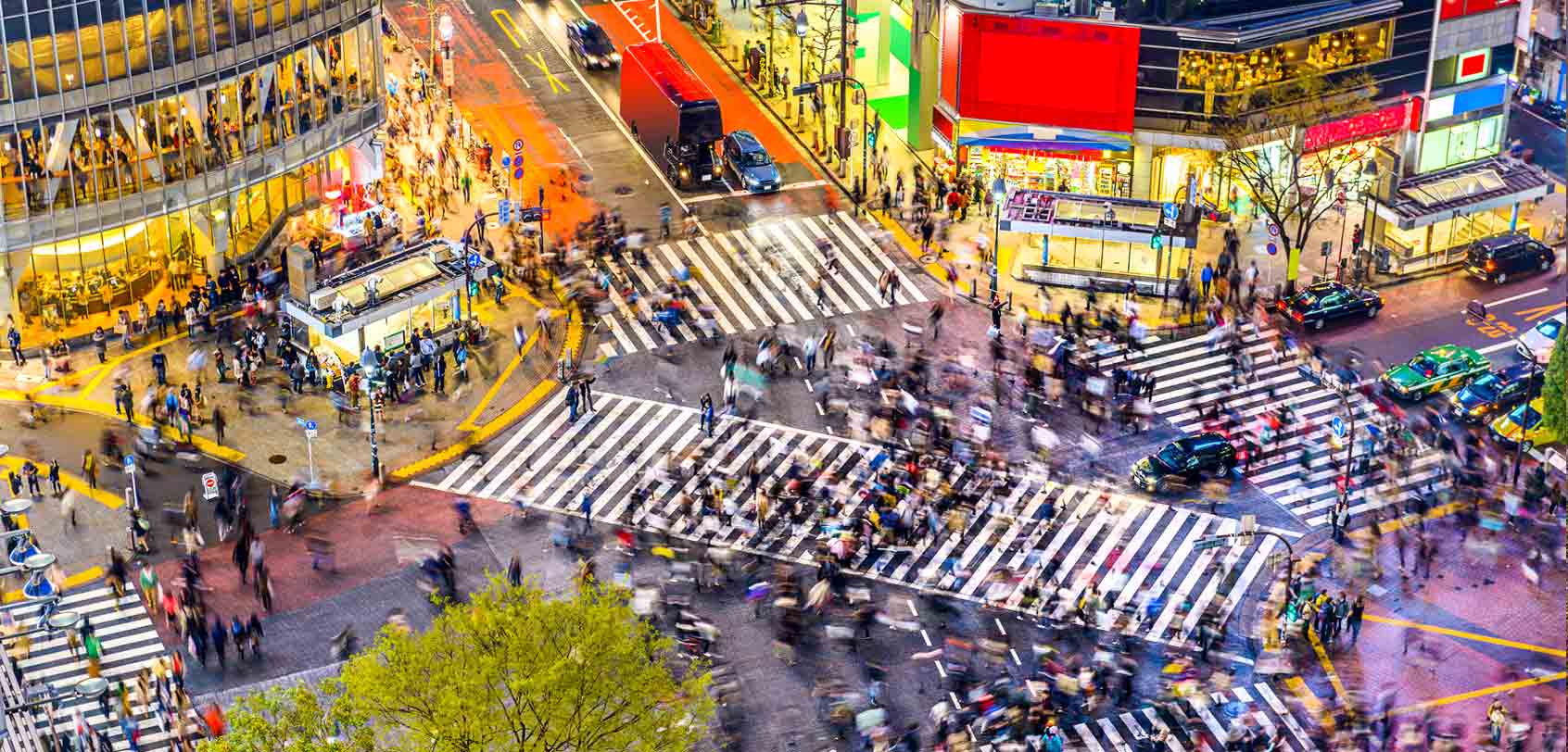
The Tokyo Metropolis is composed of 23 special wards and the city’s top highlights are found in only a few numbers of these wards. For ease of discussion, I will divide Tokyo into two: the west and the east. Below are the west’s top attractions…
SHIBUYA. This is referred to as a major nightlife area but it’s also a major shopping and entertainment venue especially because of its strong youth presence in fashion and culture.
- ★ Shibuya Crossing: Found in front of Hachiko Exit, this is arguably the most prominent landmark of the district and the most filmed spot in the area. If you want to get a good view of it, go to the QFRONT building where a big Starbucks cafe is found. It’s best to come during rush hour to see an impressive sight but be prepared for crowds inside the cafe. Nevertheless, if you want more of a higher bird’s eye view, go to Shibuya Hikarie shopping mall’s Sky Lobby on the 11th Floor.
- ALTERNATIVE : If you want less of the crowd, there’s a bigger statue of Hachiko along with his master, Professor Ueno, at the grounds of UTokyo or the University of Tokyo. .
- Rainbow Karaoke in Modi is incredibly stylish yet cheap, Karaoke Kan is famed for being the location of the movie ( Lost in Translation )’s karaoke scene, or for the more standard chain, Big Echo is a good one.
- Love Hotel Hill: This is where you can find the biggest concentration of love hotels in Tokyo, and though it’s not a typical item on a ‘ things to do in Tokyo ’ list, it can be an amusing thing in itself especially if you’re traveling with your loved one — largely because of how the rooms are delightfully themed. Just be warned though that some love hotels don’t accept same-sex couples or even two foreigners. Nevertheless, you can ‘rest’ in a room for 1-4 hours at around 1,500 yen ($15~) per hour or ‘stay’ in a room overnight for as low as 7,000 yen ($68~). .
- For nightlife: Two of the most brilliant clubs would first be the mammoth super club ageHA with over 4 dance floors, an outdoor pool, and an outdoor dance tent; and second, the laser-filled Womb club with its identifiable giant mirror ball. Better yet, get this Tokyo Nightclub Pass that grants you UNLIMITED entry to the top 7 nightclubs in Tokyo! .
- ★ Don Quijote, Loft, and/or Tokyu Hands: These shops are great to include in your Japan itinerary if you’re looking for cheap souvenirs, novelty items, stationaries, and more!
- Center Gai, Koen Dori, Spain Slope, and/or Shibuya 109: The first 3 are distinct shopping streets in Shibuya, whereas Shibuya 109 is a complex that you don’t want to miss out on if you want to do some serious shopping!
- Shimokitazawa : This nearby district is a great ‘bohemian’ spot if you’re looking for vintage and second-hand items and clothes. .
- Ichiran Ramen: A famous ramen (noodle soup dish) place that gained popularity worldwide because of its solo booth style of dining. Rest assured, the ramen tastes superb here and is worth a try so jot this down on your Japan itinerary!
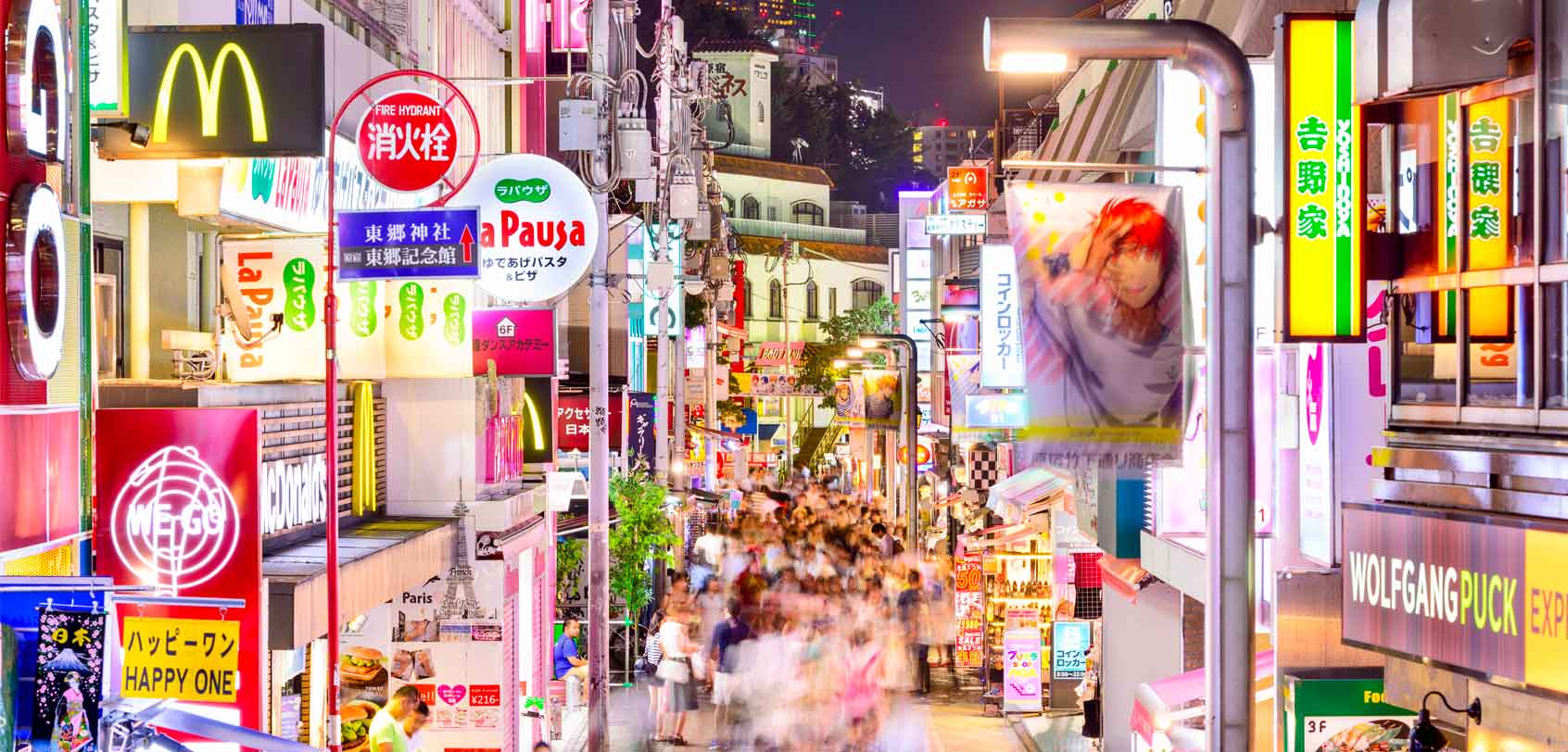
HARAJUKU. Famed for its fashion scene, quirky culture, cosplay shops, and so much more!
- TIP : If you want to witness a traditional Japanese Shinto wedding in which they make a procession to the temple, head here around 10AM and try your luck!
- Yoyogi Park: A typical meeting place for Japanese people from all ‘walks of life’. Since it’s just near the trendy Harajuku, you will normally find crowds of band members, lolitas , cosplayers, and fashionistas in interesting clothing (they’re sometimes concentrated around Jingubashi or the bridge near Meiji Shrine). Taking photos of these people in fancy clothing is perfectly fine, but it’s best if you ask for permission first since not all of them are there to please the crowd — they’re usually just there to hang out or do practices, etc. .
- TIP : Wanna do a guided tour? Take this Harajuku half-day tour that will take you through Takeshita as well as grant you access to some of the district’s top cafes!
- Cat Street: If you want to stray away from Takeshita Dori’s crowd, this is the next best place to be.
- TIP : Drop by Espace Luis Vuitton Tokyo which is found on the top floor of its building to find an amazing art space — not to mention that the bathrooms are really fancy.
- Daiso Harajuku: This is one of Japan’s famous 100-yen variety-store shops that offer affordable housewares, toys, stationery, decorations, bento supplies, gifts, and more!
- Tokyu Plaza Omotesando Harajuku: This is a multi-story shopping center that recently became even more popular because of its kaleidoscope-like entrance that’s made of dozens of tilted mirrors. Don’t miss out as well on its rooftop terrace area on the 6th floor if you want views over Harajuku. .
- Maison de Jullieta: Kawaii (cute) culture is a ‘thing’ among the Japanese and one of those kawaii fashion styles would be the sweet lolita look. In Maison de Jullieta in Harajuku, you can dress up as one — complete with costume, makeup, and hair arrangement at a price of around 10,000 yen ($97~)!
- Kawaii Cafe: In line with Harajuku’s colorful splash of colors and eccentric atmosphere, there exists the Kawaii Monster -themed cafe! With over 5 separately themed areas, the cafe is like a rainbowholic’s paradise where every corner is filled with kawaii decoration and Instagram-worthy scenes.
- ★ Purikura: Purikura runs like a photo booth — but ‘leveled up’ in a Japanese kind of way and it’s widely popular among females. Through these machines, you can take photos of yourself or your friends in a studio-esque booth; after which, you will be digitally enhanced. By that, I mean automatically Photoshopped in a kawaii manner: bigger eyes, whiter skin, and narrower face.
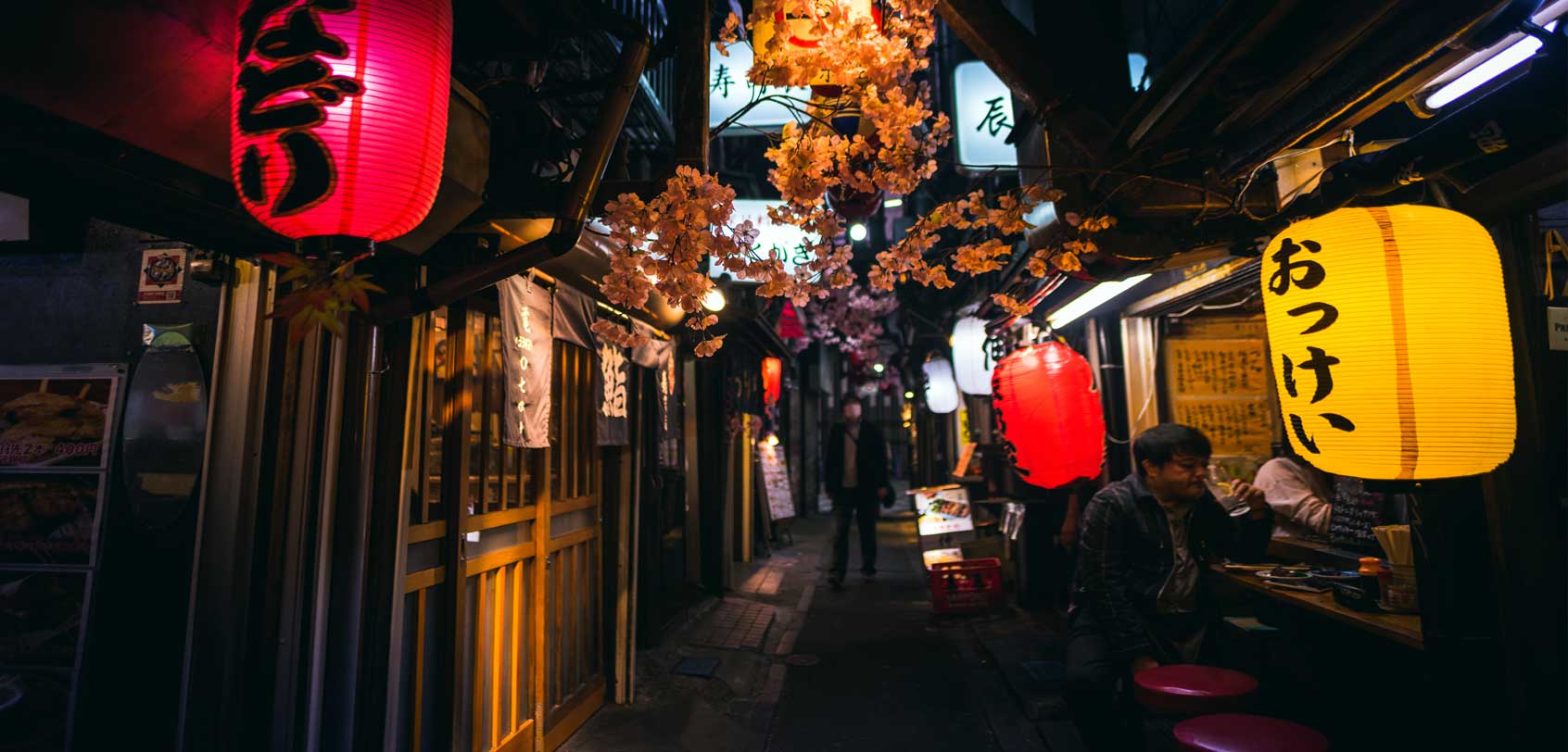
SHINJUKU. As a major city center, Shinjuku has the busiest train station in the world (Shinjuku Station) , it houses the administration center for the Tokyo government, and holds a plethora of amazing things to do in Tokyo!
- Tokyo Metropolitan Government Building: Towering at 243m, this structure has two towers and each of these has an observatory which visitors can visit for FREE in order to get a bird’s eye view of Tokyo. I recommend the southern tower since it shows a better ‘side’ of Tokyo (closes at 5:30PM), whereas the northern tower is best for night shots since it closes later into the night (until 11PM).
- Shinjuku Gyoen: Best visited during sakura and fall season, this place is just a stone’s throw away from Shinjuku station and it is surely one of the city’s largest and most favored parks. Here, you will find three different gardens, a traditional Japanese landscape garden, a French garden, and an English landscape garden.
- Samurai Museum: As a Japanophile , I have also been enchanted by the culture and history of the samurai (or bushi ) — Japan’s notable military warriors. Adults can enter for a fee of 1,800 yen ($18~) in order to see the impressive exhibits; but the highlight of this place is probably the experiences that you can try: photoshoot with basic samurai gear (500 yen $5), sword battle performance with an actor (free), samurai calligraphy lesson (500 yen or $5~), and professional photoshoot with full samurai gear (starts at 32,000 yen or $320~). .
- TIP : Book here for a guided tour so you don’t miss out on anything!
- TIP : For your Japan itinerary, book here for a guided tour so you don’t miss out on anything!
- Kabukicho: This is the entertainment and red-light district in Shinjuku which is sometimes called the “Sleepless Town”. Unlike Amsterdam which features prostitutes on the windows of their buildings, Kabukicho has a more subdued collection as it only includes hostess clubs, love hotels, massage parlors, and more. Unless you want to avail these kinds of services, as a regular tourist, I just find this as an interesting place to see in Tokyo. Rest assured, I felt entirely safe walking around here since it didn’t feel seedy. Truth be told, one particular thing about Kabukicho that I best liked to see or observe was the pachinko parlors. (Pachinko is an insanely popular game in Japan that somehow resembles pinball and since gambling is illegal there, this is the only way that locals can ‘gamble’.) .
- READ : For my experience !
- Godzilla: Japan’s famous giant monster and pop culture icon, Godzilla , can be seen here in Shinjuku atop Toho Cinemas. It’s a nice spectacle because he looks like he’s taking a peak from the building above — seconds away from wreaking utter havoc .
- Animal Cafes: Plenty of people would recommend that you go to Tokyo’s well-liked animal cafés such as those of a cat café, owl café, rabbit café, goat café, etc. (There are lots of them found around Shinjuku such as Cat Cafe Calico, etc. ). I don’t like them though because I’m uncomfortable with the idea of keeping multiple animals in such a small space with strangers that they’re not that accustomed to — but, I leave it up to you to decide what you would do.
◘◘ Day #2 — East of Tokyo
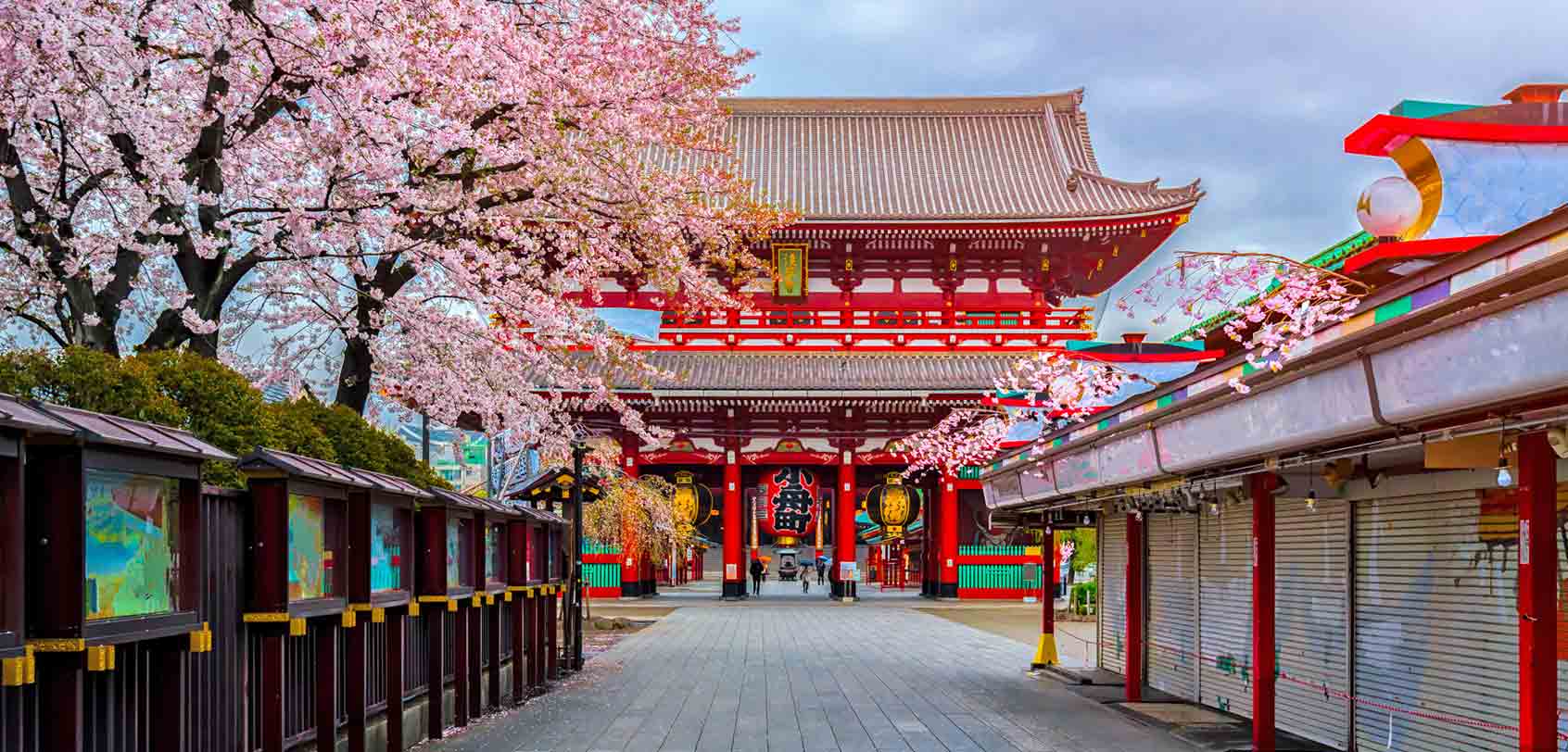
Photo by: Shutterstock
ASAKUSA. This is said to be the center of Tokyo’s shitamachi (“low city”) — which means that it’s an ‘olden’ district where you can get a feel of how Tokyo was in the past decades.
- ★ Senso-ji Temple and Asakusa Shrine: Take note that a shrine is dedicated to the Shinto faith, whereas a temple is dedicated to Buddhism. These two places are the main highlight in Asakusa with Senso-ji being the oldest temple in Tokyo. There is also an impressive “Thunder Gate” called Kaminarimon (which is a symbol of Asakusa and Tokyo) in front of the temple.
- Sumida River and Park: For a leisurely stroll, go over to Sumida River and lounge by Sumida Park which stretches on both sides of this body of water. Like what you’d expect, there are cherry blossoms here that come alive in spring, and then during July on its last Saturday, this becomes a great spot for viewing the Sumida River Firework. (If you see a golden building with an odd golden structure on top that looks like a teardrop, that’s the Asahi Beer Tower with its ‘Asahi Flame’.) .
- Read my kimono rental guide here to learn more about the process.
- Samurai Armor rental: You can take a step further and rent to wear Japan’s famous traditional warrior’s (samurai’s) armor! If you book this activity online , you can even have a professional photographer take photos of you.
- Rickshaw ride: To complete your kimono look, I recommend that you rent a traditional Japanese rickshaw which will take you around key spots in Asakusa.
- To be frank with you, this is a very long ceremony where you will sit motionless for hours as you follow a set of guidelines… but it is a striking example of Japan’s amazing culture that is exceptional for immersing one’s self with. For a good place to try this in, go here .
- Hanayashiki: If you’re up for it, this is said to be Japan’s oldest amusement park (built in 1853). .
- ★ Nakamise shopping street: Stretching about 250 meters from Kaminarimon to the main grounds of Sensoji Temple is this picturesque shopping street with over 50 shops that offer local specialties and the usual array of tourist souvenirs.
- Shin-Nakamise: Also called as “New Nakamise”, this runs perpendicular to the Nakamise Shopping Street and is lined with various shops and restaurants.
- Asakusa Kagetsudo: This is a famous melon-pan store that has been running since 1945. Melon-pan is basically a sweet baked bread with an outer layer that looks like a melon — so it’s just named that because of its appearance and not because it tastes like a melon. When you buy from this store, it is best to eat it when warm.
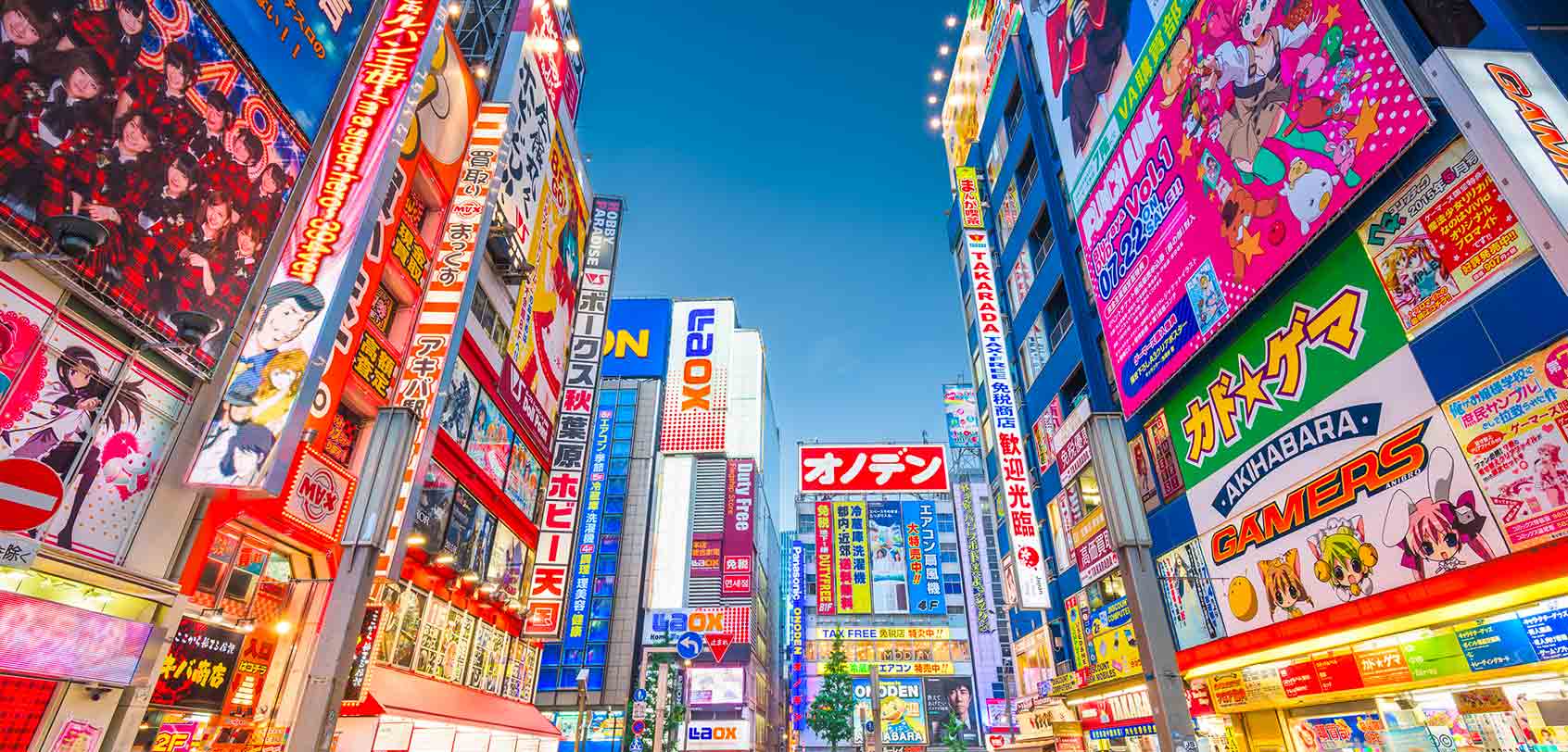
AKIHABARA. Dubbed as the otaku* cultural center and tech shopping district of Japan, walking through Akihabara’s main street called Chuo-dori will already give you an idea of what this district is all about. *Japanese term for people who have obsessive interests commonly towards anime and manga. A synonymous word in English would be ‘geeks’.
You see, Japan may have an amazing olden culture, BUT it has also developed an equally amazing modern culture over the recent years, and it is in Akihabara that you can get a glimpse of this somewhat wacky ‘evolution’.
- Maid cafe: A lot of people in Tokyo love to cosplay — a form of roleplaying where people wear costumes to represent a character (often found in animes and mangas). One of the good ol’ favorites of the Japanese when it comes to cosplaying or ‘dressing up’ is waitresses dressed in those frilly Victorian maid costumes. In line with their ‘character’, they will even act as if they’re servants and then treat others as their masters. Now apply that idea to a café, splash it with small games, a cutesy demeanor, brief performances, and picture-taking with customers and that’s where you get the famed maid cafes of Japan. A great place to try in Akihabara would be @Home Cafe.
- ★ Arcades: We have tons of video game arcades in the Philippines — HOWEVER, they’re not as insanely amazing, bright, exciting, and numerous as what Tokyo has! One of the most known gaming arcades in Tokyo would be Taito Station . (You could also do purikura inside these arcades).
- ★ Go Kart: Come live on the edge and explore downtown Tokyo in a cool Go Kart while you’re dressed in popular cosplay costumes! With this fun driving tour , you can opt to do a one-hour experience or a whole day affair. .
- Yodabashi: If you have time to visit only 1 tech gadget store in the district, then this 9-story building is your best bet! After all, it is proven that their items are usually cheaper than in Europe or even Asia.
- Mandarake or Tokyo Anime Center: Mandarake , a gigantic 8-floor complex that is full of merchandise related to anime and manga, is the best go-to space if you’re a hardcore otaku or at least a knowledgeable one at that; whereas I believe that a visit to the Tokyo Anime Center is best done first by people who have no idea of the otaku scene in order to gain a better understanding of it.
SUMIDA. The most noteworthy attraction that you should visit in this ward would have to be the following:
- Tokyo Skytree: At 634m, this is the tallest tower in the world. It is primarily a television and radio broadcast site for the Kanto Region; but for travelers, you can visit the large shopping complex, aquarium, and planetarium that are located at its base. And of course, for sky-high views of the city, Tokyo Skytree has two observation decks and you can purchase your tickets here .
- Try chanko nabe in any of the restaurants in the neighborhood. This is basically a hot pot dish that is a staple food of sumo wrestlers.
- TIP : To reserve your sumo tickets for Japan’s Tokyo Grand Sumo Tournament, go to this link . For the months wherein tournaments are not held, you can get a close-up look at the sumo wrestlers’ morning fight practices via this tour .
◘◘ Day #3 — Mt. Fuji
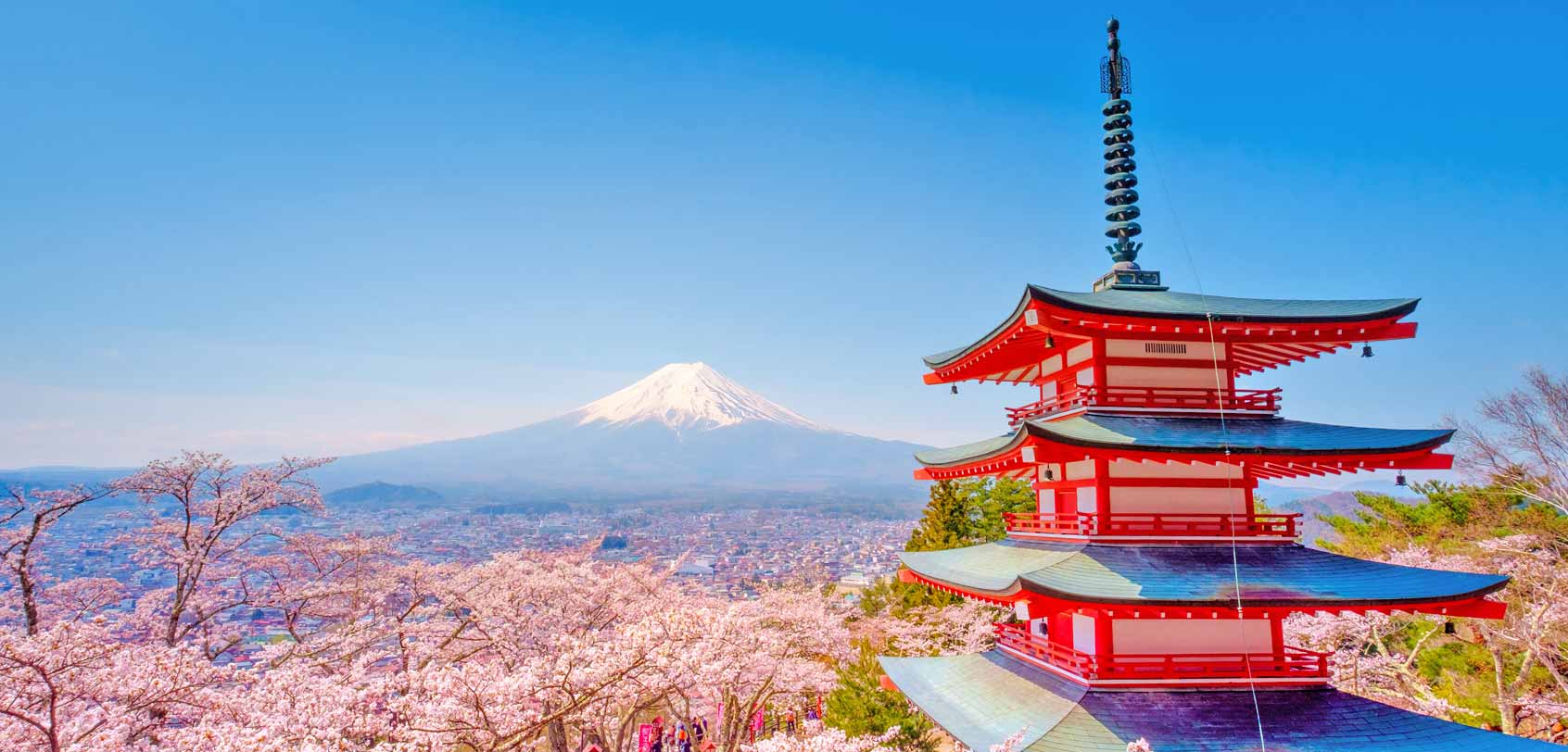
It’s time to check out Mt. Fuji or ‘Fuji-san’ (it’s how the locals commonly call it).
As the country’s tallest peak, it has been considered one of the most iconic sights in Japan so it would be a good idea to dedicate this day to it. There are several ways for seeing this active volcano in all its glory (including riding a Tokaido shinkansen from Tokyo to Osaka if you sit on the right, 40min before Shin-Fuji Station, or going to Fuji Subaru Line 5th Station) but below are the best locations for viewing it.
- Some people do one of the places below as a day trip, while others as an overnight trip to also experience staying in a ryokan (traditional Japanese inn). It’s totally up to you, but naturally, if you’re short on time, making it a day trip would be enough.
- Clouds often block the view of Mount Fuji so you often have to consider yourself lucky if you get a clear view of it. It is said that visibility tends to be better during the colder seasons of the year than in summer. Otherwise, it’s great in the early morning or late evening hours compared to the middle of the day.
- To save up on transportation costs, get a Hakone Free Pass to gain unlimited travel on eight transportation options including the Hakone Sightseeing Cruise (Pirate Ship), Hakone Tozan Train, Hakone Tozan Bus, Hakone Tozan Cable Car, and Hakone Ropeway.
- For a hassle-free experience, you can take a Hakone day tour that already includes a stop at Mt. Fuji and some other interesting activities like a lake cruise and more. Or, you can also do this other Hakone tour . .
- For a hassle-free experience, you can take a Mt Fuji day tour to this lake region with the inclusion of Kachi Kachi Ropeway, fruit picking, and fruit picking.
- A different option is to rather go to Chureito Pagoda (pictured above) which is still part of Fuji Five Lakes but not found within Lake Kawaguchiko. This spot is a favorite among photographers, especially during spring or autumn and it’s easy to see why! (This tour includes this pagoda as a stop) .
For other options and details, you can read my Mt. Fuji tour post!
- For a hassle-free experience, you can do a Kamakura + Enoshima day tour. .
- Enoshima: (1hr from Tokyo) This is a touristic island that offers a variety of attractions (Enoshima Shrine), beaches, parks, an observation tower, and caves (Iwaya Caves). If I say so myself, doing a Kamakura + Enoshima day tour would be ideal if you want to check out both of these towns. .
- Fuji Shibazakura Festival: (2hrs from Tokyo) This is a famous time-limited event that is usually held at Fuji Motosuko Resort from the middle of April to late May. If you have the time, I recommend doing a sakura tour of this festival as it features over 80,000 blooming shibazakura (pink, red, and white mountain phlox flowers) over 6 acres of sloping hills. Pair this off with a great view of Mt. Fuji and it instantly becomes an Instagrammable spot!
◘◘ Day #4 — Other Day Trips Outside Tokyo
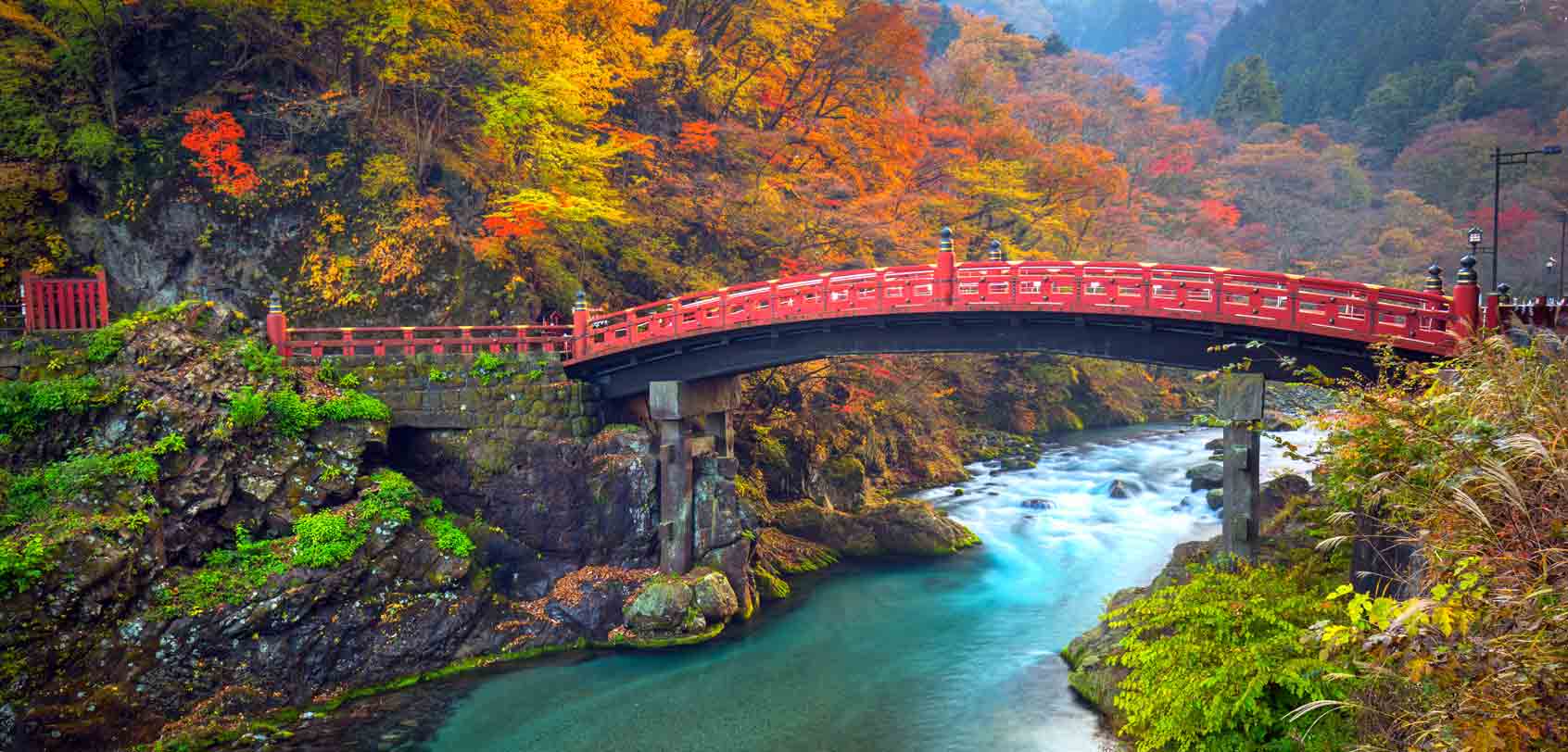
Below are other interesting day trips that you must see near Tokyo!
- TIP: For a hassle-free experience, you can do a Nikko day tour that includes several stopovers. .
- TIP: You can avail of a ‘ Yokohama and Kamakura Enjoy Pass ‘ to enjoy the major sightseeing attractions in these cities. .
- Kusatsu: (3hrs from Tokyo) This is a sound trip to make if you want to visit one of Japan’s most famous hot spring resorts. In fact, Kusatsu Onsen is blessed with large volumes of high-quality spring water which makes it popular among locals and tourists alike. You will love the atmosphere here as you find almost everyone wearing yukata/kimono on the streets. Otherwise, when winter comes, the town becomes a great ski resort to visit. .
- Chichibu: (2hrs from Tokyo) This city is a great place to escape if you want to get away from Tokyo’s bustle. After all, its forested mountains provide impressive nature views and hiking opportunities. One of the most sought-after events here though is its Chichibu Night Festival in December and its Hitsujiyama Park in Spring (for its beautiful pink moss park).
◘◘ Day #5 — …or More! (Tokyo Extra Days)

Naturally, there’s more to Tokyo than the sights I’ve mentioned on days #1 and #2 above. So in order to fill up your Japan itinerary with other activities for your extra days in the capital, below are some considerations that you can make.
WEST OF TOKYO.
- To enjoy the picturesque rooftop views on Mori Tower’s 52nd floor, just book an Observation Deck ticket online .
- Below Mori Tower, you will find a giant spider sculpture called Maman which means ‘mother’ in French. This is made by the artist Louise Bourgeois .
- Tokyo Midtown is yet another building that you can go into if you’re up for more shopping and entertainment.
- During Christmas, head to the area in Mori Tower that faces Keyakizaka Street in Roppongi Hills to see a great view of Tokyo Tower being illuminated by the street lights. Whereas if you go to Tokyo Midtown, you will find the Starlight Garden which has over 280,000 lights that are magically spread out on the grounds!
- ★ Tokyo Tower: At a height of 333 meters, this is like a replica of the famous Eiffel Tower. Made after Japan’s post-war rebirth, this used to be the country’s tallest tower — until Tokyo Skytree was made in 2012. Despite this fact, the tower’s prime location is still a splendid place to see a panoramic view of the city. There are 2 observatories here: the main one at 150m high and the special one at 250m high. The entrance is at 900 yen ($9~) for the main observation deck and 1,600 ($16~) yen for both decks. To book your tickets, go here .
- Nightlife: Clubs and bars in Roppongi can be a dizzying encounter for a first-timer; so it’s actually preferable if you visit this with a local. Otherwise, just a bit of advice: avoid the men (generally African men) who would try to push you into going to their clubs! More often than not, those are seedy ones, and later on, they might even overcharge you. For the best clubs to go to, I suggest Jumanji55 , V2 Tokyo , or Club Brand Tokyo which all have a good mix of locals and foreigners. Better yet, get this Tokyo Nightclub Pass that grants you UNLIMITED entry to the top 7 nightclubs in Tokyo! .
- Hie Shrine: You don’t need to travel all the way to Kyoto to witness a Shinto shrine with multiple iconic red torii (traditional Japanese gate) because you can find this right in the heart of Tokyo! (Otherwise, there’s also a similar one called Nezu Shrine).
EAST OF TOKYO.
- Imperial Palace: This is the main residence of the Emperor of Japan and it’s actually a massive park surrounded by moats. It contains buildings including the palace, private residences of the Imperial Family, offices, museums, and more.
- ★ Chidorigafuchi: Located just at the northwest section of the Imperial Palace is this moat section. This area is highly recommended during sakura season as it is one of the best spots for hanami (cherry blossom viewing). To add: they regularly light up the trees at night during that period and then you can even rent boats there!
- Tokyo Central Railway Station: This is the busiest railway station in Japan in terms of the number of trains per day and it’s quite a sight to see! For starters, you’ll instantly find this building because of its red brick appearance — a look that survived from when it was first opened in 1914. .
- DiverCity Tokyo Plaza: This is a dining, entertainment, and shopping complex which also features attractions related to the famous Gundam anime series. Truth be told, it also has a life-size Gundam statue in front of its building.
- Fuji TV Area: This is called such because of how the Fuji TV Building (one of Japan’s biggest TV stations) towers above everything else. As a visitor, you could definitely go into Fuji TV’s observatory deck that’s located in the circular portion of the establishment. Other things to see around here would be the shopping mall of Decks Tokyo Beach and the scenic Rainbow Bridge (which looks dashing at night, and where you can also find a replica of the Statue of Liberty.)
- TeamLab: Yet another Instagrammable attraction, this interactive museum is well-known for digital and light art, and to book your tickets, just go here .
- The Soho: This is an Instagram-worthy office building that’s famed for its color-blocked hallways.
- ★ Oedo Onsen Monogatari: If you can’t afford to go to a hot springs resort town, this is the next best thing for your Japan itinerary! This is basically a hot spring theme park that emulates the atmosphere of the Edo Period. You can enjoy various types of indoor and outdoor baths, restaurants, massages, games, and other entertainment while wearing a yukata (traditional Japanese wear). To reserve tickets for this, go here .
- ★ Tsukiji Market: Fish is a big business in Japan and the Tsukiji Market is a marvelous point for observing this lively industry as well as tasting its fresh produce. To date, this market has been divided into two, one of which is still found near Tsukiji Shijo Station and the other near Odaiba. If you want a guided day tour here, book an experience here . .
- TIP: Make the most of this area’s local flavors and drinking spots by doing a ‘ Tokyo After 5 ‘ tour!
- If you want the best ‘festive’ experience on this street, I suggest walking through here on weekends from 12PM to 5PM (until 6PM from April to September) because it is customarily closed to automobile traffic — an event known as ‘Pedestrians’ Paradise’.
- Depachika: This is a combination of the words depato (department store) and chika (basement). In Japan, most of the big department stores such as that of Mitsukoshi have their basement floor made into some sort of food market — but actually, if I have to describe it myself, I will call it a ‘food theme park’ because you can get to have a fun yet quick introduction into the VAST variety of Japanese food there — including square watermelons and insanely priced strawberries! Anyhow, the stalls are very generous with giving away samples too; so if you’re on a budget, you really don’t have to buy something (though it will be respectful to do so, naturally).
OTHERS (NEAR TOKYO)
- To book discounted tickets, reserve your spot here. .
- To book discounted tickets, reserve your spot here.
Kyoto Itinerary & Side Trips
Kyoto used to be the capital of Japan — nevertheless, it has retained that former glory with its great historic value alongside countless temples, shrines, gardens, imperial palaces, and traditional wooden houses among many others.
If I may add, this is also the city that is well known for its formal traditions most especially that of the geisha (or geiko ) who are Japan’s famed professional female entertainers. For these reasons and more, this is important to include in your Japan itinerary.
Looking for top sakura locations in Kyoto?
Check out this ultimate guide to Kyoto cherry blossom spots — from lesser-known locations to the most popular ones!
RELATED READ: Best Cherry Blossom Spots in Kyoto Best Hotels in Kyoto
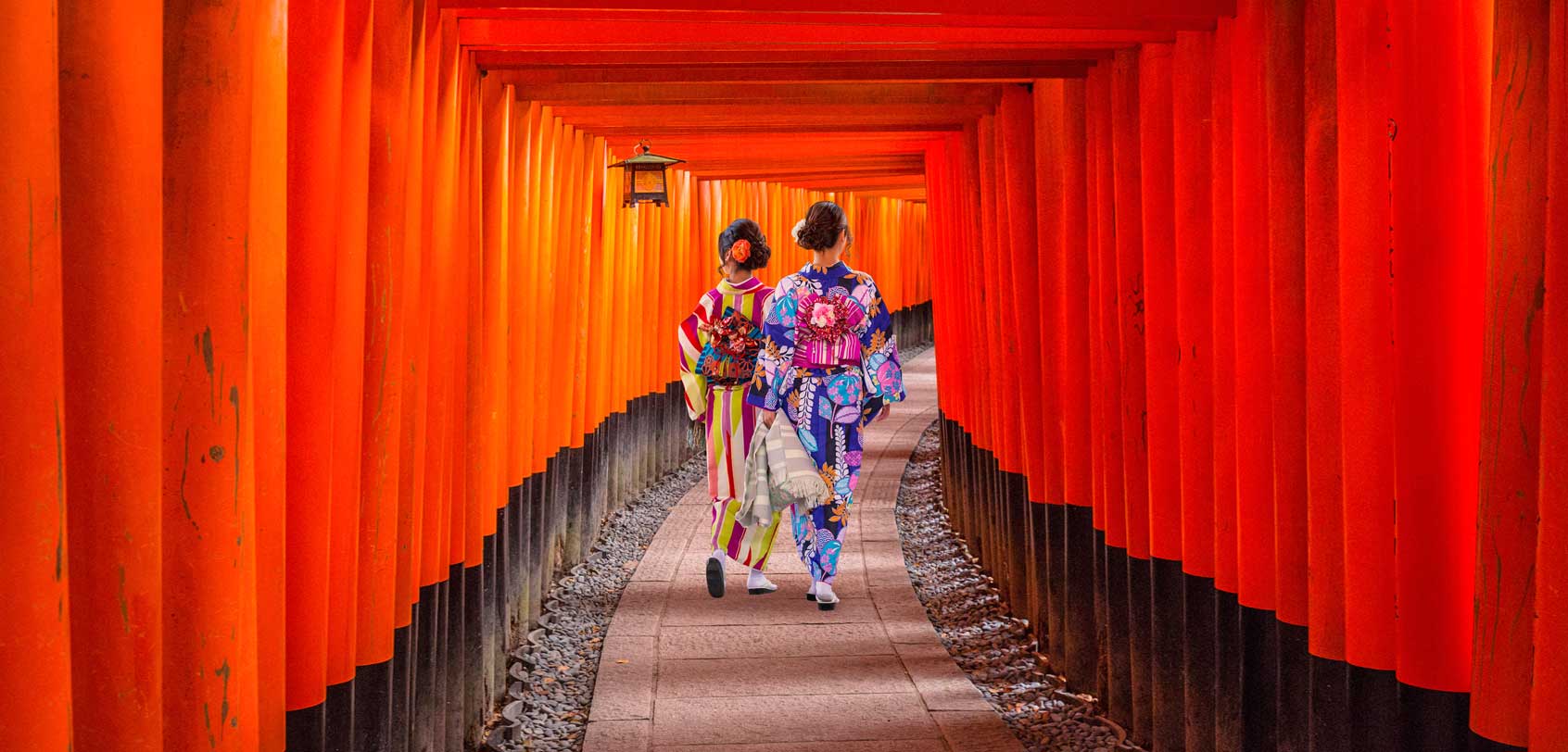
Take note that it takes around 3 hours by bullet train (shinkansen) to get to Kyoto from Tokyo. With that said, the ‘things to do’ for this day of your Japan itinerary should be fewer, but depending on your arrival time, it’s still possible to do a lot. Go and pick from my suggestions below…
- Nijo Castle: Also called Nijojo , this is the former residence of the first shogun (military dictator) in the Edo Period during his stays in Kyoto. Today, this castle is divided into 3 areas: the Honmaru (main circle of defense), the Ninomaru (secondary circle of defense), and the gardens. What’s great about the castle grounds too is that there are over 400 cherry blossom trees so it is quite a sight during the spring season. (Admission is 600 yen).
- Nishiki Market: Known as “Kyoto’s Kitchen”, this is a long yet narrow shopping street that features over 100 lively shops and restaurants. This is a great spot to visit for your Japan itinerary if you want to buy any fresh produce or Kyoto specialties. As a market with a long history, this is also a great place to mingle with the locals.
- Kyoto Imperial Palace: This great expanse used to be the residence of Japan’s Imperial Family until 1868, when the capital was moved to Tokyo. Given that this is within the Kyoto Imperial Park, it makes for a leisurely stroll to go through the space which is full of ponds, gardens, and weeping cherry trees. (Admission is FREE).
- Manga Museum: If you’re fascinated by Japan’s manga (comics) culture and history, this could be a quaint stopover for your Japan itinerary. Sometimes there are even artists who set up exhibits and offer sketches or portrait drawings of the visitors. (Admission is 800 yen).
- For a hassle-free experience, you can do a guided Fushimi-inari tour that includes a Sagano Train ride and a visit to Arashiyama.
- Pontocho: This is a dining area that’s packed with restaurants offering a wide range of choices from local to foreign cuisines. Take note though that most establishments open from around 5PM to 11PM only. If you come in the warmer seasons, most of the places build temporary platforms over the river for open-air dining (called kawayuka ).
TIP : If you want a hassle-free experience for your Japan itinerary, you can take a guided Kyoto morning tour or afternoon tour to key places in the city.
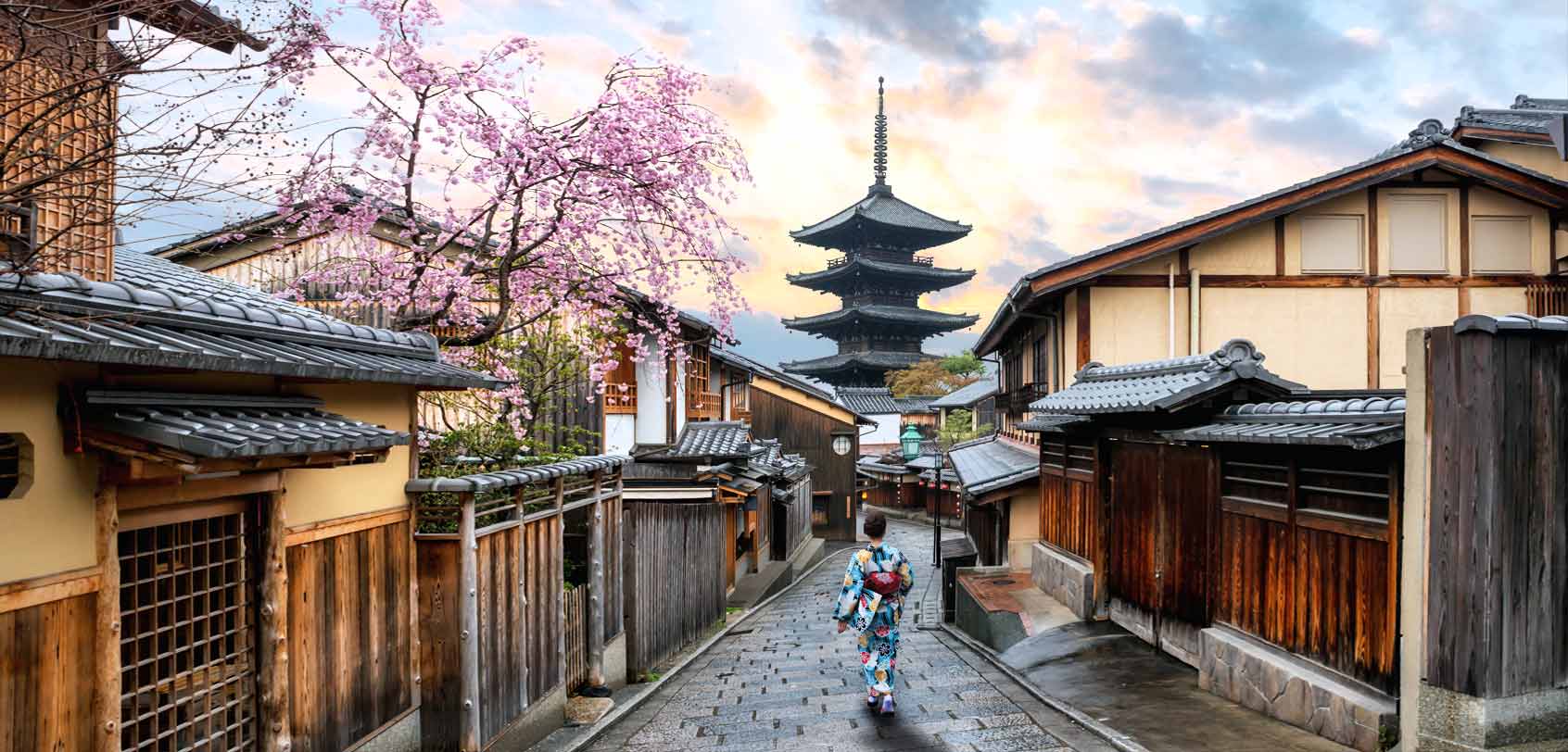
Time to make full use of this day in exploring Kyoto’s other important sights!
In my opinion, though it is possible to do all of the sights below in one day, it’s still a good idea to pay heed to the time especially if you plan to do a Kyoto kimono rental too because it will lessen your hours of exploration (given that putting on a kimono takes some time).
- Kiyomizudera: This is a famous temple in Kyoto that’s listed under the UNESCO World Heritage and it is best known for its wooden stage that stretches out to the hillside as it offers great views over the cherry and maple trees below it — so imagine how the site will be like during spring or autumn! (Admission is 400 yen).
- Other streets to check out in the district are Sannenzaka / Sanneizaka and Ninenzaka.
- ★ Kinkaku-ji: Lauded as the ‘Golden Pavilion’, this is — indeed — a structure that’s mostly covered in gold leaf. This Zen temple actually used to be the retirement villa of a shogun. Today, you would absolutely enjoy its impressive architecture as it overlooks a picturesque pond. Before leaving, don’t forget to go through the gardens and check out Sekkatei Teahouse to enjoy some matcha tea and sweets. (Admission is 400 yen).
- Ginkakuji: On the other hand, though this is referred to as the ‘Silver Pavilion’, it’s not really in silver — it never was. Many believed that it garnered its name after the building was built to contrast the Golden Pavilion. Either way, this remains to be a popular spot for many.
- Philosopher’s Path: This is a pleasant stone path (near Ginkakuji ) that is a must to visit during cherry blossom season . Its name was derived from Nishida Kitaro, one of Japan’s most famous philosophers, who used to practice meditation while walking this route.
- Hanami-koji Street and Shirakawa Area: The most popular places within Gion, so don’t forget to wander around here.
- ★ Gion Corner: Ideally, one of the ultimate experiences in Kyoto is to dine with a maiko or geiko, but since this is often expensive and exclusive, the next best thing you can do to ensure that you witness a real maiko or geisha is to visit Gion Corner. Aimed at foreign visitors, this place offers cultural shows that introduce traditional Japanese arts such as the tea ceremony, ikebana, bunraku, Kyogen comic plays, and maiko dances.
- Shijo Avenue: Bisecting Gion district is a popular shopping area that sells local souvenirs and gifts.
- Gion Matsuri: This is the festival of Yasaka Shrine and it is said to be the most famous festival in Japan! Therefore, if you happen to be in Kyoto in the month of July, you’re in for a treat because they celebrate during the whole month (with the highlight being July 17 as they do a grand procession of floats called Yamaboko Junko).
TIP : Wanna join a guided tour to the geisha districts for your Japan itinerary? Click here !
Kimono rental: Much like Tokyo, Kyoto has a lot of kimono rental shops too. If you only have the budget to do one kimono experience, I highly recommend doing it in the unique atmosphere of Kyoto than in Tokyo’s Asakusa! Another option is to do an oiran ( courtesan ) rental or photoshoot at Studio Esperanto .
◘◘ Day #8 — …or More!
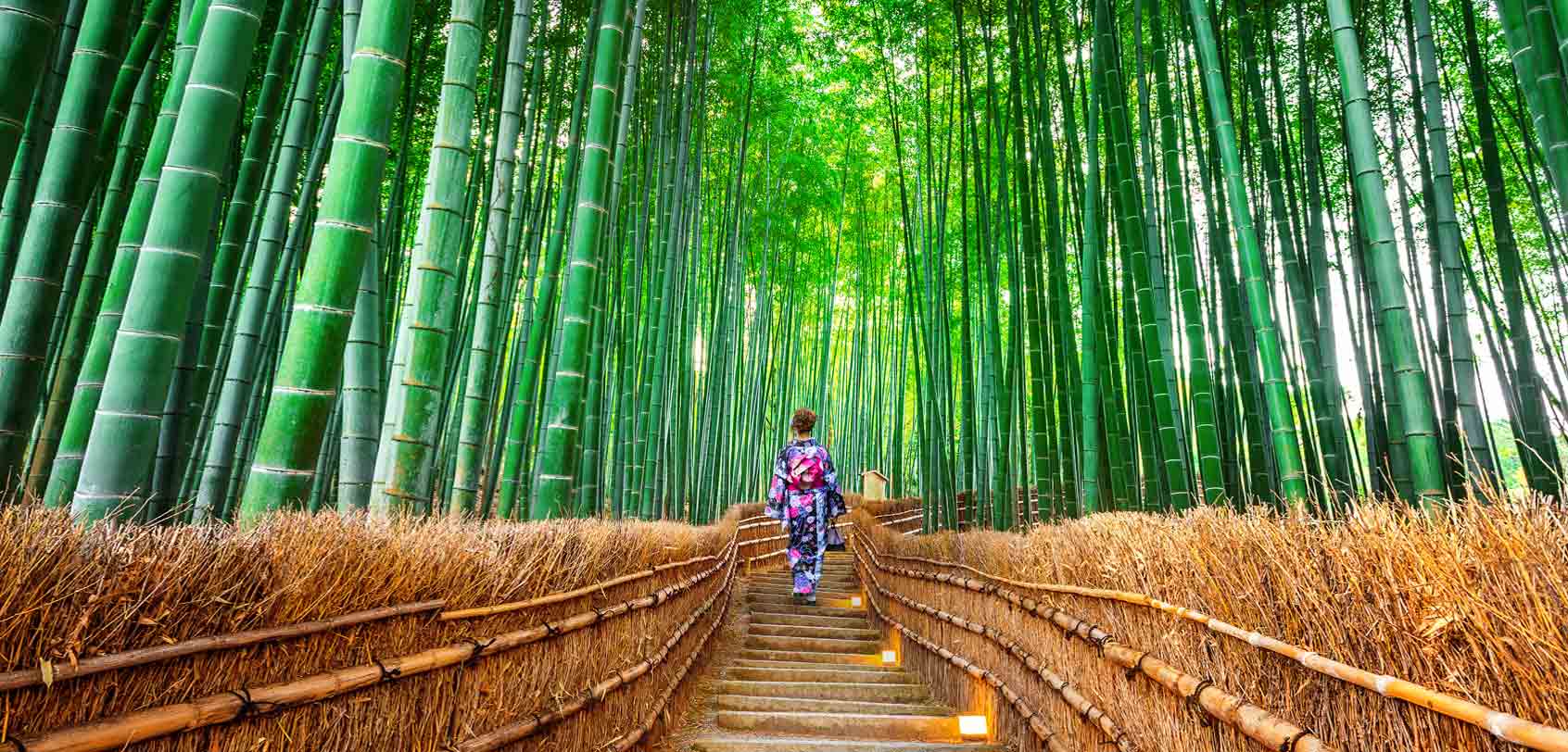
Arashiyama is particularly popular during the spring and autumn season — nevertheless, it’s a year-round destination due not only to its close proximity to Kyoto but also to its natural setting! In order to make the most of your Japan itinerary, don’t forget to check out the following Arashiyama highlights…
- Bamboo Groves: I’m sure you’ve seen photos of this place and it is famous for a reason: it really makes for a nice scenic walk or bicycle ride! If you happen to have the budget to rent a kimono in this area as well, then it is a must to take photos on this path. To avoid the crowd, I recommend coming in the early morning.
- Togetsukyo Bridge: Translated to ‘Moon Crossing Bridge’, this is an iconic landmark within Arashiyama due to how it is backdropped by the forested mountains. There is even a park by the river which is speckled with cherry trees.
- Monkey Park Iwatayama: The entrance to this park is found south of the Togetsukyo Bridge. Be wary that it’s a bit of an uphill climb — but which only spans for about 10 minutes. In this place, you will love the fact that there are over a hundred monkeys roaming freely in the open area. I particularly loved my experience here as I also fed the monkeys from a designated area. To add, this is also a great vantage point for panoramic views over Arashiyama. (Admission is 550 yen).
The center of the district is quite compact so I suggest taking your time strolling around. Other places of interest that you can check are Tenryuji Temple and Saga-Toriimoto Preserved Street. (Want a guided Arashiyama tour packaged together with Nara for your Japan itinerary? Check out this tour . Otherwise, you can also just take a half-day tour that will only focus on the top sights within Arashiyama.)
Or, you can also do this other Arashiyama tour from Kyoto with a Nara stopover for your Japan itinerary.
If you still have some more time, there is an option of doing the Sagano Scenic Railway which is a sightseeing activity on an old-fashioned train. Most people usually take a guided tour for this which is partnered together with a tour around Arashiyama. If not, you can just simply buy a one-way ticket .
◘◘ Extra or Substitute Activities in Kyoto

Got some more time for your Japan itinerary? Check out these other places…
- ★ Daigoji Temple: A designated UNESCO World Heritage Site that is hugely popular especially during autumn or springtime due to its picturesque surroundings. Sure enough, with its beautiful grounds, landscaped gardens, hiking trails, and so much more, it instantly makes for a worthy destination for your Japan itinerary.
- Toji Temple: This is yet another one of Kyoto’s many UNESCO World Heritage Sites and what’s notable about this temple is its 5-storied pagoda which is said to be the tallest pagoda in Japan.
- Shojuin Temple: This has risen to popularity among young females in Japan primarily because of its Instagrammable heart-shaped window called an ‘ inome ‘ window in its guest hall. What’s more, the temple’s ceiling has beautiful pieces of splendid patterns. (Admission of 400 yen).
Osaka Itinerary (including Nara)
Osaka has the 2nd largest metropolitan area after Tokyo and as a part of the Kansai region, it is best known not only for its grand shogunate castle but also for its nightlife and street food. Truth be told, this is a quintessential stop for your Japan itinerary!
RELATED READ: Best Cherry Blossom Spots in Osaka Best Hotels in Osaka
◘◘ Day #9 (Nara)
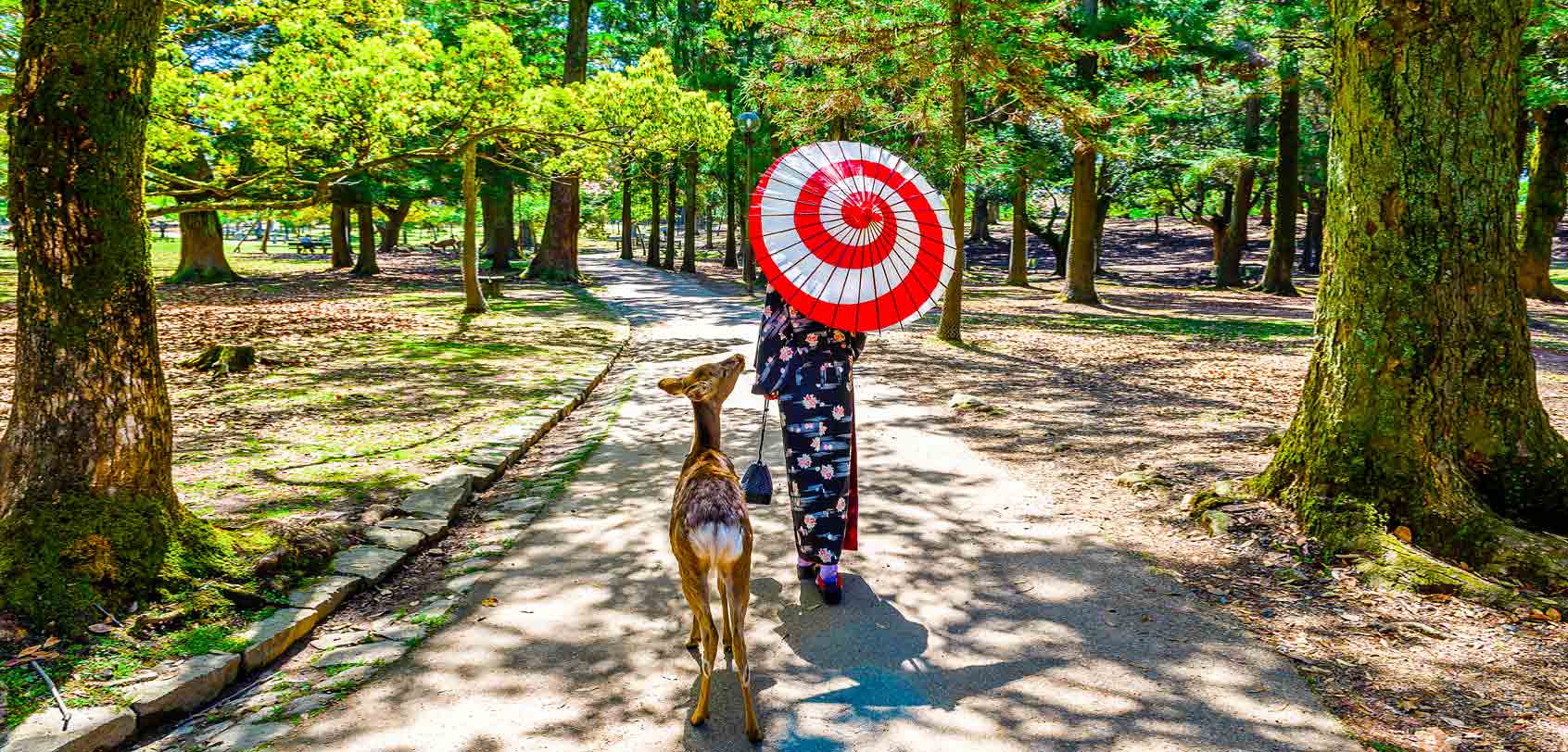
For your Japan itinerary, take note that it only takes about 1 hour by train to get to Osaka from Kyoto. After you check in to your Osaka accommodation , venture out on a day trip to the nearby district of Nara (which only takes less than an hour). If you’re not up for that, you can interchange this with day #10.
Nara is the first permanent capital of Japan, after which it was moved to Nagaoka, later to Kyoto, and then to Tokyo. Today, this district is famous for its historic treasures and adorable deer park.
- TIP : Try bowing down to the deers and oftentimes, you will find that they bow back! It is said that back in the olden times, the locals bowed down to them as they were (like I said) regarded as messengers of God. For generations, they have retained this Japanese custom especially when they expect some food.
- ★ Todaiji Temple: Found adjacent to Nara Park, you’ll first enter this temple’s towering Nandaimon Gate with fierce-looking statues that represent the Nio Guardian Kings. This is followed by the main hall, the Daibutsuden (Big Buddha Hall) which is the world’s largest wooden building housing one of japan’s largest bronze statues of Buddha.
- Horyuji Temple: This is one of the world’s oldest surviving wooden structures and a designated UNESCO World Heritage.
TIP : It’s possible to take a guided tour to Nara from Osaka (with a stop to Arashiyama included in it too). Alternatively, if you want to focus on this city only for your Japan itinerary, you can also just take a focused Nara tour .
If there’s still time, head on over to the nearby Mount Yoshino — even more so if you’re in Japan during its sakura season. Besides, this is regarded as the country’s most famous cherry blossom spot given the 30,000 cherry trees found on its slopes! Truth be told, Mount Yoshino together with the nearby Mount Koya and Kumano have been designated as a cultural UNESCO World Heritage Site since 20014.
Wanna stay a night or more? Check out these top best hotels in Nara grouped from budget to luxury places to stay.
◘◘ Day #10+ (Osaka)
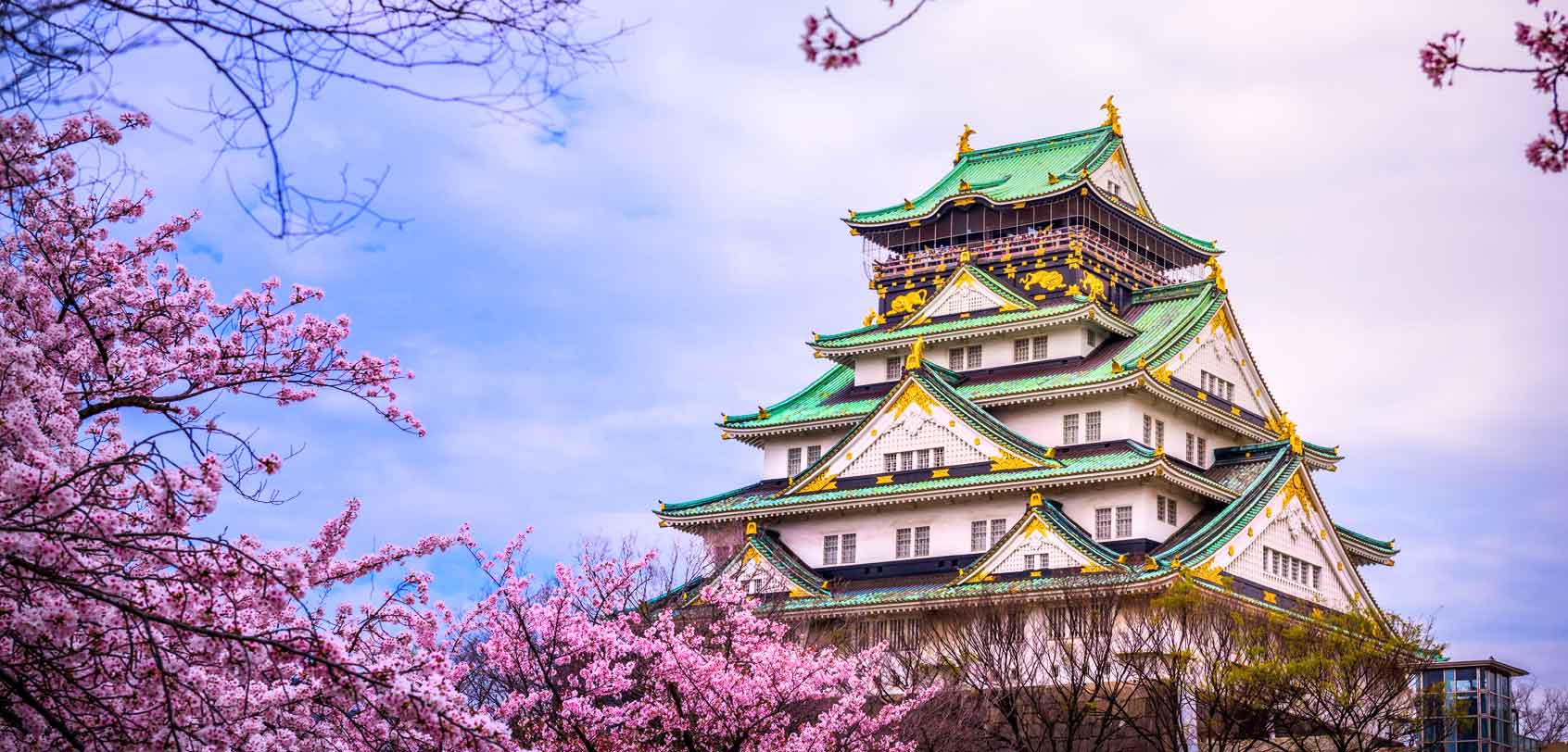
For this part of your Japan itinerary, t’s time to explore Osaka’s top wonders, namely…
- Beside it is the Nishinomaru Garden with over 600 cherry trees with an admission of 200 yen.
- TIP : Don’t miss out on the cool photo opportunities on the long escalator that leads to this observatory! In the basement of the building, you’ll also find a restaurant floor that emulates the early Showa Period of Japan.
- If you see a long line, don’t hesitate to line up too because most of the time it means that it’s a pretty good place! (Of course, if you don’t mind waiting).
- Shinsaibashi Shopping Arcade: This nearby area is Osaka’s premier shopping center that combines retail stores, boutiques, department stores, etc.
- Hozenji Yokocho Alley: This narrow path has a number of interesting restaurants and izakaya (informal Japanese pubs) that are somewhat reminiscent of Kyoto’s Pontocho alley.
- Shinsekai: If you want a less crowded version of Dotonbori, this is the place to go to for your Japan itinerary. Notable here is the Tsutenkaku Tower (the symbol of the district) and the kushikatsu (an Osaka specialty of various battered deep-fried foods)
TIP : Want to save time for your Japan itinerary? Take a guided Osaka walking tour or a food tour !
Are you rather looking for a fun and quirky way to explore Osaka? Then come and join a Go Kart experience and race through the city!
◘◘ Extra or Substitute Activities in Osaka
- For greatly discounted tickets, book online : ( standard E-ticket /+ express pass 3 , express pass 4 , or express pass 7 ).
- Hirakata T-SITE: This is a commercial complex near Hirakatashi Station that has beautiful architecture. Inside it is the famous Tsutaya Bookstore which has over 150,000 books and which also has become a recent hit on Instagram for its charming interiors.
- Osaka Aquarium: This is an incredible aquarium that displays over 15 tanks, each representing specific regions of the Pacific Rim. For instance, the central tank that represents the Pacific Ocean is 9 meters deep and is home to a whale shark which is the main attraction of the aquarium! ( Reserve your tickets here ).
Hiroshima Itinerary & Side Trips
This is the city that was largely destroyed back when an atomic bomb was dropped over it during World War II. Great efforts were taken to rebuild the city and today, Hiroshima is well known for its aspirations of tranquility with its Peace Memorial Park and if I must say so myself, this is a must for your Japan itinerary.
RELATED READ: Best Cherry Blossom Spots in Hiroshima Best Hotels in Hiroshima
◘◘ Day #11 (Hiroshima)

Please take into account in your Japan itinerary that it takes more or less 3 hours to get to Hiroshima from Osaka. Once here, below are landmarks that you can include on your…
- Peace Memorial Museum: Comprises of 2 buildings that go through the history of the city and the events that happened after the nuclear bomb. When I visited here, most of the exhibits were upsetting — and for good reason because they wanted to serve as a reminder of how we should never take peace for granted.
- A-Bomb Dome: This is what remains of the former Prefectural Industrial Promotion Hall. When the bomb exploded, this is one of the few buildings that still stood and remains so today. (This is also a listed UNESCO World Heritage Site).
- Cenotaph: This is an arched tomb dedicated to the A-Bomb Victims who died. Underneath it is a stone chest that holds the register of their names that number over 220,000. On the anniversary of the bombing, a ceremony is held at the park every year along with an observed silence at 8:15AM (the exact time of the bombing).
- Hiroshima Downtown: This is a bustling downtown area with Hondori Street as its main feature. As you venture about this place, do try the city’s specialty which is the Hiroshima-style okonomiyaki — a delicious savory pancake containing various ingredients.
- Hiroshima Castle: This was destroyed by the atomic bomb in 1945 but it was rebuilt and nowadays, it holds exhibits about the castle’s history as well as Japanese castles in general.
TIP : If you don’t intend to stay a night in Hiroshima, you can take a day tour to this city — which will already include a trip to Miyajima. (Starting points for your Japan itinerary can be from either Kyoto or Osaka ).
◘◘ Day #12 (Miyajima)
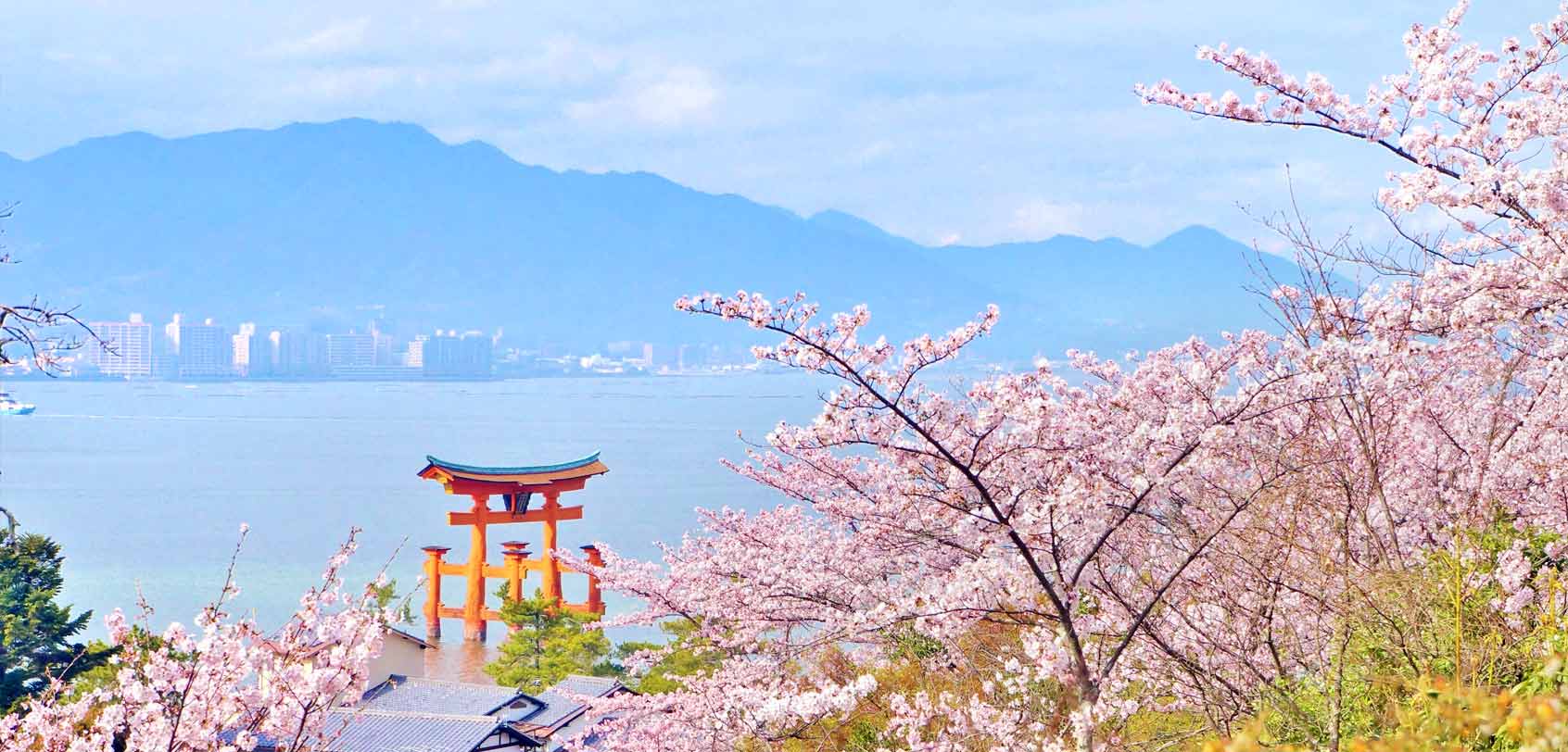
Just a 1-hour ride away by train and ferry from Hiroshima is the small island of Miyajima. It’s particularly famous for its giant torii gate that seemingly floats on the water during high tide — making it one of Japan’s best views. Most people do this as a day trip for their Japan itinerary but you could also stay overnight to experience a ryokan (traditional Japanese inn).
- If you want the best view, be mindful of the timings of the tides during your visit. High tide is obviously when it is most picturesque, but the low tide has its charm too because then you can walk up to the gate and see it up close.
- Momijidani Course: shortest but also the steepest and goes mostly through the forest.
- Daisho-in Course: offers the nicest views and is not as steep as the other two.
- Omoto Course : any of these 3 hiking trails takes about 1 to 2 hours to reach the summit.
- Daisho-in Temple: Found at the base of Mount Misen. There is an interesting Buddha ritual here wherein as you walk up the temple steps, you spin the metal wheels with inscribed sutra as it is believed to have the same effect as reading them.
- Omotesando: This shopping street is the busiest place in Miyajima where you can find souvenir shops, food stalls, and restaurants. Why not do some shopping here while doing your Japan itinerary!
Other Destinations & Trips
Obviously, there is more to Japan other than the famous destinations of Tokyo, Kyoto, Osaka, Nara, and Hiroshima. So if you have more days on your Japan itinerary, consider filling it up with any of the following destinations!
TIP : For a complete list of amazing tours and activities to do for your Japan itinerary, see here ! When booking, use code AILEENKLOOK to get 5% off!
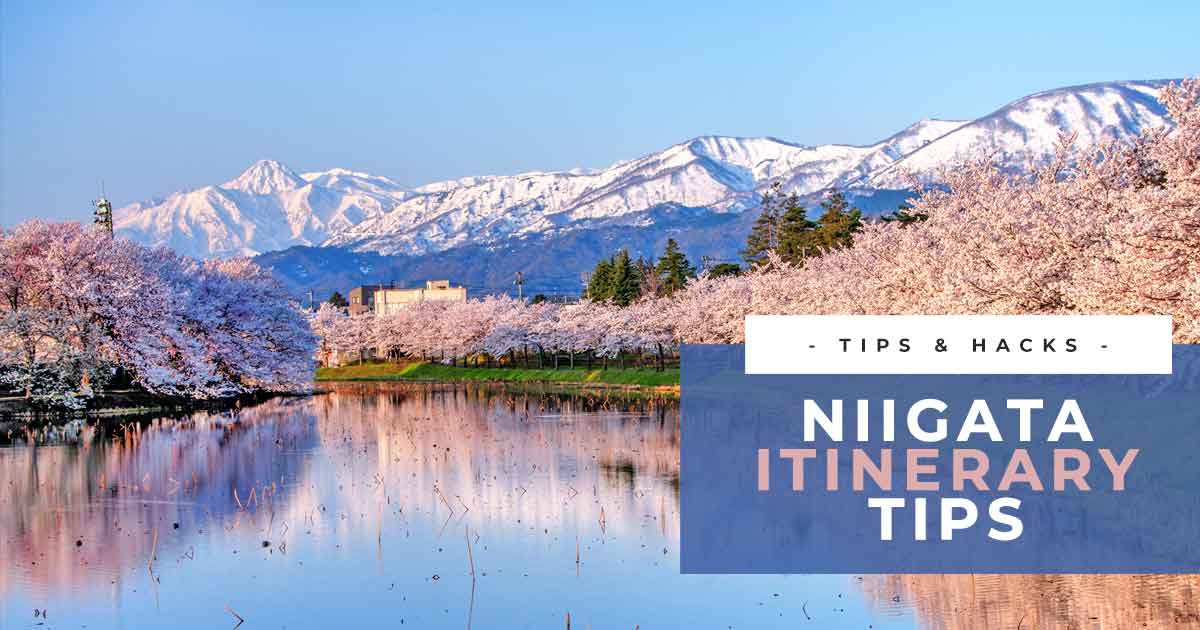
Niigata Itinerary

Chubu Itinerary
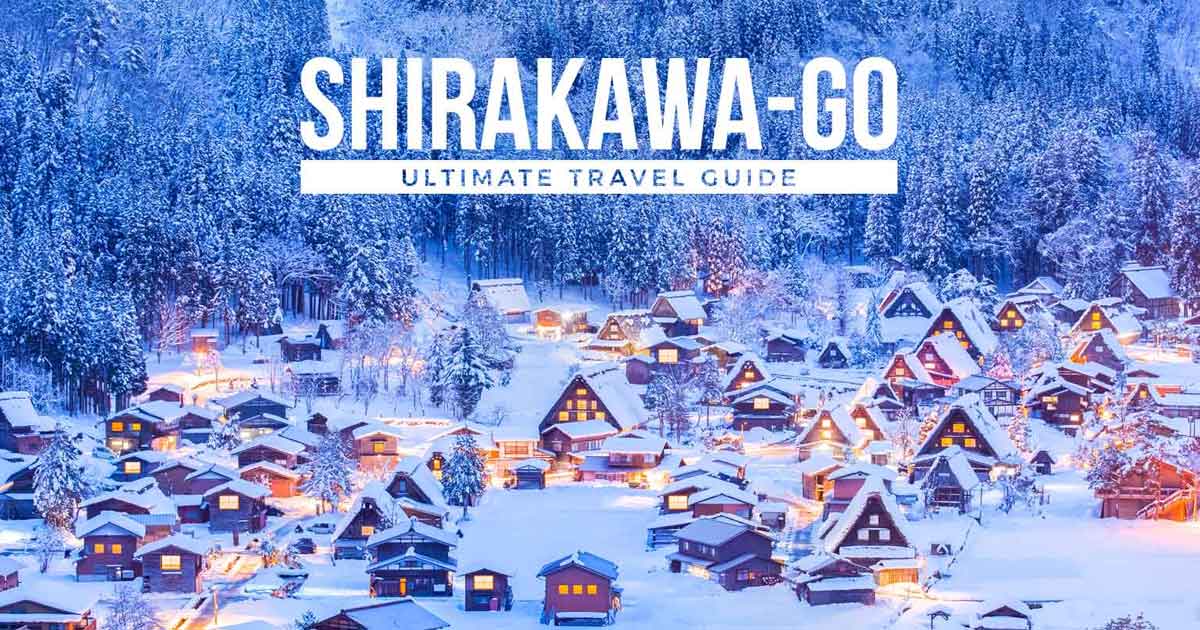
Shirakawa-Go
Tateyama Kurob Alpine Route
◘◘ Day #13 and Onwards
(My favorites are marked with a ★).
NORTH OF JAPAN.
- See here for a list of things to do in Hokkaido . .
- READ : Niigata Prefecture: A New Japan Foodie Destination! .
- Nagoya: Also found within the Chubu region is Nagoya which is known for its towering castle. Other notable sites are as follows: Korankei, City Science Museum, Atsuta Shrine, and Railway Museum. For food, check out Sekai no Yamachan , a famous izakaya (Japanese pub) in the city that serves flavorful “legendary chicken wings”. .
- Kanazawa: This is the capital of the Ishikawa prefecture and it boasts historical attractions as well as its ‘ Kenrokuen ‘ — said to be one of the 3 best landscape gardens in Japan. .
- Kiso Valley: Nestled within Nagano prefecture is this valley that holds an ancient 70km trade route called Kisoji which was later on combined with other routes forming the 500km long Nakasendo . Today, nearby post towns of Magome, Tsumago, and Narai are flocked by visitors not only to hike through the Nakasendo but to also revel in the traditional stone paths and wooden buildings of these quaint towns. Truly an interesting addition to your Japan itinerary! .
- READ : Things to do in Matsumoto .
- For more info, read here . .
- READ : Things to do in Takayama
- Tateyama Kurobe Alpine Route: If you’re up for incredible and unique nature activities in Japan, it’s a MUST to visit the stunning mountain sightseeing route that’s commonly referred to as the “Roof of Japan”. A crowd favorite as of late is its grand ‘Snow Wall’ that’s open from mid-April to late June! For more info, read here . .
- You can do this as a day tour from Nagano .
- Shibu Onsen: An old-fashioned hot spring town
- Shiga Kogen Resort: The largest ski resort in Japan.
Wanna see cute and fluffy foxes? Then go and visit the famous fox village in Miyagi Zao’s city of Shiroishi for your Japan itinerary! . Check out this blog post to find out more: The Fluffiest Place on Eart: Miyagi Zao Fox Village!
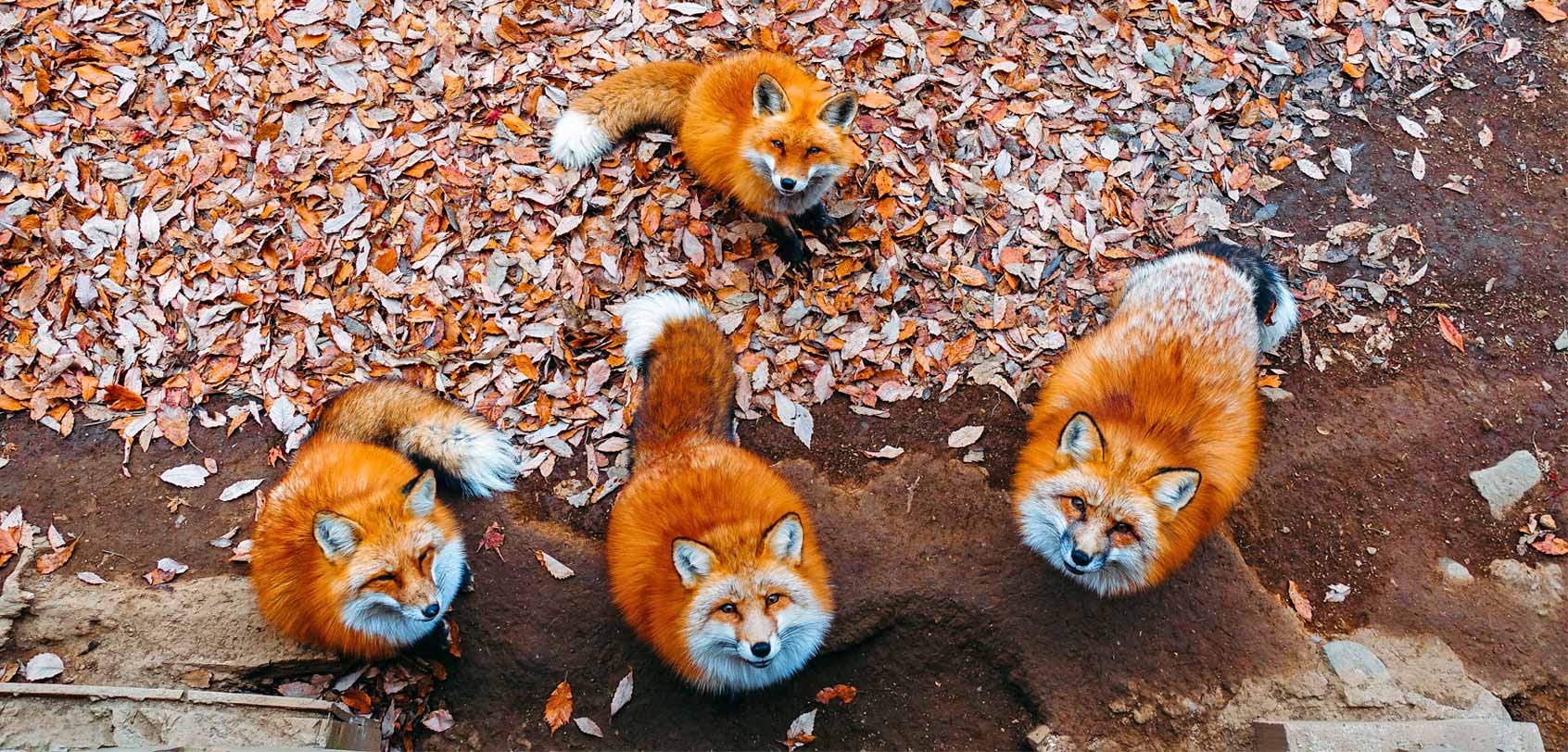
SOUTH OF JAPAN.
- ★ Kinosaki: Located about 3 hours away from Kyoto, this is a pleasant onsen town that has a great atmosphere. I stayed here before for 2 nights and I loved strolling around the town in my yukata and geta (wooden clogs), feeling like a local! After all, everyone (locals and foreigners alike) who visit the town almost always wears the same attire when going about the place onward to the public baths. .
- See here for a list of things to do in Okinawa . .
- Himeji: This place is most famous for its Himeji Castle which is typically considered to be Japan’s most beautiful surviving feudal castle. Because of this, it is both a UNESCO World Heritage Site and a national treasure that you must see for your Japan itinerary. .
- See here for a list of things to do in Kobe .
Booking Essentials

TIP: It’s a good idea to crosscheck the prices with other popular travel insurance providers like World Nomads and HeyMondo (as my reader, you get 5% off)! . However, take note that a travel insurance’s affordability typically means lesser coverage; so please always ensure that you read the fine print in order to decipher which travel insurance company is the right fit for you and your trip!
The Best Tours in Japan?
Come and check out this list of the top things to do in Japan which features the best activities and tours to do in Tokyo, Okinawa, and more!

There really is SO much to see in Japan! …But I believe that my travel guide here is already a good start. Please feel free to tweak this itinerary and make full use of my extra activity suggestions in order to make your trip shorter or longer and better fitting for your travel style.
Enjoy and do let me know how your trip goes!
Have you seen my latest vlog?

Hey there! I am Aileen Adalid. At 21, I quit my corporate job in the Philippines to pursue my dreams. Today, I am a successful digital nomad (online entrepreneur, travel writer, & vlogger) living a sustainable travel lifestyle.
My mission? To show you how it is absolutely possible to create a life of travel no matter the odds — and I will help you achieve that through my detailed travel hacks, guides, resources, tips, and MORE!
Follow Along
CURRENTLY BASED IN: The Philippines
- 100k Followers
- 51k Followers
- 80k Followers
- 10k Followers
- 23.1k Followers
Trending Now
Visa application tips: 4 important things to get you approved.
Increase your chances of getting that approval — here are the 4 topmost important visa application tips to remember when you’re applying!
Elegance on the Water: The Ultimate Mekong River Cruise Experience for the Discerning Traveler
Here’s why you should put a Mekong River Cruise high up on your bucket list for your upcoming Asia adventures!
Best Hotels in Cebu: From Cheap to Luxury Accommodations and Places to Stay
Explore the best hotels in Cebu — from luxurious five-star resorts, cozy boutique stays, to budget-friendly hostels!
EU261 Compensation: Your Essential Guide on European Flight Delays or Cancellations
Learn to claim EU261 compensation for flight disruptions like delays, cancellations, downgrades, or denied boarding!
20 Safest Countries for Solo Female Travelers: The Best Trip Destinations in the World (& The 5 Worst!)
Find out the BEST and safest countries for solo female travelers to go on adventures to — as well as the 5 most dangerous destinations!
Latest Posts
Learn Today
How to start a successful blog, 70 comments.
I want to go back there so much! Loved it
This really is a comprehensive guide to Japan. It has everything you would need to know about Japan and how to plan the perfect itinerary.
we are planning to visit Japan next year and this is very helpful
Thanks for sharing this useful article about Japan itinerary, it will so great holiday :)
Do I need JR Pass if I travel to Hakone? My whole trip is just 5 days.
I guess that would mean you’ll mostly base yourself in Tokyo? If so, I don’t think you’ll need a JR Pass — but to be more precise you can read my article here: https://iamaileen.com/japan-rail-pass-guide/ . It has a link to a calculator site there that can calculate if having a JR pass is worth it or not for your route. Hope that helps!
Submit a Comment Cancel reply
Your email address will not be published. Required fields are marked *
Be notified of follow-up comments by email
Submit Comment
Pin It on Pinterest
Truly Tokyo
A Tokyo Travel Guide
Tokyo 4-Day Itinerary
Four days in Tokyo gives you enough time to see the city and make one day trip out of the city. My four-day Tokyo itinerary is the best way to make use of four days in this incredible city.

Tokyo 4-Day Itinerary Summary
- Four days allows you to see Tokyo and one nearby place.
- Base yourself somewhere central to save time.
- On Day 1, visit modern Tokyo on the west side.
- On Day 2, visit traditional Tokyo on the east side.
- On Day 3, take a day trip outside of Tokyo to Nikko, Kamakura or Mt Fuji.
- On Day 4, visit the Imperial Palace Area and Shinjuku.
Check Hotel Availability
Destination, check-in date, check-out date.

Tokyo 4-Day Full Itinerary Day 1: Modern Tokyo/West Side
- 8:30am: Take the train or subway to Harajuku .
- 9:00am: Arrive in Harajuku and visit Meiji-jingu Shrine, Omotesando , and Nezu Museum (don't miss the garden!).
- 11:00am: Take the train or subway to Shibuya.
- 11:15am: Arrive in Shibuya and explore this retail paradise.
- 1:00pm: Eat lunch in Shibuya. For some picks, see the Shibuya district page Places to Eat section .
- 2.30pm: Take the train and subway to Roppongi.
- 3:00pm: Arrive in Roppongi and visit the Roppongi Hills complex to get a view over the city.
- 6:00pm: Eat dinner in Roppongi. See the Roppongi district page Places to Eat section for some ideas.
- 8:00pm: Have a drink in one of Roppongi's many bars. See the Roppongi district Nightlife section for some recommendations.

Day 2: Traditional Tokyo/East Side
- 9:00am: Take the subway to Asakusa. Visit Senso-ji Temple and nearby Asakusa-jinja Shrine .
- 10:30am: Take the Ginza subway line to Ueno.
- 11:00am: Arrive in Ueno and visit the park and the museums.
- 1:00pm: Take the train to Tokyo Station . Eat lunch in or around Tokyo Station. See the Tokyo Station Area Places to Eat section for some picks.
- 2:00: Visit the Mitsubishi Ichigokan Museum or the Bridgestone Museum of Art. Consider a nice stroll in nearby Hibiya-koen Park afterward.
- 3:30pm: Return to your hotel for a nap and a shower.
- 6:00pm: Eat dinner in Shinjuku , Ginza , Marunouchi or someplace close to your hotel. See the relevant district pages for recommendations.
- 8:00pm: If you've still got the energy, go out for a drink in a place like Roppongi , Shinjuku or Shibuya . See the relevant district pages for recommendations.


Day 3: Day Trip Outside of Tokyo
- Take a break from the big city by heading to one of the interesting places in the countryside around Tokyo. The best places for a day trip outside of Tokyo are Nikko , with its wonderful shrines and temples, Kamakura , with a Great Buddha statue and fine Zen temples, and Mt Fuji (you don't have to climb it – you can take a bus to the base or partway up the mountain to enjoy the views). See my Best Day Trips Out of Tokyo page for details.
Day 4: Imperial Palace Area and Shinjuku
- 9:00am: Get yourself to Tokyo Station by train or subway. Walk east from Tokyo Station to the Imperial Palace East Garden . Visit the East Garden and exit via the Kitahanebashi-mon. For details on this area, see the Tokyo Imperial Palace Area page .
- 11:00am: Walk north through Kitanomaru-koen Park and then visit Yasukuni-jinja Shrine . Do not miss the controversial and interesting Yushukan Museum at the shrine. For details on this area, see the Tokyo Imperial Palace Area page .
- Noon: Take the Shinjuku Line subway west to Shinjuku. Eat lunch somewhere in Shinjuku. See the Shinjuku page for some suggested places to eat. You might want to hold off on eating lunch until 1:00pm to avoid the lunch rush.
- 1:00pm: First, go up to the observation deck of the Tokyo Metropolitan Government Offices to see the view of the city (and maybe even Mt Fuji) from the observation decks. Then, walk over to the East Side and check out the bustling shopping and entertainment district around the station. See the Shinjuku page for details on this area.
- 4:00pm: Return to your hotel for a rest and shower.
- 6:00pm: Eat dinner in the district of your choosing. Shinjuku , Shibuya , Ginza and Roppongi all have lots of great restaurants to choose from.
- 8:00pm: After dinner, head to Roppongi for a stroll and a drink or two. See the Roppongi district page for some recommended bars.

Hints, Comments and Variations
- If you're only going to be in the city for three days, you should try to base yourself in a central location so you don't waste time moving around. I'd suggest Shinjuku , Shibuya , Ginza or the Tokyo Station area . For more on where to say, check out my Where to Stay in Tokyo page.
- On Day 4, if it's very hot or you don't feel like walking much, cut out the Imperial Palace Area and head over to the Edo-Tokyo Museum (if you haven't already visited it).
- Try not to plan too much or pack too much into your time in Tokyo. Keep in mind that Tokyo is a huge and somewhat confusing city. And you'll probably be jetlagged. Less is almost always more!
Where Are These Places Located?
- Open the Tokyo map
- You will see the list of places on the left hand side. (Click the 3-line icon in the top left corner if not). Scroll down or use the map search (the magnifying glass icon) to find the place you want.
- Click the name of the place in the list. Its location pin will be highlighted on the map.
- Map pins are color coded - BLUE: Hotels / Ryokan / Guesthouses | VIOLET: Ryokan | PINK: Places to Eat | GREEN: Shops | YELLOW: Things to See and Do
- If you're using the map on your phone, open the map and then search for the name of the place. The map will then zoom in on its location.
Tokyo Vacation Checklist
- For all the essentials in a brief overview, see my First Time In Tokyo guide
- Check Tokyo accommodation availability and pricing on Booking.com and Agoda.com - often you can book with no upfront payment and free cancellation
- Need tips on where to stay? See my one page guide Where To Stay In Tokyo
- You can buy shinkansen (bullet train) tickets online from Klook - popular routes include Tokyo to Kyoto , Tokyo to Osaka and Tokyo to Hiroshima
- You can buy an eSim to activate in Japan or buy a Japan SIM card online for collection on arrival at Tokyo Narita or Haneda airports. Or rent an unlimited data pocket wifi router
- See my comprehensive Packing List For Japan
- Compare airline flight prices and timings for the best Japan flight deals . Check my guides to arriving at Narita Airport and at Haneda Airport .
- If you're visiting more than one city, you might save money with a Japan Rail Pass – see if it's worth it for you
- A prepaid Welcome Suica card makes travelling around Tokyo much easier - here's how
- World Nomads offers simple and flexible travel insurance. Buy at home or while traveling and claim online from anywhere in the world
- Do you want help planning your trip? Chris Rowthorn and his team of Japan experts at Japan Travel Consulting can help
Tokyo District Map

- Imperial Palace Area
- Tokyo Station
- Shimbashi Shiodome Hamamatsucho Shinagawa
- Akihabara Kanda
- Roppongi Akasaka
- Harajuku Aoyama
- Ebisu Daikanyama Meguro
Disclosure: trulytokyo.com is a participant in the Amazon Services LLC Associates Program, an affiliate advertising program designed to provide a means for sites to earn advertising fees by advertising and linking to amazon.com and amazon.co.uk. World Nomads provides travel insurance for travellers in over 100 countries. As an affiliate, we receive a fee when you get a quote from World Nomads using this link. We do not represent World Nomads. This is information only and not a recommendation to buy travel insurance.
- Countries visited: 115
- Currently in : Singapore 🇸🇬
- Partner with us
- SOLO FEMALE TRAVELERS COMMUNITY
Disclaimer: This page may contain affiliate links. Please see our disclaimer policy here . Never leave without travel insurance .
The best itinerary for Tokyo in 4 days
Almost every Japan trip will start in Tokyo, a sprawling city of contrasts. From the high rise office buildings in Roppongi Hills to the weird and wacky stores in Akihabara it is impossible for the city to leave you untouched. Do you only have 4 days in Tokyo? Are you overwhelmed with the choice and the size of the city?
Don’t worry, this post will help you decide what to do in Tokyo in 4 days as I wrote it after my own Tokyo itinerary so it is curated and tested. With so much on offer it is important to plan your time well so my itinerary to discover Tokyo in 4 days is perfect to decide what to include and what to leave out.
For those with limited time, rest assured that you can make the most of your visit to Tokyo in 4 days with a generous dose of subculture, of the weird and wonderful and of heritage.
If you prefer a much longer, slower and more affordable travel, this guide to travel in Japan will be very useful. But be sure to be prepared for the cultural shock with my post about 10 Things to know before visiting Japan .
While this post is a detailed Tokyo itinerary for 4 days, I also want to give you the chance to build your own Tokyo itinerary based on how much time you’ll spend in the city. So here is quick guide to various itineraries for 2 days in Tokyo or for 3 days in Tokyo.
If you only have 1 day in Tokyo, then you will be short on time and will be better off taking a day tour.
Itinerary in Tokyo for 2 Days
If you only have 2 days in Tokyo, you are best of focusing on the main attractions in the city.
Day 1: From Asakusa to Akihabara
– Senso-ji Temple
– Akihabara
– Shibuya Crossing and lunch at the basement foodcourt
– Robot Cafe
– Dinner at Narisawa or Ninja Restaurnt
– Tsukiji market in the early morning
– Meiji Shrine
– Harajuku and lunch in the area
– Imperial Palace
– SkyTree tower
– Inakaya restaurant for dinner and Golden Gai for a drink
Itinerary in Tokyo for 3 Days
If you have 3 days in Tokyo, you are best of focusing on the main attractions in the city as mentioned in the 2 day itinerary and then use the third day to explore more of the weird and wonderful aspects of the city.
Day 1: As mentioned in the 2 day itinerary
Day 2: As mentioned in the 2 day itinerary
Day 3: Weird and wonderful
– Sumo wrestling morning
– Geisha studio transformation
– Owl or hedgehog cafe
– Dinner at the Robot Cafe or Ninja restaurant (the one not chosen for Day 1)
You could also use your third day to take a day trip to Mount Fuji, an impressive UNESCO World Heritage site and a wonderful day out. This best selling tour offers a bit of Japan’s countryside.
Day 1 – Discover Asakusa + itinerary of Akihabara
If you asked anybody who has been there what to do in Tokyo for 4 days one of the first things they would suggest is funky Akihabara and the historical temples in Asakusa, which give you the right kind of heritage background you need and which you may have seen in Japanese movies . Start your Tokyo 4 days itinerary strong with a full heritage and subculture day with plenty to browse and lots of culture shocks.
Senso-ji Temple
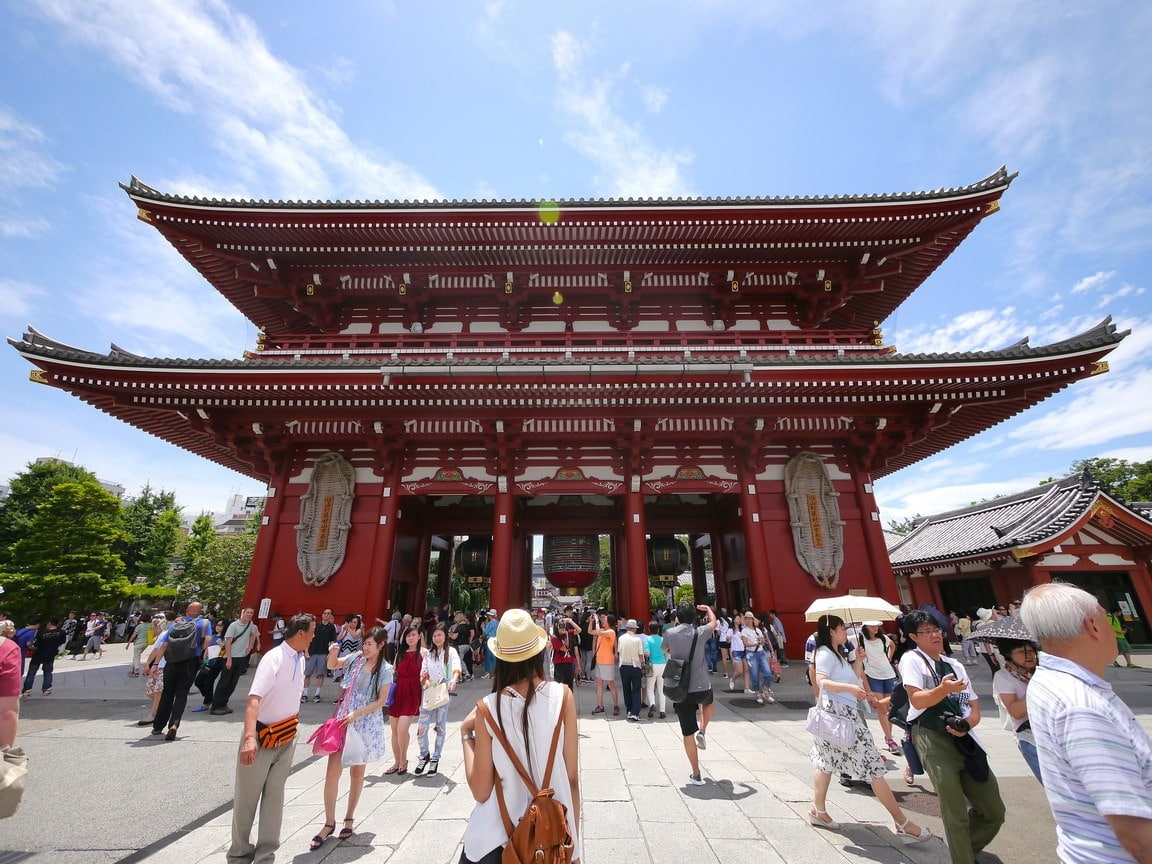
In the morning, ideally early, reach Asakusa, the spiritual and historical center of the city and one of the most relevant places of interest in Tokyo where you can explore Senso-ji Temple and the intricate blend of Shinto and Buddhist beliefs.
I very much recommend you do as I did and book a tour with a private guide , otherwise you will get lost in the crowds without fully understanding half of what all the shrines and alleys tell you about. The best way to get immersed into the complex Japanese culture explosion of this part of Tokyo is with a guide.
A private guided tour usually is for half a day so you can choose to visit Asakusa’s main shrines and area around it which should take about 2h and then head to another part of Tokyo, for example, you could go to Akihabara as mentioned in this Tokyo itinerary.
You could also start the morning with a 30 minute rickshaw tour before you continue with your private guide. Or if you want something more affordable, there are also tours that only take you through Senso-ji temple and then you can stroll the area on your own.
Either way, I highly recommend that you take a guide at last for a portion of your time in Asakusa because the area is teeming with history which needs to be heard to understand a lot of Tokyo.
From Asakusa, walk (45min) or take a taxi or the subway to get to Akihabara, the mecca of anime and possibly the most famous place to go for a certain kind of shopping in Tokyo . Here you will continue your Tokyo itinerary through some of the city’s most emblematic and infamous neighbourhoods.
Akihabara will fulfil all your manga and Japanese subculture dreams. If you want to visit one of the famous Maid Cafe, this is the place. The streets are filled with girls dressed as maids and calling you into one of the hundreds of them. For the best experience join a guided tour of Akihabara with a maid who will tell you all about the culture and the area and you will have the chance of visiting one of the cafes with her.
A very fascinating discussion. Or have a full-on entertaining adventure tour that covers karaoke (a very Japanese experience), a visit to a Maid Cafe and then some time at shopping emporium and house of all things kitch and fun Don Quijote.
For the original experience head to Cure , although you will need to become a member to be able to book ahead, and a Japanese friend to help mediate as they don’t speak English. It was a rather cumbersome experience and without anyone to tell you more about it you probably miss half the story, at least that is how me and my friend felt. For other weird and wonderful cafes in Tokyo this is a list of the best, Tokyo certainly delivers in that very special skill!
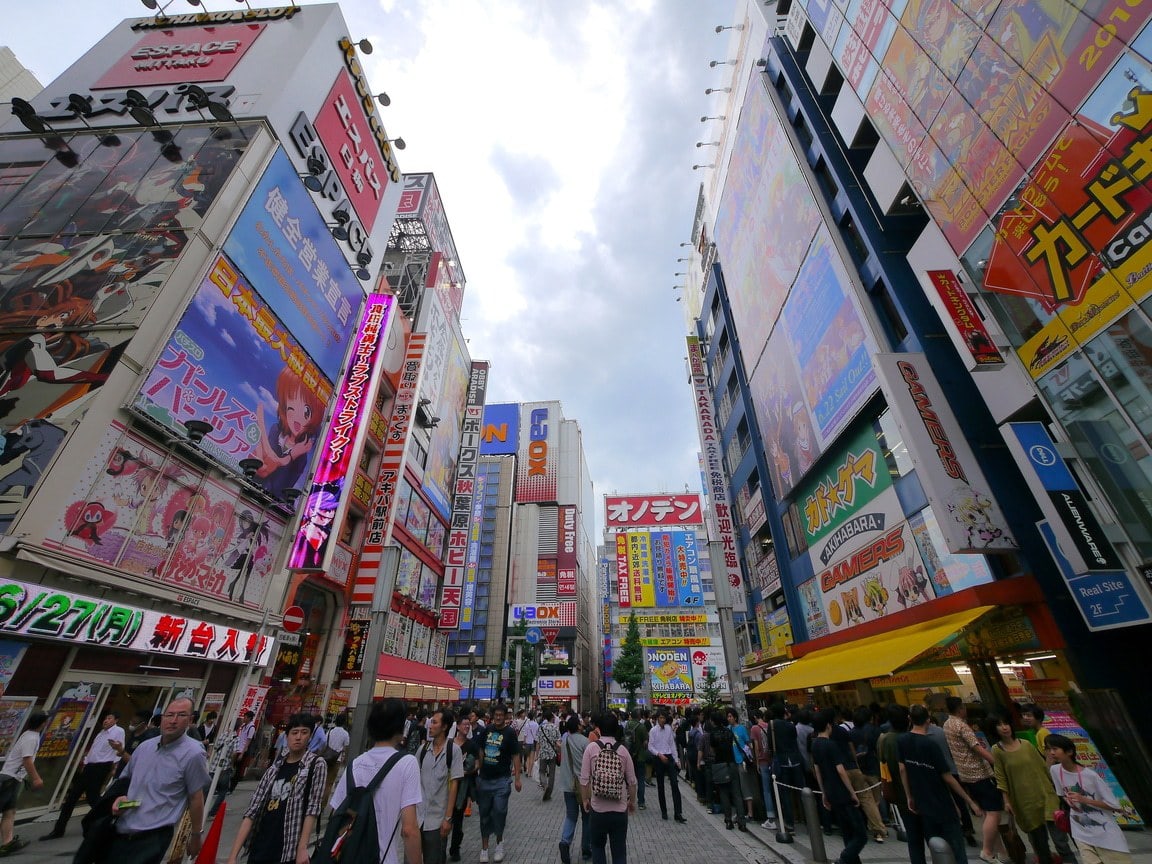
After a coffee and some food to recharge at a maid cafe wander along the main boulevard, Chuor Dori, where you can find lots of different stores that may pop in your mind when you think of Akihabara.
Anime stuff, collectibles, gambling stores, game stores, everything and anything is available here so spend some time just wandering and getting in and out of the stores that pique your curiosity. If you want to learn more about why the area is known as the Electronics heart of the city, there are private walking tours that let you customise your own fun experience and take you to the other part of the neighbourhood beyond karaoke and maid cafe.
Afterwards, head to Yodobashi, the center of all things electronic. Beware, Japanese electronics are not cheaper in Japan than back home and come with the extra challenge of being in Japanese only. Beware, that Panasonic or Sony camera you were trying to snatch at a cheaper price will actually come only in Japanese language but the store is a great place to get advice.
I managed to find the lens that I really wanted to buy but couldn’t remember what it was called there and a couple of their staff members did actually speak English. The range on display is extraordinary and the place overwhelming.
As you walk along you may spot all the maids and locals dressed in cosplay outfits hanging out in the cool neighbourhood. If you want a photo of or with either make sure to ask. The girls do not like photos and many will be holding a sign stating so and it is safe to assume even those who don’t have the sign do not appreciate it either. Ask or be sneaky, and make sure not to be caught!
The most impressive store in Akihabara is Mandarake . This building version of a Batmobile is the center of all things anime and weird. Think porn comic books, all the robots and little figurines of every potential cartoon or Japanese character available on any size, old Game Boys and Nintendo, in short, all sorts of collector’s stuff to fill your wildest hoarder dreams.
This is the place to spend money on things you don’t need and will not have a place for when you get home. But they look oh-so enticing and underground. This is Japanese subculture paradise and the heartbeat of Akihabara, at least in my mind. Climb up all the floors because every one of them is devoted to a specific topic from J Pop CDs to comic books, from the oldest items to the newest raging trend.
Make sure not to get lost in a world of magic and role play. Mandarake has other branches in other parts of town but the one here is the most authentic because of its location at the center of Tokyo’s subculture play.
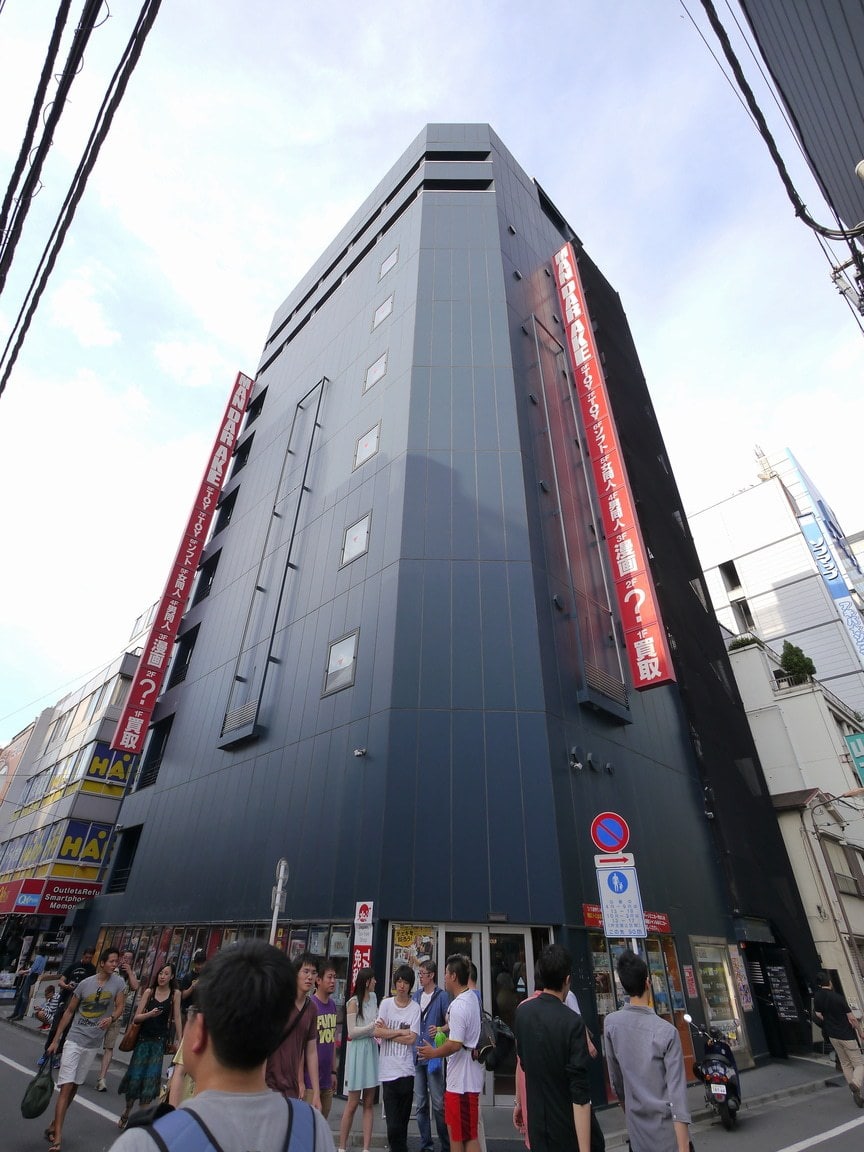
After Yodobashi and Mandarake you might want to take a break. Walk over to AKB48 for a dose of J Pop and fanatism for the pop girl groups.
AKB48 and various cafes
AKB48 is the name and performing headquarters of Japans’ largest girl group. The group is made of over 140 girls today although it started with just 48 (hence the name). Go in and take a seat at the theatre/bar where you can enjoy some (not so great) Japanese food and drink while watching some of their performances on the large TV screen. It is slightly strange to the visitor but permanently full.
If you are a robot fan, you could try Gundam Cafe instead. Or if you aren’t fussed by either, Anime (and regular) cafes can be found everywhere so just pick one for a quick break. If you want something a bit better try the Akiba Ichi inside UDX center where there are several stores selling food of better qualities. I settled for the J Pop option because I was hot and it was the closest but the food was admittedly unsatisfying yet the surroundings fascinating.
Other things to watch out for in Akihabara are general celebrity meet and greets. As we were walking around there were two of them where the characters of anime movies or J Pop groups come to meet their fans. The queues in the street will be telling. You won’t get anything but it is fun to watch.
If you want to explore all of Akihabara and get good insights into the subculture that makes Tokyo and Japan so fascinating, get under the skin of the city’s subculture with a Manga and Anime private tour . Hopefully by the end of it you really understand the Otaku subculture and will be able to piece together some of the most fascinating facts about Japan .
After Akihabara you will no doubt be tired so head back to your hotel to shower and freshen up, the night is young!
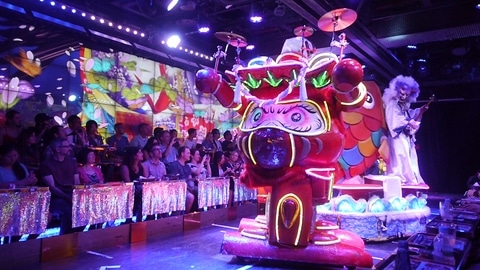
For dinner, make sure to book tickets for the Robot Cafe for a night show before dinner, you must book them ahead of time as the sessions are almost always full. O-M-G this is one of the craziest things you can do in Tokyo. Ideally, the 5pm slot should work best if you make it but they also have 7pm. Just make sure not to order any food, it is overpriced and not nice, Tokyo has great food so it would be a shame to spoil your appetite here.
The Robot Cafe has become one of the most famous things to do in Tokyo since it opened. No words can describe it so you will have to see for yourself. Money well spent. Here’s my experience in more detail.
Completely shaken and surprised, you will come out of the Robot cafe thinking: What just happened? It’s time for a bit more Japanese culture at another themed restaurant but this one is less about the tricks and more about the food: Ninja Asakasa .
Beyond being a cool themed restaurant, Ninja Asakasa serves some really good food with some Ninja tricks to match and some funky role plays parts by the waiters. I promise you will not be disappointed. This should close the night as tomorrow is another long day.
But if you liked the whole samurai experience and want to learn to be one, there are private Samurai lessons you can take to learn to handle the sword or you can visit the Samurai Museum .
Scroll down for Day 2
Read more about Asakusa, Akiharaba and the Robot Cafe
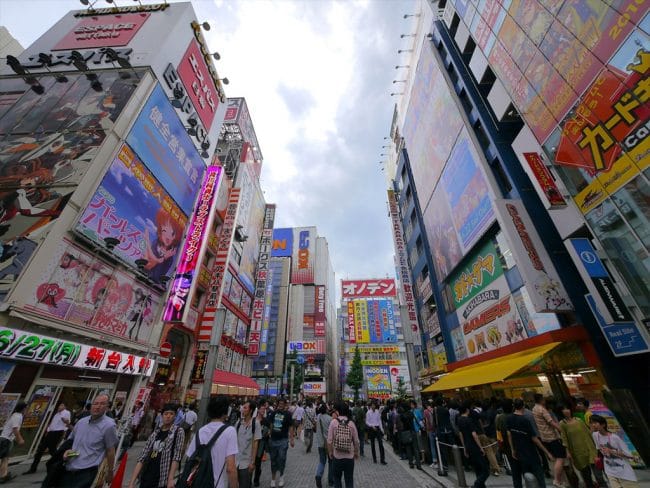
GUIDE ON WHAT TO DO IN AKIHABARA WITH THE BEST CAFES
Things to do in Akihabara , places to see and activities including anime stores, maid cafes and electronic shops.
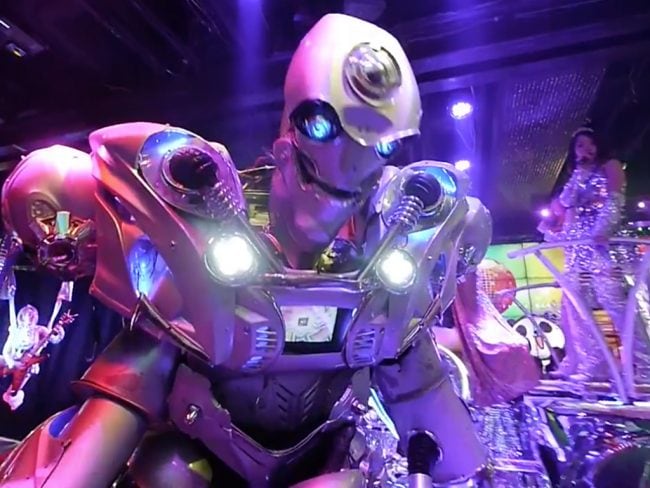
A BAFFLING EVENING AT THE ROBOT RESTAURANT
The famous robot restaurant in Tokyo is one of the most recommended places to visit. But what is it all about? Find out here .
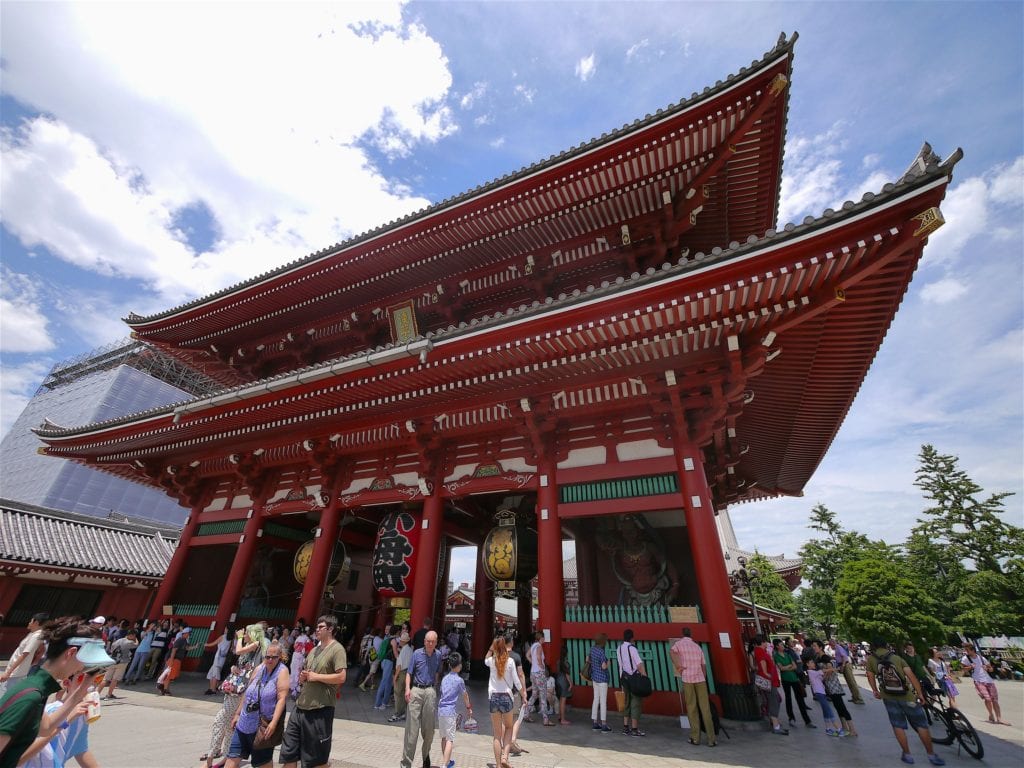
THINGS TO DO IN ASAKUSA, FROM “PLAY” TO “PRAY”
Things to do in Asakusa from “play” to “pray” with context travel including Senso-ji Temple, Asakusa shrine and other places.
Where to stay in Akihabara or Asakusa
Gate Hotel Karimanimon
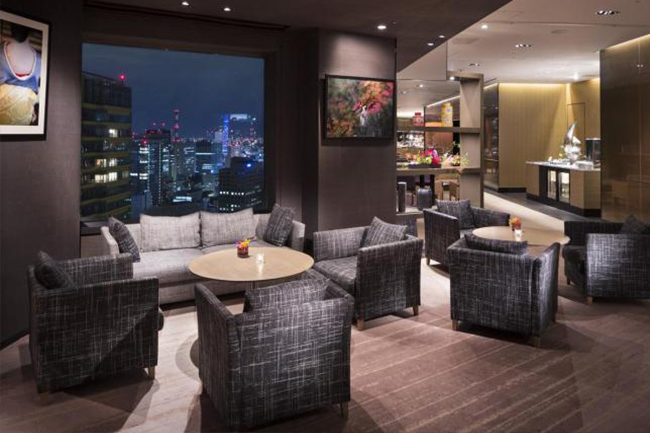
If you are looking to book a hotel in Asakusa, The Gate Hotel Karimanimon by Hulic is your best bet and it even comes with a side of great views. There are not a lot of high end properties in the area (in fact this is the only 4* hotel) but in case you want to immerse yourself in what was once the home of geishas, this is your best bet.
Book your stay here .
Intercontinental ANA Hotel
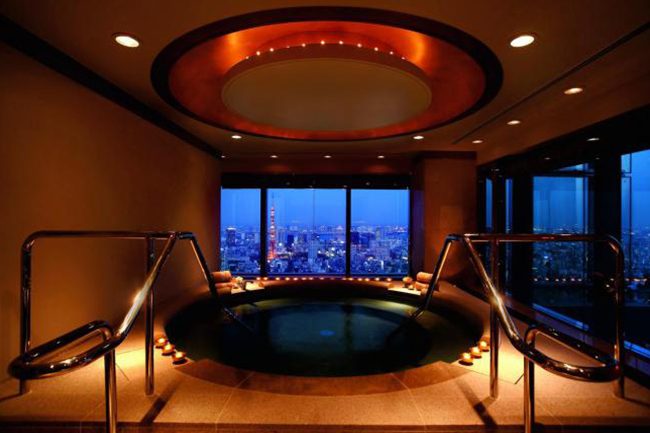
If you would like to book a hotel that is near the end of the night at Ninja Asakasa, there are a few good options there. I love the Intercontinental ANA (and I stayed there). It is comfortable, has everything you need and it usually reasonably priced (for Tokyo standards). It is also walking distance from a few of the places in this guide, including the hedgehog cafe, Narisawa and GyuRyo.
The Ritz Carlton Hotel Tokyo
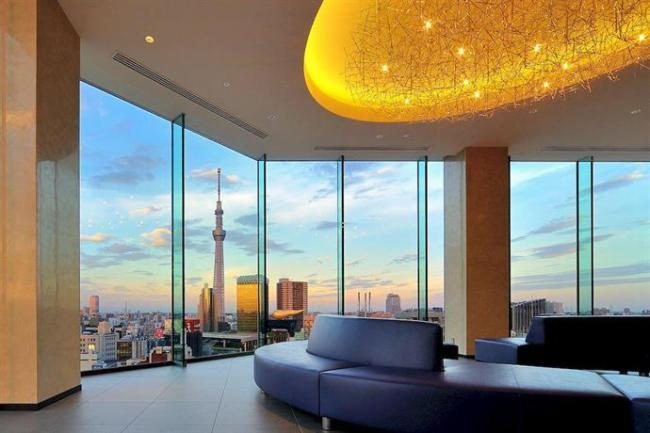
For a more refined option nearby (taxi ride) check the Ritz Carlton with all its glitz and glam. The Ritz is sure to deliver the best luxury.
Day 2 – Shibuya and Roppongi
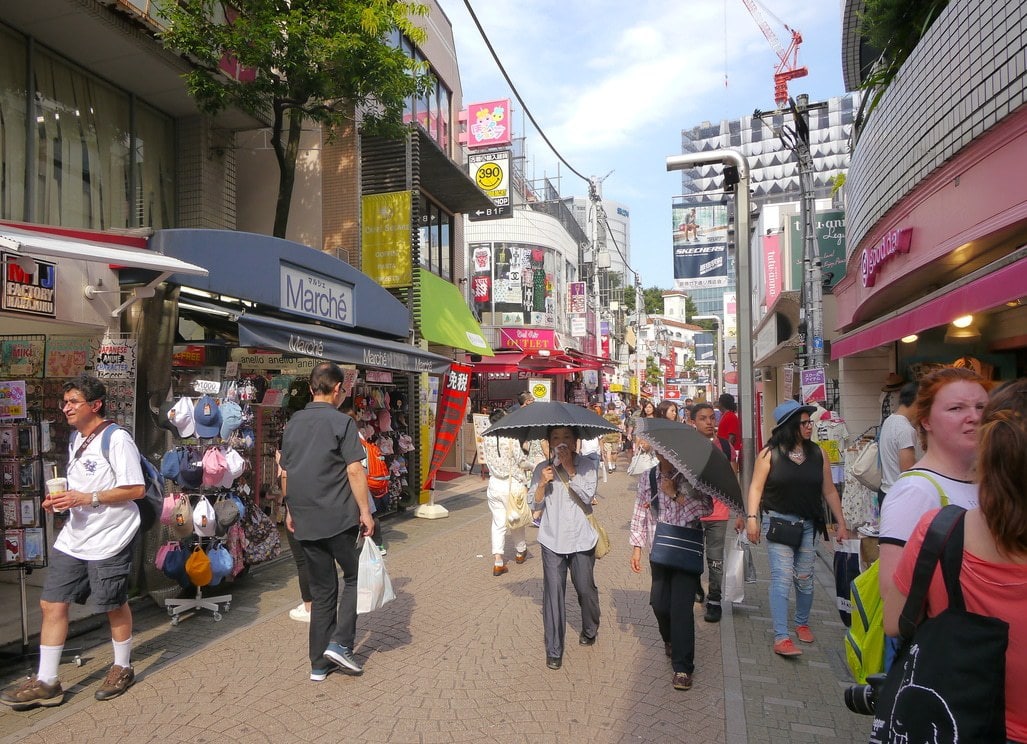
A Tokyo itinerary would not be complete without indulging into people watching and shopping. Start the day in Shibuya where shopping has no end and no beginning.
The neighbourhood has anything and everything, from the high end brands to all the local designers, the funky stores, the strange, the weird and the wonderful. Shibuya 109 is not to be missed as the disposable fashion center of the Earth, if you go during Sales, like I did, expect to be met by hordes of store assistants yelling “short sale” non stop at the top of their lungs.
There are also lots of stores with collectors trainers (remember that Michael Jordan Air trainers you wanted to get when you were a teenager but your parents never bought you? I challenge you to buy them and wear them), cute clothes for all your cosplay needs, Japanese too cool for school hip hop fashion, you name it and they have it.
Wander around Harajuku , starting from the subway station of the same name, where the new fashion trends can be first spotted and where you will be able to do some serious fashion shopping in Tokyo . Along with clothes, you will also find the famous Calbee potato chips, pink cute crepe stores galore and pretty much any dress up and halloween outfit need.
Don’t miss Laforet shopping mall , with half floors of endless fashion. Great photo opportunities all along but I particularly enjoyed the view from inside Tokyu Plaza Omotesando Harajuku which is lined with mirrors.
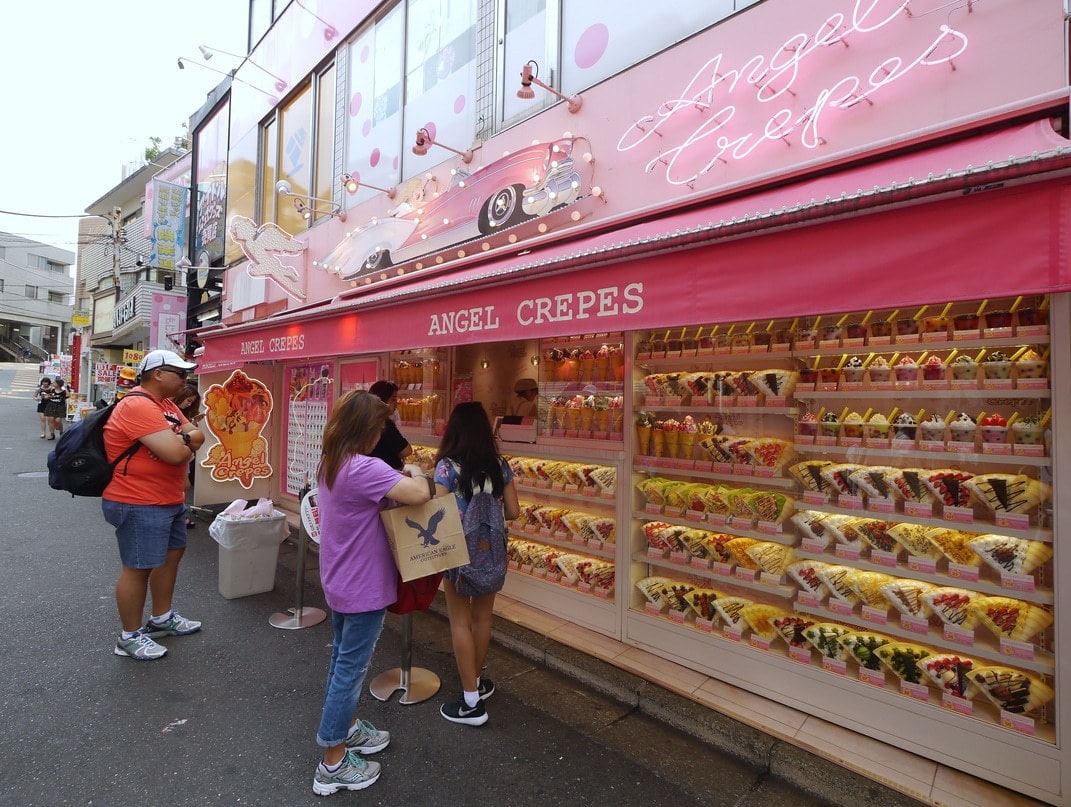
Before leaving Shibuya, make sure to stop by at Shibuya Hikarie where you can find some of the more stylish and refined items for those picky relatives you can’t buy a tacky mange souvenir for. For a very special and insightful exploration of Harajuku, get a private guide for a walking tour of the area if you want to to get the local insider’s tips and knowledge. You can customise your tour the day before by telling the guide what you like.
But Harajuku is not just a place to go shopping or get oversized crepes, it is also a great place to admire the architecture and the design which is apparent the moment you leave the main pastel colored thoroughfares. If you want to truly learn more about it, there is little info online in English, so a guided walking tour with an expert is a must. This one offers just that.
Lunch should be had late at one of the many ramen places. For an extra original experience look for one with a vending machine. Shibuya is full of them and they make for a very fun way to get your food, with a low failure rate because the machines have pictures!
Zojoji Temple
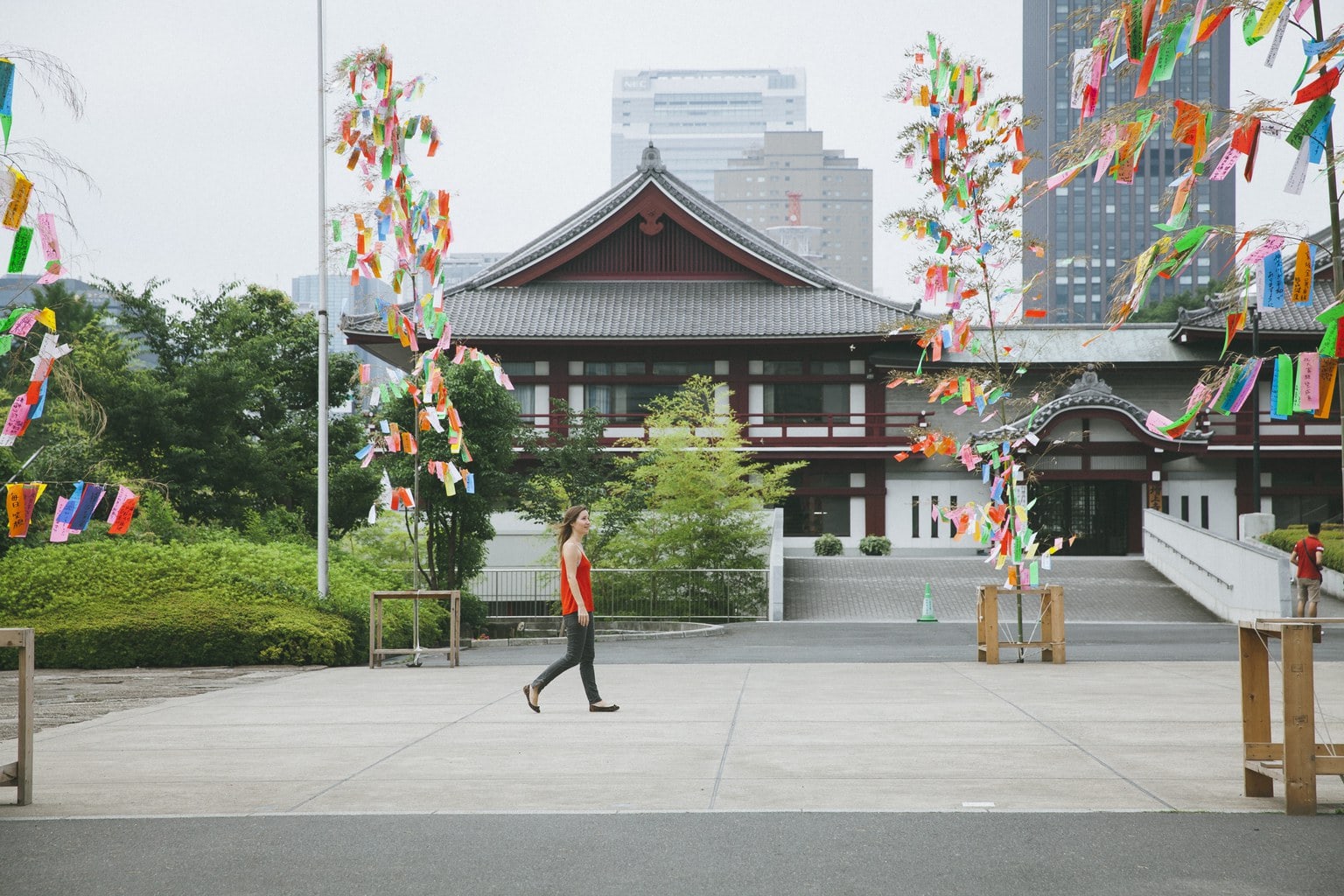
After a shopping overload and a full stomach (I could never finish any of the bowls of ramen) find some respite in one of the most unique temples in Tokyo: Zojoji Temple back in the Roppongi business district.
A much bypassed temple, Zojoji is a colorful temple complex made of several buildings and gardens near Tokyo Tower. Despite its location in the busy business district, the temple is almost always empty and provides a respite from the formal streets around.
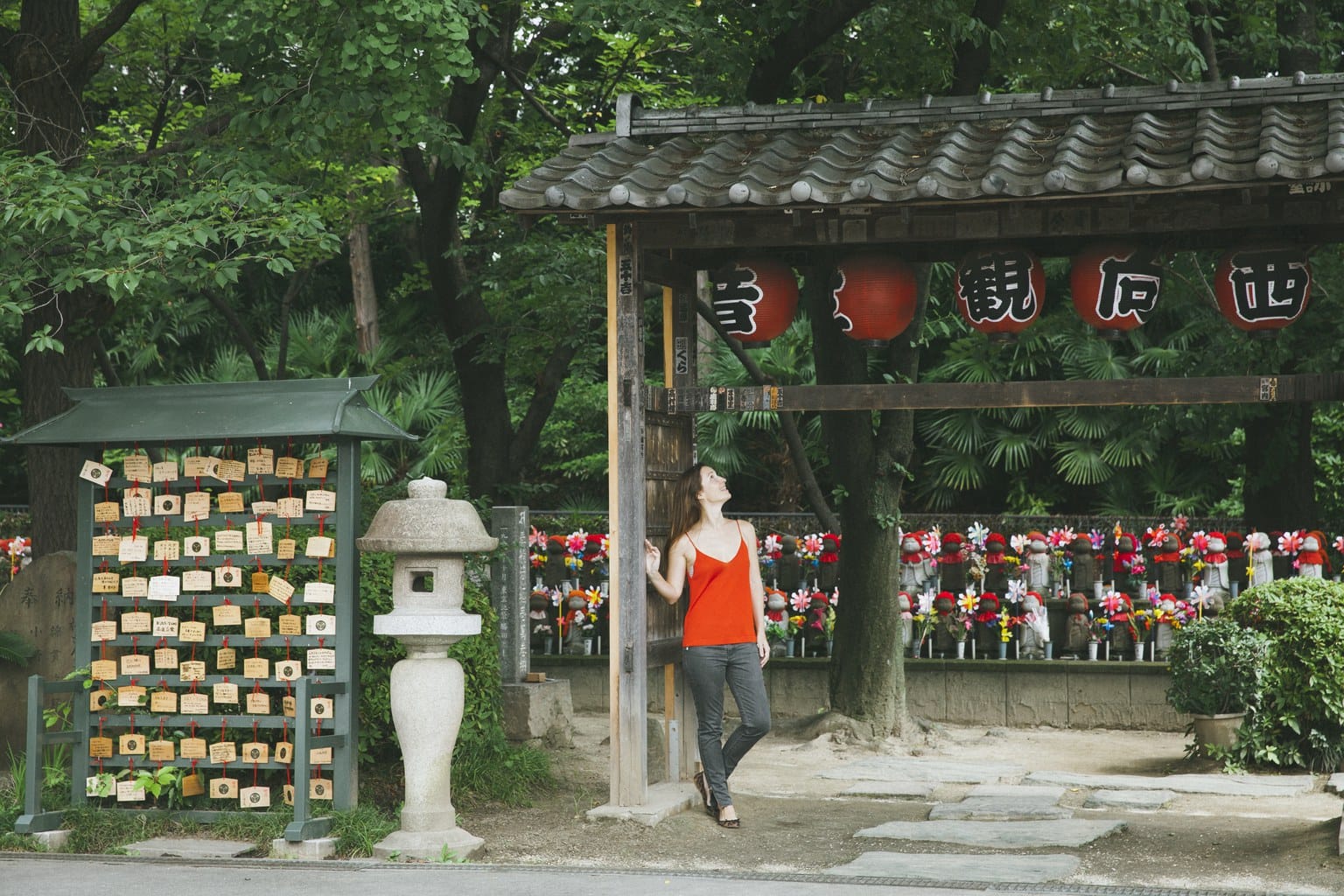
Like many other temples in Japan, Zojoji has been destroyed by fire and attacks from WWII several times, and reconstructed as many. Today, only the main gate, which is two storeys high, is original from the 16th century, when the temple was built, and is the oldest building in Tokyo.
The temple complex is made of several buildings and is also the final resting place of several members of the Tokugawa clan, the rulers of Japan during the Edo Period when the temple was constructed, who used it as their family temple.
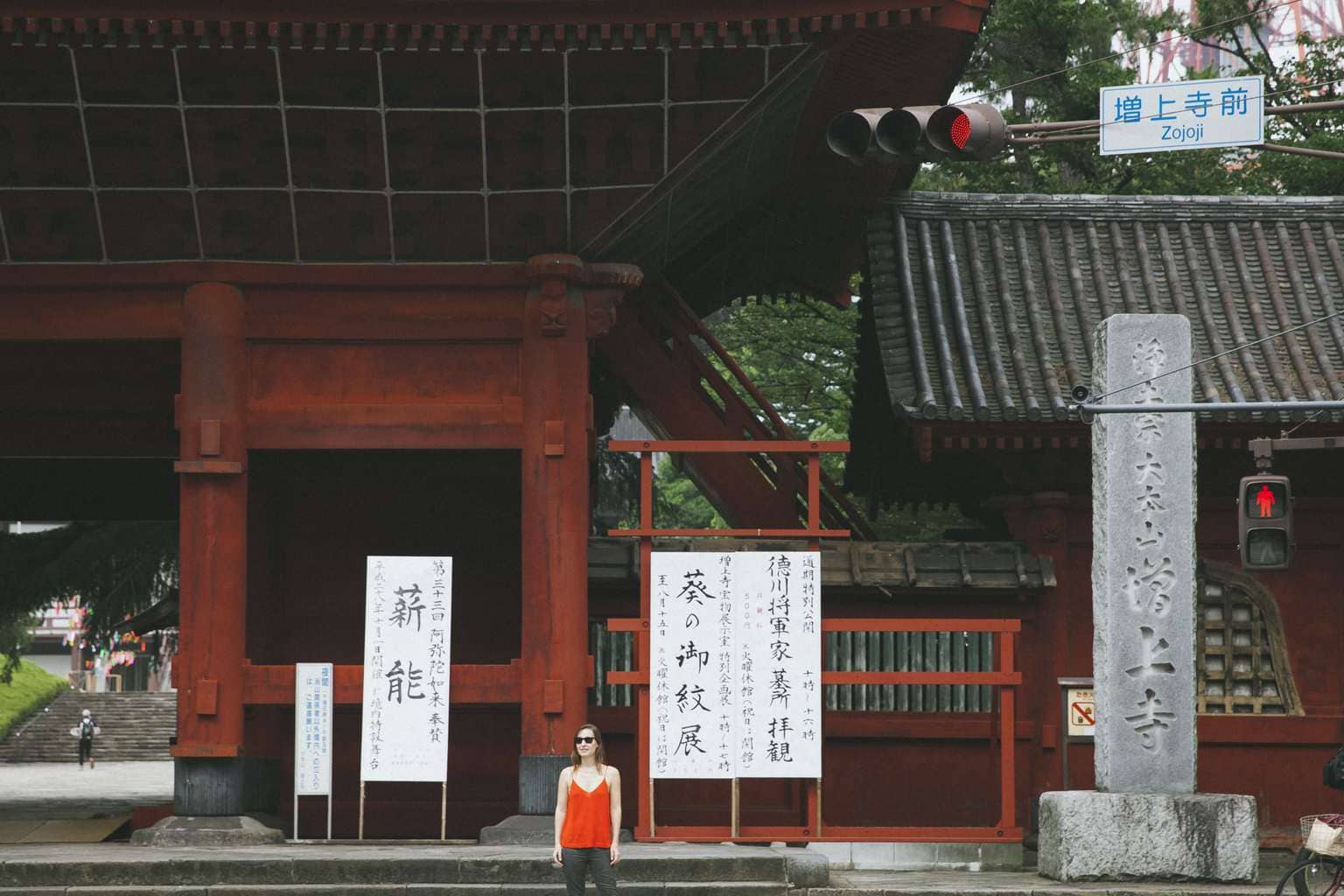
Inside the temple you can explore several parts such as the mausoleum of the Tokugawa shoguns (the last military feudal rulers of Japan), the main temple and the gardens. Look out for the pretty fountain where a ladle is set for anyone to wash their hands with water.
There are several paper lanterns adding to the beauty of the temple and, at times, a tree of wishes with pens and cards for anyone to add theirs in.
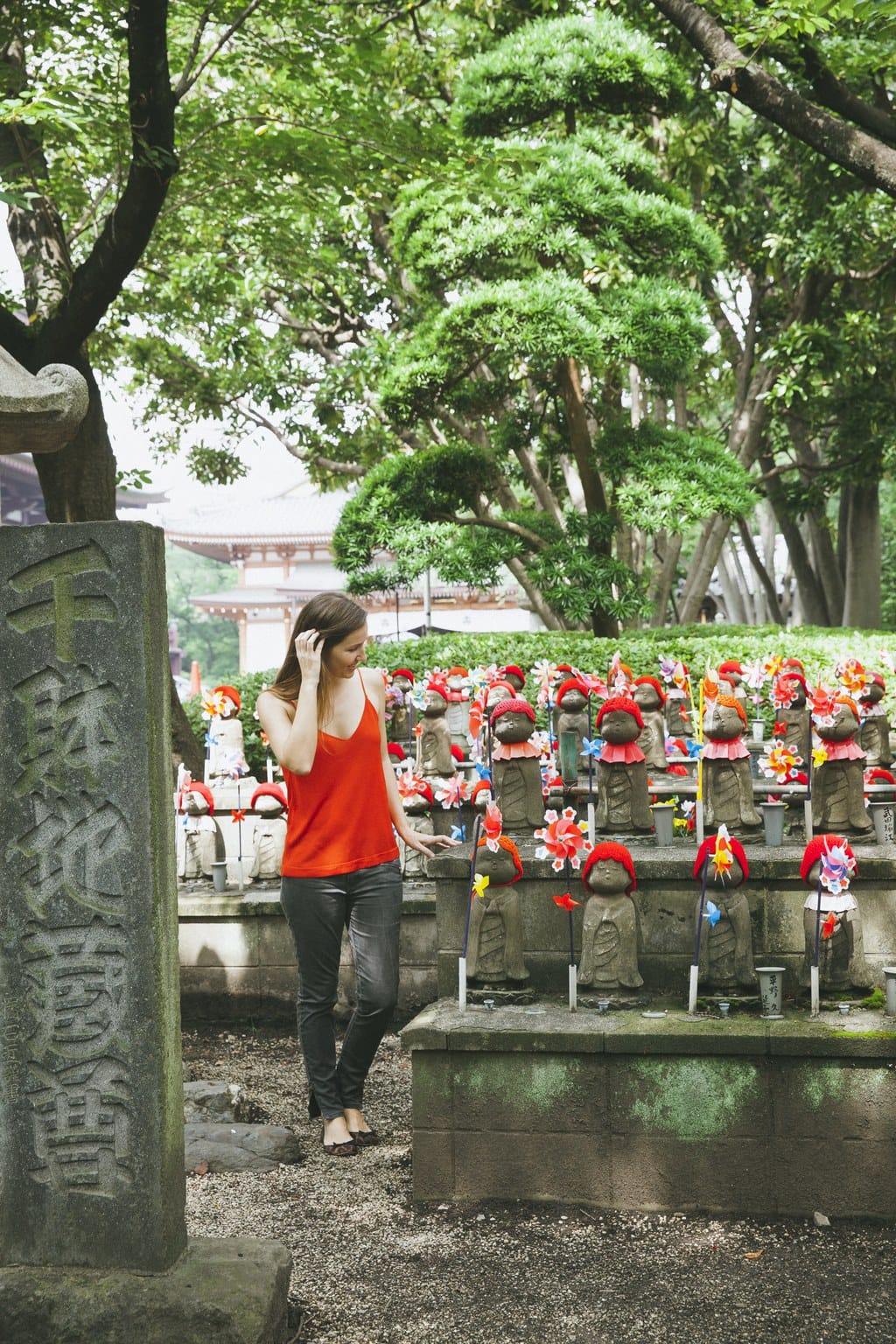
Aside from wandering the temple grounds, going inside and admiring the beautiful garden, a sobering but insightful parts of the complex is the Garden of Unborn Children, located by the side of the temple.
You will find rows and rows of stone statues representing unborn children which parents have chosen and decorated with hats, scarfs dressed in hats and scarves and other pieces of clothing usually accompanied by offerings to Jizo such as toys, the guardian and patron deity of deceased children, which can help them pass to the afterlife successfully.
Hedgehog Cafe
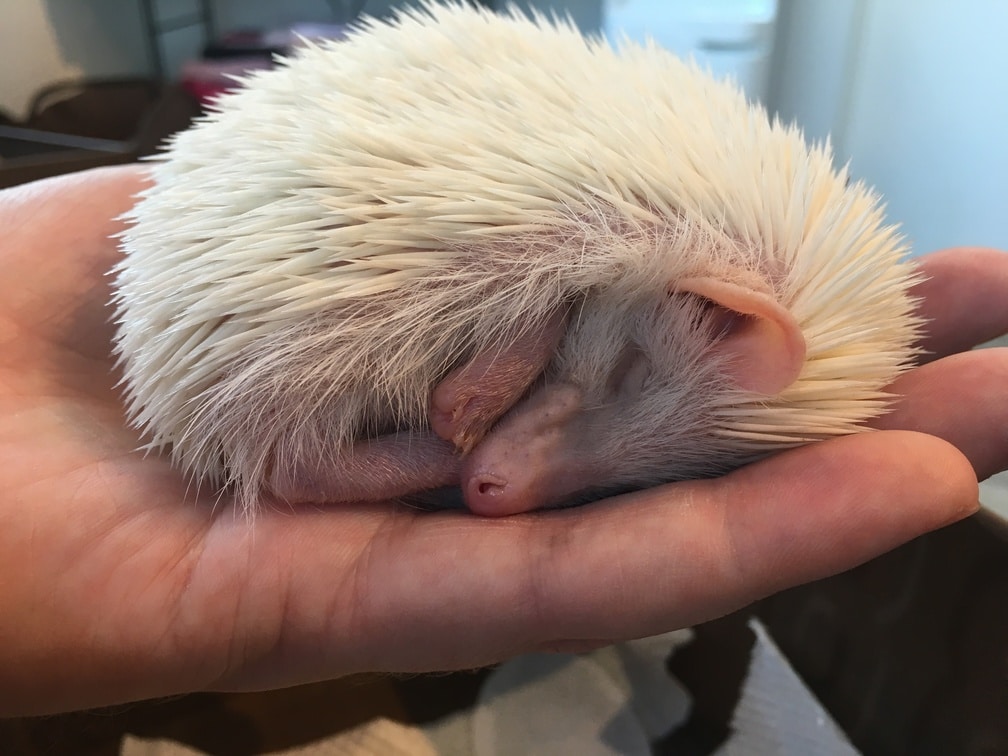
Next, head over to Harry hedgehog cafe, a cute hole in the wall place which, as the name indicates, is an animal cafe giving you the chance of playing with this spiky animals.
They are as adorable as they are dangerous so be careful how you gold them. You should book ahead online and choose between 30min to 1h. I reckon you will want to give it an hour. The cafe also has lizards you can hold, they are bigger than a gecko but smaller than an iguana.
Tokyo Observatory
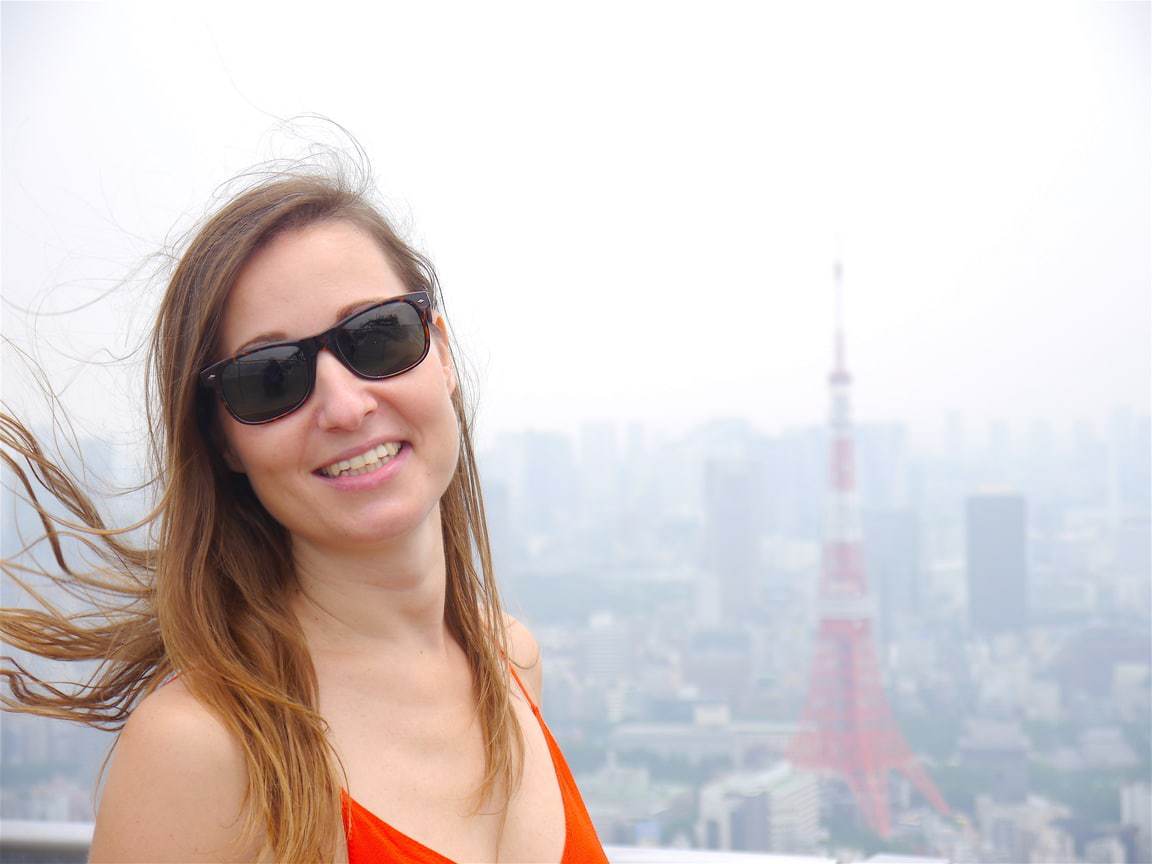
Completely animal-ed up, see if you want to walk upstairs from Harry into the bunny cafe, another adorable animal place. But if it is too much and you’ve had enough, just go back to Roppongi Hills and up onto the Observatory at the top of the Mori Tower which also has a super cool and uber-famous digital museum by teamLab .
The views over the city will be stunning. The tower is pretty tall and at the top there is a cafe and outdoor area that looks like the helipad. It is pretty cool to enjoy the 360 degree views.
Make sure to get a ticket that takes you to the helipad at the top for 360 degree views. Tokyo is not known for its skyline but at sunset, if you are lucky and the weather is good, the views will be pretty neat and you will realise how sprawling and huge the city is. Tokyo expands as far as the eye can see in all directions.
For other great city views from above, there are other viewpoints in Tokyo. The most famous one is Tokyo Skytree which is the pointy tower with a restaurant at the top. You can get the simple Skip the queue tickets , or buy he same skip the queue tickets and a meal so you can sit down and enjoy the view from the restaurant. The restaurant sits at 345m above sea level and you can see all the way to Mount Fuji. Result!
Narisawa restaurant
After sunset, dinner tonight should be at Narisawa Tokyo, Asia’s 2nd Best restaurant (in 2016) and the recipient of 2 Michelin stars. Chef Narisawa serves satoyama inspired modern Japanese cuisine focused on the forest and local ingredients.
The meal is a set course and you need to book ahead. Get the 9,30pm slot so you have time to go back home and freshen up. Dress code: smart casual as this is a fine dining venue. For more of the best places to eat in Tokyo read this article .
Scroll down for Day 3
Read more about the many wonderful cafes in Tokyo and Narisawa
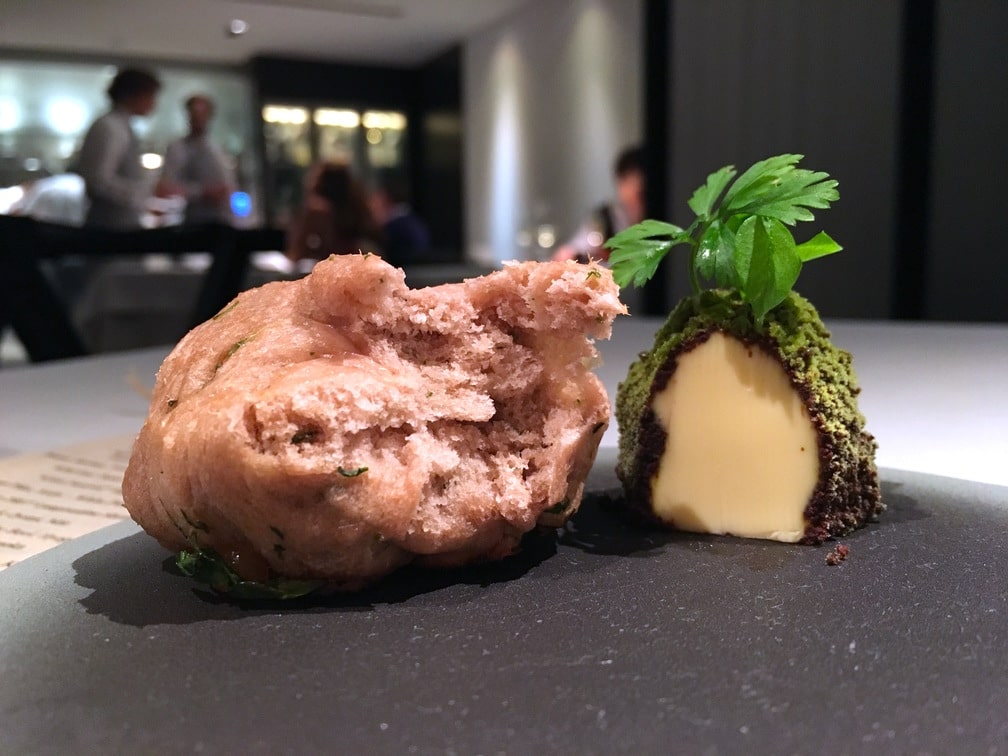
ASIA’S 2ND BEST RESTAURANT – REVIEW OF NARISAWA TOKYO
How does Tokyo’s darling and one of the most awarded Japanese modern restaurants fair? My review of Narisawa is clear – a must on your next visit to Tokyo.
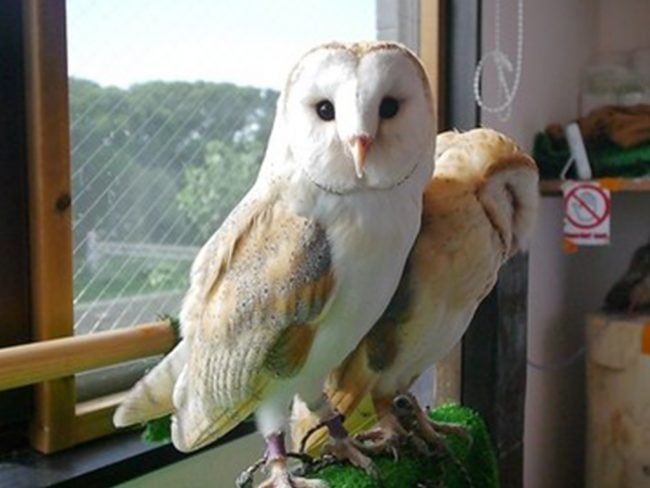
8 WEIRD AND WONDERFUL CAFES IN TOKYO THAT YOU NEED TO TRY
Going to the Japanese capital does unavoidably mean heading to one of the many themed and weird cafes in Tokyo. Here are some of the best.
Where to stay in Tokyo’s Minato area
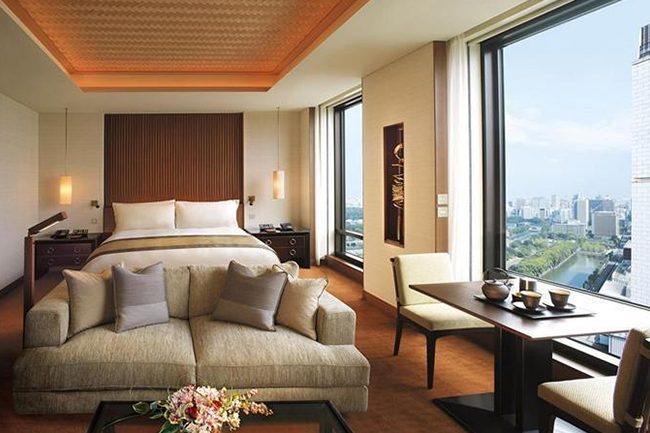
The Peninsula Tokyo
Roppongi Hills is filled with amazing hotels, perhaps one of the nicest is The Peninsula , Asia’s most legendary chain (remember when I did yoga on the helipad of The Peninsula Bangkok ?). Classic and elegant with a touch of Japanese minimalism.
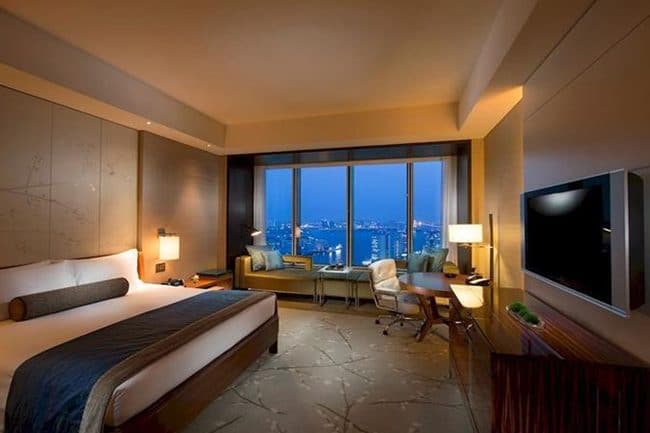
The Conrad Tokyo
The Conrad Tokyo is another of the best luxury hotels in the city and regularly ranks in the top-5. A great choice if you can afford it.
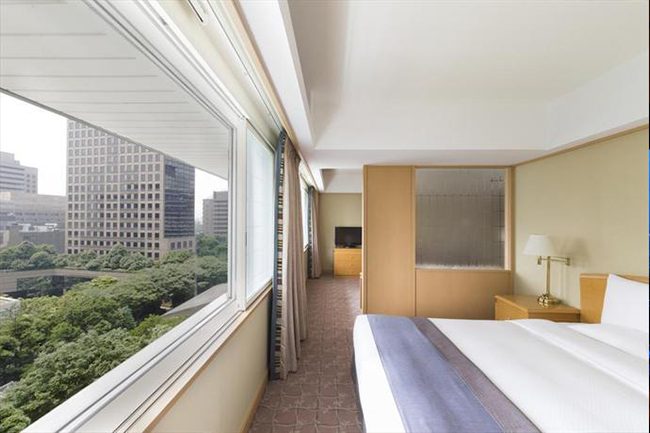
The Okura Tokyo
The well-known Okura brand delivers in Minato and usually offers more affordable options than fellow luxury hotels in the area and I love that the rooms have views on the parks in the area since Roppongi is a hilly part of town.
Day 3 – Markets, Temples and Parks
Today will be a dose of history as you take in the sights, smells and tastes of Japan’s capital city.
Tokyo or Tsukiji Fish Market
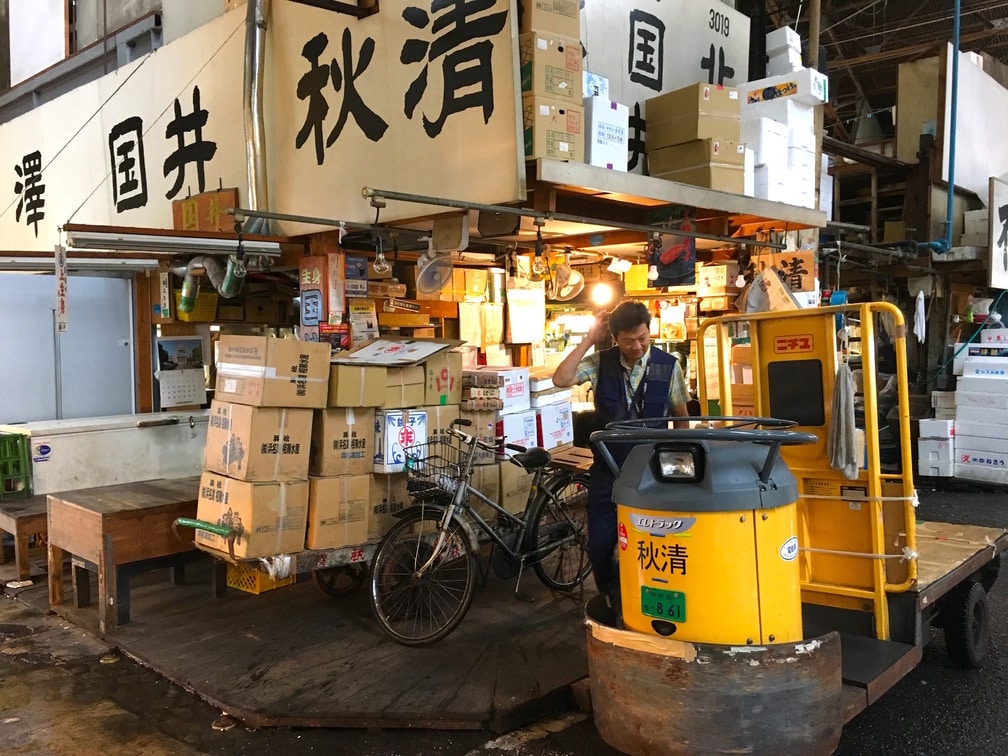
Start the day at Tokyo or Tsukiji Fish Market. You will need between 1-2h to wander all the alleys of the market , stopping for photos or to observe the locals going about their daily business.
This is a working market so beware of interrupting traffic or being a nuisance to any of the workers. Watch the ice blocks being ground, the large fish cut into smaller pieces and the daily goings and comings of the market. The large tuna auction happens before dawn but unless you are joining a guided tour or speak Japanese this may not be so enjoyable.
Another great way to explore the market is with a guide from Context Travel so you get more than just observing. The tour takes a couple of hours.
Meiji Shrine
In a city that is so crowded a bit of greenery and peace are welcome so, after the wet and dirty floors of the fish market head to the Meiji Shrine.
The shrine is in a forest area of planted trees donated by the people and was opened in 1920. There is a torii gate at the entrance made of a 1,500 cypress tree and the entire area is a bit less colourful than other temples. It is a rather peaceful and pretty place that evokes tranquility, a far cry from yesterday’s shopping extravaganza, although just across the road from Harajuku fashion mecca.
Owl Cafe in Harajuku
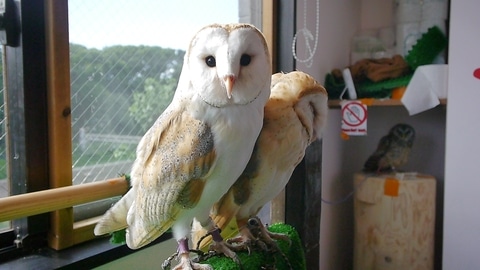
Since you are in the vicinity, head back to Harajuku subway station and find the Village Owl Cafe where you can spend some time with these birds of prey, they are actually pretty tame and sweet. You can pat them, hold them and feed them. They are pretty cool and weird at the same time. You have to book ahead.
Around the owl cafe there are a few ramen stores and places to grab some food before or after (there is one right next to the cafe that was quite good).
Imperial Palace
After lunch, take the subway to Tokyo Station and continue onwards to the Imperial Palace and its gardens which are free. The Imperial Palace is where the Japanese Emperor and Empress live and it is surrounded by a mote.
To visit its surroundings you will have to book ahead but the gardens are open to everyone. The Palace is located where the old Edo Castle used to be in the 17th and 18th centuries. In its time, it was the largest castle in the country with the inner part measuring 8km in diameter but it was destroyed in the fires of 1657 and the Imperial Palace was built there instead. The gardens are popular during cherry blossom season and host several seasonal flowers.
Nihonryori RyuGin restaurant
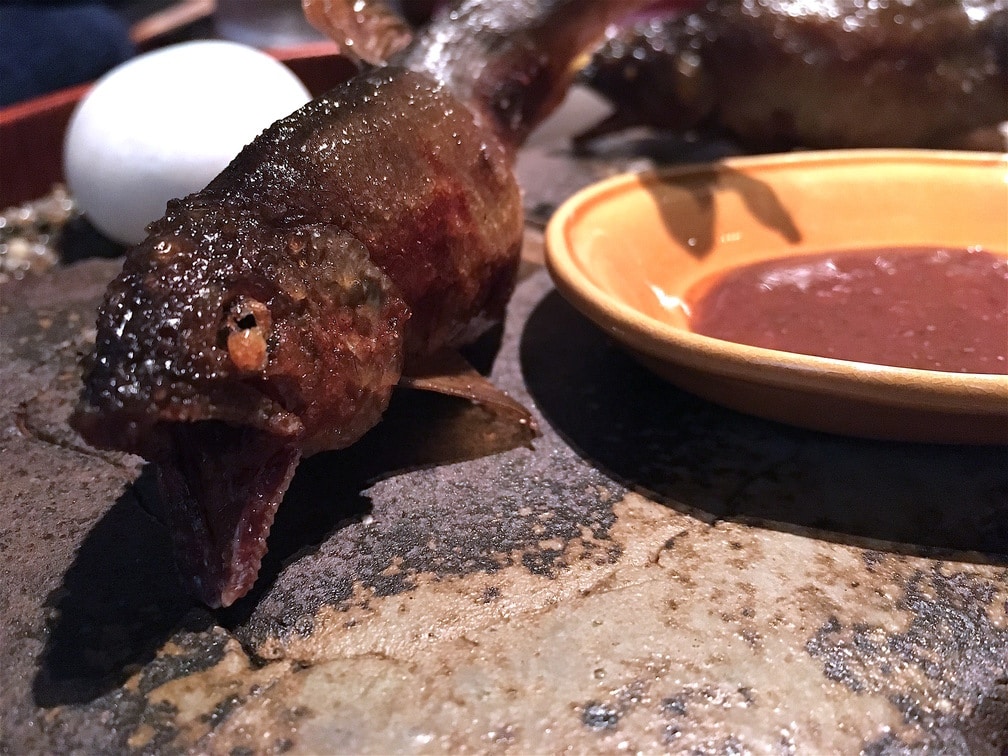
Go back to your hotel and freshen up before an early dinner at Nihonryori RyuGin , translated as the Japanese cuisine of the singing dragon, is a beautifully traditional and formal Japanese kaiseki style restaurant in the business district with a modern and more palatable flavour than some other kaiseki restaurants in Japan that may not be for everyone.
Kaiseki refers to the Japanese equivalent of a fine dining multi-course meal where the chef is allowed to show his skills and combine four types of Japanese cuisine: court, samurai, temple and tea ceremony cuisine. The dishes can also be considered a type of art form that balances the taste, texture, appearance, and colours of food with incredibly beautiful, delicate and ornate dishes.
When I visited Kyoto a couple of years ago I made the mistake of booking a very traditional kaiseki and Michelin awarded restaurant for dinner and sticking to their traditional set course without any modifications, to experience the real deal. I ended up not enjoying the meal at all.
Some of the dishes were incredibly precious and the price tag certainly reflected that, but the type of food and ingredients served were just not my cup of tea, much like Singapore’s Waku Ghin , with expensive things like oysters, caviar, abalone, fish liver, rare seafood, etc.
At Nihonryori RyuGin, Chef Yamamoto veers away from the very strict kaiseki rules to offer something that might be more pleasing to Western palates. Notable dishes include his favourite Ayu fish, served slowly grilled whole and eaten with your hands, whole as well.
The chef often comes out after the meal to wave you goodbye although I am not entirely sure if he spoke English. We did not recognise him and we simply bowed when he bowed only to realise, later on, that he was indeed the awarded chef who is always at the restaurant. When he is away, the kitchen simply closes. Dress code should match the occasion but ties are not necessary.
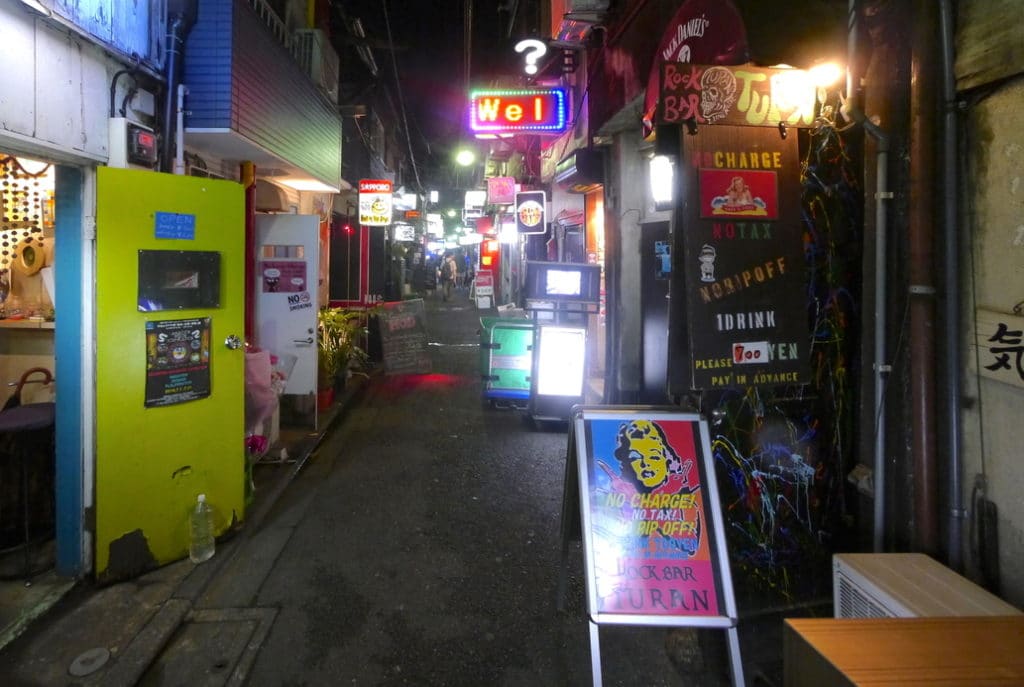
As dinner will finish relatively early and the night is young, head to the Golden Gai area where there are dozens of hole in the wall bars most of which cannot fit more than 5-6 people.
Have a walk along the few narrow alleys and then pick one. Just beware, some of them have signs stating foreigners are not allowed (yes, it is true), are reserved to regular customers only or have a steep cover charge so pick the one that tickles your fancy.
This truly is an incredible part of the city with themed bars, owners dressed in weird outfits, others look like music fanatics or musicians, some are Latin themed, some are down right dark, mysterious and scary. even if you don’t actually sit down in any, it is a great evening walk.
If you want to explore the night with a guide so you can learn more about the bar culture and the small streets and alleys check out these three tours:
Scroll down for Day 4
Read more about unique things to do in Japan
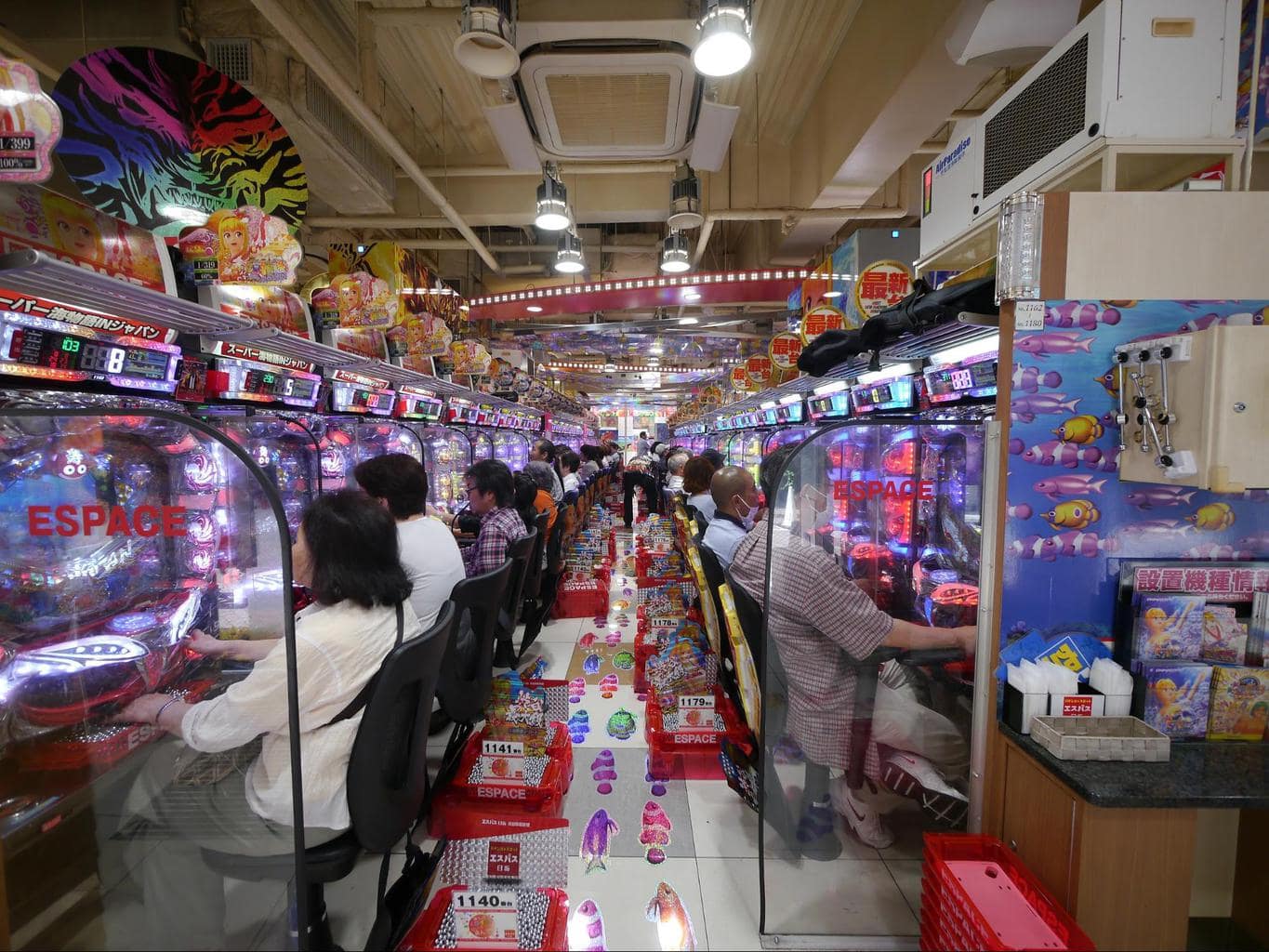
15 WEIRD, WONDERFUL AND QUIRKY EXPERIENCES THAT ARE TRULY UNIQUE TO JAPAN
Feel more Japanese than ever with sushi, geisha, samurai, vending machines and other Nihongjin quirks here .
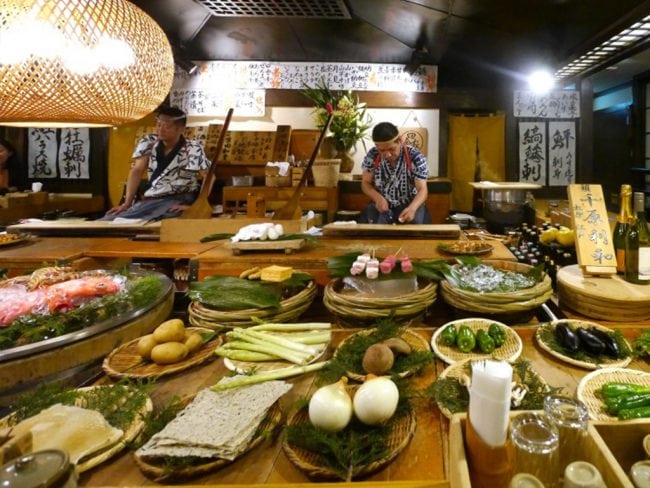
BEST FOODIE EXPERIENCES IN TOKYO FOR AN AUTHENTIC AND TASTY CULINARY JOURNEY
Japan has great food and that is a reason in itself to visit. Here are the best food experiences in Tokyo .
Where to stay in Shinjuku and Tokyo’s shopping areas
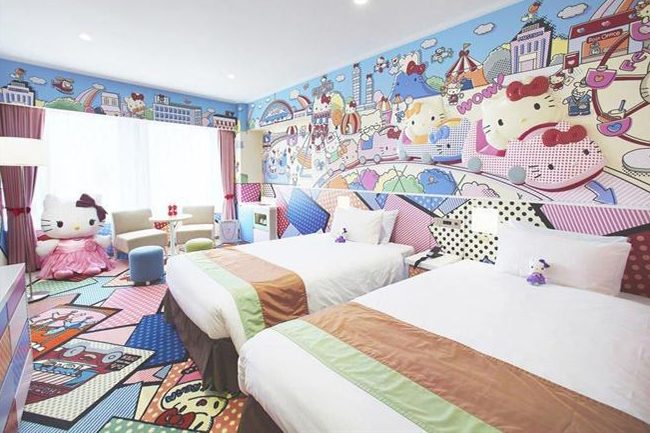
Keio Plaza Hotel
For something a bit different or if you are traveling with children, Keio Plaza Hotel has Hello Kitty fully themed rooms in Shinjuku. Shop to your hearts content then retire to childhood’s dreams.
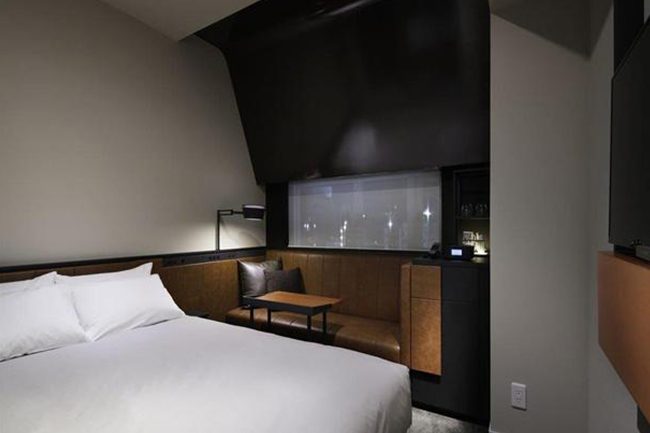
The Granbell Hotel
The Granbell Hotel in Shinjuku is a great affordable option. The lower price does come with very small rooms but you are unlikely to spend any time in them.
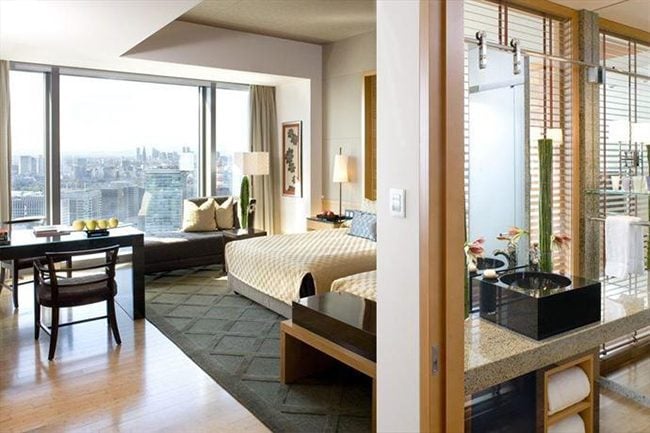
Mandarin Oriental
The Mandarin Oriental is another gem of Japan’s capital. Their usual refined luxury with Asian touches is befitting of Tokyo’s urban organised chaos.
Looking for something different? Check out more hotel options in Tokyo here .
Day 4 – A tale of Sumo wrestlers, Geishas and Samurais
Your last of your 4 days in Tokyo includes a more humanistic and cultural side to the city, where you will explore the various ancient art forms of Japan, Sumo, Geisha traditions and Samurai.
Sumo Wrestling
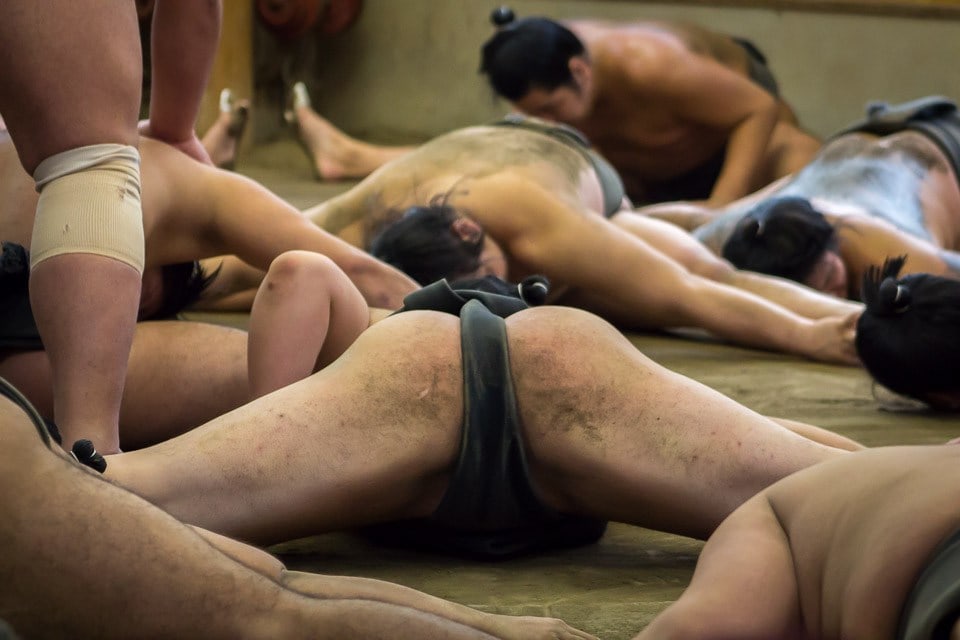
Start the day with a sumo tournament or a sumo practice at one of the stables. As these events are rarely accessible to foreigners without a Japanese speaking guide you will have to join one of the tours .
If it is tournament season (3 months of the year in Tokyo) then you can buy tickets to attend one of them. The tour I suggest includes a traditional lunch so you will be sorted.
Geisha makeover

The day must continue with another immersive Japanese activity: a full geisha and samurai make over at the Geisha Studio .
Here you will get he full make up and dress up experience and will emerge as a true Geisha. This is not a touristy thing, locals actually do this at the studios like the one I went to, in order to take photos. The entire transformation takes between 3-4h depending on how many there are of you and how many photos you want to take.
The longest part is the make up, which takes up an entire hour with layers and layers of paint and make up applied to the skin. If you are a man and want to transform into a samurai, the process is significantly shorter.
You can also transform as a couple, either two samurai, or two geisha or a geisha and a samurai and take individual or couple photos. The wig fitting and the kimono fit out are also lengthy and delicate processes.
Once you are kitted out there is a professional photo shot in the studio upper floors where you can immortalise your transformation for all to see, if they can recognise you! It is a fascinating insight into the life of this mesmerising world. Needless to say this must be booked ahead. Start earliest 2pm as the sumo tour usually ends between 11am-12pm. Here is my full experience.
If you want to complete the cultural exploration into this eminently Japanese tradition, you can join a geisha performance . While geishas are more traditionally found in Kyoto, you already know that there are also some performance theatres in the area around Sensoji Temple.
After you return back to being yourself a shower will be needed to get the paint off your hair and back properly to go back and take a shower. Your Tokyo itinerary is about to hit some of the most popular parts of the city.
Inakaya restaurant
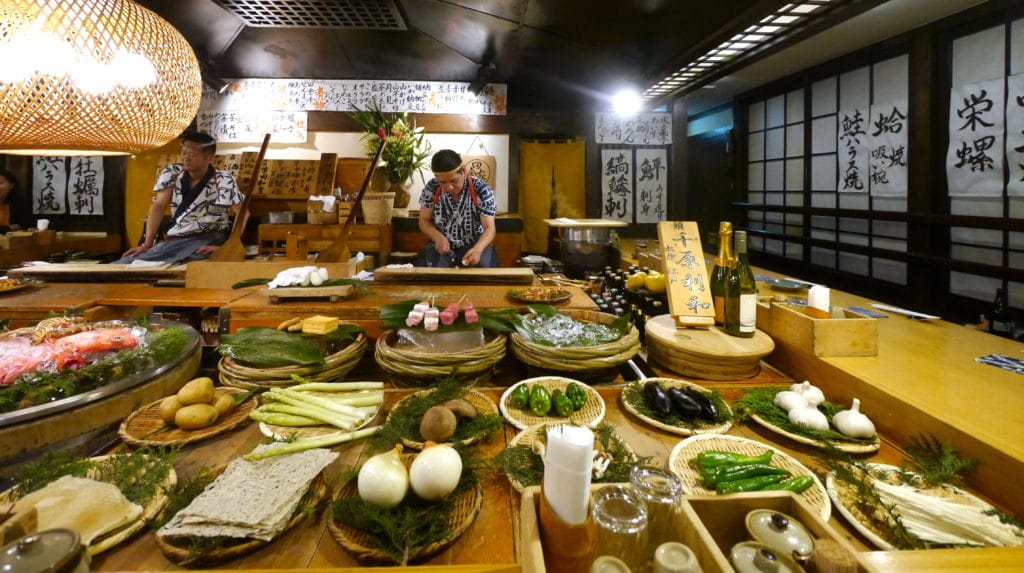
Have dinner early, around 7pm, at the famous and very local Robatayaki restaurant Inakaya , a Japanese traditional barbecue place of which there are two very near. You must book ahead.
Point at the vegetables, meats or fish you like and get the waiter to cook them for you in between the screams and yells of the entire staff every time a new order is made or served. You will not understand anything and might be a bit overwhelmed in the beginning but watch others and see what they order to make up your mind. Wash down with some Japanese beer.
The oysters they serve are GIANT, and have a price tag to match so be careful. There is a menu but it is only in Japanese so you will not be given a copy unless you ask as it will be mostly useless. Try the ginko nuts, the corn on the cob and the beef. The red mullet type of fish is also great and the asparagus were delicious. Chicken teriyaki is also a winner.
Shibuya Crossing
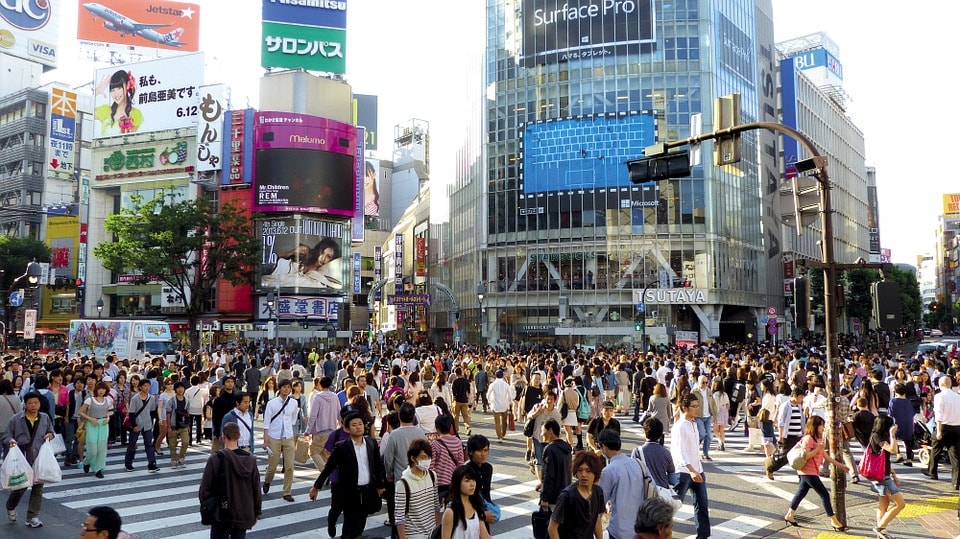
After dinner explore the very last stop in your authentic best of Tokyo trip: Shibuya crossing, in its full glory at night. The only lookout place to see it fully is from the inside of the Starbucks cafe above it where you will see the hundreds of people crossing the 4 pedestrian crossings that zigzag along the many traffic joints.
I was a little disappointed as it is nothing more than a crossing, but at night, the crowds and order that reigns in the apparent chaos was quite impressive. There are more strange and fun cultural experiences to be had which you can read about here .
It’s not easy to get tired of Tokyo, but if you do want an escape from the hustle and bustle, try Niseko in the north for some calm , adventure and natural beauty .
Read more about my Geisha transformation and the beauty of Niseko
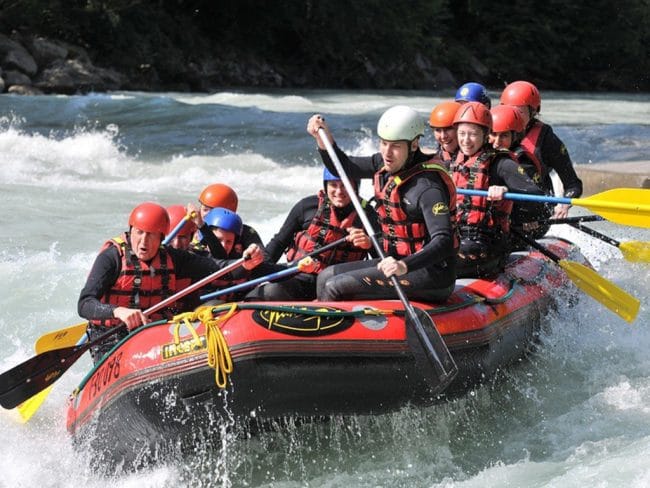
4 DAYS OF SUMMER IN THE MOUNTAINS OF NISEKO
Niseko is one of Asia’s best kept summer secrets. You’ll find cooler temperatures, nature and adventure here .
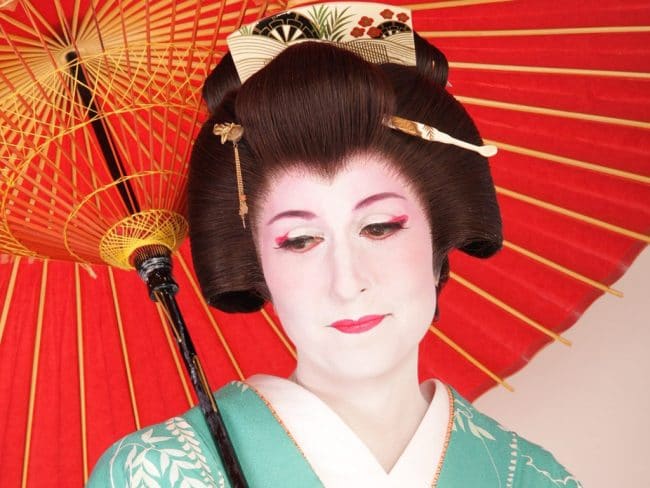
GEISHA MAKE-UP – MY EXPERIENCE BECOMING A GEISHA
Watch me transform as I take part in a traditional Japanese makeover in this geisha make-up session, including video!
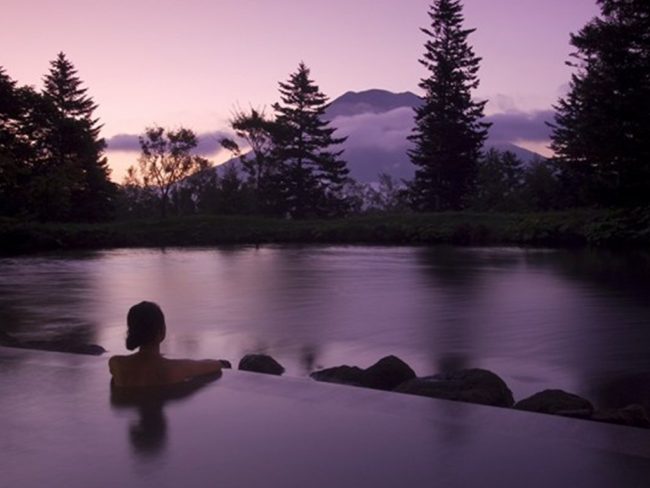
10 MUST-DO SUMMER ACTIVITIES IN NISEKO, HOKKAIDO
Hokkaido’s most famous ski resort destination is also a summer outdoor lover’s paradise. See why here .
This article was first published in Sept 2016 and updated in June 2020.
Pin this best of Tokyo article for your trip!
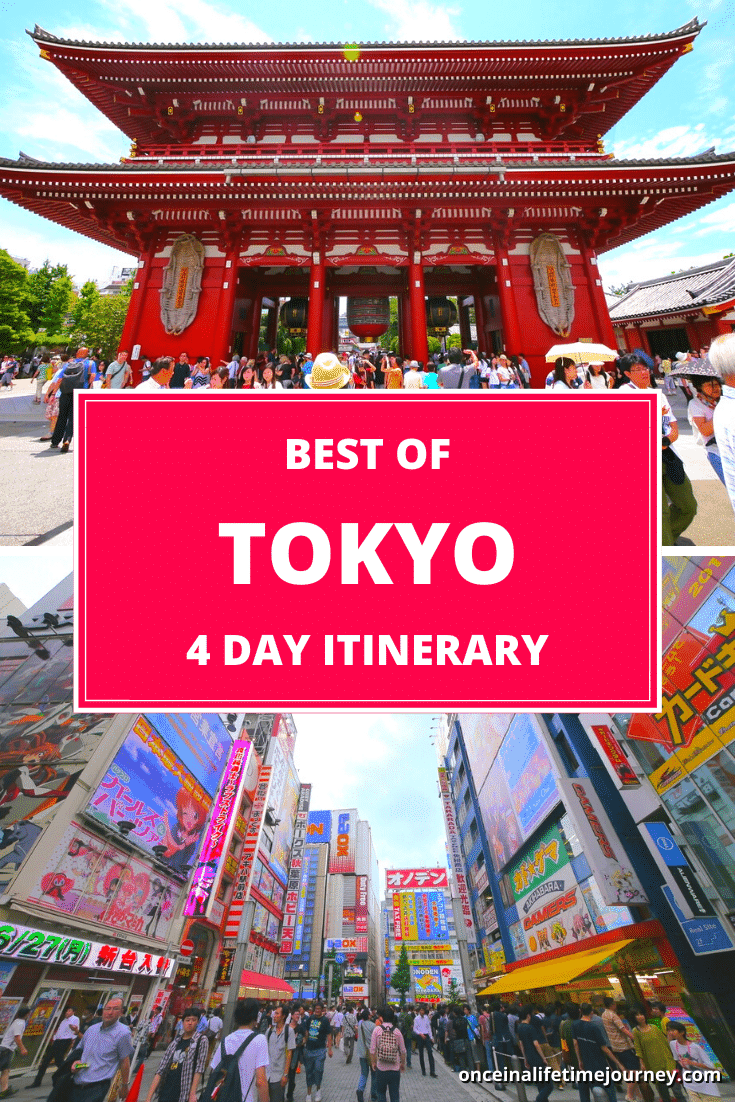
- Check if you need a visa, get help processing it at iVisa .
- Never ever leave without travel insurance. Get affordable coverage from World Nomads or long term insurance from Safety Wing .
- I find all of my flights on KAYAK . Check their Deals section too.
- Search for all your transportation between destinations on the trusted travel booking platform Bookaway .
- I book all my day trips and tours via GetYourGuide , they are the best and their tours are refundable up to 24h in advance.
- Get USD35 off your first booking with Airbnb .
- Compare hotels EVERYWHERE at HotelsCombined and book with Booking.com .
- Compare car rental prices at Rentalcars.com
You may also like
Weird and wonderful truly japanese experiences, united airlines business class review, san francisco –..., things you need to know about japan before..., things to do in asakusa from “play” to..., things to do in akihabara, the ultimate guide to shopping in tokyo, the best food experiences in tokyo, summer in niseko at the green leaf niseko..., review of narisawa tokyo – one of asia’s..., list of the best japanese movies and movies....
- Japan Tours
Classic Tokyo Tour

- Duration 5 Days
- Tour Type Private & Bespoke
- Tour Style City Break
- ITINERARY SUMMARY
- DETAILED ITINERARY
About This Trip
Itinerary summary.
- DAY PLACE HIGHLIGHTS
- 1 - 2 Tokyo Senso-Ji Temple, Meiji Shrine, Tea Ceremony, Tokyo Sky Tree
- 3 Mt. Fuji Ride a Boat on Lake Kawaguchiko to See Mt. Fuji
- 4 Tokyo Free Day to Explore Tokyo
- 5 Tokyo Departure
Day 1: Arrival, Tokyo
Welcome to Japan! Land in Tokyo airport and feel the order, efficiency, and hospitality the country is famed for. Outside the arrival hall, your assistant will welcome you. Please feel free to ask him any questions about Tokyo before he guides you to the shuttle bus and sees you off to your hotel.
After checking into the hotel, relax or do a little adventure around your hotel on your own.
Day 2: Tokyo City Sightseeing
Start the day at Tsukiji Outer Fish Market. Explore the market to see colorful Japanese ingredients, mouthwatering freshly-cooked foods, and a variety of Japanese kitchen supplies on sale, and try out freshly made Sushi. Continue to the Meiji Shrine cloaked in a lush forested area. Have a pleasant walk to take in its scenic surrounding and learn about the indigenous faith of Shinto in Japan. At lunchtime, your guide will recommend you a popular restaurant to try authentic local flavors.
In the afternoon, move on to historical Asakusa and discover the time-honored Senso-Ji Temple with many locals paying respect to Kannon, the Goddess of Mercy. Nakamise Shopping Street in the temple compound offers chances to seek exotic souvenirs, snacks, and sweets. Later, step into a tea house to partake in Chado and learn basic etiquette and the history of the Japanese tea ceremony. Finally, conclude with the magnificent views of the immense metropolis of Tokyo from the observation deck of the Tokyo Sky Tree. If on a clear day, you may also spot the iconic Mt. Fuji far away.
Day 3: Discovery of Mount Fuji from Tokyo
About 130kms southwest of Tokyo stands Mount Fuji, Japan's highest mountain and cultural icon. Today, a three-hour drive will take you to the 5th station to capture the spectacular views of the revered Mount Fuji, the scenic Fuji Five Lakes, and Hakone National Park.
Later, while cruising on the serene Lake Kawaguchiko, you will be overwhelmed by the elegancy of Mount Fuji again, especially when she is mirrored in the azure and peaceful water lake. If you like, hop on the Kachi Kachi Ropeway to the top of Mt. Fuji for a panorama view of Mt. Fuji instead. Or take the cruise and the ropeway both to take in the beauty of it with different perspectives. Near the lake, visit the village of Iyashi no Sato that is featured some traditional thatched roofed houses. There you can enjoy some leisure time before returning to Tokyo.
Day 4: Free Exploration in Tokyo
Tokyo has more than enough to see, taste, and feel. Today is for you to explore more in it at your own pace. Whether you want to discover traditional Japanese gardens, futuristic shopping malls, foremost art scenes, or animation culture, Tokyo has for you. It will be nice to wander through the outskirt parks of the Imperial Palace or spend the day at Ueno Park boasting picturesque scenery and the largest collection of the nation's important cultural properties, like the National Museum of Nature and Science, Tokyo Metropolitan Art Museum, Ueno Zoo, the Ueno Royal Museum.
For animation fans, Studio Ghibli is a good choice. It's famed for producing the animation films such as My Neighbor Totoro, Spirited Away, and Howl’s Moving Castle. When comes to shopping, the Harajuku with upscale boutiques and youth fashion and the high-end Ginza will satisfy customers of different ages.
Day 5: Tokyo, Departure
Time to say goodbye to Tokyo. Pack your happy memories and overloaded baggage and take the shuttle transfer to the airport for your onward journey to the next destination.
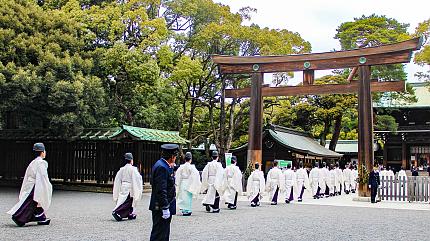
What Our Clients Say About Us
How it works.

CONTACT A TRAVEL EXPERT
1-to-1 Service | Reply within 24hrs | Expert's Advice
Quick Question


4 Days 3 Nights Japan Tour Packages
Explore japan | journey to the cultural treasure trove, jewels of japan | tokyo to osaka discovery, discover japan | temples, technology, and tradition, legends of japan | journey across diverse landscapes, treasures of japan | group tour package, explore tokyo | gateway to the land of rising sun, best of japan | ancient shrines to futuristic skylines, japan cultural trails | group tour package, japan unveiled | a journey through time and innovation, japan couple tour | a romantic escape, classic wonders of japan | group tour package, scenic getaway to japan | group tour package, japan through time | historic trails and timeless traditions, tokyo and osaka wonders | a tale of two cities, the instagrammable japan | cherry blossom special, exclusive japan with flights | free excusion to owakudani valley, mount fuji package japan climbing special, glimpse of central japan | group tour package, best of japan with free universal studios tickets, japan odyssey | cityscape to scenic escape, discovering tokyo & osaka | urban wonders & timeless traditions, tourism board alliances, newly added japan experiences, more things to do in japan, japan tourism, popular japan attractions.
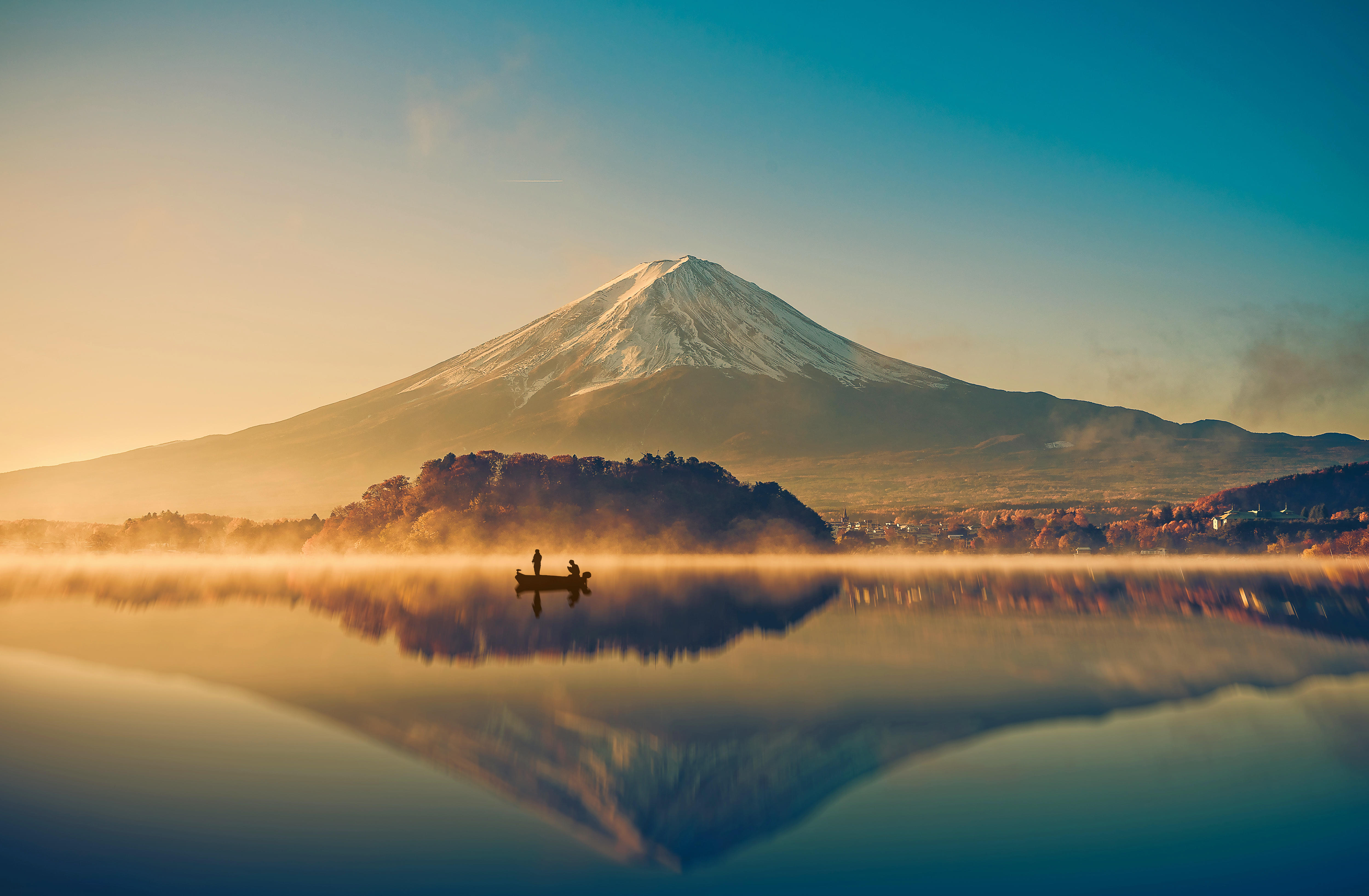
More Japan Attractions
Popular related destinations.

Why Choose Thrillophilia
Japan travel guides.
- 4 days tours
Japan 4-Days Tours and Itineraries
Discover the best 4-Days tours in Japan with Bookmundi. We offer a total of 2 Japan 4-Days tours and itineraries with many customer reviews.
Showing 2 Trips in Japan
- Most Popular
- Lowest Price First
- Highest Price First
- Lowest Duration First
- Highest Duration First
- Highest Discount
Japan 4 days Tour Reviews
- Mrs. Maree B.
- Mrs. Gaynor F.
Tours in Japan - Questions and Answers
- Do people in Japan speak English?
- What is the best time to visit Japan?
- Are credit cards widely accepted in Japan?
- Is Japan expensive?
- Japan Tours
- Japan Eco Tours
- Japan Solo Trips
- Japan Tours for Young Adults
- Japan Guided and Escorted Tours
- Japan Group Tours
- Japan Tours for Senior Citizens
- Japan Family Tour Packages
- Japan Travel Deals
- Japan Small Group Tours
- Japan Budget Tours
- Japan Tailor-made Vacation Packages
- Japan Last Minute Deals
- Japan Private Tours
- Japan Luxury Tours
- Japan Customized Tours
- Japan Tour Operators
Popular Destinations
- Tokyo Tours
- Kyoto Tours
- Osaka Tours
- Hiroshima Tours
- Hakone Tours
- Sapporo Tours
- Kanazawa Tours
- Takayama Tours
- Mt Fuji Tours
- Mount Koya Tours
Popular Activities
- Adventure Tours
- Art and architecture Tours
- Beach Tours
- Bicycle Tours
- City sightseeing Tours
- Classes and workshops Tours
- Countryside and village visits Tours
- Cultural, religious and historic sites Tours
- Explorer Tours
- Local culture Tours
- Museum and gallery visits Tours
- Natural landmarks sightseeing Tours
- Sightseeing Tours
- Trekking and Hiking Tours
- Walking Tours
Upcoming Departures
- Spring tours
- Winter tours
- Summer tours
- September 2024 tours
- October 2024 tours
- November 2024 tours
- December 2024 tours
- January 2025 tours
- February 2025 tours
- March 2025 tours
- April 2025 tours
- May 2025 tours
- June 2025 tours
- July 2025 tours
- August 2025 tours
- September 2025 tours
- October 2025 tours
- November 2025 tours
- December 2025 tours
- February 2026 tours
- March 2026 tours
- April 2026 tours
- May 2026 tours
- June 2026 tours
- July 2026 tours
- August 2026 tours
- September 2026 tours
Trips per Duration
- 1 day tours
- 6 days tours
- 1 week tours
- 8 days tours
- 9 days tours
- 10 days tours
- 11 days tours
- 12 days tours
- 13 days tours
- 2 weeks tours
- 15 days tours
Trending Travel Guides
- Trekking in Japan: The 6 Best Multi-day Hiking Trails
- Walking the Kumano Kodo Trail: 5 Popular Routes
- Japan’s Golden Route: Experience the Best of Japan
- Great Japan Itineraries: How Many Days to Spend?
- The Top 10 Places to Visit in Japan
- Cherry Blossom Festival in Japan: 10 Best Spots
- Things to do in Japan
- Two Weeks in Japan: Top 2 Recommendations
- 10 Days in Japan: Top 3 Recommendations
- Best Time to Visit Japan
- Japan in March: Festive Galore in Warm Weather
- Japan in April: Weather, Tips & Cherry Blossoms
- Japan in January: Weather, Tips & New Year Festivities
- Japan in May: Pleasant Weather and Gorgeous Countryside
- Japan in July: Weather, Festivals and Lavender Bloom
- Japan in November: Pleasant Weather and Autumn Colors
- Japan in February: Weather, Tips & Snow Sculptures
- Japan in August: Summer Weather and Beach Excursions
- Japan in September: Weather, Tips & Lively Parades
- Japan in October: Cool Weather and Autumn Festivities
- Japan in June: Warm Weather and Better Rates
- Japan in December: Sunny Weather and Snowy Slopes
- Planning a Trip to Japan: Travel Tips and Advice
- Summer in Japan: Sun, Fun & Weather
We use cookies to analyze traffic and give you personalized content and ads. It's an essential part of giving you a great site experience. Click on the 'Accept' button if you agree with our use of tracking and analytical cookies. Please refer to our Cookie Policy for more information.

Tokyo Welcome Package 4D/3N (without Airport Transfer)

Tokyo Welcome Package 4D/3N (with Narita Airport Transfer)

4 days, 3 nights
The following is a suggested itinerary for first time travelers to Japan who spend 4 days, 3 nights in the Kanto Region around Tokyo .
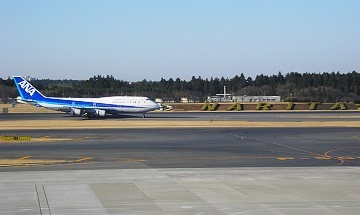
A nationwide Japan Rail Pass does not pay off for this itinerary. Below are some sample budgets for the itinerary, excluding airfare. Find out more about the sample budgets and about the current yen exchange rates .
Questions? Ask in our forum .


- All Group Tours 2024
- All Group Tours 2025
- Signature Tours (Non-Anime)
- Cherry Blossom Season
- Anime Related Tours
- Search Tours
- Tour by theme
- Cherry Blossom
- Anime / Manga / Game
- Highlights Japan
- Signature Tours
- Festival Tours
- Grand Tours
- Southern Japan
- Hokkaido & Northern Japan Tours
- Quilt Tours
- Snow Monkey
- Japanese Ancestry
- All Private Tours
- Cruise Connection Tours
- Custom Tours
- Last Minute Deal
- Offers & Specials
- Destinations
- Experiences
- Trip Advisor's Must-See
- Brochure Request
- Japan Tour Movies
- Terms & Conditions
- Trip Reviews
- Guest Login
- Tour Airfare
- Airport Transfer
- How to Book
- Travel Tips
Travel Insurance
- Documents Download
- USA/Canada 1-800-285-2726
- Australia (02) 8006 4411

- View Saved Tour
US/Canada Toll Free
1-800-285-2726
- US/Canada Toll Free 1-800-285-2726
- Australia (02)8006 4411
4 Days Private Tokyo 4 Days Tour
- From Tokyo To Tokyo
- Tuesday, April 30, 2024 Updated
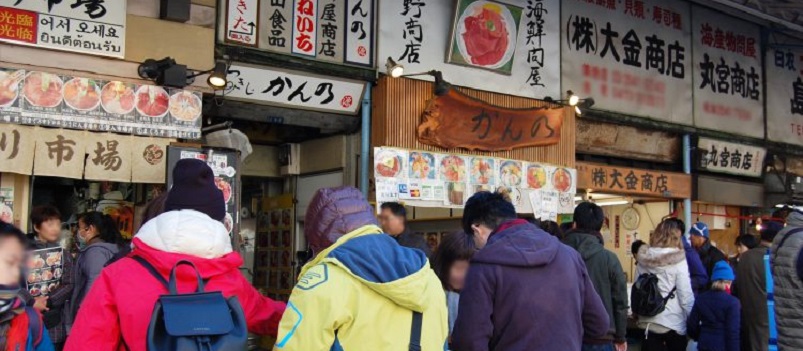
Tour Descriptions
- Dates & Quote
- Accommodations
Tour Departure and Prices 1) Price per person. 2) Airfare is not included.

Tour Includes
- - Travel Insurance
- - Optional Day Trips & Excursions
- - Admission Fees, Tax & Gratuities at selected Destinations
Travel Highlights
Important information, maximum group size.
The maximum number of participants will not exceed 26 people during your Japan tour.
Single Supplement
Single travelers are required to pay a single supplement in order to guarantee single room accommodation.
We request one suitcase, one carry-on bag, and an overnight bag per person. The tote bag we provide can be used to hold any small merchandise/souvenirs purchased during your tour. When you check out, bring your luggage to the lobby and the driver will assist in loading it. When you arrive at the next hotel, the driver will unload your luggage for you to bring to your room. Please note: The maximum weight of a checked in bag is typically 20 Kilograms or 44 Pounds. You will be traveling with your luggage except during the bullet train ride (if applicable).
Accommodation
All hotel rooms come with a full bathroom and room amenities free of charge unless stated otherwise.
Transportation
All motor coaches come equipped with air-conditioning, plenty of space, comfortable seats, and Wi-Fi.
International Flights
All of our tours begin in either Tokyo or Osaka/Kyoto. When beginning or ending a tour in Tokyo, please book flights to or from Narita International Airport or Haneda International Airport. For tours beginning or ending in Osaka/Kyoto, please book flights to or from Kansai International Airport or Itami Airport. You can also contact us if you would like for Japan Deluxe Tour's to arrange your flights.
Fitness & Shoes
Traveling and visiting sights in Japan includes a good amount of walking. To fully enjoy the tour, please be prepared to keep up with the pace of the group, climb stairs with no difficulty, and wear comfortable shoes for all day use.
- B :Breakfast
Dining Experience
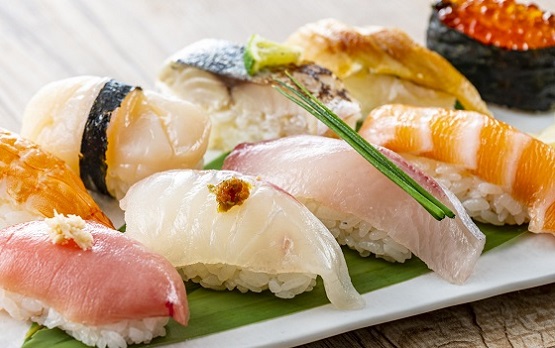
Cultural Experience
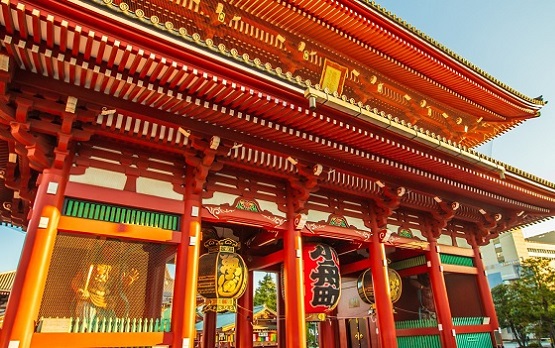
Traditional Culture
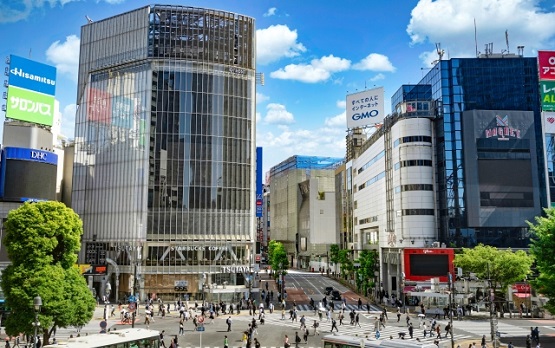
Kawaii Culture
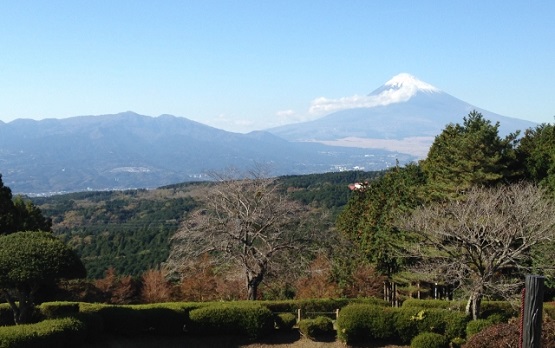
Hakone (Optional)
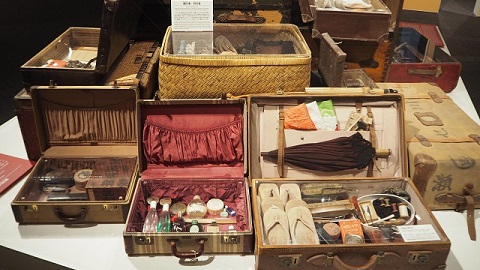
Take the journey and discover the surprisingly rich history of Japanese Immigrants Nikkei Spots | Yokohama
Add Yokohama's Japanese Overseas Migration Museum to trace the history of Japanese Ancestry History during your Japan Tour.
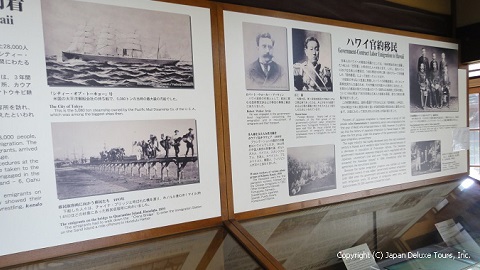
Take the journey and discover the surprisingly rich history of Japanese Immigrants Japanese American History Tour | Hiroshima
Add a visit to Suo Island’s Museum of Japanese Emigration to Hawaii to trace the history of Japanese Ancestry History during your Japan Tour!
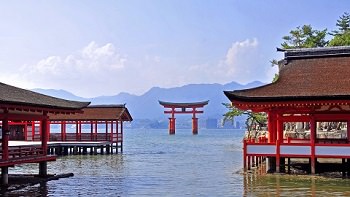
Discover the charms of Kyushu in Southern Japan Southern Japan | City Choice
Go beyond the ordinary and extend your tour to make the most of your vacation. Our Southern Japan City add-on option gives you a look into Japanese culture and scenery that you are sure to fall in love with!
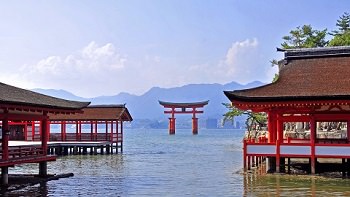
Take the journey and discover the surprisingly rich history of Japanese Immigrants Southern Japan | Hiroshima
Add a trip to Hiroshima to see countless treasures during your tour, including the famous the A-Bomb Dome and the iconic floating gates of Itsukushima Shrine!
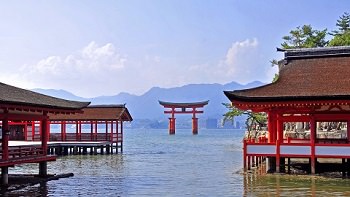
The highlights of Kumamoto & Takachiho Southern Japan Kumamoto & Takachiho
Go beyond the ordinary and extend your tour to make the most of your vacation. Our Southern Japan Kumamoto & Takachiho add-on option lets you see a unique blend of nature and Japanese history you won't find in Tokyo or Kyoto.
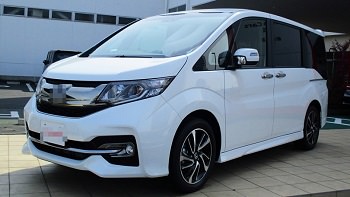
Private Transportation Upgrade
Skip out on using public transportation during your private tour with an upgrade to a private sedan/minivan for your transportation needs!

Keep connected to the internet during your tour with a data SIM Card. This only provides wifi connection, not a phone number. ※Please check if your device is compatible with the SIM Card. ※If you live outside the U.S., you cannot select the SIM card.

Flight From Tokyo To Osaka
We can arrange a flight from Tokyo (HND/NRT) to Osaka (KIX/ITM) if you would like to extend your stay in Osaka, or if you are scheduled to fly home from Osaka.
Customer Reviews
Book with confidence.
All small-group journeys are guaranteed to operate with just 6 guests.
- Detailed Itinerary
Reserve Your Air with Japan Deluxe Tours
Call for preferred rates through our partner.
Protect your investment.
Tour Standard
- All ground transportation
- All admission fees as listed
- Gratuities & Local Taxes
- Round-trip airport transfers
- licensed tour guide throughout
The perfect 4 days itinerary
Japan, an archipelago in East Asia, is a land of striking contrasts where ancient traditions seamlessly blend with cutting-edge technology. From the bustling metropolis of Tokyo , with its towering skyscrapers and neon lights, to the serene temples and gardens of Kyoto , Japan offers a unique cultural experience. Visitors can indulge in world-class cuisine, explore historic castles, and witness the beauty of cherry blossoms in spring. This 4-day itinerary aims to provide a balanced taste of Japan's rich heritage, modern marvels, and natural beauty.
What to do in Japan?
This 4 days itinerary is the perfect guide to the best things to see in Japan. It includes day-by-day activities, travel tips, and the top places to visit.
Day 1: Tokyo: The Heartbeat of Modern Japan
Start your journey in Tokyo , the bustling capital of Japan. Begin with a visit to the iconic Senso-ji Temple in Asakusa, Tokyo 's oldest temple. Stroll through Nakamise Shopping Street leading up to the temple, where you can buy traditional snacks and souvenirs.
Head to the Tokyo Skytree , the tallest structure in Japan, for breathtaking views of the city. Afterward, explore the trendy district of Shibuya , famous for the Shibuya Crossing , one of the busiest pedestrian crossings in the world. Don't miss the Hachiko Statue , a tribute to the loyal dog Hachiko.
Experience the vibrant nightlife of Shinjuku . Visit the Robot Restaurant for an eccentric show or explore the Golden Gai area, known for its narrow alleys packed with tiny bars and eateries. End your day with a delicious sushi dinner at a local restaurant.
Day 2: Kyoto: A Glimpse into Japan's Past
Travel to Kyoto , the cultural heart of Japan. Begin your day with a visit to the Fushimi Inari Shrine , famous for its thousands of red torii gates. Take a serene walk through the torii gate pathway up the mountain.
Head to the Kinkaku-ji (Golden Pavilion), a stunning Zen Buddhist temple covered in gold leaf. Afterward, visit the Ryoan-ji Temple , known for its beautiful rock garden. Enjoy a traditional Japanese tea ceremony at a local tea house.
Explore the historic Gion district , known for its traditional wooden machiya houses and geisha culture. Stroll through Hanami-koji Street and enjoy a kaiseki (multi-course) dinner at a traditional restaurant.
Day 3: Osaka: The Kitchen of Japan
Travel to Osaka , known for its modern architecture, nightlife, and hearty street food. Start your day at Osaka Castle , a historic landmark surrounded by beautiful gardens. Explore the castle museum to learn about its history.
Visit the bustling Dotonbori district , famous for its neon lights, street food, and entertainment. Try local specialties like takoyaki (octopus balls) and okonomiyaki (savory pancake). Take a boat ride along the Dotonbori Canal for a different perspective of the area.
Head to the Umeda Sky Building for panoramic views of Osaka from the Floating Garden Observatory. End your day with a visit to the Shinsekai district , known for its retro charm and kushikatsu (deep-fried skewers).
Day 4: Nara and Hiroshima: Historical and Peaceful Reflections
Travel to Nara , Japan's first permanent capital. Visit the Todai-ji Temple , home to the Great Buddha statue, one of the largest bronze statues in the world. Stroll through Nara Park , where you can interact with friendly deer that roam freely.
Head to Hiroshima to visit the Peace Memorial Park and Museum, dedicated to the victims of the atomic bombing in 1945. Reflect on the historical significance and the message of peace conveyed through the exhibits.
Take a short ferry ride to Miyajima Island , known for its iconic floating torii gate at Itsukushima Shrine . Explore the island's scenic beauty and enjoy a dinner featuring fresh seafood before returning to Hiroshima for the night.
Discover more Japan itineraries
Was this helpful?
REQUEST INFORMATION
Don't know which tour is suitable for you.
Let us help you. Please tell us more about your interests. We will send some suggestions based on your needs.

- Trip Finder
- Saved Tours

All Japan Group Packages 2024,2025 & 2026
Search Japan tour packages from 1 week to 22 days using filters such as season, length, region, etc.
- Our California office it's now
- 23:16 PM(Thu) - We Are Close
- Tel: 1-909-988-8885 Toll free : 1-855-325-2726 (USA & CANADA)
- Whatsapp: Website Line : 1-909-818-5901

- Monday to Friday 8:30AM - 5:30PM (PST) Saturday 9:00AM - 3:00PM (PST)
Our Japan tour itineraries are suited for first time visitors to seasoned travelers. The duration of our tours range from 5 to 27 days. Whether you want to see the best of Japan in a shorter time, or take your time in each city, we offer Japan tour packages to suit your preferences. Select a Japan travel package that covers favorite sites in 1 week, or stay longer for a more in-depth experience.
Group Tours
Private Journeys
Custom Group Travel
Featured Group Tours
Limited Departure Tours
306 trips through Japan

Beyond Tokyo: Kawazu Cherry Blossoms & Snow Monkey Tour
Kawazu / Mt Fuji / Matsumoto / Yudanaka / Obuse / Nagano
5 Days 4 Nights | from US $1898.00
Take an exclusive 5-day trip Beyond Tokyo to experience the blooming of Japan's earliest cherry blossoms at the Kawazu Cherry Blossom Festival and a trip to see the adorable Snow Monkeys!

Beyond Tokyo: Baby Blue Eyes, Wisteria & Fuji Shibazakura Festival
Hitachinaka / Mito / Ashikaga / Karuizawa / Matsumoto / Mt Fuji
Take a 5-day trip Beyond Tokyo for some of Japan's most enchanting flower scenes - featuring the flower festivals of baby blue eyes, wisteria, and shibazakura!

Tokyo to Kyoto Summer Tour
Tokyo / Mt Fuji / Hakone / Kanzanji Onsen / Kyoto
6 Days 5 Nights | from US $1898.00
Explore the top locations in Tokyo and Kyoto (with one day at Mount Fuji and Hakone) during our 6-day Tokyo to Kyoto Summer Group Tour.

Tokyo to Kyoto Autumn Tour

Beyond Tokyo Summer: Nikko, Karuizawa & Snow Monkey Tour
Nikko / Takasaki / Karuizawa / Yudanaka / Matsumoto
Join our Beyond Tokyo Summer Tour and explore Nikko, Karuizawa, Yudanaka, and other must-see regions outside Tokyo and its immediate area.

Beyond Tokyo Autumn: Nikko, Karuizawa & Snow Monkey Tour
Discover what lies Beyond Tokyo in an itinerary that includes visits to destinations in Nikko, Karuizawa, and Nagano, all during the stunning autumn season.

Tokyo to Kyoto Cherry Blossom Tour
6 days 5 nights | from us $1998.00.
Tour the very best destinations from Tokyo to Kyoto, including a day at Mount Fuji / Hakone, in the enchanting cherry blossoms season during this special 6-day Cherry Blossoms Tour.

Tokyo Anime Tour with Hakone & Mount Fuji Autumn
Tokyo / Mt Fuji / Hakone
7 Days 6 Nights | from US $2398.00
Our Tokyo Anime Autumn Tour is a 7-day tour discovering the cute and colorful anime districts in Tokyo, visiting popular and hidden anime shops, the Ghibli Museum, and a day in Hakone / Mount Fuji.

Tokyo Anime Tour with Hakone & Mount Fuji Summer
Join our Summer Tokyo Anime group tour to explore Tokyo's must-see anime districts, with once in a lifetime experiences including the Ghibli Museum, and a day spent visiting Hakone / Mt. Fuji.
Tokyo Anime Tour with Hakone & Nagoya Autumn
Tokyo / Hakone / Nagoya
Join our delightful autumn Anime Tour of Japan, exploring anime and manga must-sees through Tokyo, Hakone, and Nagoya.
Travel Styles
Deluxe-Plus
Spring Tours (Mar - May)
Summer Tours (Jun - Aug)
Autumn Tours (Sep - Nov)
Winter Tours (Dec - Feb)
Cherry Blossom Tours
Autumn Leaves Tours
Festival Tours
Special Interest Tours
Tours for First Timers
Tours for Repeaters
Family Friendly Anime Tours
Anime Tours
Small Group Tours
Luxury Small Group Tours
Small Group Departures
Walking Tours
Seasonal Flowers Tours
Art & Architecture Tours
Best Japan Tours
Photography Tours
Birding & Wildlife Tours
Garden Tours
Pottery Tours
Japanese Ancestry Tours
Pre & Post Cruise Tours
Starting City
Sapporo to Sapporo
Sapporo to Kushiro
Sapporo to Tokyo
Sapporo to Osaka
Sapporo to Fukuoka
Sapporo to Okinawa
Kushiro to Kushiro
Kushiro to Memanbetsu
Tokyo to Sapporo
Tokyo to Tokyo
Tokyo to Kyoto
Tokyo to Osaka
Tokyo to Hiroshima
Tokyo to Fukuoka
Tokyo to Okinawa
Tokyo to Seoul
Tokyo to Kushiro
Kyoto to Tokyo
Kyoto to Kyoto
Kyoto to Osaka
Okinawa to Okinawa
Osaka to Sapporo
Okinawa to Osaka
Osaka to Tokyo
Osaka to Osaka
Osaka to Kotohira Onsen
Osaka to Fukuoka
Osaka to Okinawa
Fukuoka to Sapporo
Fukuoka to Tokyo
Fukuoka to Osaka
Fukuoka to Fukuoka
Fukuoka to Okinawa
Seoul to Tokyo
Taipei to Tokyo
Beijing to Tokyo
Hong Kong to Tokyo
Okinawa to Sapporo
Okinawa to Kushiro
Okinawa to Tokyo
5 Day Japan Tours
6 Day Japan Tours
7 Day Japan Tours
8 Day Japan Tours
9 Day Japan Tours
10 Day Japan Tours
11 Day Japan Tours
12 Day Japan Tours
13 Day Japan Tours
14 Day Japan Tours
15 Day Japan Tours
16 Day Japan Tours
17 Day Japan Tours
18 Day Japan Tours
19 Day Japan Tours
20 Day Japan Tours
21 Day Japan Tours
22 Day Japan Tours
27 Day Japan Tours
Departure Month
Japan Tours in January
Japan Tours in February
Japan Tours in March
Japan Tours in April
Japan Tours in May
Japan Tours in June
Japan Tours in July
Japan Tours in August
Japan Tours in September
Japan Tours in October
Japan Tours in November
Japan Tours in December
Hokkaido Tours
Tohoku Tours
Kanto Tours
Chubu Tours
Kansai Tours
Shikoku Tours
Chugoku Tours
Kyushu Tours
Okinawa Tours
Must-See Cities
Kiso Valley
Sado Island
Akan National Park
Shirakawago
Kinosaki Onsen
Seasonal Attractions
Sanja Festival
Cherry Blossom Viewing at Yoshinoyama
Sendai Aoba Festival
Cherry Blossoms
Cherry Blossoms in Hokkaido
Cherry Blossoms in Tohoku
Cherry Blossom Festival at Matsumae Park
Cherry Blossom Festival at Ueno Park
Cherry Blossoms at Maruyama Park
Cherry Blossoms & Azaleas at Mifuneyama Rakuen
Shibazakura Festivals
Shibazakura Festivals of Hokkaido
Fuji Shibazakura Festival
Great Wisteria at Ashikaga Flower Park
Baby Blue Eyes Flowers at Hitachi Seaside Park
Takayama Spring Festival
Kyoto Aoi Festival
Tateyama Kurobe Alpine Route
Miyako Odori
Tenjin Festival
Tohoku 3 Great Summer Festivals
Aomori Nebuta Festival
Akita Kanto Festival
Sendai Tanabata Festival
Gion Summer Festival
Awa Odori Dance Festival
Lavenders in Hokkaido
Tanabata Fireworks
Karatsu Kunchi Festival
Jidai Festival
Jingu Gaien Ginkgo Avenue
Lake Kawaguchi Momiji-Kairo
Autumn Leaves
Takayama Autumn Festival
Obara Shikizakura Festival
Japan Winter Festivals
Sapporo Snow Festival
Lake Shikotsu Ice Festival
Asahikawa Winter Festival
Sounkyo Ice Waterfall Festival
Ice Breaker Cruise
Wakasagi Smelt Fishing
Kawazu Cherry Blossom Festival
Things Not to Miss
Hakone Open-Air Museum
Gion Geisha District
Kyoto Cuisine with Maiko
Green Tea Ceremony
Shikoku Pilgrimage Route
Takayama Festivals
Green Tea Ceremony with Maiko Interaction
Sushi-Making Experience
Tokyo SkyTree
Ghibli Museum
Kiyomizu Temple
Kenrokuen Garden
Hikone Castle
Zen Meditation (Zazen)
Calligraphy Lesson (Shodo)
Ikebana Lesson (Flower Arrangement)
Kimono Experience
Taiko Lesson
Dotonbori Street Food Tour
Nakasendo Hike
Ise Grand Shrine
Shiretoko Nature Cruise
Seikan Undersea Tunnel
The Omiya Bonsai Art Museum
Asakusa Sensoji Temple
Kinkaku-ji Temple (Golden Pavillion)
Todaiji Temple
Fushimi Inari Shrine
Miho Museum
Koka Ninja Mansion
Mikimoto Pearl Island
Himeji Castle
Izumo Grand Shrine
Naoshima Island
Gunkanjima Island
Mt Takasaki Monkey Park
Matsumoto Castle
Tokyo Tower
Snow Monkeys
Most Beautiful Places in Japan
Otaru Snow Light Path
Arashiyama Bamboo Forest
Kurashiki Canal Area
Miyajima Island
Shimanami Kaido
Takeda Castle
Motonosumi-Inari Shrine
Adachi Museum of Art
Takachiho Gorge
Oirase Stream
Tottori Sand Dunes
Wisteria Tunnel at Kawachi Fuji Gardens
Why Travel on Our Group Tours
Lorem Ipsum is simply dummy text of the printing and typesetting industry. Lorem Ipsum has been the industry's standard dummy text ever since the 1500s, when an unknown printer took a galley of type and scrambled it to make a type specimen book.
Best Itinerary
Planned by experts, based on seasonal favorites and must-see sites.
Budget-friendly
Choose your style and split cost with other passengers
Hand-picked Accommodations
Chosen by our experienced staff
Fully Guided
Guide is available to you 24/7 and sleeps in the same hotel
Unique experiences
Learn to create your own Sushi, meet a geisha or maiko, and more
Meet locals and visit rural areas of Japan you might miss on other tours
What our customers say
4.9 stars based on 554 REVIEWS
Billy, our guide was wonderful and very informative. Our driver was super and the van was just the right size. The 2 other guests were the best.
The tours was very interesting as it allows me to have a very good idea about Japan. I was able to visit many places such as temple, shrines, castle, Japanese gardens as well as historical places. Additionally, the tour allowed me to have nice experience from Japan such as the good food, Tea ceremony, the rapid train and typical Japanese Hotel. Furthermore, I have discovered through the tour the lovely nature of Japan and learned a lot of information about its history and its tradition.
Absolute;ly loved the tour! Billy was a fantastic guide and very informative about the culture and entertaining.
This was a fantastic way to see Japan. We saw so many sites and we had the opportunity to experience so many things. Learning how to make sushi was not only fun, but it was also a tasty lunch. Billy was a knowledgeable and entertaining tour guide. Kamata San is definitely a highly skilled bus driver. Learning about the varying cuisines in the different regions of Japan was a delicious lesson to learn.
Great variety of places, unique experiences and entertaining, informative Guide. AJT staff very helpful - good to have personal service.
Don't know which tour is best for you? Let us help you.
- Request Information
- share trip finder saved tours inquiry book now

Email Signup
Input your search keywords and press Enter.

A View Outside
A Travel and Lifestyle Blog

4 days in Tokyo: The Perfect Itinerary
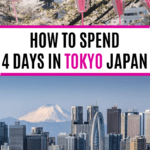
Tokyo is a mesmerising city that everyone needs to visit at least once in their lifetime. The city of Tokyo has it all; from ancient shrines to robotic restaurants, peaceful gardens to a booming nightlife, a city where you will cleverly find the old mixed with the new.
However, Tokyo can also be overwhelming especially for a first-timer – deciding where to go, what to eat, how to budget, where to stay, how to respect the culture. Don’t worry though – this incredibly detailed and comprehensive 4 days in Tokyo itinerary has you covered.
If you are planning to spend more time in Japan, then this 2-week itinerary has everything you need to know from the best things to do in cities such as Osaka, Hiroshima and Kyoto and day trips you can take from Japanese cities.
Firstly, you will find some top tips on the best time to visit Tokyo and useful tips and resources to help you make the most of your 4 days in Tokyo and then we’ll jump straight into where to go, what to see and the best places to eat.
Disclaimer: This post may contain affiliate links. If you purchase through my link, I may receive a small commission at no additional cost to you.
The Best Time to Visit Tokyo
As someone who has lived in Tokyo, I can honestly say that there is ‘no best time to visit Tokyo’ if you’re lucky enough to have the chance to visit – grab it with both hands! Tokyo has four distinct seasons and each of them come with their own advantages and disadvantages. The following are some points you might want to consider for your 4 days in Tokyo itinerary:
- If you want to experience Cherry Blossom season, then the best time to visit is in March/April but keep in mind that this is the most expensive time of year to visit.
- September to November (Autumn) is personally my favourite time of year to visit Tokyo, the air is crisp and everywhere is covered in beautiful, golden leaves.
- Late June to the end of August is hot, humid and sticky in Tokyo but if you plan on climbing Mt. Fuji, it’s important to note that this is only possible during July and August.
- Typhoons typically occur in the month of June and the month of September in Tokyo and typically last for 2 days.
- Tokyo does have a rainy season from mid-June to late July, but it doesn’t rain every day so it won’t impact your travels that much.
- Winter months are December/January/February but it generally doesn’t get too cold. Snow does fall but it’s not that common in Tokyo.
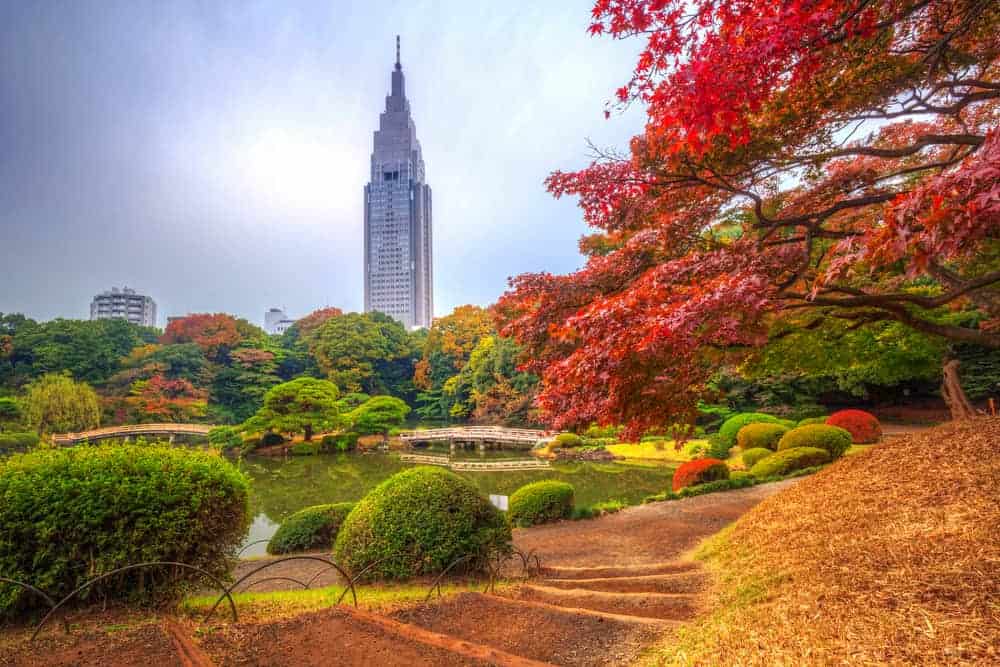
How to get around Tokyo
The absolute best way to get around during your 4 days in Tokyo is by using the Tokyo metro system. The subway system in Tokyo is one of the best transport systems in the world and it has to be as it caters to over 20 million passengers daily!
You can purchase a 24/48/72 hour Tokyo subway unlimited pass online here in advance.
When you first see the Tokyo subway map your eyes may begin to blur but don’t panic, it’s honestly not as confusing at it seems. Download the Tokyo Subway Navigation app which will detail exactly how to get from A to B and it can be used offline too.
Check out this guide about which has 10 essential travel apps you should definitely download before your trip to Japan.
Find your platform by looking for your train line and its direction on the sign. The sign shows the direction with numbers and station names along with main stops of each direction.

Pro Tip: If you are travelling to other parts of Japan, don’t activate your JR pass until the morning you leave Tokyo at the earliest. The JR pass is best used for long-distance travel throughout Japan . Check out this incredible 3 -week itinerary which will take out all the stress of planning an amazing trip to Japan!
Another train ticket option is a Suica or Pasmo card which you can purchase in advance . The main difference between the Suica /Pasmo and the train ticket above is that you need to top up as you go, it’s not unlimited travel.
This is the card I used when travelling and living in Japan as you can also use it to buy food in conbini’s (convenience stores), pay for taxis, vending machines and lockers (invaluable for storing luggage, shopping etc and are found at all major train stations).

Another way of getting around Tokyo is by taxi – they are incredibly efficient and clean but they are also notoriously expensive so please keep that in mind.
The bus transportation system in Tokyo is great but often takes longer to get to many of the spots on this itinerary so I strongly advise against taking the bus during a short trip to Tokyo. My advice? Stick with the subway!
Like this post? Then please pin to share!
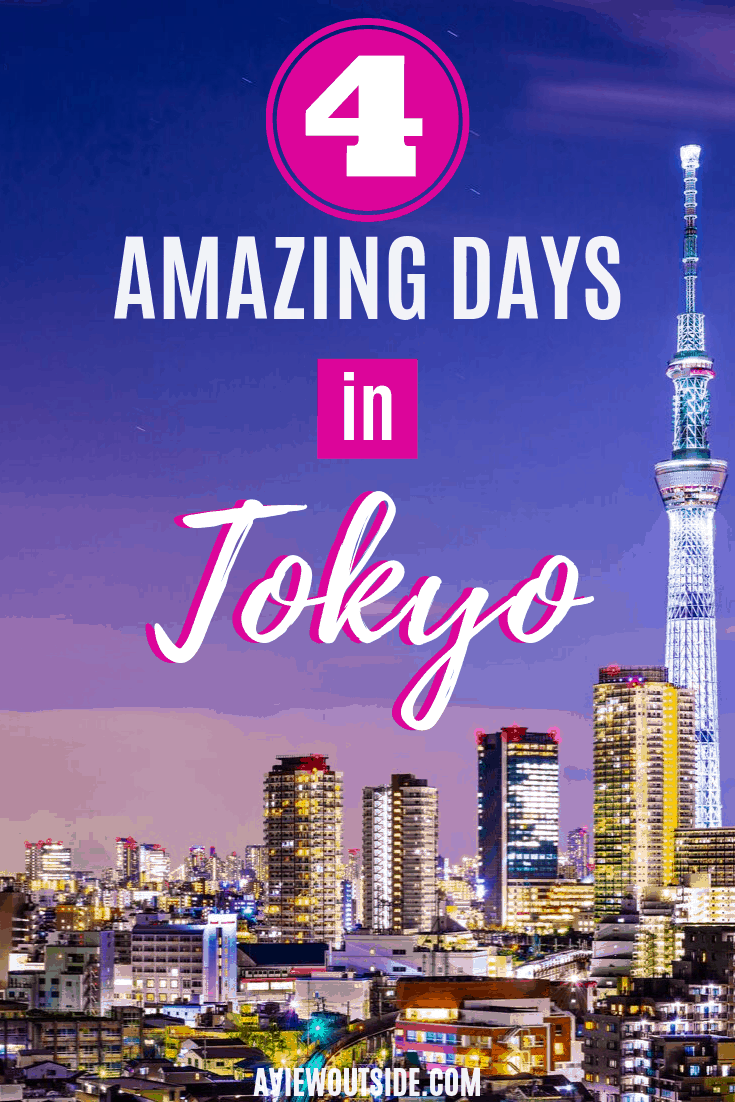
Before You Go – Tokyo Travel Tips and Resources
- To make the most of your 4 days in Tokyo, I strongly recommend that you stay somewhere central so you don’t lose too much time travelling between destinations. My top Tokyo locality suggestions would be Shinjuku , Shibuya and near Tokyo Station . For more on where to stay in Tokyo, check out this post about accommodation options in Japan which includes a list of budget and mid-range accommodation in Tokyo.
- Japanese culture and etiquette are quite unique and different especially if you compare it to Western culture. It’s important to know how to be respectful during your time in Tokyo as many of these rules date back centuries and are still highly regarded today. Check out my post on Cultural Do’s and Don’t’s During Your Visit to Japan to find out more.
- Wi-Fi is not as readily available as you may think in Tokyo so you may want to pick up a pocket Wi-Fi in order to keep in touch with family and friends, to help with language barriers and to use google maps.
- If you plan on visiting any of Tokyo’s most famous tourist spots then I strongly advise you to purchase them online as far in advance as possible. The following are incredibly popular: Robot Restaurant | Sumo Wrestling Morning Practice | teamLab Borderless | Studio Ghibli | Tokyo Disneyland | Tokyo Disney Sea .
- The conbini’s (Lawson, 7/11, FamilyMart) in Japan are amazing – especially if you are on a budget. They are often open 24/7 and they’re a great place to pick up snacks, drinks, tickets, withdraw money, photocopy documents you may need and try out some unique Japanese food – the strawberry sandwich is a particular favourite of mine!
Before we jump in – why not grab FREE access to all of my Japan Travel Resources

Are you ready to explore this beautiful, hectic, fun and most of all unique city? Let’s dive straight in and experience the most amazing 4 days in Tokyo.
Day One in Tokyo
Day one of this 4 days in Tokyo itinerary is jam-packed and contains lots of walking so wear comfortable shoes! This day blends the old and the new with a visit to Tokyo’s oldest temple in Asakusa and the modern electronic hub of Akihabara.
Tsukiji Fish Market
If you have landed early in Tokyo and are wondering what to do, then head straight over to the Tsukiji fish market where you can enjoy a breakfast of champions at the outer market. You will not find fresher, more delicious seafood anywhere else in the world.
Unfortunately, the fish auction is no longer held here and has moved to a quite sterile and lacklustre location in Toyosu. Despite this, Tsukiji is a place full of character with over 300 businesses still there serving customers. You can’t go wrong eating in any of the restaurants here but my top favourites are Sushi Zamei , Taneichi and Sashimi bar .
After an amazing breakfast in Tsukiji, head straight for Asakusa. You can take the subway using your pass on the Toei subway line (15 mins) or you can take a water bus (my personal favourite!) at Hamariku which is a 3min walk from Tsukiji.
The boat ride takes around 30mins but it is incredibly relaxing and you will experience parts of Tokyo you didn’t know existed. There are lots of photo opportunities at sights such as The Rainbow Bridge and The Golden Nugget and it costs around $8/€7.
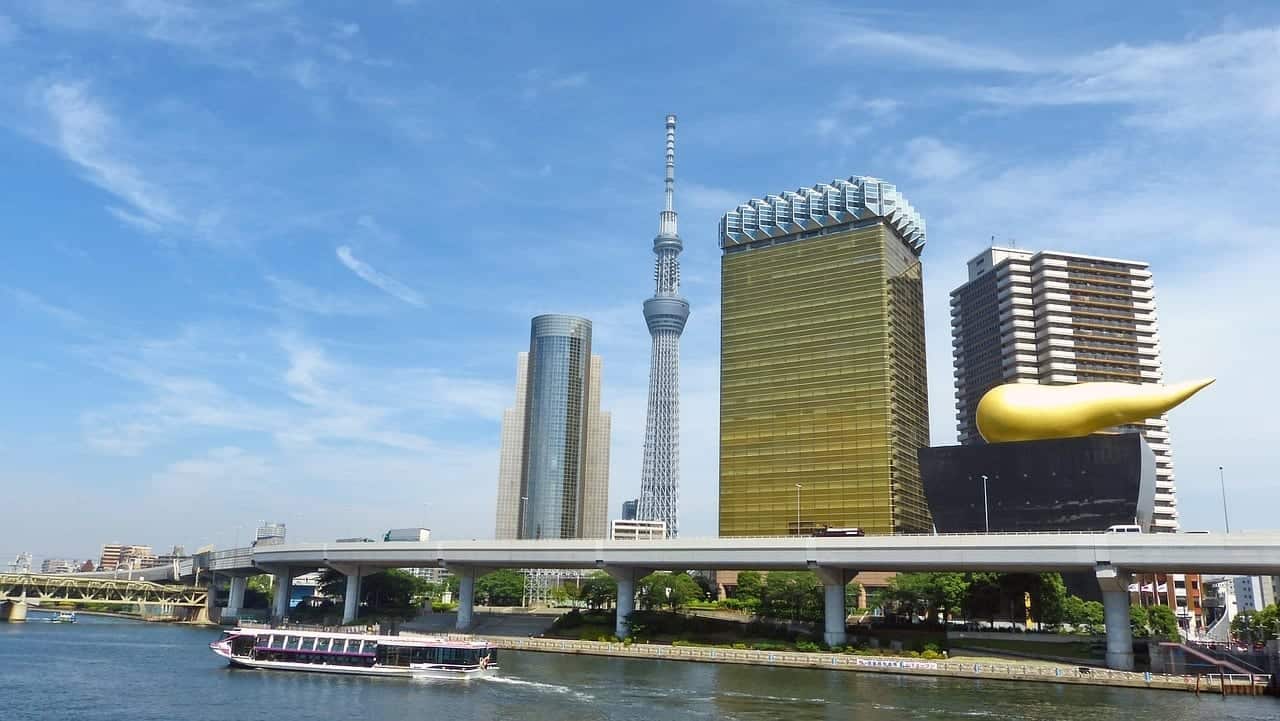
When you arrive in Asakusa, it will feel almost other-worldly compared to the rest of Tokyo. After a walk through the famous Thunder-Gates ( Kaminorimon ) and small stalls of traditional, local Japanese food and souvenirs you will come upon the Senso-Ji temple , Tokyo’s oldest temple (645 AD).
Walking around the area will give you a zen-like feeling with Japanese gardens, benches and small food carts if you’re still hungry from breakfast.

Don’t forget to get your fortune ‘Omikuji’ told at the shrine by offering up 100Y. Simply shake the container, making a wish as you do until a stick with a number pops out of the small hole. Use that number to find your fortune paper in a drawer that matches the number.
The numbers are in Japanese but I’ve often found that people nearby will always help or use your phone to figure it out. If your fortune is good, keep it. If it’s bad tie it carefully to one of the racks and move along.
As you walk through the side streets of Asakusa, watch out for Japan’s oldest amusement park Hanayashiki , feel free to wander in (tickets cost 1,000Y) or simply take a peek from the outside. Stop for lunch in any of the traditional local restaurants if you’re feeling peckish or start to head back towards Asakusa station.
From Asakusa station, take the metro to Ueno station which only takes around 5 minutes. Similar to Asakusa, Ueno gives you a taste of old-world Tokyo and it feels miles away from the high rise modern buildings of Shibuya and Shinjuku.
One of the nicest places in Ueno is the park, it is beautiful all year round but especially during the Cherry Blossom season. There is a small zoo located in Ueno but I advise against visiting , the animals are not kept in the best conditions.
There are also four superb museums in Ueno but my advice would be to pick the one that you’re really interested in. You’ll also find the fine Toshu-gu Shrine here and the beautiful Shinobazu-ike Pond.
There are a few ways to get to Akihabara, Tokyo’s electric town from Ueno. You can take the JR Yamanote Line or the Keihin-Tohoku Line and the journey only takes a few minutes.
The best time to visit Akihabara is at night when you can truly experience the neon sensory overload that this part of Tokyo is known for. This area is heaven for ‘Otaku’ (anime-lovers), gadget lovers and cosplay and comic book fans.
However, even if you aren’t interested in any of these things, you should definitely still visit to see what this area of Tokyo is all about.
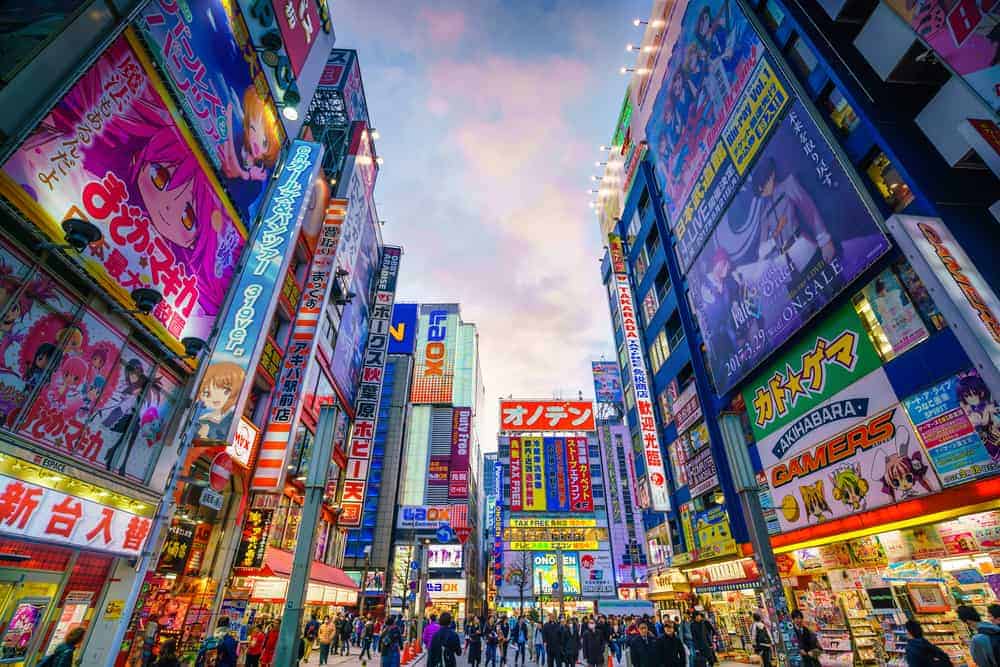
In Akihabara, there are department stores with floors upon floors of techie-goods. If you plan on purchasing electronics here, always check the exchange rate as there’s often a significant mark-up for tech items.
Watch out for the vending machines in Akihabara too, some of them contain the strangest things that you could possibly ever imagine.
At this point, you will most likely feel exhausted and it’s important not to overdo it as this 4 days in Tokyo itinerary is busy . So head back to your hotel for some rest.
However, if you’re feeling energised from all of those blinding neon lights, why not check out The Maid cafe located in Akihabara or another one of Tokyo’s unusual themed restaurants for a bizarre, fun-filled evening!
Day Two in Tokyo
Day two of this 4 days in Tokyo itinerary is a much more relaxed and spaced out day . You can take your time at each of the destinations and soak up the history, sights and beauty of Tokyo. Grab some goodies from a conbini in between destinations so you can have a nice picnic outside The Imperial Palace (weather dependent).
Tokyo Skytree
Tokyo Skytree is a relatively new addition to Tokyo’s skyline – if you took the river cruise yesterday, you would have spotted it along the way. As it is a relatively new attraction it tends to be busy year-round. You can purchase skip the queue tickets here which usually come at a discounted price .
Tokyo Skytree (634m) is the world’s tallest free-standing communication tower and the second tallest structure on earth after the Burj Khalifa in Dubai. There are two observation decks, Tembo Deck (350m) and Tembo Galleria (450m).
If the weather isn’t great, I would advise against buying a ticket for Tembo Galleria as you won’t be able to see much. If you’re lucky though, you might just be able to see Mt. Fuji which is an absolutely incredible sight.
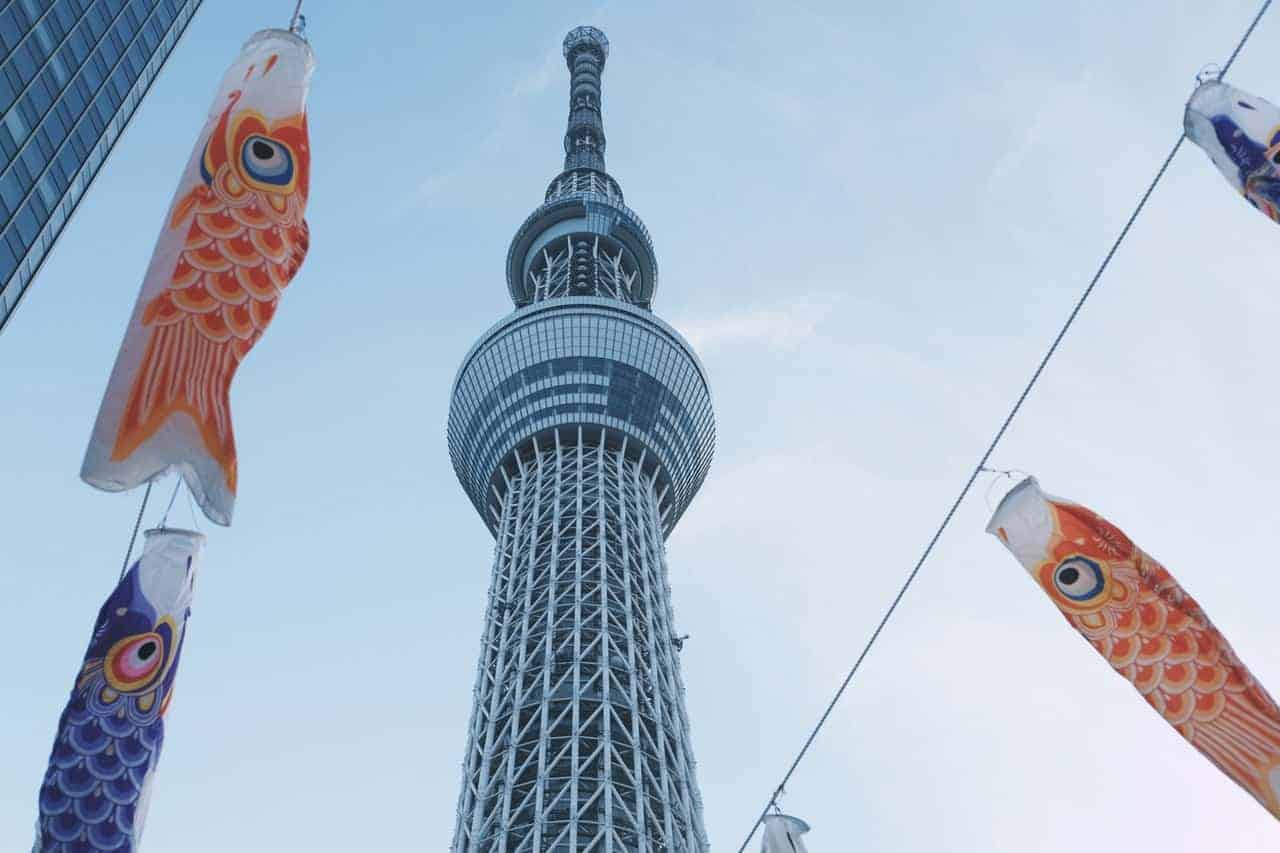
There are lots of shops and restaurants in Tokyo Skytree so it’s easy to spend a couple of hours there at least. Watch out for the sections of glass panels that you can stand on and look at the ground hundreds of meters below you – if you dare!
The Imperial Palace
From Tokyo Skytree, walk towards Oshiage station (7min walk) and use your subway pass to go on the Hanzomon line to Otemachi. Since 2018, it is now possible to book a free English speaking tour of the grounds of the Imperial Palace.
Submit your information online here to reserve your spot. Entrance to the East Gardens is free all year round.
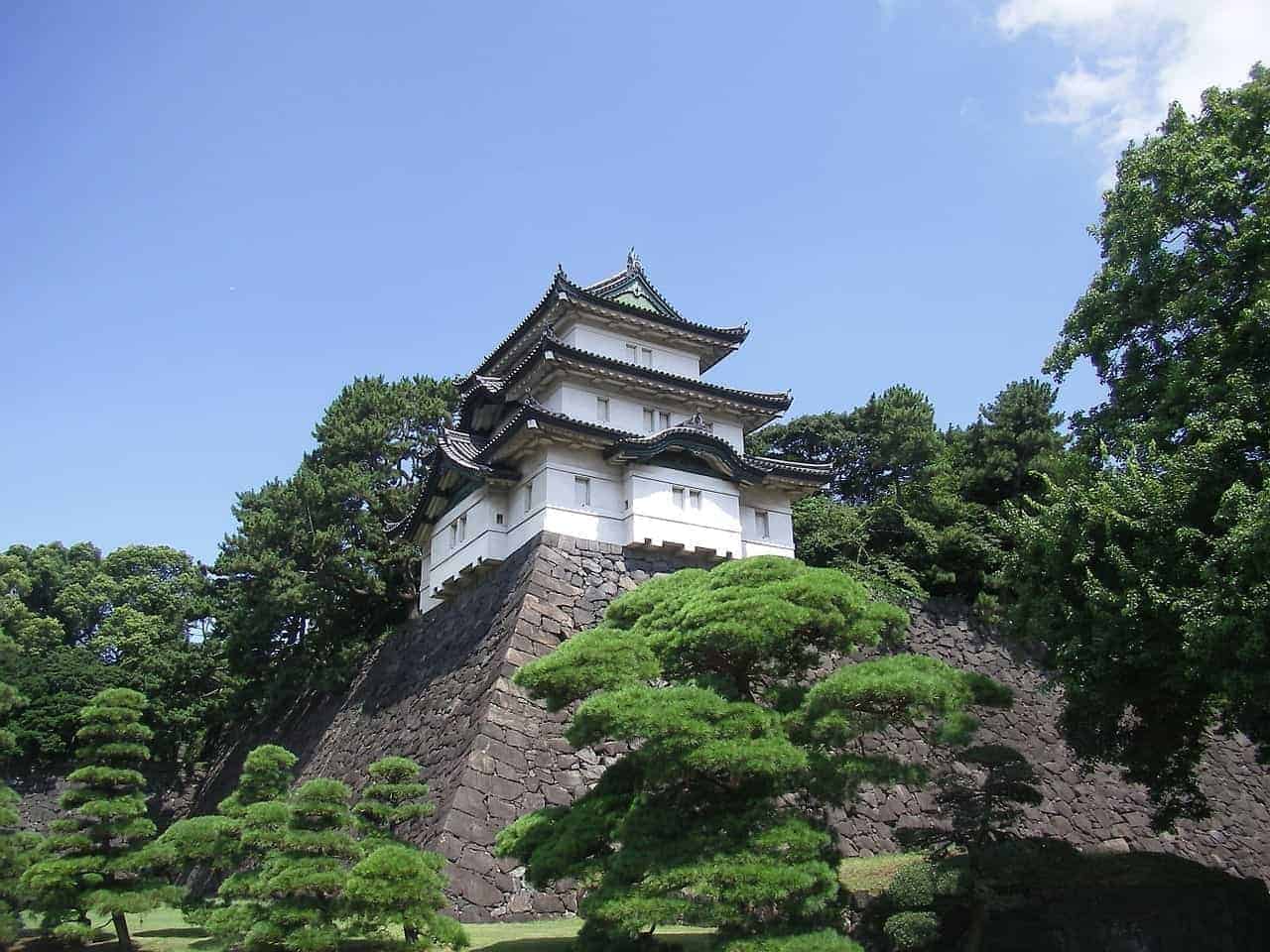
The Imperial Palace is located on the site of the former Edo Castle and it is a beautiful oasis in the heart of Tokyo. The most incredible view of the Imperial Palace are from the two main bridges that make up the official entrance.
It is also amazing to look up and see the high rise modern buildings of Marunouchi surrounding such an important and historic palace.
The river is surrounded by magnificent Sakura trees, which you can experience in full bloom during Cherry Blossom season. You can also enjoy boat rides or take a stroll through the Kitanomaru Park and stop to enjoy a picnic.
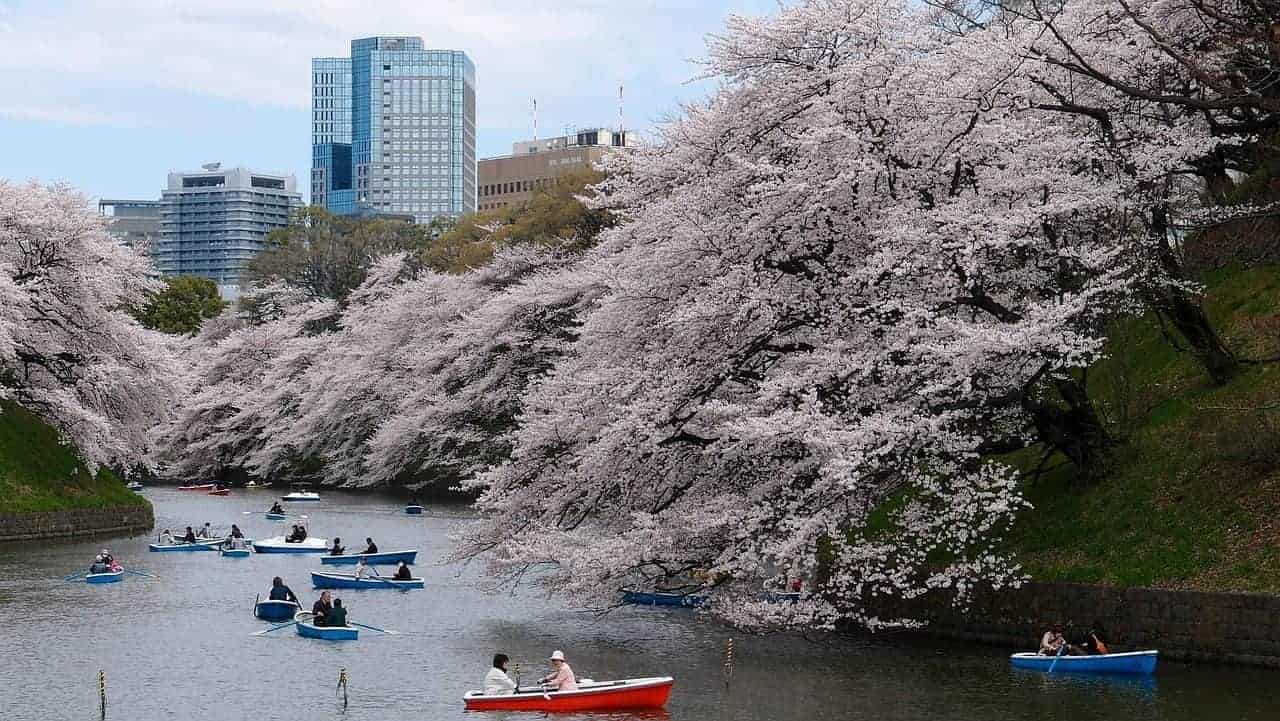
From The Imperial Palace, you can take the subway from Otemachi station and arrive in Ginza a few minutes later.
Ginza is known as a ritzy, upmarket shopping haven in Tokyo. There are endless designer boutiques, exclusive restaurants and foreign luxury goods. While there are no tourists attractions in this area per se, it is a nice area to stroll around or shop to your heart’s content.
However, one of the best places to watch a traditional Kabuki performance is in the newly renovated Kabuki-za in Ginza. I strongly advise booking tickets in advance as they sell out quite quickly.
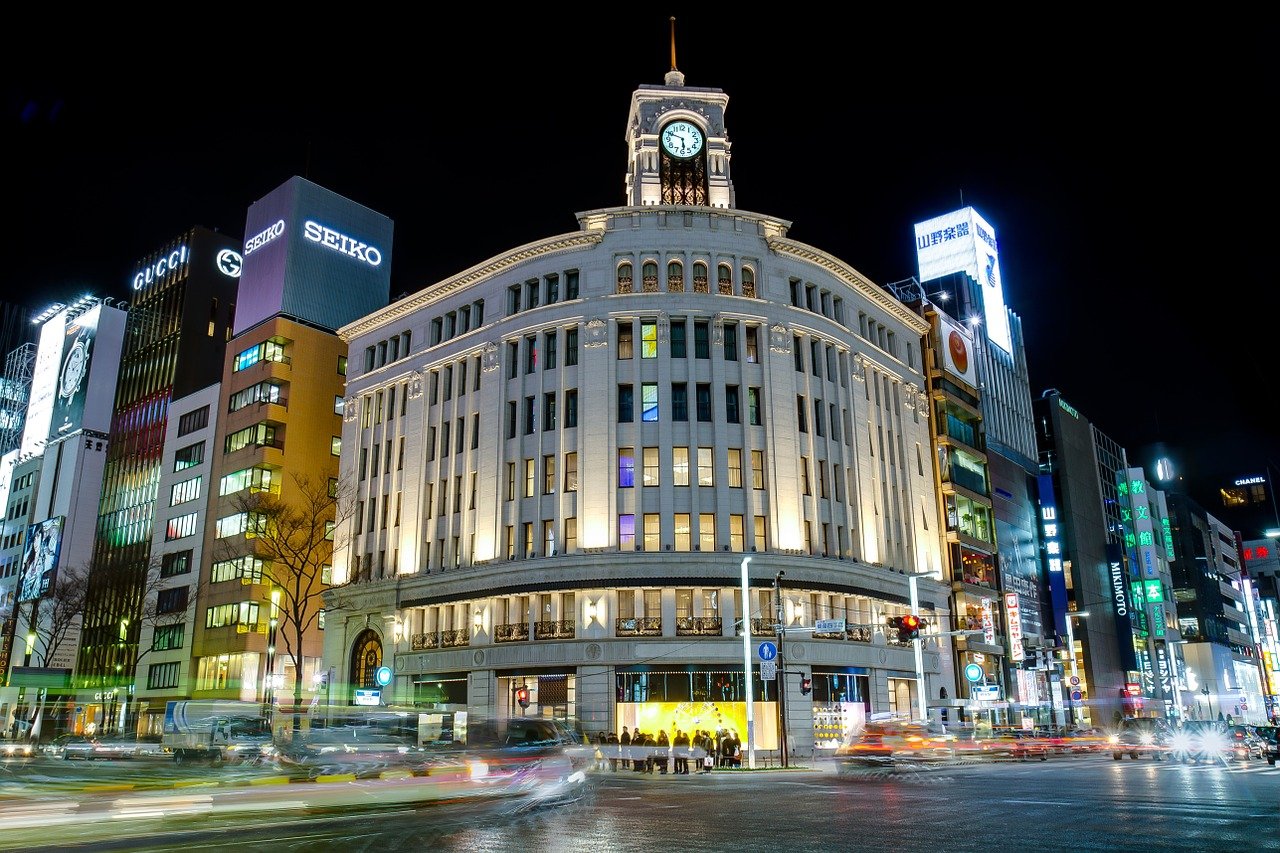
With lots more to see and do on this 4 days in Tokyo itinerary, you may want to recuperate and eat close to your hotel. However, if you wish to experience the bustling, vibrant nightlife district of Tokyo, then take the subway on the Hibiya line to Roppongi .
A word of warning though – the bars and clubs in Roppongi stay open all night and with lots of vendors outside bars and clubs offering cheap drinks, it can be incredibly hard to say no.
Day Three in Tokyo
One of the things that I love most about Tokyo is how despite a population of nearly 10 million, it is still possible to get away from the bustling, craziness if you need to. Day 3 of this 4 days in Tokyo itinerary includes Tokyo’s famous ‘scramble’, Harajuku and also some time spent in nature.
Hopefully, you’ve had a nice rest and are ready to begin your day in one of Tokyo’s most iconic neighbourhoods, Shibuya . Take the Hachiko exit and before you approach the famous crossing, make a beeline for the small Hachiko dog statue .
Hachiko is a famous tale about a faithful dog who waited for his owner at Shibuya station every day and continued to do so even after his death. A movie has been made about the story and the Japanese love Hachiko as he highlights the importance of loyalty and faithfulness. This is also a meeting point though so it will most likely have lots of people surrounding the statue.
Now it’s time to get ready for the Shibuya scramble, known as the ‘busiest intersection in the world’ where traffic from all sides stop at the same time and thousands of people cross the street in different directions. It’s crazy, it’s busy but it’s also surprisingly organised.
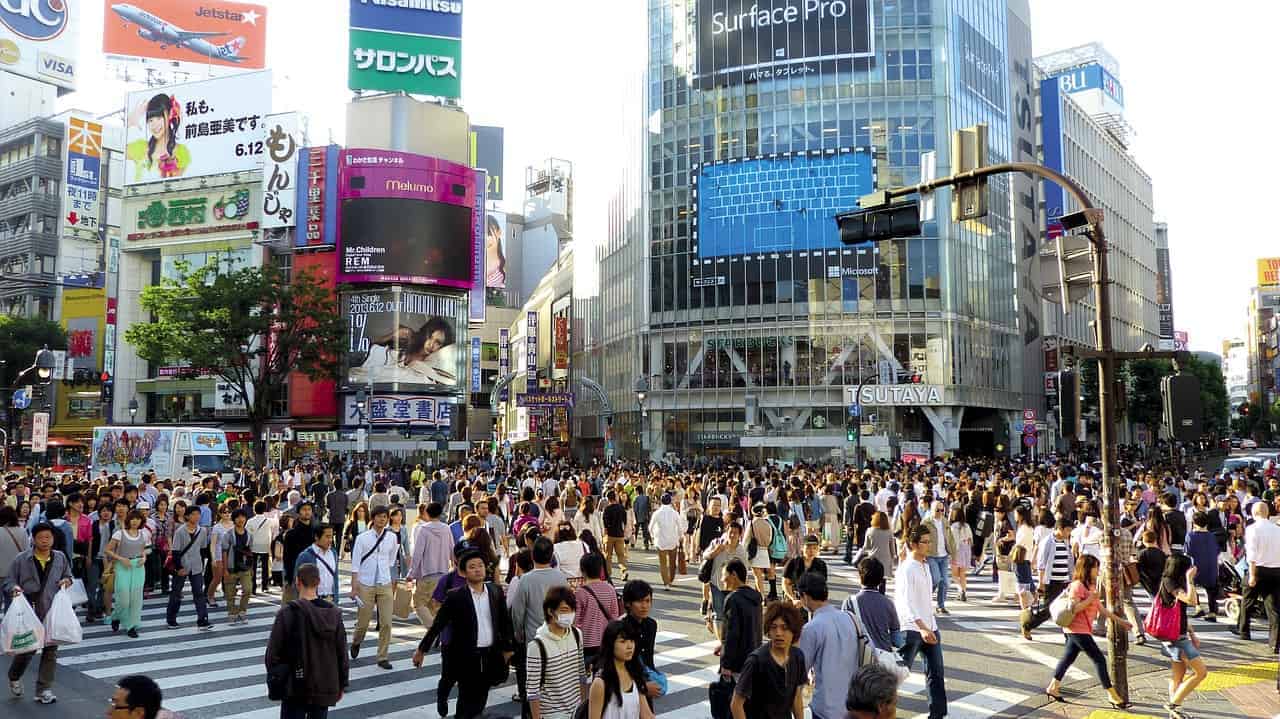
Pro Tip: Lots of people love to view the crossing from the Starbucks across the street. However, it’s always busy and it will most likely take forever to get a glimpse of the crossing. Instead, head for any of the other tall buildings facing onto the crossing, take the elevator to the top and get a prime view in peace.
It is now also possible to see Shibuya from a height of 230m, thanks to the newly constructed Shibuya Scramble Square . The observation deck is located on the roof and offers panoramic views of Tokyo’s skyline.
Shibuya has a cool, eclectic vibe; old school records can be found in Tower Records, there are lots of vintage stores, fun gaming arcades and purikura (photo booths) dotted around the area.
If you’re hungry, my favourite restaurants in Shibuya are Ichiran (ramen shop), Uoriki (sushi on a budget) and Fukudaya (soba noodles).
Omotesando is a pleasurable 10min walk from Shibuya and is a tree-lined street filled with designer shops, trendy cafes and it’s a nice pitstop before the craziness of Harajuku.
Omotesando is also well known for being one of the first destinations to start up the latest trend . You will most likely see queues a mile long with people hoping to get a piece of the next best thing which is mainly food or designer goods in these parts. Try to stop for a coffee in many of the side street cafes to recharge.
Omotesando is also where the St. Patricks’s Day parade is held every year so it has a special place in my heart as my Irish dancing students proudly showed off their talents every year at the biggest Asian St. Patrick’s Day parade.
Meiji-Jingu Shrine
Omotesando is on the way to Harajuku but if you decided to head straight to Harajuku, it’s only one stop north from Shibuya station on the Yamanote line.
Before heading towards the hectic Takeshita-Dori street, I recommend turning right at the station and walking towards the Meiji-Jingu Shrine. The shrine is most famous for its 12m high wooden torii gate which sits at the entrance of the shrine.
The shrine is dedicated to Emperor Meiji and his wife who ruled Japan from the years 1867-1912. It’s also a nice place to get away from the hustle and bustle of Tokyo. If you’re lucky you might also see a beautiful, traditional Shinto wedding take place in amongst the grounds.

Yoyogi Park
Next to the Meiji-Jingu Shrine is Yoyogi Park which is home to so many amazing events in Tokyo. During the summer months, there are endless international food festivals , concerts and my most favourite of all are the rockabilly dancers which dance-off to each other on Sundays at the entrance to the park. It’s quite easy to bring a picnic and spend a relaxing few hours here.
As you exit Yoyogi Park, head back towards the craziness of Takeshita-dōri, Harajuku. This street is always busy during the day so make sure you’re patient enough to move along at a snail pace.
The area is world-famous and known for it’s ‘kawaii’ culture. Stores are full of cute items, shouts of ‘irrashaimase’ (welcome) and trendy vintage goods.
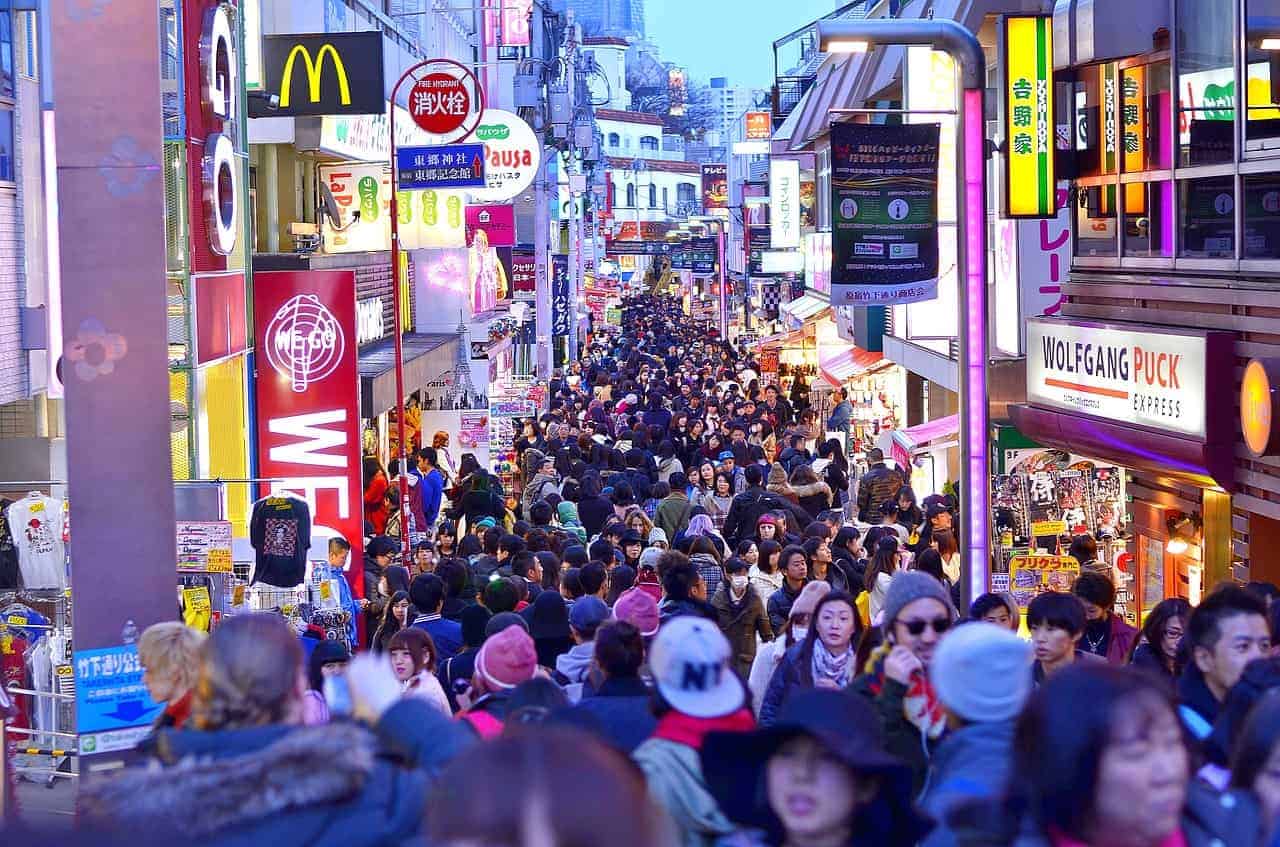
If you’ve come here to see cosplay , Sunday is your best chance to do so. If you do see people dressed in cosplay, be respectful and ask permission to take their photo. Generally, they love it but it’s always nice to ask.
Harajuku is also known for its crazy food trends such as animal candy floss, rainbow cheese sandwiches and of course the infamous Santa Monica crepes so make sure you try at least one of these out!
If you’re peckish, head to Harajuku Gyozaro , the absolute best gyoza restaurant in all of Tokyo. You can expect to wait for up to an hour though but trust me, it’s well worth it!
Day Four in Tokyo
The final day of this 4 day Tokyo itinerary will be spent in firstly at the Mori Digital Art Museum: Teamlab Borderless and then onto Shinjuku. Shinjuku is a neighbourhood in Tokyo with skyscrapers, traditional style bar and food joints, the infamous Robot Restaurant and tranquil spots to get away if needed.
MORI Digital Art Museum: teamLab Borderless Tokyo
Start your day as early as possible and make sure you have booked your tickets to the incredibly popular TeamLab Borderless in advance. This will ensure easier access and hopefully fewer crowds.
This one-of-a-kind Digital Art Museum is an absolute must during your 4 day Tokyo itinerary. Prepare to be dazzled, mesmerised and in awe at the displays. You can interact with these stunning pieces and watch as they move and respond to you.
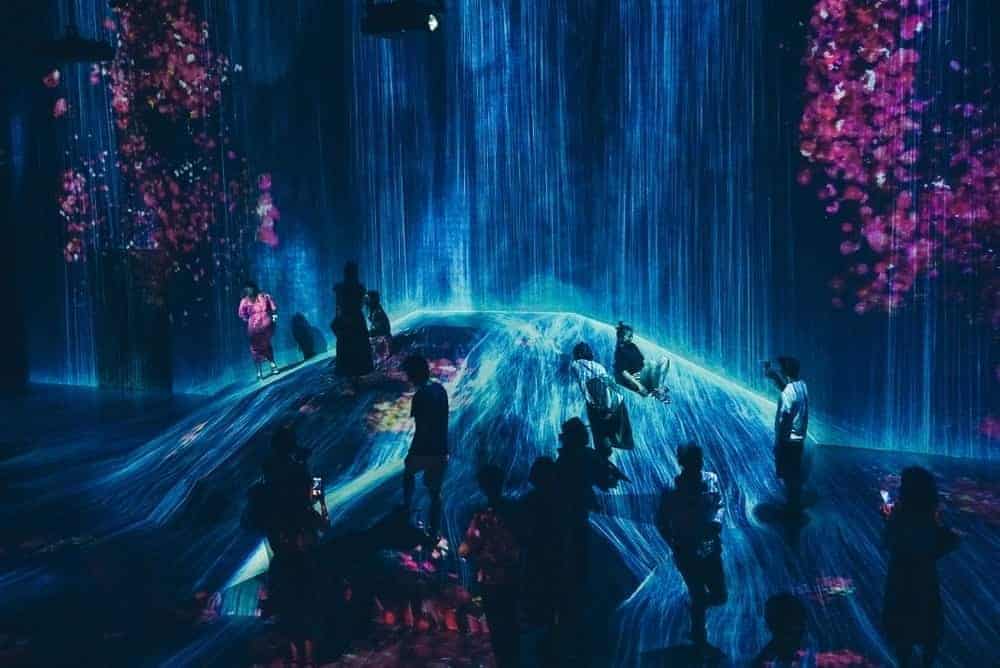
When you think of Tokyo, images of Shinjuku probably come to mind; neon bright lights, lots of skyscrapers and crowds. Shinjuku station is actually the busiest train station in the world with over 3 million people passing through daily.
There is so much to see and do in Shinjuku so lets jump right in.
If you find yourself being a little overwhelmed by the crowds or the bright neon lights in Shinjuku then head towards Shinjuku Gyoen park for some recuperation.
The Shinjuku Gyoen Park is split into three gardens, a Japanese, English, and French garden and it’s lovely to just sit and relax there.
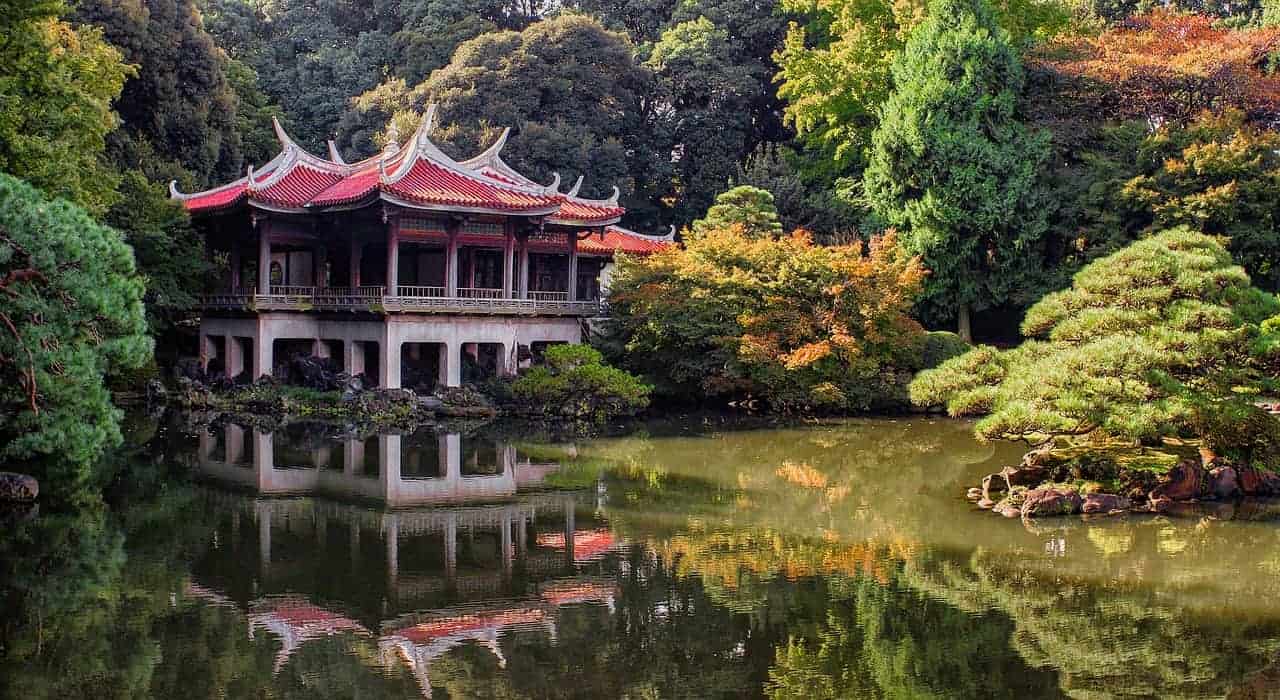
There are lots of huge department stores around the park if you need to do some last-minute shopping too – I highly recommend Takashimaya and Keio.
One of the best authentic food spots in Shinjuku is an area known as Omoide Yokocho or “Piss Alley” (I know, I know – that doesn’t make it sound very appetising!). However, the alleyways are filled with traditional eateries serving the best yakitori, ramen, sushi and soba. The prices are very reasonable and despite its nickname, the food is amazing!
You also can’t come to Shinjuku and not check out Golden Gai , a traditional and historic neighbourhood that contrasts hugely with the rest of Shinjuku. As you wander around the narrow alleyways, you almost feel as if you have been taken back in time.
There are over 200 tiny bars in the area and each one is different. Most of the bars can only usually hold up to between 4-10 people and some bars only cater to locals.
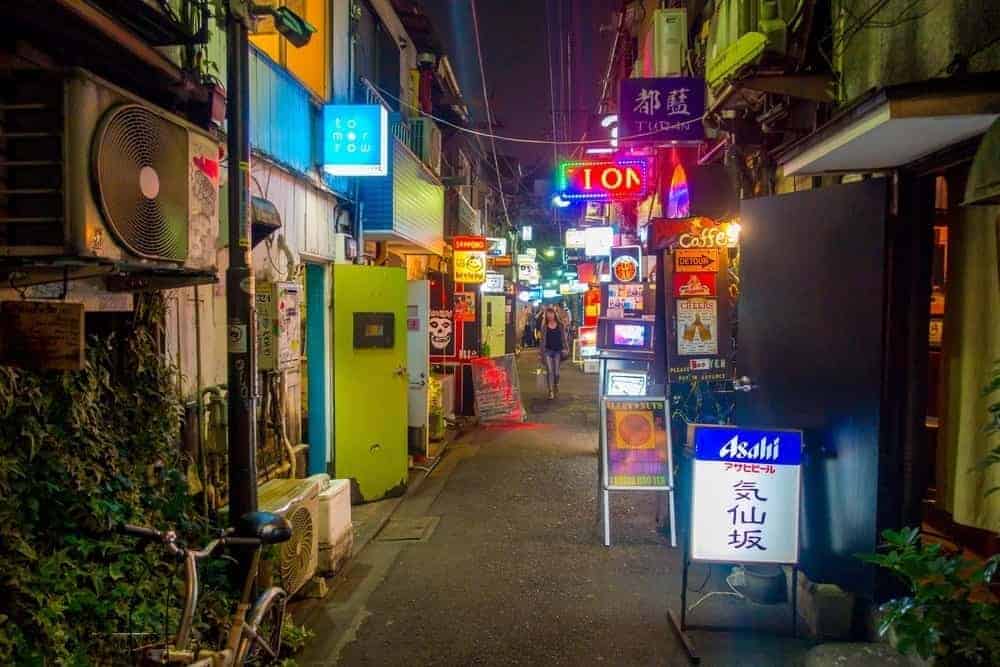
If you haven’t yet tried out one of the crazy themed restaurants in Tokyo, now is your chance. The Robot Restaurant is definitely the most famous of the lot and while the food may not be great, the experience itself is one of a kind. The restaurant is a two-minute walk from Golden Gai and it will blow your mind!
In Shinjuku, there’s also another chance to see a panoramic view of Tokyo in all its glory. You can experience this for free at The Metropolitan Government buildings in Shinjuku.
The skyline of Tokyo is spectacular both day and night so why not do both?! Your bag will be searched upon entry but after that, you are free to roam the upper observatory which also has souvenir shops and a couple of restaurants.
Map Of The Best Four Days In Tokyo Itinerary
This map contains all of the locations listed above to help you make the most of your 4 days in Tokyo. I have also included some of the best restaurants in Tokyo which includes ramen, sushi, yakitori and of course amazing spots for dessert.
Do you have more time to spend in Tokyo? Then why not add one or two of these amazing day trips from Tokyo to your Japan itinerary.
I really hope that anyone who is planning a visit to Tokyo finds this itinerary useful. I’ve been incredibly fortunate to have lived in Tokyo for a few years but prior to living in Japan I also visited the city of Tokyo numerous times so I know that it can be overwhelming deciding when and where to go, what to eat and how to get around such a vast city.
This itinerary is based on my experiences in Tokyo but also having the pleasure of being a tour guide to family and friends plus the recommendations of Japanese people I met who have now become good friends of mine.
While this is a ‘4 days in Tokyo’ itinerary, It is easy to stretch this itinerary out over 5 days in Tokyo itinerary or accumulate it into 3 days but whatever you do, don’t push yourself .
Take Tokyo as you find it, relish in its uniqueness and enjoy every second of this amazing city.
Sharing is caring ❤
Related posts

Do’s and Don’ts in Japan- What To Know Before You Go in 2024

How To Spend One Day in Reykjavik, Iceland in 2024

What you need to know before visiting Iceland In 2024
26 comments.
What a great post. I so wanna go tin Tokyo. It’s been on my bucket list forever, but somehow I haven’t gotten round to it yet. So far it’s been a mix of long flight time and (mostly) budget that kept us away. But good to know that you can see so much of Tokyo in just four days.
Thanks so much for the comment – it is quite a long way away! Im an expert at long haul flights now as I travelled home twice a year ha. I hope you get to visit someday!
I am hoping to go to Tokyo before the year is over and this itinerary is super helpful since I won’t have more than 4 days. A special thanks for the Robot Cafe recommendation. My kids will be all over that!
Thank you so much – getting comments like this mean the world! There is so much to see and do in Tokyo, your kids will love it!!
I had no idea you lives in Tokyo Ciara! This is such a comprehensive guide, packed full of handy information! I’d love to visit myself one day, ideally during cherry blossom season!
Thanks so much for the comment Jaz – yep I lived there for 3 years and travelled around before and after that for a few months too! You should definitely try and visit, cherry blossom season is gorgeous!
What a great & detailed post! The subway in Tokyo looks INSANE compared to New York, pretty sure I would get lost here hahaha. Saving this for later 😀
Thanks so much for commenting – it does look insane doesn’t it but it’s honestly not as bad as it looks. It’s somehow organised and runs so smoothly.
Tokyo looks like such an amazing destination! It’s absolutely going on the bucket list! Thank you for sharing 🙂
Hannah | https://getlost.blog/
Japan is my bucket list destination. When I visit Japan, I am going to give at least a week to Tokyo. It looks futuristic. I have heard a lot about crazy Robot Restaurant. It must be one of a kind experience.
Very informative and I really enjoyed all of the pictures!
One of the places my son really wants to go is Tokyo. Thanks for the inside look and tips if ever we get that way.
The cherry blossoms are on my bucket list, but I agree with you, it will be so much more expensive. I prefer traveling in the off season when it isn’t as crowded. But I imagine it is always crowded in Tokyo?!
Wow, what a fantastic post and very helpful! I hope we can visit here someday. I love the idea of cherry blossoms in March and April or during the fall season, in which the plane ticket is more cheaper. Thanks for putting this all together.
Tokyo, the first on my husband and my son’s bucket lists. Imperial Palace, and Akihabara are on the top of my list of things I must do in Tokyo. You have included so much information here, more than enough to build a trip around.
My partner loves Tokyo and raves about it all the time! Asakusa and the Imperial Palace are two of his favourite sights there. Your post has inspired me now to take a trip to Tokyo soon! Loved how comprehensive the article is.
We spent a week in Tokyo back in 2015, and we absolutely loved it! We went in early November (for the fall colors), and we thought it was the perfect time to go. Japan is on our itinerary for our current trip, and this time, we’ll be there for the sakura! Can’t wait.. love Japan 🙂
There is so much great information here for visiting Tokyo. I would be happy to follow your itinerary, as I have not yet been. The river with the Sakura trees overhanging is simply stunning. So I guess I would have to go in Cherry Blossom season.
This was such a detailed guide. I would love to visit Tokyo some day. This was so helpful in figuring out what to do and planning an itinerary!
Great post! You really nailed it. These are the top must-see places in Tokyo. Just wondering, which one was your favorite?
Fab post! This includes loads of the things I normally tell friends to do when they visit. I had no idea the restaurants had stayed at Tsukiji, even now the market has moved!
The ones I might add are visiting the Odaiba area for the Ooedo onsen monogatari (for the fun onsen experience) and the giant gandam. I also love taking people to Nakano Broadway for the slightly strange shopping experience. 😉
p.s. I totally agree about timing. Autumn is my favourite time to visit too.
Such a detailed post, especially for the first timer. As you said it can be a bit overwhelming. I think if I was to go, I would just follow your itinerary. I can’t believe there are 20 million people who take the subway a day! Incredible. I would love to visit at Cherry Blossom time, but the crowds deter me, although fall seems beautiful too.
I’ve been to Japan countless times and this brings back such great memories. Beautiful pictures and awesome itinerary!
Wow – this is such a thorough, informative guide on Tokyo. We’ve yet to visit Japan – it’s been on our bucket list for sometime now! I really appreciate all the tips you’ve included based on your experience of living in Tokyo. I think I would love to visit Tokyo in fall – those vibrant fall colors look splendid. And your’e right – Asakusa seems so different compared to the rest of Tokyo – would love to explore this part of Tokyo!
Such a detailed post! Looks like such a fun time, Shinjuku garden looks beautiful and serene. Saving this for reference.
Thank you very much for a detailed post! Never been to this part of the world. Tokyo sounds like a great idea, especially know when we know many tips you have added to your post. Thank you and safe travels.x x
Leave a Reply Cancel Reply

Welcome to my blog! I'm Ciara, a native of Dublin Ireland. I'm an introverted wanderer who loves to explore this gorgeous planet of ours. I try to live by the motto 'Feel the fear and do it anyway' which has led to some ridiculous mishaps along the way. Join me as I try to complete my never-ending bucket list. Read More
TRAVEL FREEBIES
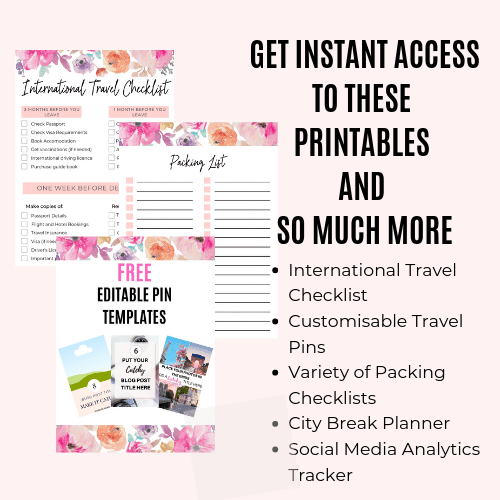
CONNECT WITH ME
Follow me on facebook.
GET THE BEST HOTEL DEALS HERE
Travel essentials.

My Favourite Travel Essentials
Subscribe to my free travel resource library.
Get lifetime access to travel packing lists, travel planners and journals and so much more!
*We hate spam and promise to keep your email safe.
WHERE I’VE BEEN

FIND YOUR PERFECT HOSTEL
CLICK HERE TO BUY THE JR PASS (SPECIAL DISCOUNT)

Privacy Overview

A thrilling Tokyo itinerary for 4 days
By: Author Sylvia
Posted on Last updated: August 6, 2024
What to do in Tokyo in 4 days?
Tokyo is top of the list for many travelers to Japan.
Everyone wants to see the huge neon city, littered with locations that have become synonymous with Japan as a whole.
From the serenity of Shinjuku Gyoen to the bright lights and crowds of Harajuku, Tokyo is a must-visit for any world traveler.
However, with the city being so vast, it can be overwhelming. There’s so much to see, where does one start? Well, this 4-day Tokyo itinerary will set you up for the ideal Tokyo trip.
There is a really good chance that this post contains affiliate links. If you click one of them, we may receive a small commission (for which we are deeply grateful) at no extra cost to you.
Table of Contents
Tokyo Essentials
- We have always found the best flights to Tokyo or Osaka on Momondo . You also have Skyscanner and recently WayAway , a new and promising travel aggregator, has popped up. It may be worthwhile to compare these three sites.
- Don’t lose time upon arrival at the airport and order your Japan travel SIM or portable WiFi device in advance so that it’s ready and waiting for you at the airport when you arrive.
- We’ve got you covered if you’re wondering how to use public transport in Tokyo.
- If you are traveling around Japan, having a Japan Rail Pass is often the cheapest way to travel around.
- Discover the best area to stay in Tokyo. Or have a look at these cool hotels in Tokyo if you are looking for a special place to stay while you are in Tokyo.
- Ryokans with private onsen in Tokyo .
- Best Ryokans in Tokyo
- If you prefer staying in an onsen hotel in Tokyo, click here.
- We created an overview of the best Airbnb in Tokyo for those who prefer staying in a rental property. Are you traveling with your family or a bigger group? Here is an overview of the best family Airbnbs in Tokyo.
- Check out our ultimate Japan travel guide where you can find all our Japan articles.
- Be sure to become a member of our Japan Travel Planning and Tips Facebook group. The purpose of this group is to help you plan an amazing vacation to Japan. You can ask questions and exchange tips with fellow travelers.

If this is your first Japan trip, we totally understand if you’re feeling a little overwhelmed with your travel planning. There is so much to see and to do and Japan’s train network is excellent but at the same time very different from what most of us know from our home country. That’s why we created our Japan travel planner . A document that will help you with all the details of your travel plan. Follow the link for the full details .
The perfect Tokyo 4-day itinerary
Let’s start this Tokyo 4-day itinerary with some interesting facts about Tokyo.
Tokyo, the capital of Japan, is located on the east coast of Japan and is known as the most populated city in the world.
It became the capital of Japan in the early 1600s when the government of the time moved the capital from Kyoto.
Tokyo’s long history makes it possible to experience aspects of different parts of history right through to the modern age.
Throughout this time, design has shifted, culture has evolved, Japan has modernized and a trip to Tokyo is a true cultural journey.

Day 1: Meiji-Jingu shrine, Harajuku (and the Samurai Restaurant)
Meiji-jingu shrine.
The first day in any new place should start with a bang, and the best way to do that in Tokyo is with a visit to Meiji-Jingu shrine. It is not to be missed on a Tokyo 4-day itinerary.
Meiji-Jingu is the largest and arguably most famous shrine in Tokyo.
What is Tokyo famous for
It is actually one of Japan’s newer shrines, dating from the early 20 th Century.
It was designed to celebrate the deified Emperor Meiji and his wife after their deaths. Emperor Meiji is thought of as the emperor to bring Japan into the modern age and is highly revered.
The shrine is surrounded by a forest of over 100,000 trees, providing an air of tranquillity despite being in the middle of a busy city.
The shrine is preceded by one of the largest torii gates in Japan and a display of sake barrels donated by various sake brewers from around the country. Inside the shrine, it is busy with popular shrine activities.
Purchasing “omamori” (good luck charms) and making wishes with “ema”(wooden plaques to write down a wish or hope for the future) are popular.
There is also a ‘marriage tree’, two trees connected by rope and paper to symbolize marriage and the closeness it entails.
You might be lucky enough to spot a traditional Shinto wedding as this Shrine is a popular wedding venue.
Nearby is the inner shrine garden.
This is filled with hundreds of irises, a favorite flower of the Emperor and Empress.
While they bloom in June, the garden is beautiful year-round.
How to get there
Meiji-Jingu shrine is a short 10-15 minute walk from Harajuku station.
Harajuku: Takeshita Dori and Omotesando
Takeshita dori.
After walking back to Harajuku station, you can cross the street and explore the street opposite the station. This street is called Takeshita Dori. It is the center of young fashion and pop culture.
Takeshita Dori is a narrow, crowded street filled with fashion shops, cafes, crepe stands, and other trendy foods (think rainbow cotton candy, rolled ice cream, milk bubble tea). This is where those food trends start.
The street is about 400m, which may seem short but the sheer amount of businesses filled in this space is astounding. There are also a number of side streets, which can be even more interesting as the side streets are more likely to house the shops of young designers and new artists.
Cheap fashion, interesting foods, and quirky pop culture references are the draw of this place. It is also one of the most instagrammable places in Tokyo.
But perhaps Takeshita Dori feels a bit young, too teenage.
In this case, Omotesando is the place for you.

Omotesando is the more haute couture cousin of Takeshita Dori. Where Takeshita Dori is pop culture, Omotesando is luxury.
It is often referred to as Japan’s Champs-Elysees. A number of famous architects, both domestic and international, have contributed to the buildings of Omotesando and many luxury brands have their key flagship stores in this area.
It is also a trendy café area. A lot of street photography and street fashion photography takes place in this area, as it is known for being at the front of fashion.
Harajuku is a great place to spend an afternoon, whether you prefer Takeshita Dori or Omotesando.

Samurai Restaurant Tokyo
For the evening, the Shinjuku Samurai Restaurant is a great way to finish off your first day.
The Samurai Restaurant used to be known as the Robot Restaurant. It was notorious over recent years as the epitome of Japanese pop culture. The shows at the Robot Restaurant were an overload of neon lights, colors, music, and crazy performances.
But then Covid came and it had to close its doors.
But now the team is back with a new show. The event venue is still at the same place in Kabukicho and has been renamed GiraGiraGirls.
They also worked on a new show over the last 2 years. The good news is that all the crazy aspects and the full madness are still there. A number of different dance styles are used throughout the performances, there will be frenzied taiko drumming, along with constantly changing music and there will even be some robots.
The performances are an extravaganza of entertainment, a short escape from the real world to a neon light planet, and a sensory overload.
If you are hesitating to visit this quirky place, take a look at our full guide about the Samurai Restaurant.
You can buy your tickets online in advance with an 11% discount on the door price.
Shinjuku station is approximately 5 minutes train ride from Harajuku, and the Robot Restaurant is a short walk from Shinjuku station.
Day 2: Shibuya and Shinjuku
The morning of day 2 will tick off a key bucket list item for most visitors to Tokyo.

It’s time to go to Shibuya.
Shibuya Crossing and Hachiko statue
This area is one of Tokyo’s main business districts and home to the famous Shibuya Scramble Crossing.
We see a first popular touristic sight immediately upon exiting the subway station. The Hachiko Statue is at square near the entrance/exit to Shibuya station.
The square is a popular meeting spot for friends to catch up.
Hachiko is a statue of an Akita dog with a story that captured the nation.
The original Hachiko was owned by a university professor in the 1920s. Hachiko would meet the university professor at Shibuya Station at the end of each day to accompany him home from there.
Unfortunately, the professor died while at work, and from then on, Hachiko kept returning to Shibuya station daily, waiting for his owner.
It is a story of loyalty and friendship and has become an important feature of Shibuya.
The square sits along the Shibuya Scramble Crossing and the statuee of the dog is almost lost due to the crowds on the square and the intersection. If you don’t know that it is there you will likely not see it.
At Shibuya Crossing, sometimes up to 1000 people cross at once and it is famous all over the world.
One of the most popular places to watch the crossing and take photos is the Starbucks above the crossing.
However, due to being the most popular, it is often hard to get a seat, especially a window seat and there are often long queues for mediocre coffee.
A much better option is the L’occitane café.
The brand L’occitane has a multi-story building over the Shibuya Scramble Crossing, with the first floor as a shop and the second and third floors as a café.
The café is a lot less crowded and allows for a relaxed French-inspired meal, while people-watching over the crossing.
Go Shopping in Shibuya
Shibuya is also known for its shopping.
There are a number of shopping buildings and shopping streets in the surrounding area.
The most recently opened building, Shibuya Scramble Square, is the tallest building in the Shibuya area at 230m.
The first sixteen floors are filled with shops and restaurants.
The uppermost level, floor 46, is Shibuya Sky and provides a 360-degree view of Tokyo. One corner of the building overlooks the Shibuya Scramble Crossing, offering yet another perspective on the iconic landmark.
Taking part in hanami with friends, family or co-workers is a yearly tradition that many Japanese people enjoy, and the cherry trees of Shinjuku Gyoen are perfect for this as the different varieties allow the season to last longer than in parks with only one variety and therefore, a short peak bloom.
For our next location, Shinjuku Gyoen, there will be a 5-minute train ride to Shinjuku Station and a 10-minute walk to the Shinjuku Gate of Shinjuku Gyoen.

Shinjuku Gyoen
Shinjuku Gyoen is one of the most popular parks in Tokyo and one of the best spots for hanami in Spring.
The park is made up of three different garden styles.
The first, and oldest, is a traditional Japanese garden with many of the identifying features of Japanese garden design.
These include a large pond with small islands, curved bridges, and carefully arranged trees and shrubs.
In November, there is also a chrysanthemum display, one of the most important flowers in Japan as it is representative of the Imperial Family.
There is also a more symmetrical, formal French garden with a number of flowering plants.
Close by is the large English landscape garden, based on traditional English gardens. This area is home to hundreds of cherry blossom trees of a number of different varieties, making it ideal for hanami, or cherry blossom picnics.
Shinjuku Gyoen also has a large greenhouse with a number of tropical and sub-tropical flowers that aren’t traditionally suited to the Japanese climate.
There is an artificial waterfall inside which helps to maintain the humidity levels necessary for more tropical plants and flowers.
The greenhouse is an often-missed feature but is truly impressive in its own right. So we definitely recommend visiting it.
This is one of the few parks in Tokyo that charges a small entrance fee of 200 yen.

We end our second day in Tokyo in one of the most interesting parts of Shinjuku namely Golden Gai.
Once the night habitat of middle-aged salarymen, the area has broadened its demographic in recent years.
It’s one of the few parts of central Tokyo that hasn’t been changed and modernized since the post-war years. The architecture is ramshackle and haphazard in narrow and crooked streets.
This gives the area a quaint, olde-worldy feel as if viewing a part of history.
However, Golden Gai doesn’t stop with history. It is home to a number of small bars, each with its own interesting and unique ‘appeal point’.
They are often themed, with themes ranging from hospitals to 80s and 90s pop culture, to 50s Americana.
Some bars are as small as five seats, and it is good to be careful of the rules.
Some bars may have rules regarding no foreigners or no English, while others only serve a small number of well-known clientele and are not open to new customers.
However, don’t let this discourage you, as part of the charm is finding the right bar, or bars, for you.
Day 3: TeamLab Borderless and Odaiba

Mori Building Digital Art Museum
The Mori Building Digital Art Museum is the first of its kind and the perfect start to day 3 in Tokyo.
The Museum has been put together by teamLab Borderless, a digital art collective made up of some of the best digital artists working in collaboration with CG animators, engineers, and programmers.
They have created a number of extremely popular pop-up art exhibitions across the world, from London and Paris to Singapore and Shanghai.
Their use of light, perspective, and interactivity made them an instant success and the Digital Art Museum is their first permanent exhibition.
It is comprised of five different areas and there are 50 – 60 different artworks throughout these areas.
Some of their most popular works include the Forest of Resonating Lamps, an infinity room filled with hanging lamps that change color when approached, and Crystal World, another infinity room full of mirrors and LED lights where the user is able to choose the color of the lights.
There are also a number of other artworks that play with light and projections.
The En Teahouse, for example, provides tea to the viewer with projected flowers that bloom and later scatter, based on your drinking. One of the largest rooms of the museum, the Flower Forest, has projected flowers and butterflies covering the walls and floor.
Touching the flowers makes them wilt while standing in an empty spot makes new flowers bloom.
One of the key features of the art is the interactivity.
In all the artworks, the viewer is part of the art, touching the art, controlling the art, and creating their own unique experience of the art.
Since this is a popular attraction in Tokyo we advise you to go as early as possible and budget enough time.
Tickets are often sold out weeks in advance. We, therefore, advise you to purchase your tickets ahead of time.

The Mori Building Digital Art Museum is located in Odaiba, about a 25 – 30 minutes train ride from Tokyo Station.

Odaiba is a small man-made island in Tokyo Bay.
In the boom of 1980s Japan, the island began development to become a futuristic business area. This was slowed by the early 90s and was finally completed in the late 1990s as the economy picked up.
The island has a variety of shopping areas, business buildings, and interesting architecture.
Palette Town, an area close to the Digital Art Museum, also includes Venus Fort, a shopping mall designed to look like an 18 th Century European town, complete with statues and a fountain.
Within Palette Town there is also one of the largest Ferris Wheels in Japan, at 115m. The top of the Ferris Wheel provides an amazing view over Tokyo, even as far as the Tokyo Tower.
Another great view of Tokyo is from the Rainbow Bridge, connecting Odaiba to the rest of Tokyo.
It is a suspension bridge, often lit up in rainbow colors.
When crossing the bridge, the north side offers views of Tokyo Harbour and Tokyo Tower, while the south provides views of Tokyo Bay and even Mt Fuji , at times.
How to choose the best Mt. Fuji day tour and the Hakone day trip guide.
Looking for a place to stay in Hakone? Check out this list of ryokans with a private onsen in Hakone.
While the Rainbow Bridge is a traffic and pedestrian bridge, the Bridge of Dreams is purely for pedestrians.
Aptly named for its nighttime illuminations, the Bridge of Dreams offers beautiful views during the day and whimsical, dream-like qualities at night.
Keen on exploring Tokyo at night? Here we share an overview of the best things to do in Tokyo at night.
On top of these, Odaiba also has a number of other museums, interesting architecture, and even an Edo period-themed onsen amusement park.
Oedo Onsen Monogatari has 13 different types of baths, using hot spring water pumped from beneath the ground.
Odaiba has something for everyone. Whether it be the crowd-pleaser Digital Art Museum, to the photographer’s perfect view from the bridges, to the shopping enthusiast’s hundreds of unique and interesting shops, an entire day on Odaiba is barely enough to see what the island has to offer.

Day 4: Tsujiki Fish Market, Asakusa, and Tokyo Skytree
Tsujiki fish market.
One of the common bucket list items when visiting Japan is eating fresh sushi and it doesn’t get any fresher than straight from the fish market.
Tsukiji Fish Market is Japan’s largest fish market and provides some of the freshest seafood in the world.
The Tsujiki Outer Market is a hodgepodge of narrow alleyways with tiny shops and restaurants thrown together. Within this myriad, you can find some of the best sushi, sashimi, and general seafood available.
Each restaurant will have its own specialty, from seafood and rice bowls to freshly-cut sashimi, or it is possible to drop by a number of places and bring all those tasty snacks to a general eating area in the market.
There are also a number of shops selling food-related items in this area. This can include handcrafted Japanese chef’s knives and traditional cooking utensils.
An early morning seafood breakfast or mid-morning brunch is a great way to get going for day 4 of Tokyo.
The Tsukiji Fish Market is a 20-minute train ride from Shinjuku station and a short walk from Tsujiki Shijo station.

For the afternoon, Asakusa is a great way to enjoy the contrasts of Japan.
Asakusa is a traditional entertainment district, with everything from traditional shopping to temples.
Sensoji Temple
One of the main draws of the area is Sensoji Temple.
The temple was built in 645, making it Tokyo’s oldest temple and one of its most popular.
The first gate to the temple, Kaminarimon, is a huge version of traditional temple gates, in vermillion red.
It has a large lantern in the center of the gate and is seen as a symbol of Asakusa, and in some cases, of Tokyo.
Following this is a traditional shopping street, Nakamise.
It is made up of many small stalls, selling everything from tourist souvenirs to snacks and food.
Past this is the second gate and the main hall of the temple.
There is also a 5-storied pagoda accompanying the temple’s main hall. Asakusa Shrine is right next to this and is home to one of Tokyo’s most popular festivals, the Sanja Matsuri.
You can climb the stairs to the roof in the Asakusa Culture Tourist Information Center for a good view on the Nakamise street with the temple and the pagoda majestically in the background.
Surrounding the area are a number of shopping streets with various restaurants and shops. You should definitely try Tempura and Taiyaki, a Japanese-baked sweet.
Asakusa is two 10-minute train rides from Shinjuku, as a train change is required at Kanda Station.
Tokyo Travel Tips
Tokyo is full of interesting and unique ways to learn about Japan and its culture, as well as fun experiences to have regardless of your interests.
Tokyo itineraries
For more details about some of these locations as well as some further suggestions, see our Tokyo itinerary posts:
- 4 days in Tokyo
- 5 days in Tokyo
- 7 days in Tokyo
Where to stay in Tokyo
Shinjuku is a great place to stay for first-timers.
- Luxury Hotel: Park Hyatt Tokyo
- Premium Comfortable Hotel: Hilton Tokyo
- Comfortable Hotel: Hotel Gracery Shinjuku
Here is an overview of the best areas to stay in Tokyo.
If you prefer staying in an Airbnb or vacation rental, check out these posts:
- Best Airbnb in Tokyo
- Best Airbnb in Tokyo for families
If you are looking for something special, check out this list of cool hotels in Tokyo.
For those that prefer staying in a ryokan with a private onsen in Tokyo, check out this post.
Public Transport in Tokyo
Looking for the best way to travel around Tokyo? Check out this post in which we share the different possibilities.
Wondering what else Tokyo is famous for, click here.

Tokyo Skytree
A 20-minute walk across the Sumida River next to Asakusa will take you to the Tokyo Skytree.
At 634m this is the tallest structure in Japan, and when it was built, also the tallest in the world. It is used as a broadcasting tower and the lower base of the tower includes a shopping area and aquarium.
However, the real attraction of the Skytree is its observation decks.
There are two main observation decks, one at 350m and one at 450m. The first of the observation decks actually spans 3 levels, with broad windows offering panoramic views of Tokyo and the surrounding region.
On clear days, it is even possible to see Mt. Fuji.
One of these levels also has a restaurant serving French-Japanese fusion food while another level has a smaller café.
An elevator to the next observation deck will take you to a spiral ramp encircling the building.
Visitors follow the ramp, getting a 360-degree view of Tokyo as they go. This continues until visitors reach the final observation deck, with a stunning view of Tokyo from 450m.
This scene is amazing at any time of day, but sunset and the consequent city lights are considered particularly beautiful.
Note that the lines are often very long so we recommend you to book skip the line tickets.

Tokyo is often the first stop for any visitor to Japan.
Whether it’s for the intriguing history, loud pop culture, or amazing food, Tokyo manages to attract millions of tourists yearly.
There is so much to do and so much to see that Tokyo can often be overwhelming. The fear of missing out on the best places to visit in Tokyo , or of wasting time getting lost can be difficult to overcome.
And that is where our 4-day Tokyo itinerary comes into place.
This itinerary covers a bit of everything, from perfect hanami spots to the neon dreams of the Samurai Restaurant to the history of Asakusa.
We have gone over the best way to spend 4 days in Tokyo, seeing the sights and enjoying everything the culture has to offer.
Best Hidden Gems in Tokyo
Using this Tokyo itinerary as a guide to your stay in Tokyo will help create the ideal Japan trip.
Here you can find a two week Japan itinerary and a 3-week Japan itinerary.
Now, there’s nothing left to wait for, it’s time to enjoy Tokyo!
If you are looking for the best day trips from Tokyo, click here.
Trip within a Trip: Osaka and Kyoto, Japan

May 1, 2024 • 9 min read

Make your next trip to Japan even better by adding on four days in exciting Osaka (pictured) and Kyoto © EarnestTse / Shutterstock
Senior Director of Content Laura Motta recently spent 10 days in Japan . To make the most of her time in the country, she included a four-day mini-excursion to Osaka and Kyoto – a trip within a trip, if you will, which anyone can replicate.
Everyone goes to Tokyo , and I would never tell you to skip it. But another critical part of any Japan itinerary is that magical Shinkansen (bullet train) ride south to Osaka , and the astounding sites that await beyond. A mind-boggling pair of cities – Osaka and Kyoto – are crammed with more shrines and temples, steel-and-glass skyscraper malls, scenic vistas and world-class restaurants than you can experience in a month, never mind in just a few days. This was my third trip to Japan and my second time visiting Osaka and Kyoto.
Before I get to my recommendations, here are a few practical tips:
- When to arrive: Arriving in Osaka around midday lets you drop your bags at the hotel, rest and then hit Dōtonbori in the evening, when its famous neon lights are ablaze.
- Getting there from the airport: The spotless, inexpensive airport limousine bus from Kansai Airport makes eight stops in Osaka, which include all of its main train stations.
- Getting around: Japan is world-famous for the ease and comprehensiveness of its public transit for a reason. You can – and certainly should – do this route without a car. High-speed (more expensive/faster) and local (less expensive/slower) trains cover every inch of this region and will shuttle you quickly between Kyoto and Osaka. Both cities have easy-to-use subway systems.
- What to pack: Certainly, your walking shoes and room in your stomach for a lot of ramen. Keep in mind that Japan has four distinct seasons and temperatures vary significantly between them. Check the weather ahead of time – and pack accordingly.
- How to structure your days: It’s tempting to cram your schedule when there are so many things to see. Yet realistically, you won’t be able to do more than two major sites – maybe three, if you’re really going for it – in a single day. This is especially true in Kyoto, where the best sites are far apart and can require up to an hour of travel to reach.
- Take it easy: Don’t forget to eat, hydrate, rest and wander. And tell yourself you’ll be back.

Day 1: Osaka
Snack time .
You’ve been traveling all morning. It’s time to eat. (Unless, of course, you stuffed yourself en route on the amazing bento boxes you can get at Tokyo Station.) Keep it simple like I did and grab onigiri (rice balls) or a sando at 7-Eleven. There’s one on every corner, you’ll only spend a few dollars, and buying local snacks – especially in Japan – is among travel’s greatest joys.
See the neon
If you’re in Osaka, go see the Glico man. It's a rule. Or maybe it's just mine. This famous animated sign of a runner, arms raised, about to cross the finish line in some hypothetical marathon in the sky, remains delightful despite the tourist crush on the streets below. This ad for the Glico candy company (candy bars give you energy – get it?) has become an informal mascot of Dotonbori , Osaka’s dining and nightlife district. After dark, it’s fun to wander here through the area’s many arcades, claw-machine and pachinko parlors, and shops. If you start here on a weeknight, it’s delightfully quiet.
Insider tip: Arrive before sunset and duck into a tiny side street to Hōzen-ji , a small temple known for its moss-covered statues. I was there when they were lighting the lanterns for the evening – a dreamy experience indeed.
Have a cheap and cheerful dinner
Dotonbori is teeming with restaurants. You can’t miss the distinctive signage advertising takoyaki (grilled octopus balls), gyoza and crab. My favorite takoyaki stand, Takoyaki Yoriyabunzaemon , is humble compared to its bombastic neighbors; there is no 5ft marquee. Inside, you’ll sit on a well-worn barstool while the single cook pours takoyaki batter into the famous round molds and serves it to you still piping hot, and slathered in mayo, barbecue sauce and bonito flakes. A warning: if you value the skin on the roof of your mouth, do not eat too fast here.

Day 2: Kyoto
Bullet train .
The Shinkansen train between Osaka and Kyoto is cheap and lightning fast. This trip is included in many Japanese rail passes , but if you’re paying for a standalone ticket, you’ll pay 1420 yen (about US$10). The trip takes 15 minutes, so slower local trains hardly seem worth the mildly cheaper price. Arrive midday and head to your hotel to check in and drop your luggage. Before you depart, don’t forget to look around Kyoto Station for the eki ink stamp, which you can imprint into a notebook as a souvenir. Every train station in Japan has a uniquely designed stamp, even if you sometimes have to ask the attendant at smaller stations where to find it.
Stay in style
If there’s one place to splurge on a fabulous hotel in Japan, it’s in Kyoto. Whether you’re strolling under vibrant fall leaves or spring cherry blossoms, or wandering the narrow alleys and stepped streets of the Gion district , Kyoto is romantic, its temples and shrines otherworldly. My choice was Hotel the Mitsui Kyoto , a new luxury property that blends smart contemporary design with traditional Japanese accents. Beside its excellent restaurant – more on that below – the highlight is the hotel's updated approach to the traditional onsen, called Thermal Spring. This vast, moodily lit indoor space offers heated pools and loungers amid beautiful rock formations and water features. And unlike many onsen experiences, this one is a bathing-suits-required, mixed-gender space where everyone can hang out. There is also no surcharge for entry.

Visit the temples
My boyfriend cheekily refers to Fushimi Inari Taisha , Kyoto’s famous shrine with its rows and rows of vermillion gates ascending a dramatic hillside, as “the Instagram shrine.” It’s hard to say that he’s wrong: the site is a favorite among foreign travelers for good reason. The gates are simply gorgeous and – yes – photogenic. Just don’t expect to find yourself there alone.
Insider tip: Afterward, stop at the charming Vermillion Cafe for a sweet snack and coffee. Sit on the back porch, which overlooks a lovely stretch of forest, for especially serene vibes (spectacular in autumn).
If you still have energy left in the afternoon, head to Nishi Hongan-ji , a mammoth Buddhist temple complex that’s home to some of the largest wooden structures in Japan. After you marvel at the huge lanterns and expansive halls, stop by the brightly painted Chinese Gate, which dates back to the late 1500s. This temple is also within walking distance of Kyoto Station, and can be a good place to start or end your trip.

Day 3: Kyoto
Go for the gold.
Kinkaku-Ji , sometimes called the Golden Pavilion, is among Kyoto’s (and Japan’s) most famous and photographed landmarks. This UNESCO World Heritage site , where a brilliant gold temple appears to float along the shores of a serene lake, is well worth braving the crowds for, especially in sunny weather when the reflection of the lake glints off of the temple’s exterior walls. Go early, packing your patience – and you’ll understand instantly why so many people flock here.

School Bus Coffee Stop is a charming spot for an easy, affordable breakfast or lunch in cozy, industrial-farmhouse-style surroundings. Comforting selections like bagel sandwiches and avocado toast are accompanied by the shop’s excellent, house-roasted coffee.
Modern love
For an aesthetic palate cleanser after a quick lunch, stop by the Kyoto City KYOCERA Museum of Art , which houses rotating exhibits, often of contemporary and modern art, in a fantastic brick structure that dates to the 1930s.
Taste sensation
And you’d be remiss if you stayed at the Hotel the Mitsui Kyoto without eating at its elegantly flamboyant Italian restaurant, Forni . Yes, there are pizzas and pastas on its à la carte menu. But I’d highly recommend the tasting dinner, where impeccably composed dishes like sea bream citrus tartare and grilled wagyu arrive on geometric plates and stands. It’s a feast for the eyes as well as the stomach.

Day 4: Osaka
Smart hotel.
After going luxe in Kyoto on meals and lodging, I came back to Osaka looking to save money without sacrificing too much comfort. I wasn’t ready to sleep in a sarcophagus-sized pod or get every meal at 7-Eleven. (Well, not every meal – just a few.) After getting off the train from Kyoto at the massive Shin-Osaka Station, I took the easy-to-use metro to one of the best places I’ve stayed in Japan, the chicly designed, austere-but-comfortable Hotel Noum , just across the river from Temmabashi Station. The location made transportation connections easy and kept me sheltered from the stark urban rush of Umeda, Osaka’s high-rise business district. Rooms are small, comfortable and spotless; mine had a river view. The hotel also has an airy coffee shop in its lobby that attracts as many locals as travelers. I popped in here for a breakfast pastry and a latte and was ready to start the day.
Window(less) shopping
Even if you don’t stay in Umeda, visiting the neighborhood is a must. Spend a day wandering its cavernous, endless indoor shopping malls and underground food courts. You may never see daylight, but you will find everything from Hermès bags to the best 300-yen (US$2) gyoza you’ve ever tasted. I like to check in on the enormous red whale, which hangs suspended from the atrium of the Hep Five department store, which also happens to have a ferris wheel on its roof.

Enjoy a messy lunch
Train stations are where you’ll find some of the best food in Japan – and Osaka’s sprawling Umeda Station is no exception. My favorite train-station ramen is at Menya Takei, located behind the entry gates for the Hankyu Railway. Menya Takei specializes in tsukemen , in which the ramen noodles and broth are served separately. Dip the noodles into the broth to eat – yes, you’ll undoubtedly get it all over your clothes, but that’s part of the fun. Lots of laundry to do when you return home is a sure sign of a great trip.
Insider tip : Ask the gate agent to let you through. They’ll make you pay for a rail ticket on the way in, and then may refund you on the way out.
From Osaka, hop back onboard the Shinkansen for more exploring in Japan, or do what I did and catch a quick, affordable domestic flight to Tokyo’s Haneda airport to connect to your flight home.
Keep planning your trip to Japan:
The 24 best things to do in Japan Find out if you need a visa to enter the country Take to the open road on these top drives How to discover Japan on a budget
Explore related stories

Public Transport
Jan 31, 2020 • 7 min read
Whether you want canals, ceramics or buzzing cities, there’s a stop for you on the ‘sunny side of the mountain’. Here’s how to explore San'yō by train.

Aug 27, 2024 • 8 min read
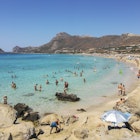
Jul 23, 2024 • 9 min read

Jul 12, 2024 • 6 min read

Jun 12, 2024 • 8 min read

Apr 3, 2024 • 17 min read

Apr 2, 2024 • 10 min read

Mar 31, 2024 • 7 min read

Mar 28, 2024 • 6 min read
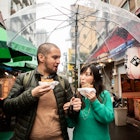
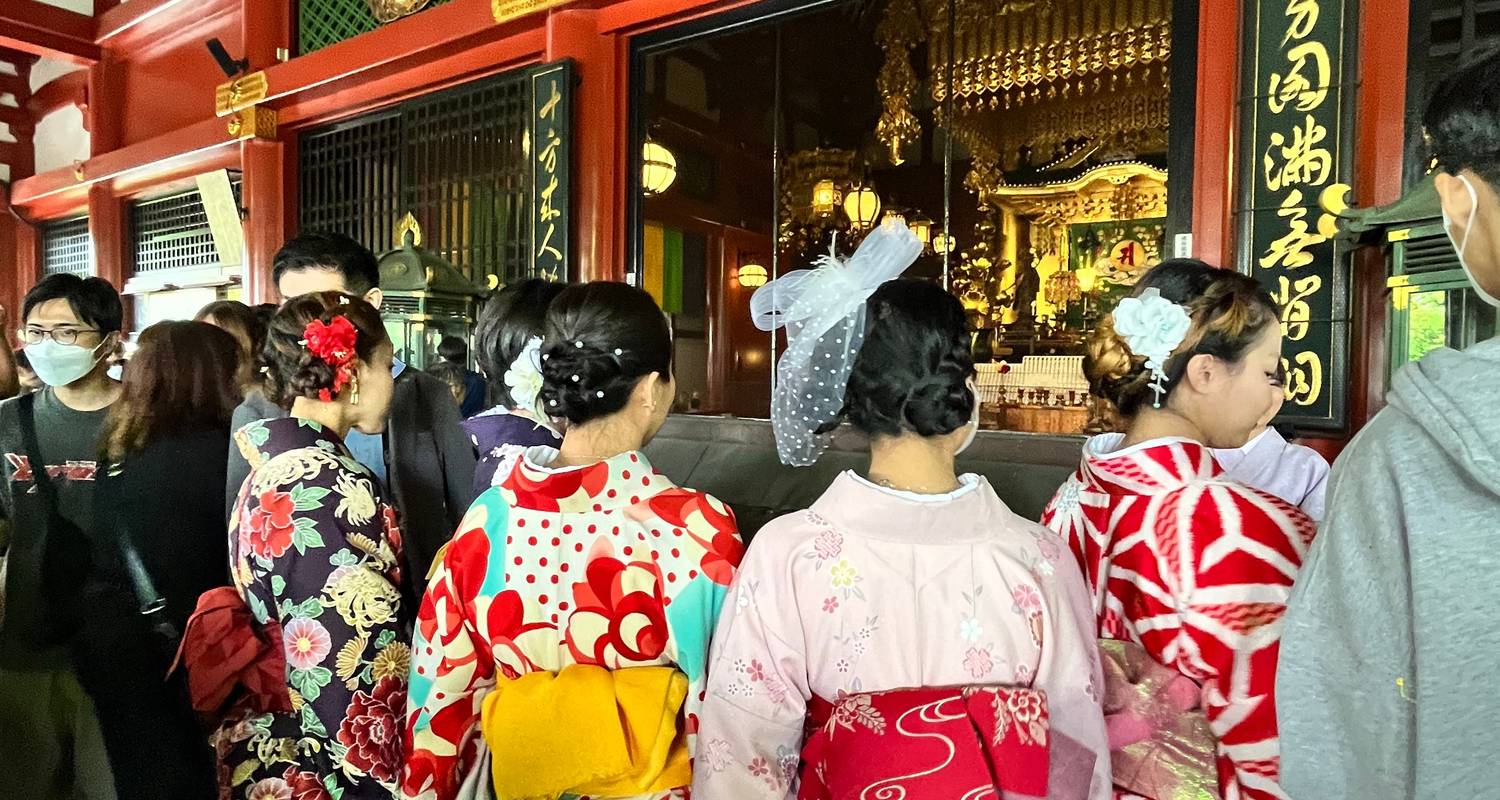
Japan Guided Tours & Trips
- Choose from 250+ Japan tours
- 5,000+ verified reviews from TourRadar travelers
- 24/7 customer support
10 best fully guided Japan tour packages
Compiled by

Steff Japan travel expert at TourRadar
9D Splendid Japan with Nagoya (private 3 star hotel rooms)
Stunning japan with shirakawa-go (private 3 star hotel rooms), epic 13-day japan budget tour: odyssey across the land of the rising sun, japan golden route with hiroshima, best of osaka, kyoto and hiroshima 6 days, japan one life adventures - 10 days, japan by train: the grand tour, highlights of japan - 7 days, japan adventure 13 day, essential japan.
“Great service and satisfaction. Extremely well-organized.” Bhavna Soni, traveled in September 2024

- In-depth Cultural
- Coach / Bus
- Sightseeing
- Discover Tokyo's vibrant Shinjuku Kabukicho area
- Cruise on Lake Yamanaka with views of Mt. Fuji
- Stroll through Kyoto's Arashiyama Bamboo Grove
“Excellent service and trip arrangements for the Sakura season.” YW, traveled in April 2024

- Bask in the natural wonder of the towering Mount Fuji
- Savour the flavours of authentic Japanese green tea
- Experience a ride on Japan's world-renowned Bullet Train
“A great trip! It includes many activities and is well paced.” Claire Hourihan, traveled in June 2024
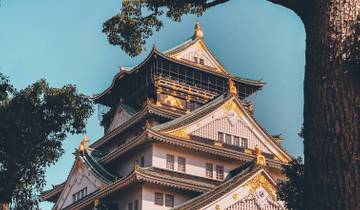
- Train & Rail
- Hakone & Mount Fuji Views
- Golden Route - Tokyo, Kyoto & Osaka
- Sushi Making
“All destinations, accommodations and tour guide/driver are excellent. I highly recommend this itinerary to my friends, family and colleagues.” Victoria Pasalo, traveled in May 2023
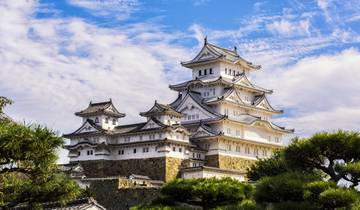
- Visit Itsukushima Shrine's floating torii gate
- Wander through Nara Park's free-roaming deer
- Experience bullet train ride to Mount Fuji
“Everything else great :) The hotel rooms booked were not ideal or suitable for our needs.” Alex Carter, traveled in June 2024
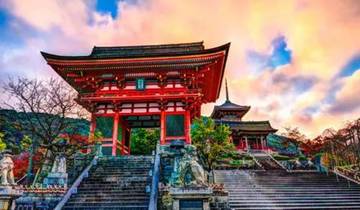
- Christmas & New Year
- Explore Osaka Castle and its historic exhibits
- Visit Kyoto's iconic Fushimi Inari Shrine
- Experience Arashiyama's serene Bamboo Grove
“I experienced so much in Japan.” Sarah Durham, traveled in August 2024

- Travel by bullet train and spend a night in a temple
- Grasp simple Japanese phrases and learn to make sushi
- Soak up the unique atmosphere of Japan
“Excellent value for money. Would recommend.” Elizabeth Winter, traveled in October 2023

- Hike through bamboo forests and the endless gates of Fushimi Inari
- Admire views of Mount Fuji from Lake Ashi
- See the floating Torii Gate and deer on Miyajima Island
“The whole trip was relaxed, while informative and enjoyable. The pace was measured and allowed plenty of time to take in the days activities.” davidcox, traveled in April 2019
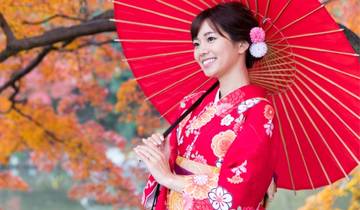
- Meet the friendly locals and feed the deer in Nara Park
- Discover the historical side of Kyoto and admire grand temples
- Travel from Kyoto to Hamamatsu on the world-famous Shinkansen
“Perfect balance between free time and activities, and I feel like we saw a good snapshot of everything Japan is. My new favourite country!” Thomas Harrison, traveled in September 2024

- Discover red-faced snow monkeys in the mountains
- Learn the ways of the Samurai and wield the iconic sword
- Experience high end & unique accommodation from futuristic to traditional
“Nadia was very fun and informative about living in Japan, and Michiko's dedication to making sure we were well-informed and organized/on time was much appreciated.” Marie Jacklin, traveled in February 2024
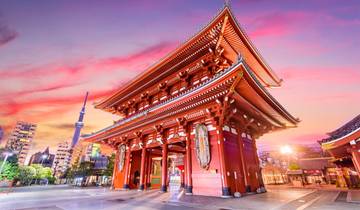
- Pass a sumo stadium and spot the stone Jizos in Tokyo
- Pass through the idyllic countryside around Mount Fuji
- Snap a picture in the otherworldly bamboo forest
More about Japan
Discover TourRadar
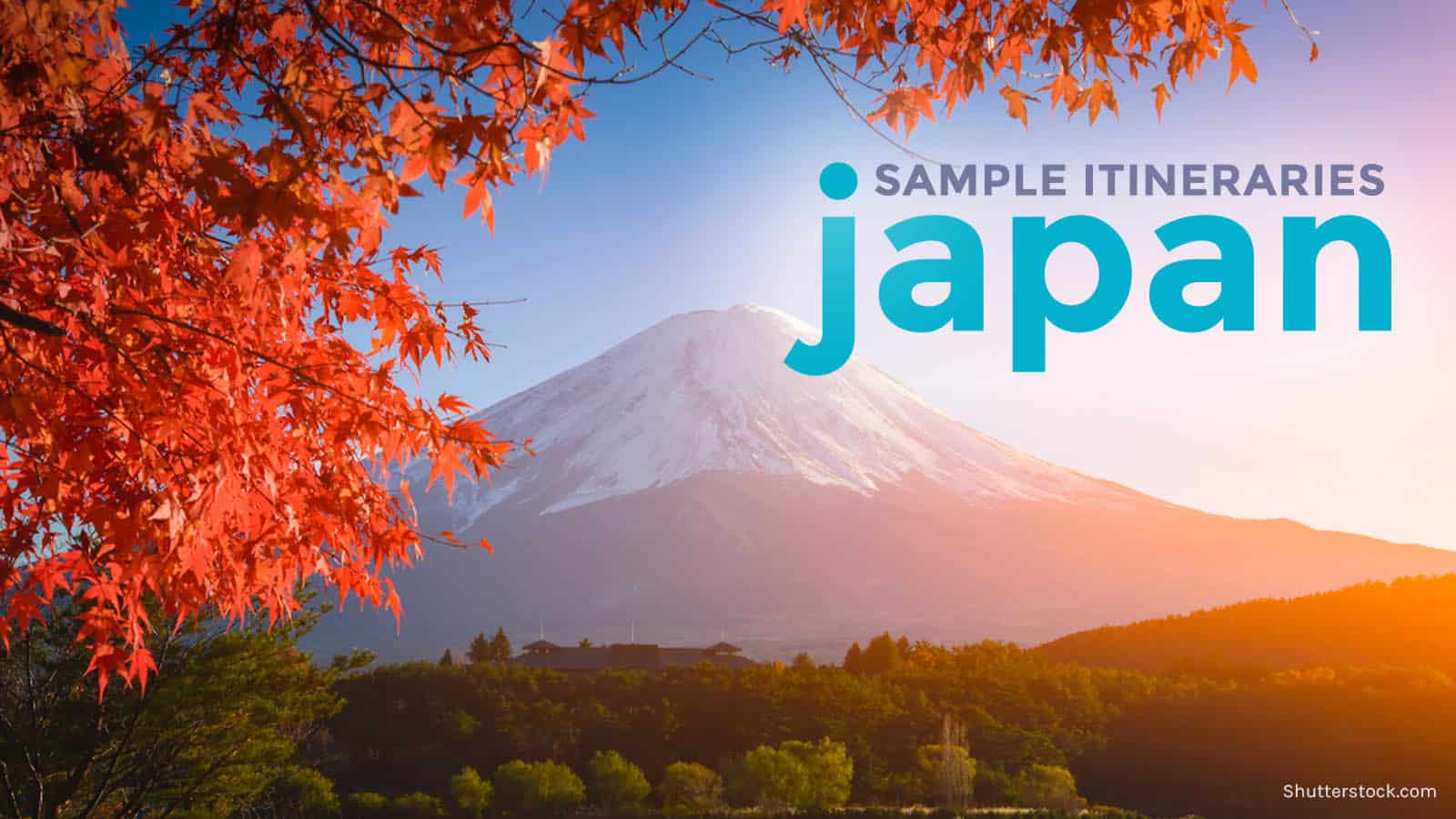
Sample JAPAN ITINERARIES with Estimated Budget: 4, 6, 7, 8, 15 Days

Here are some sample DIY Japan itineraries for Tokyo, Osaka, and Kyoto for 4 DAYS, 6 DAYS, 7 DAYS (1 WEEK), 8 DAYS, and 15 DAYS. Each DIY itinerary has its own recommended minimum budget to help you manage your finances well.

This post covers only Tokyo, Osaka, and Kyoto. If you’re looking for sample itineraries for Sapporo and Nagoya, we have separate samples in the posts below:
- Nagoya Sample Itinerary
- Sapporo Sample Itinerary
If you need help on how to start planning a multi-city tour across Japan, this post might help: Japan Travel Guide
Please take note of the following.
- All the itineraries below assume that you are a party of two , that you will be staying at a double room of a budget hotel or hostel (less than $80 per night), and that you will be splitting costs. The only exception is Tokyo Option 3 and the 15-day backpacking itinerary.
- If your hostel or hotel does not serve free breakfast, visit the supermarket on your first day to buy food (biscuits, drinks, bread).
- Set aside ¥1000 for every unspecified lunch or dinner .
- Airfare is not included in the costing.
- Estimated budget indicated is per person. However, note that this has a big allowance. For example, the ¥1000 budget per meal is often too much because you can actually find a good bowl of ramen, even in Tokyo, for only ¥500. But it’s better to overestimate than under.
WHAT'S COVERED IN THIS GUIDE?
Tokyo Budget Itinerary: 6 Days
Duration : 6 Days, 5 Nights Estimated Budget : ¥35,000 (USD315, PHP15,600)
The BUDGET OPTION. This itinerary replaces the pricey Disneyland visit with a day trip in Odaiba and replaces double room with a bed at a capsule hotel.
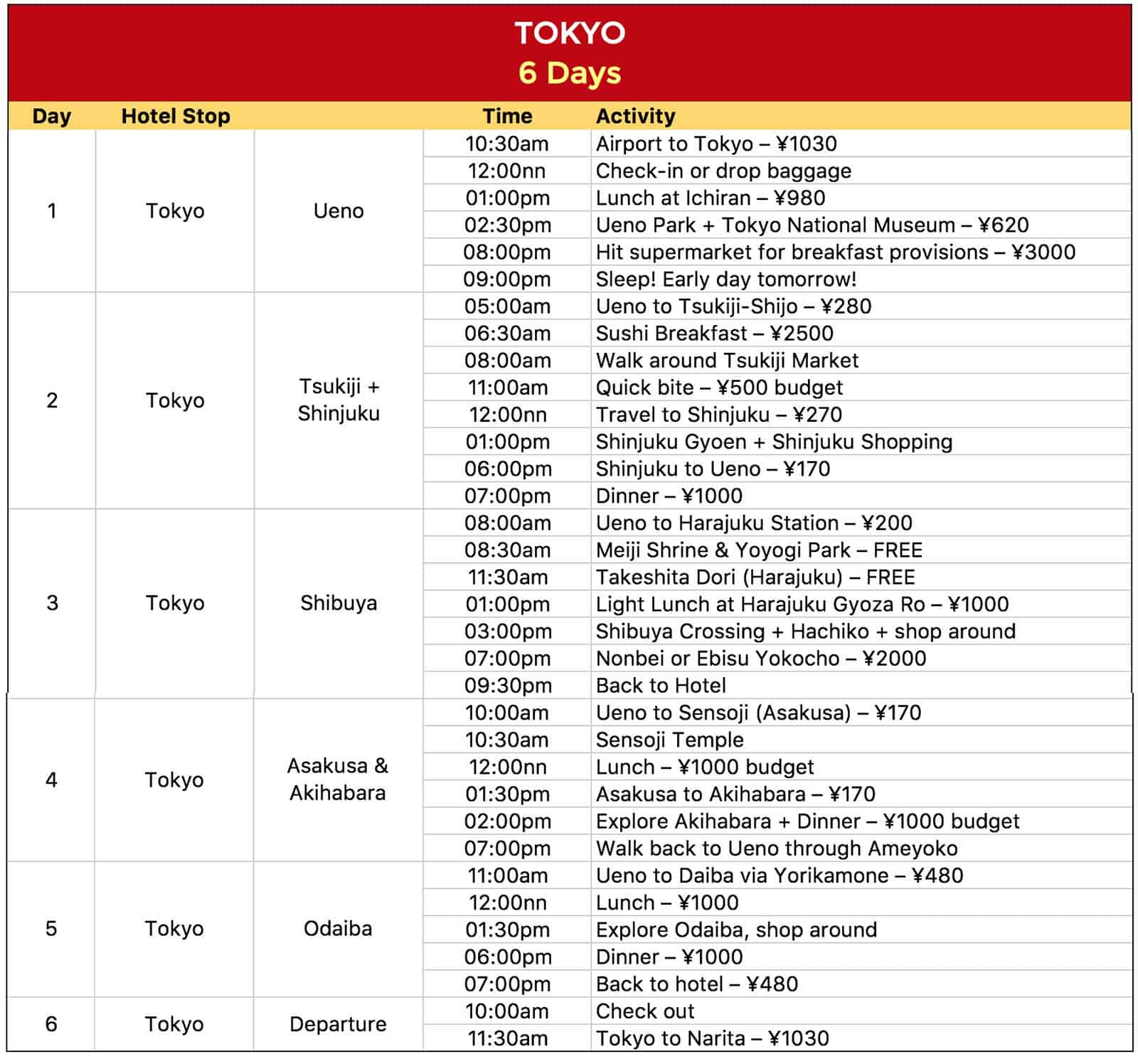
Tokyo + Disneyland Itinerary: 6 Days
Duration : 6 Days, 5 Nights Estimated Budget : ¥53,000 (USD475, PHP23,700)
This itinerary removes the visit to Kamakura and Yokohama and adds a visit to Sensoji Temple.
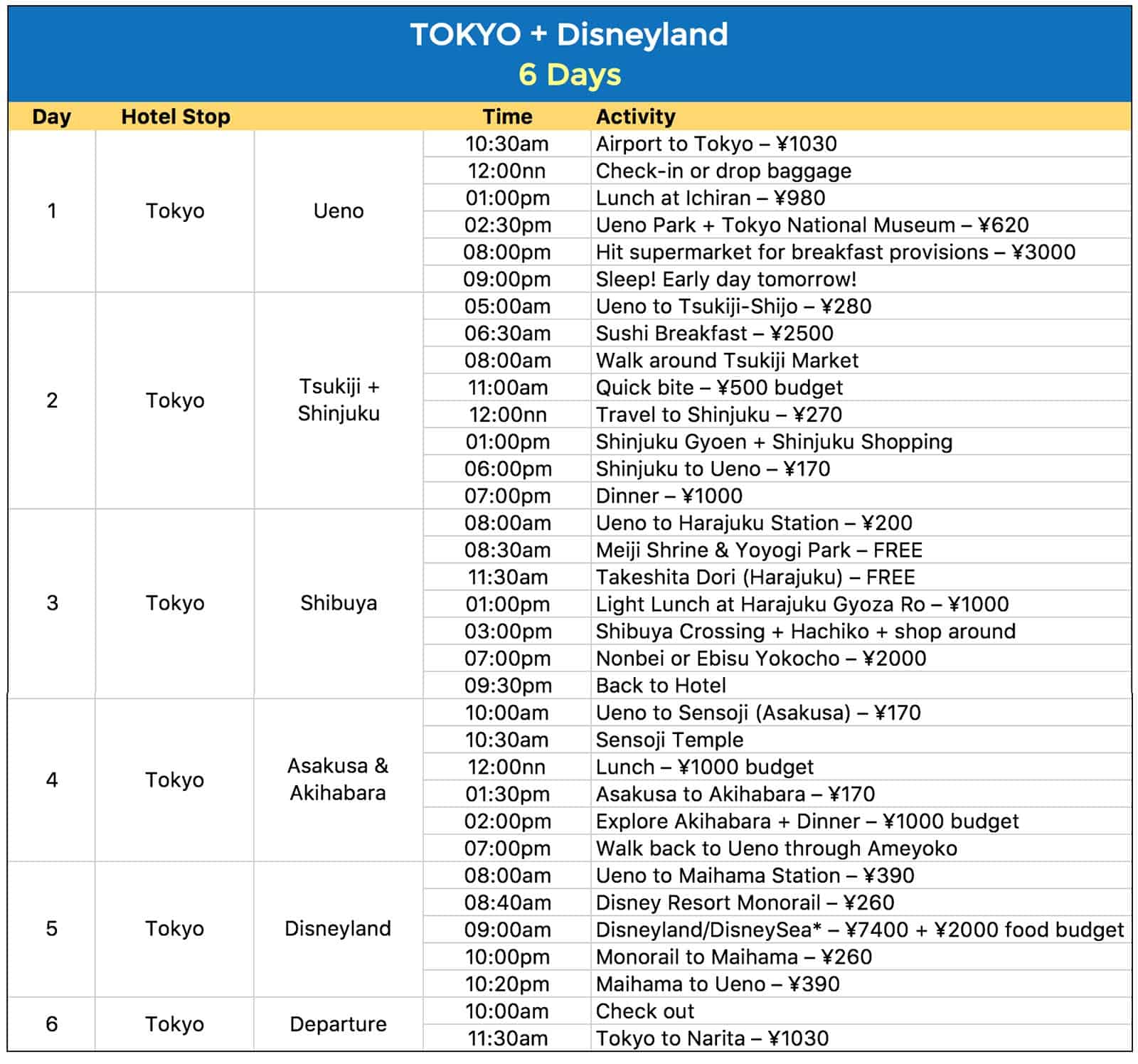
Tokyo + Disneyland + Kamakura and Yokohama Itinerary: 6 Days
Duration : 6 Days, 5 Nights Estimated Budget : ¥56,000 (USD500, PHP25,000)
This is a pretty jampacked itinerary.
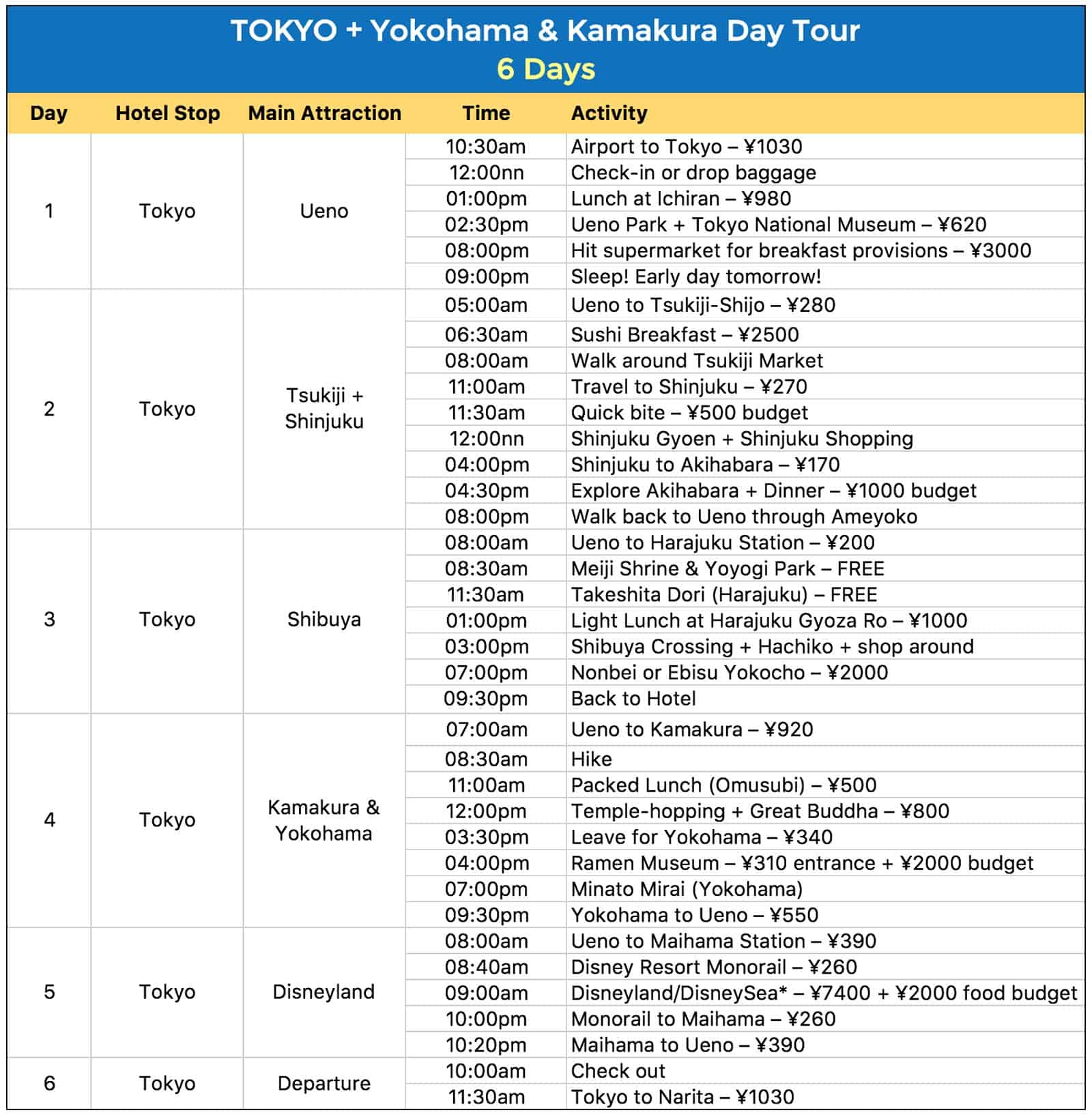
If you need more information about traveling on a budget in Tokyo, check this out: Tokyo Travel Guide
Osaka and Kyoto Itinerary: 4 Days
Duration : 4 Days, 4 Nights Estimated Budget : ¥38,000 (USD340, PHP17,000)
This itinerary assumes you will be landing at Kansai International Airport at night and will be staying in a double room at a budget hotel or hostel for ¥6000/night (¥3000/head).
If you need more help planning your Osaka-Kyoto trip, this post is for you: Osaka and Kyoto Travel Guide
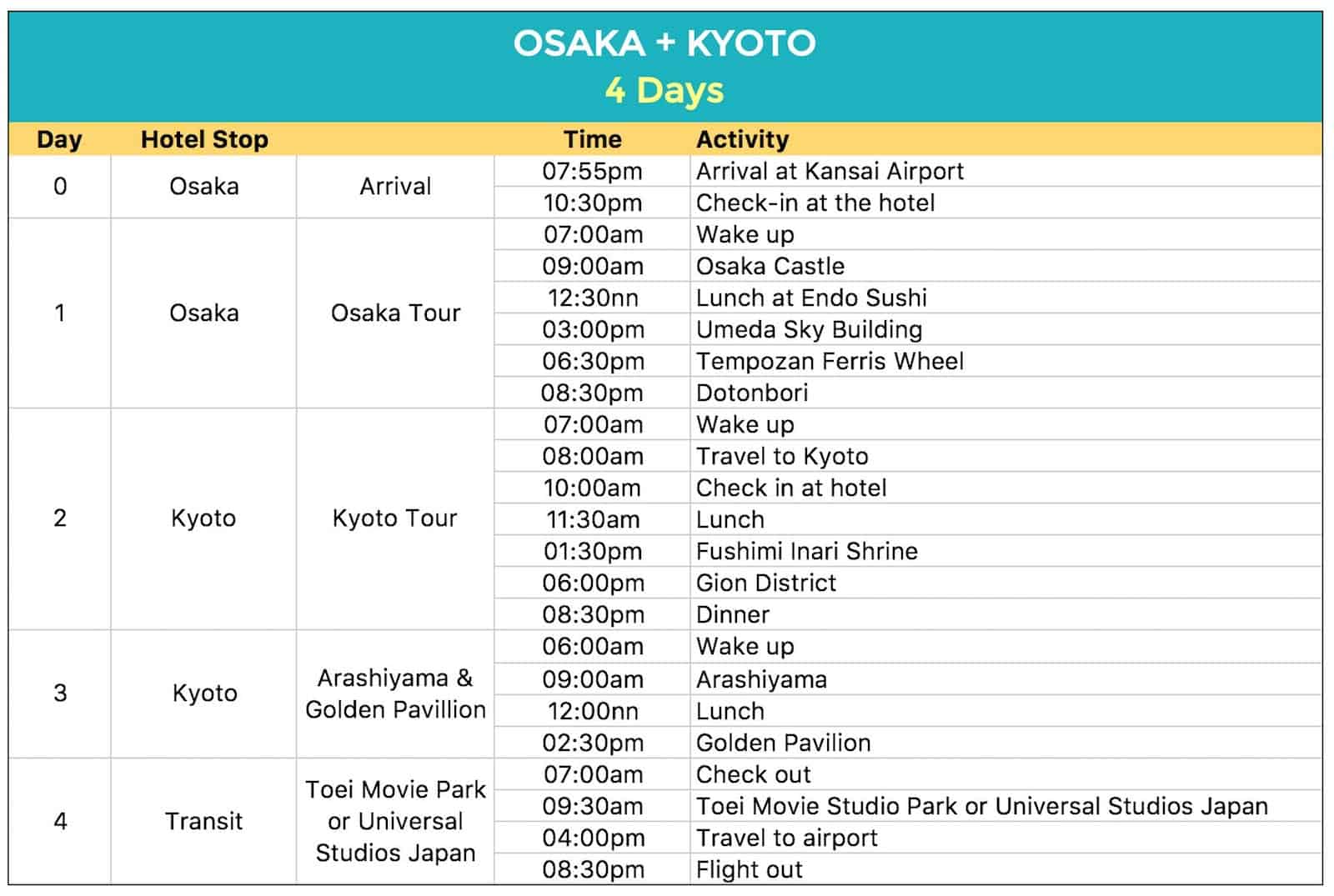
Osaka – Nara – Kyoto Itinerary: 4 Days
Duration : 4 Days, 4 Nights Estimated Budget : ¥45,000 (USD400, PHP20,000)
This itinerary assumes you will be landing at Kansai International Airport at night and will be staying in a double room at a budget hotel or hostel for ¥6000/night (¥3000/head). You will be visiting Nara but only on a day tour.
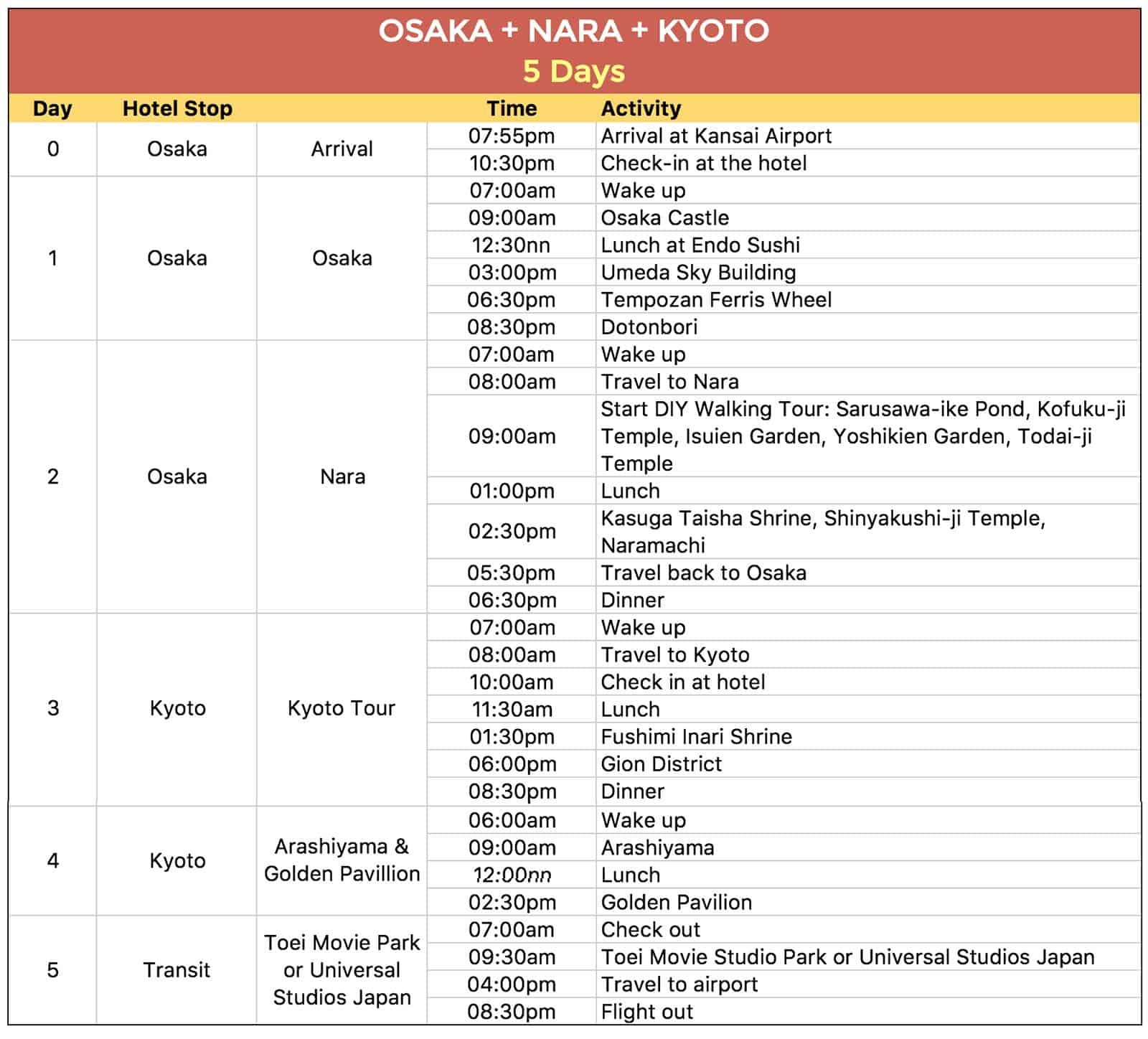
Osaka – Kyoto – Tokyo Itinerary: 8 Days
Duration : 8 Days, 8 nights Estimated Budget : ¥85,000 (USD760, PHP38,000)
This itinerary assumes you will be entering Japan via Osaka and leaving via Tokyo. You will also be staying in a double room at a budget hotel or hostel for ¥6000/night (¥3000/head) in Osaka/Kyoto and ¥9400/night (¥4700/head) in Tokyo.
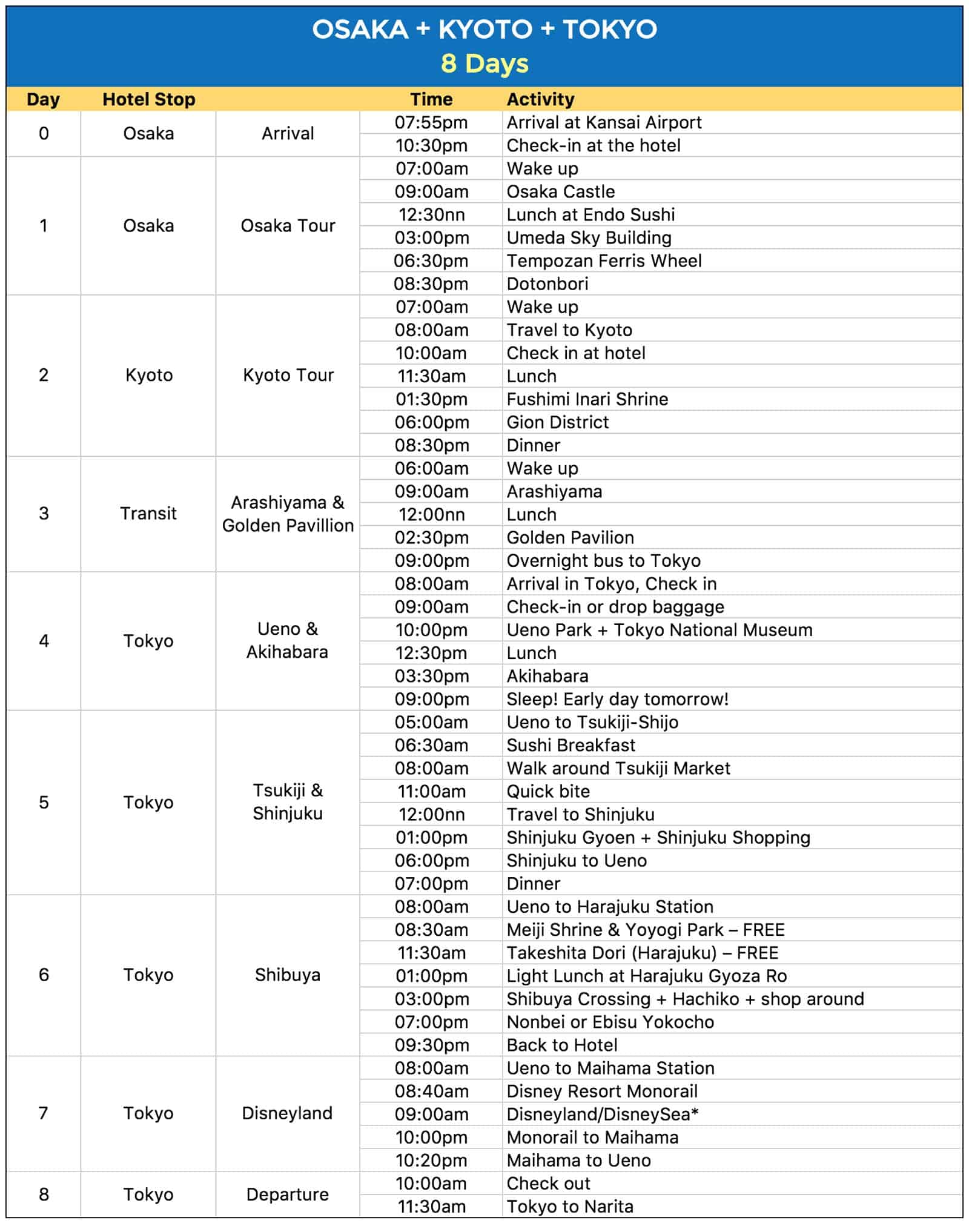
Tokyo – Kyoto – Osaka Itinerary: 7 Days
Duration : 7 Days, 6 nights Estimated Budget : ¥85,000 (USD760, PHP38,000)
This is the reverse of the Osaka-Tokyo itinerary above. This one assumes you’re landing in Tokyo and leaving via Osaka. Your hotel budget here is the same: ¥6000/night (¥3000/head) in Osaka/Kyoto and ¥9400/night (¥4700/head) in Tokyo.
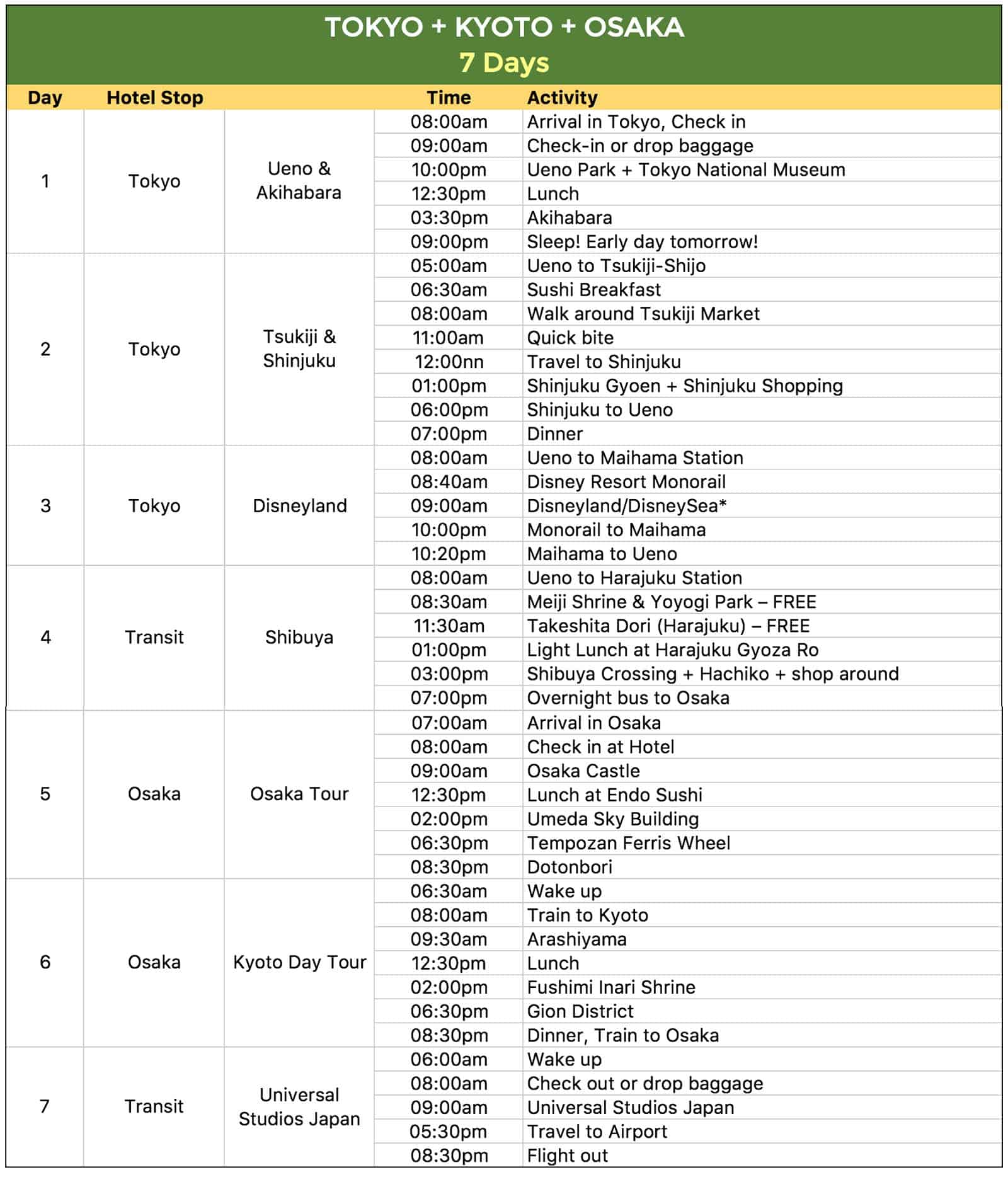
Tokyo – Nagoya – Kyoto – Osaka Itinerary: 15 Days
15-Day Budget Backpacking Duration : 15 Days, 14 nights Estimated Budget : ¥115,000 (USD1030, PHP51,200)
This one is for budget backpackers. This assumes you’ll be staying at hostel dorm (around ¥2000 per night). Because you will be visiting multiple cities including day tours in Ibaraki and Kawaguchiko, it would be great if you have a JR Pass.
Do you really need a JR Pass?
It depends on your chosen itinerary. In this post, we weighed in on the JR Pass. You might want to read it first before making a decision: For more info, read: Is the JR Pass Worth It?
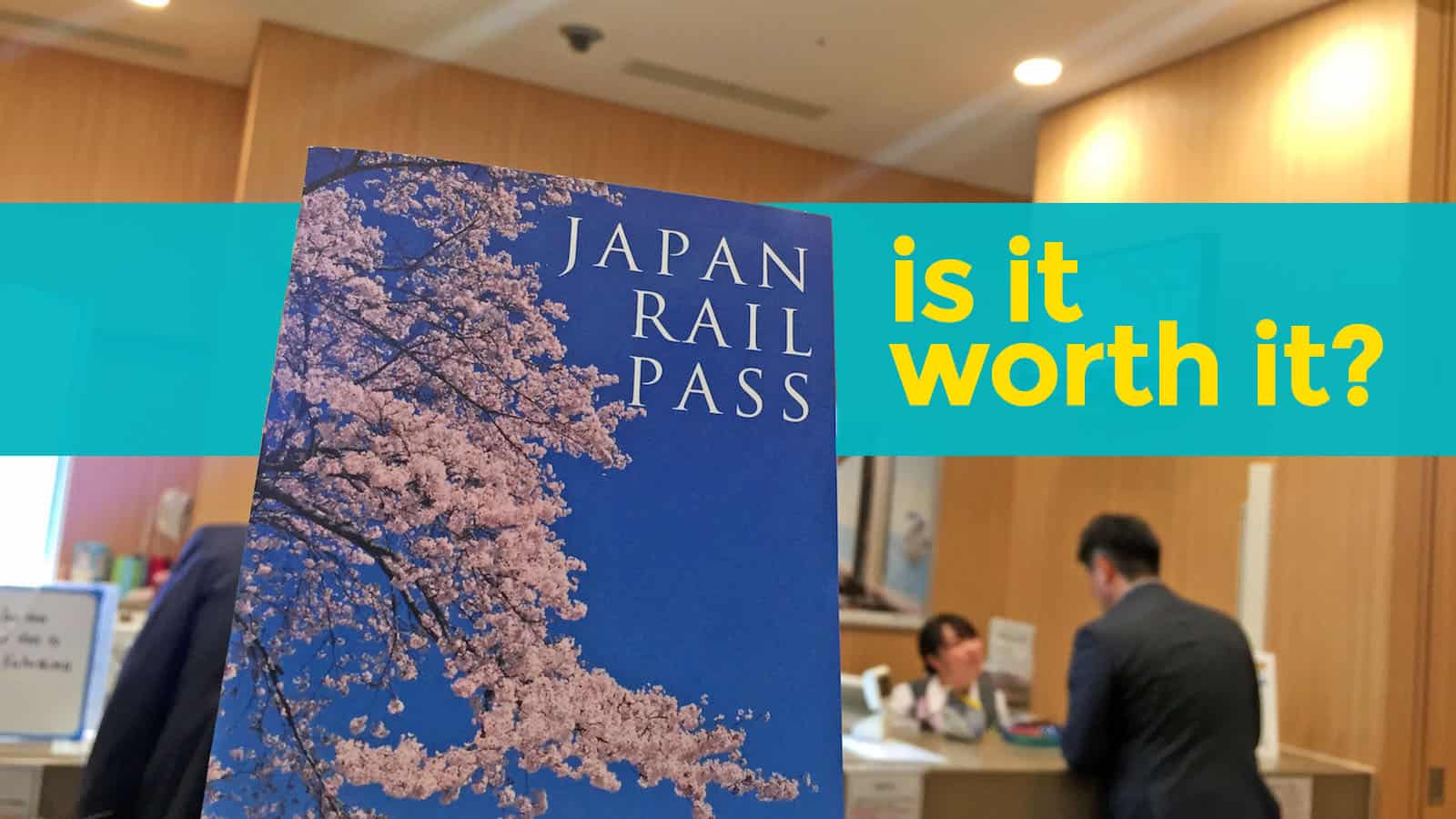
Top Budget Hotels in Tokyo
According to TripAdvisor users as of Feb 2017.
Search for more: Tokyo Hotels
Top budget hotels and hostels in osaka (under $70), search for more: osaka hotels, top guest houses in kyoto (under $70), search for more: kyoto hotels.

2️⃣0️⃣1️⃣9️⃣ • 3️⃣ • 2️⃣4️⃣ (updated) 2️⃣0️⃣1️⃣7️⃣ • 5️⃣ • 2️⃣5️⃣ (first up)
More Tips on YouTube ⬇️⬇️⬇️
Is this post helpful to you?

Related Posts:
- 10 Photos of Cherry Blossoms in Japan
- JAPAN MULTI-CITY TOUR: How to Plan a Budget Trip
- Sample OSAKA-KYOTO-NARA-KOBE DIY Itinerary: 4, 5, 6 Days
- Sample OSAKA- KYOTO ITINERARY with Budget Estimates: 1-6 Days
- 10 Food Delights to Try in Japan
- OSAKA AND KYOTO: Budget Travel Guide
- How to Get to SAPPORO from TOKYO or OSAKA
- THE BEST OF TOKYO IN 2 DAYS: Sample Itinerary and Budget

- Recent Posts
- 2024 Cebu Pacific Promos & PISO SALE with Number of Seats Available - 7 September 2024
- U.S. VISA APPLICATION Requirements & Interview Questions in the Philippines - 4 August 2024
- WHERE TO SHOP IN BANGKOK • Top 8 Shopping Centers and Malls - 29 July 2024
I probably visit your japan articles for so many times as I am traveling to Japan next month (solo trip). I am pretty anxious about how much it would cost me. Can I ask for advice if it’s better to get JR pass TOkyo-kyoto-osaka-tokyo is my itinerary.i wanted midnight bus but just wondering if it would cost the same if I have JR pass? Thanks! More power!
Hi Weywey, overnight bus is a looot cheaper than JR Pass. If you can handle an 8-hour bus ride overnight, go for it.
Here’s our article about JR Pass: http://www.thepoortraveler.net/2017/03/is-jr-pass-worth-it/
Hi. This post is so helpful. I’m planning for a 8d/7n trip to Osaka-Kyoto-Tokyo-Osaka, solo traveler btw. :)
Day 1 – Arrival Day 2 – USJ + Dotonbori Day 3 – Arashiyama / Fushimi Inari / Gion Day 4 – Tokyo = Meiji Shrine / Shibuya + Hachiko / Takeshita / Sanrio Puroland Day 5 – Disneyland Day 6 – Ueno Park / Tokyo Museum / Akihabara / Return to Osaka Day 7 – Osaka Castle / Umeda Sky Bldg / Back to MNL
If ever I get JR pass, do you think it will cost me the same if I use midnight buses back and forth Osaka? Or it’s better if I depart na lang from Tokyo to MNL? (Mas cheaper kasi sa Osaka. Hahaha.)
Thank you so much in advance. :)
If you haven’t booked your return flight yet, I would seriously consider exiting via Tokyo so you don’t need to go back to Osaka. Yes, it might cost more but it will give you more time too. :)
From Kyoto/Osaka to Tokyo, take the overnight bus.
Hi! Would just like to ask if the budget you posted per option is on a per head basis? For example on option 7, budget is 38k pesos per person if there were 2 of us planning to take this trip?
Hi Meg, yes, that’s per person. But bear in mind that these are “overestimates.” For example, the ¥1000 budget per meal, which is used in these itineraries, is often too much because you can actually find a good bowl of ramen, even in Tokyo, for only ¥500. But it’s better to overestimate than under.
Almost 1/3 of the budget also goes to hotel accommodations. If you can find rooms cheaper than the price used in this itinerary, that would significantly bring the costs down.
Traveling Japan was one of my FAVORITE countries of all time. Kyoto was especially…well, special for lack of a creative word LOL Mindblowing might be more apt. Also, the Rail Pass was a HUGE cost saver. Great suggestion!
I’m curious if you guys can manage a budget trip like this for a ski trip, though. The snow is FANTASTIC out near Sapporo, but it was the most expensive part of my trip
Hi Lexi, oh the only time we tried skiing was at Fujiten (near Lake Kawaguchi). I think it’s a bit cheaper than other ski resorts, no entrance fee, but getting there was super expensive because if you don’t have a car (and we didn’t), the only way to get there was by taxi. And you know how costly Japan cab rides are.
Hi. We are 3 in the family going to Osaka next month for a week. Can you give us an itinerary for budget travellers? Thanks.
Hi Yoshke. Thanks for posting all these tips on Japan. I’d like to visit Hiroshima, would you mind sharing if you have been there. We would love to include it in our itinerary of osaka, kyoto amd Hiroshima. Thanks
Hi. I just want to ask for some advice. I have booked a plane ticket for Manila-Tokyo and vice versa this coming September. We plan to stay for a week but we thought that its too long if we will just stay in Tokyo. I just want to know if its practical to get a Whole Jr pass? Can we used that to go to Osaka and return to Tokyo? Hope you could help. Thank you
Hi Jenelyn, in my opinion, a week is still too short for Tokyo, there’s just a lot to do there. The surrounding destinations like Kamakura and Yokohama are also worth a visit. If you decided to stay in Tokyo, you don’t need a JR Pass.
If you really want to visit Osaka and your return flight will also be from Tokyo, the JR Pass isn’t the best option either. You can find cheap flights. Or if you’re up for it, take an overnight bus, which will also save you a hotel night.
More info here: https://www.thepoortraveler.net/2017/03/is-jr-pass-worth-it/
Hi, Your link to Sappora Itinerary Sample and Nagoya Itinerary Sample on the top of your page are swapped. Maybe you didn’t notice it.
Hi Win! Great catch! Thanks for letting us know. Fixed now!
Hi does the budget includes transportation cost in japan during the trip?
hi po, pla po namin mag punta ng japan next month. me, husband and yung son ko. manila-osaka tokyo to manila po ang plano namin. first time namin sa japan, kailangan ba namin bumili ng jr pass? hingi po sana ako ng suggestion mo, kung ilang days namin kailangan mag stay ng osaka para makalibot and sa tokyo.. 10-13 days po kami mag stay ng japan.
If Osaka and Tokyo lang ang balak nyong puntahan and no side trips to other distant cities, you don’t need a JR Pass. This post explains it: https://www.thepoortraveler.net/2017/03/is-jr-pass-worth-it/
If 10 days, I suggest 6 days in Tokyo and 4 days in Osaka+Kyoto.
If 13 days, 7 days in Tokyo and 6 days in Osaka+Kyoto.
Can you recommend a travel agencies that organise the itinerary tokyo with disneyland
We haven’t tried having a travel agency organize our Japan trip for us, so we can’t recommend anyone. :(
hi, so we are going to Japan for the first time in August. I’ve only booked 6D/5N going to Tokyo…. Reading your articles, seems that is too short, waaaah :( Anyway, so just to confirm, if we stay in TOkyo we won’t be needing the JR pass right? How will we get around the city? Also, where do you think is the best area to stay as springboard to must-go places in Tokyo? The only sure place we will visit is Tokyo Disney as well as Mt. Fuji tour. What else can you recommend? Thanks in advance!
Yep, you DON’T need a JR Pass if you’re staying in Tokyo.
My favorite base is Ueno. We explained why in our TOKYO TRAVEL GUIDE. You can find that here: https://www.thepoortraveler.net/2016/12/tokyo-travel-guide-expenses/
Super thank you again!!! I’m going crazy making the itinerary…. All your articles are very helpful!
Hi Pwede po humingi ng soft copy of Tokyo – Kyoto – Osaka Iterynary. Thanks po
Do you have a itinerary for tokyo – hakone-mt fuji- kyoto- osaka- tokyo? Thanks.
Hi ask ko lng po if single entry lng ang visa. Can we enter in tokyo and exit in osaka? Or same exit din kame dapat kung saan ang point of entry nmin? Thank you!
Hi Chi, okay lang na magkaiba ang entry and exit points kahit single entry visa. Basta wag ka lang lalabas ng Japan tapos papasok ulit. :)
Hi! I love how comprehensive yet simple your website and itineraries are! May I know though if can replace Disney Sea/Land with Fuji Q, in your 8-day Osaka-Kyoto-Tokyo itinerary? We have exactly 8 whole days for touring, that is excluding our arrival and departure days. We will travel this September na. Just got our visa. hehe
Hi Isla, yes, that’s possible. :) You can visit Fuji Q as a day trip from Tokyo. :)
hi Yoshke I will travel with my wife and two daughters age 18 and 20 to japan in march for 35 days. we will use the 21 day japan rail pass. we would like to visit Okinawa also. we fly out of Edmonton alberta Canada and will fly to okinowa first then return from Tokyo. this is our first trip to japan. could you help us with this itinery or suggest a good site for this period of time. Thank you and any help is appreciated.
Wow! 35 days! :D If I had that much time (and money), I would do it like this:
Days 1-5 Okinawa Days 5-9 Fukuoka & Nagasaki Days 9-12 Hiroshima Days 12-15 Tottori Days 15-20 Osaka & Kyoto Days 20-25 Nagoya/Gifu Days 25-29 Hokkaido Days 29-35 Tokyo
To maximize your JR Pass, use it first when you travel from Fukuoka to Hiroshima (Day 9). This will allow it to be effective until Day 29. when you travel from Hokkaido to Tokyo. This way, you have covered most long-distance trips.
Japan-Guide .com has an online forum too. Maybe you can post this on their forum. :D
Hi! I want to Travel to Tokyo, Osaka and Kyoto but I have roundtrip ticket MNL-NRT. No exact days yet since I can still rebook my flight but still with NRT. Is it okay not to get JR Pass? Or I do I need it to get back to Tokyo?
The number of days of your trip is a key factor in determining whether you need a JR Pass or not. So decide muna how long your trip is.
But yes, it’s possible to travel from Tokyo to Osaka/Kyoto and back even without JR Pass. You can take the bus.
hi Sir .. good day po . we’re planning to visit japan this november . 2 adult and 1 kid i saw your iteneray .. can you help me look for a budget hotel wre we can stay .gusto ko po sana na eto mga puntahan namin 7 days po tokyo kyota osaka wla po kase kayong hotel na nailagay. buget hotel po sna .. salamat
You may check out our individual travel guides for info and recommendations on WHERE TO STAY:
Osaka: https://www.thepoortraveler.net/2018/03/what-to-do-in-osaka/
Kyoto: https://www.thepoortraveler.net/2018/03/things-to-do-in-kyoto-itinerary/
Tokyo: https://www.thepoortraveler.net/2016/12/tokyo-travel-guide-expenses/
I have a question on the itinerary particularly on Tokyo – Kyoto – Osaka Itinerary: 7 Days. 1. What type of pass or card recommended to use on this itinerary? Is PASMO card enough to use in all the transportation needed? 2. PASMO card is accepted also in OSAKA and Kyoto train/buses?
1. When is your trip? We will be publishing better, more cost-efficient sample itineraries later this month.
2. Yes, PASMO card is accepted by any train gate or bus with an IC reader. Not all buses have IC readers though, I think.
Hi. Would a single-entry visa suffice if we fly to Osaka then fly out from Tokyo?
Hi Louise, yes, as long as you’re not flying out of Japan in between!
Hi, Me and my brother are planning to explore Japan later this month for the first time. And we’ll be spending 10 days. Our flight will be MNL-OSAKA-MNL. What mode of transportation can you recommend if we want to go to Tokyo and come back to Osaka? And what are other itineraries can you recommend? Thank you so much.
Hi Rhona, if budget traveler kayo, okay i-take ang bus. Overnight bus, pwede rin para tipid.
We’ll be creating more sample itineraries soon!
Hi, paano mo gumawa ng itinerary templates for 7 days? Any app you can recommend? Love your blog and it’s so helpful! Thank you!
Hi Girlie, we make our itineraries based on experience lang.
Hello. I want to consider your 8 days / 7 days multi city itinerary, might follow it sa planned Japan trip. One question though, would want to include in the itinerary the visit to see Mt. Fuji. What route can you recommend in between those days? Thank you!
We would like to follow the 8 days intinerary (osaka – kyoto – tokyo ) 1. Do we need to get JR pass? 2.. in your itinerary , is it DIY? If so we need to buy all the tickets in advance thru klook or at site(japan) 3. Or you have arrange tour packages in agency?
Hope you can ease my mind and help me with this.
More power to you!
1. If your entry point is Osaka and exit is Narita/Haneda, no need for JR Pass. I’m assuming you’re taking the bus to Tokyo.
2. Yep, it’s DIY.
3. It’s DIY.
Hi Yoshke Dimen,
Greetings to you from Singapore.
I am planning a family trip of 10 days to Osaka/Nara/Kobe/Nagoya/Kyoto/Osaka in mid Nov this year. My tentative itinerary is as follows. Appreciate for your input. TQVM.
Day 1 Arr at Osaka at night Day 2 Osaka city tour Day 3 Nara day tour with train from Osaka Day 4 Kobe day tour with train from Osaka Day 5 Leave for Nagoya from Osaka- Nagoya castle Day 6 Shirakawa-go day tour Day 7 Ohsukamon & Ohsu shopping street Day 8 Leave for Kyoto from Nagoya Day 9 Visit Kyoto Day 10 Leave from Kyoto to Osaka for afternoon flight to Sg
Is the route feasible & practical? Appreciate for your suggestions. TQVM.
Switch Day 3 and Day 4 so that you’ll visit Nara on Day 4. Then, get a 5-Day Kintetsu Rail Pass, which will cover your journey from Osaka to Nara, Osaka to Nagoya, and Nagoya to Kyoto. :)
Replace Day 7 with the Day 4 in the sample itinerary here: https://www.thepoortraveler.net/2017/05/nagoya-japan-travel-guide/
We will soon be updating this post because we now have better sample itineraries. But we’re still trying to find time to update.
Greetings from the Philippines
My friend and her 2 sons will visit(1st time) Japan this June 20 to 26. Our entry is at Narita Airport, We dont have yet a place but we plan to stay in Tokyo, would you recommend any please? Or if not in Tokyo, where? Thanks in advance!
Hi Donna, this post might help: https://www.thepoortraveler.net/2016/12/tokyo-travel-guide-expenses/
Hi! I’m planning to follow your Osaka-Kyoto-Tokyo itinerary but will tweak it a bit to make it a 10-day trip. Our itinerary is still flexible. I’m planning to add one full day for Universal Studios in Osaka, and another for a day tour in Mie, specifically in Nabana no Sato. Any tips on which pass/es to use and if it’s necessary to go back to Osaka or go directly to Kyoto? Thank you in advance!
Hi Margaret,
If you’re visiting Mie too, consider getting a Kintetsu Rail Pass. :)
Have you considered making a stop in Nagoya? It sits right between Osaka/Kyoto and Tokyo, and it’s the city closest to Nabana no Sato.
Hello! Thanks for replying. I’m thinking of adding Nagoya to our itinerary as well. Is a day tour to Shirakawa-go worth it in the spring season + Takayama (we’re travelling april 2020 btw)? Or should we go there in autumn/winter instead? Any suggestions for this itinerary? Thank you!
Day 1 – Arrival in Osaka (visit places covered by Osaka Amazing Pass) Day 2 – Universal Studios Japan + Dotonbori Day 3 – Nara Day Tour Day 4 – Transit to Kyoto, Fushimi Inari, Gion District Day 5 – Arashiyama, Golden Pavilion, Transit to Nagoya Day 6 – Free morning + Nabana no Sato in the afternoon Day 7 – Nagoya Castle, Toyota Museum, Sakae District Day 8 – Transit to Tokyo, Ueno Park, Akihabara Day 9 – Shinjuku Day 10 – Shibuya, Harajuku Day 11 – Departure from Tokyo
Hi Margaret, yes, Shirakawa-go is worth it. Takayama is lovely too. I love small Japanese cities and villages so I’m a bit biased, haha.
I think your itinerary is good. A bit too fast-paced for me — I would insert a couple of free days — but since you only have 11 days and if you have the energy, go for it! :)
Hello Miss Yoshke Dimen,
I and my friends will be visiting Tokyo in October but we only plan to visit Hitachi Seaside Park, Tokyo Disneysea and Mt. Fuji. Is it practical to get the JR pass? We will be only be there for 5 days.
Thank you in advance!
Hi Russel, parang hindi practical for you.
Consider Tokyo Wide Pass. Covered nya Fuji, but I’m not sure about Hitachi Seaside Park. I think some parts of Ibaraki prefecture (where Hitachi Park is located) are covered though, di ko lang alam yung extent.
We’ll be travelling Osaka-Kyoto-Tokyo by February 29 for 8 days trip with group of 8 adults and 1 child. please check if my itinerary is doable and any suggestion? Thank you so much!
Day 1 PM flight. Day 2 Osaka Castle, Kuromon Market, Dotonbori Day 3 USJ Day 4 Kyoto Day Tour: Arashiyama, Fuji inari shrine, gion district Day 5 Tokyo: Yoyogi Park or Ueno Park??? Day 6: DisneySea Day 7: Shibuya, Akihabara Day 8 Manila
Hi Ana, it looks doable. My only comment is, Yoyogi Park is best if sa Day 7 rin since it’s located in Shibuya. Then ung Ueno Park and Akihabara naman yung magkalapit. :)
Maluwag yang itinerary na yan, which is okay if big group tapos may bata. :)
Hello! We already Visited Japan(tokyo, osaka, yokohama, atami) as a couple but we wanted to go back with kids this time. May you please suggest an itinerary that includes Disneyland, UStudios, hokkaido and other places that we have not visited yet. Thank you!
How many days do you have for that trip?
Hi, Do you have sample itinerary trip in Japan for 1 week during January. including skiing.
Hi, Yoshke!
Do you have a priced version of you Tokyo – Kyoto – Osaka Itinerary: 7 Days? Just so I could see the breakdown of the Php38,000.00, too.
By the way, thank you for the detailed itinerary. I’ll be sure to use your affiliate links. :)
Thanks, Rina
Hi Rina, unfortunately, I didn’t keep the breakdown when I made this. We’re planning to write a more detailed Tokyo-Kyoto-Osaka itinerary with breakdown of expenses though, but not sure how soon we can do it as we’ll be hitting the road soon.
I’ll be touring Osaka (3days) -Kyoto (2days) -Tokyo (4days). I’ll be getting the JR pass but Im still confused if I ALSO need to get the ICOCA. Can I use the JR pass around Tokyo, or there’s a different pass for this? Thank you!
Hi Lei, as long as JR ang sasakyan mo, pwede mong gamitin ang valid na JR Pass.
If hindi JR yung train, you can buy a separate single ticket na lang or use ICOCA/SUICA. Depende yan sa specifics ng itinerary mo.
Hi do you have recommended itinerary for 12 days? Tokyo day 1-5 transit to Osaka day 6 then day 7-12 kansai region. Hope to hear from you. Thank you!
is the amount indicated like the osaka kyoto tokyo, around 38k, is that good for two or per person? We got a bit confused with the intro of this article. Just want to clarify. Thanks
Hi Patty, as stated, estimated budget is PER PERSON, but it’s assuming there are 2 people traveling and splitting the cost of accommodations.
If it’s confusing, we’ll probably revise the article and exclude hotel in the computation in the future.
Hi Yoshke! Your blog is so informative. Thank you for all the details. :) I would just like to ask help with the best itinerary for us, a family of 4 (kids are 10 and 1 yr 4 months). We will be going to Japan this coming Feb 10-19 and Osaka is our entry and exit. We are planning to tour Osaka, Kyoto, Nara and Tokyo including USJ and Disney Sea if possible with the length of stay we have. Since we have a toddler with us and a senior citizen, can you give/suggest to us the best possible itinerary with the pass we need to buy? Hope to hear from you! Thank you very much!
Since Kansai Airport is both your entry and exit, visit Tokyo first. It’s always a good idea to visit the farthest destination first so you don’t stress yourself out trying to catch your flight out.
Day 1 – Arrival/Transit to Tokyo Day 2 – Disney Sea Day 3 – Shibuya (Meiji Shrine, Harajuku, Shibuya Crossing) Day 4 – Transit to Osaka, Namba/Dotonbori Day 5 – Nara Day Tour Day 6 – Kyoto Day Tour Day 7 – Osaka Tour Day 8 – Universal Studios Japan Day 9 – Departure
If you want to take the train for Osaka-Tokyo-Osaka, get a nationwide JR Pass and make sure that long distance trips (Osaka-Tokyo, Tokyo-Osaka, Osaka-Nara) are all within 7 days.
If you want to fly for Osaka-Tokyo-Osaka instead, get separate city/regional passes na lang for the trains/subway.
Need your help if possible, this it our (adult son/me) first trip to Japan and we would like to visit everywhere but I know we can’t. I have already booked a hotel in Tokyo, purchased the 14 days JR pass and booked a couple of shows/places (below) which apparently sell out. Still pending to book the One Piece Tower/Park and Ghibli Museum. We are traveling during year end and I know many things are closed which is where am having a hard time. We want to spend a couple of days in Hokkaido/Sapporo and then go back to Tokyo, visit Osaka, Kyoto, Nara, Hiroshima, Miyajima, Kanazawa, etc. We want to visit Mt. Fuji, Bamboo Forest the Temples, the Golden Castle, and the Imperial Palace, Akihabara, Harajuku, Shinjuku, Shibuya, the deer, Disney, etc. I know it’s a lot and have no clue where to go first b/c I don’t know what will be closing down for new years. I also need an idea for my son’s New Year’s birthday. How can I make the most of my trip and plan it to make it super worth it. We are from Miami, FL USA it’s a very long trip and not sure how many times I can go again.
DEC26 Day 1 – Arrival at Narita Airport 3:20 PM 27 Day 2 – 28 Day 3 – 29 Day 4 – 30 Day 5 – 31 Day 6 – JAN 1 Day 7 – My son’s birthday 2 Day 8 – 3 Day 9 – have tix for TEAMLAB BORDERLESS (TOKYO) ENTRANCE 12:00 noon 4 Day 10 – 5 Day 11 – 6 Day 12 – 7 Day 13 – 8 Day 14 – 9 Day 15 – have tix for YAYOI KUSAMA MUSEUM – TOKYO 1:00 PM 10 Day 16 – 11 Day 17 – Departure from Narita Airport at 6:45 pm
My concern is your TeamLab borderless visit is smack in the middle of your itinerary, which throws a wrench into any smooth-flowing itinerary I could suggest.
Is that final or can that visit be moved towards the end of your trip?
Thank you for response and trying to help us. It ca be moved..
To be honest, 17 days is too short for all the places you want to visit. But if you really want to visit all those, here’s a simplified itinerary.
Note, however, that the journey to and from Sapporo by train is looooong. That’s why I always recommend flying when going to or coming from Tokyo or anywhere south of it.
I also didn’t consider the days when some attractions are possibly closed (especially on the days around New Year’s Day).
DEC26 Day 1 – Arrival at Narita Airport 3:20 PM 27 Day 2 – Tokyo to Sapporo 28 Day 3 – Sapporo 29 Day 4 – Sapporo 30 Day 5 – Sapporo to Osaka 31 Day 6 – Osaka JAN 1 Day 7 – Nara Day Tour (son’s birthday) 2 Day 8 – Kyoto Day Tour 3 Day 9 – Osaka to Hiroshima 4 Day 10 – Hiroshima 5 Day 11 – Miyajima Day Tour 6 Day 12 – Hiroshima to Kanazawa 7 Day 13 – Kanazawa 8 Day 14 – Kanazawa to Tokyo 9 Day 15 – Tokyo, including YAYOI KUSAMA MUSEUM – TOKYO 1:00 PM 10 Day 16 –Tokyo 11 Day 17 – Departure from Narita Airport at 6:45 pm
My reco is to remove Sapporo. It’s beautiful but it’s out of the way.
If Sapporo is non-negotiable, then probably remove Kanazawa then maximize your stay in Tokyo (there’s A LOT TO DO IN TOKYO) or insert a destination in Tohoku Region just to break the long train journey from Sapporo to Osaka.
Thank you so much for the help. I will further research the New Years shut down for the attractions and see what I can remove / change. Again thank you so much for all the info it is greatly appreciated. I will definitely will need to plan more than one trip.
No prob, Rita. It’s really hard to build a Japan itinerary because there’s SO MUCH to see. :S
Sorry just noticed I had a few typos. I can change it for later in the trip, that is not a problem.
I know! I have been trying myself for a while, thank you so much for your help. I am very exited!! Will tell you all about it when I come back.
Hi!! Please help.. im planning to visit kyoto and nara for 2 days then ride a bus overnight to tokyo. Should i buy a pass? Hope you reply.. thanks!!
In Kansai, where will you be based?
Hi, ask lang po san po best mag palit ng currency dito na sa pilipinas o dun na po sa japan? Thanks
Thanks to these itinerary references to create my own itinerary and have a budget for every place to visit for the first time. Because of the pandemic, I still have more time to save money. :) I’m a big fan of this Blog. Try to listen also to their Podcast on Spotify to have more details about their travel experience.
Hi, we are planning for 10D9N trip (Tokyo – Nikko – Kurakama – Hakone – Mt Fuji – Lake Kawaguchiko). Is JR tokyo wide pass + SUICA enough for us? thanks
Hi! Can you recommend an 8 day trip for Nagoya-Tokyo area? Or if you have a better suggestion for the itinerary, arrival and departure is in Nagoya. Thank you!!
Featured On

We heard you!
Your comment is now queued for moderation! We’ll try to get back to you soonest. While waiting, follow us on these channels.
Subscribe on Youtube! Follow us on Instagram!

- 16 Days, 15 Nights Austria – Slovenia – Croatia – Bosnia – Italy
- 15 Days Europe Marian Pilgrimage
- 13 Days, 12 Nights Italy & Balkans Experience with Our Lady of Medjugorje
- 13 Days, 12 Nights Poland, Lithuania, Latvia, Estonia, Finland
- 12 Days, 11 Nights Holyland Pilgrimage
- 11 Days, 10 Nights, Israel & Rome Pilgrimage
- 11 Days, 10 Nights Arctic Circle Adventure + Baltic and Nordic Capitals
- 9 Days / 8 Nights Moscow & St Petersburg, Russia
- 4 Days / 3 Nights Adventure to the Top of the World-Lapland & Finland
- 4 Days, 3 Nights Unforgettable Dubai & Desert Stars
4 Days, 3 Nights Tokyo, Japan
- 7 Days, 6 Nights, Vietnam – Cambodia – Bangkok
- 13 Days, 12 Nights Nature, Mountains & Waterfalls Philippines Tour
- 6 Days, 5 Nights Explore Bohol & Cebu – Queen City of the South
- 4 Days, 3 Nights Culture, Religious, Farm CDO Tour
- 4 Days, 3 Nights CDO, Camiguin, Volcanic Islands CDO Tour
- 3 Days, 2 Nights Farm, Country, Caving, Adventure CDO Tour
- Upcoming Tours
- Culinary Tours
- Request Event Assistance

Tour Program
2000H – ETA Haneda International Airport . Transfers to Hotel via Seat-in-Coach .check-in. Overnight in Tokyo.
Meals: Inflight Meals DAY 2 Full Day Mt Fuji – Hakone- Lake Ashi After hotel breakfast, join the bus tour to Mt Fuji & Hakone . Visit 5th Station viewing deck of Mt Fuji , enjoy Hakone Sky Gondola , visit Owakudani Valley and cruise on Lake Ashi . Lunch at local restaurant then return to hotel. Free Time.
Meals: Breakfast, Lunch DAY 3 FULL DAY TOKYO DISNEYLAND with Roundtrip Seat-in-Coach Transfers Meals: Breakfast
PACKAGE INCLUSIONS:
- Roundtrip Airfare Manila- Haneda – Manila via Ana Air or similar
- 4 days, 3 nights hotel accommodation in 3-stars on Twin/Triple sharing
- Full Day Mt Fuji – Hakone-Lake Ashi
- Full Day Disneyland Tour
- Road tax, State taxes, parking fees
- All applicable hotel taxes and service charges.
- Day 1 : Inflight Meals
- Day 2 : Breakfast, Lunch
- Day 3 : Breakfast
- Day 4 : Box Breakfast / Inflight Meals
- Entrance to sites as specified in the itinerary
- Visa Processing Assistance ( PHIL passport only, others may have applicable charges )
- Travel Insurance
PACKAGE EXCLUSIONS:
- Other personal expenses
BOOKING CONDITION & IMPORTANT NOTES:
- Above Itinerary & Rate subject to change without prior notice, until paid & finalized.
- Full cancellation penalty if cancelled within 30 days from departure.
VISA REQUIREMENTS:
- Passport valid for 6months from departure date
- Filled up Visa Application Form
- (1) 2×2 photo with white background
- NSO Birth Certificate (at least 6months old)
- NSO Marriage Certificate if married (at least 6months old)
- Other documents that maybe required by the embassy on a case to case basis
APPOINTED HOTEL : 3* hotels

Connected to Shinjuku Station, our Hotel is a 5-minute walk from the fashionable shopping and dining district of Shinjuku. It features a lounge with massage chairs, and it offers concierge service and free WiFi.
Shinjuku JR Train Station, the Tokyo Metropolitan Government Buildings and Shinjuku Gyoen Park are about a 15-minute walk from the hotel. The famous Kabukicho entertainment area is a 10-minute walk away.
Compact rooms equipped with a refrigerator and hairdryer.
Booking for 4 Days, 3 Nights Tokyo, Japan
Contact info, newsletter signup.
Email address:
Check our Facebook page

1-Day Tour From Nagoya: Hiking the Historic Nakasendo Trail
Exploring Japan’s rich cultural heritage is a captivating experience, and the 1-day tour from Nagoya to the historic Nakasendo Trail offers a unique opportunity to take in the country’s fascinating history. Travelers will have the chance to wander through the well-preserved townscape of Tsumago-juku , hike along the scenic 8-kilometer trail to the charming Magome-juku , and gain insight into the lives of Edo-period travelers . With round-trip transportation, an English-speaking guide, and a provided lunch, this tour provides a seamless way to discover the hidden gems that lie along this historic highway. However, the challenge of the hike promises to make the experience all the more rewarding for those seeking a deeper connection with Japan’s cultural heritage.
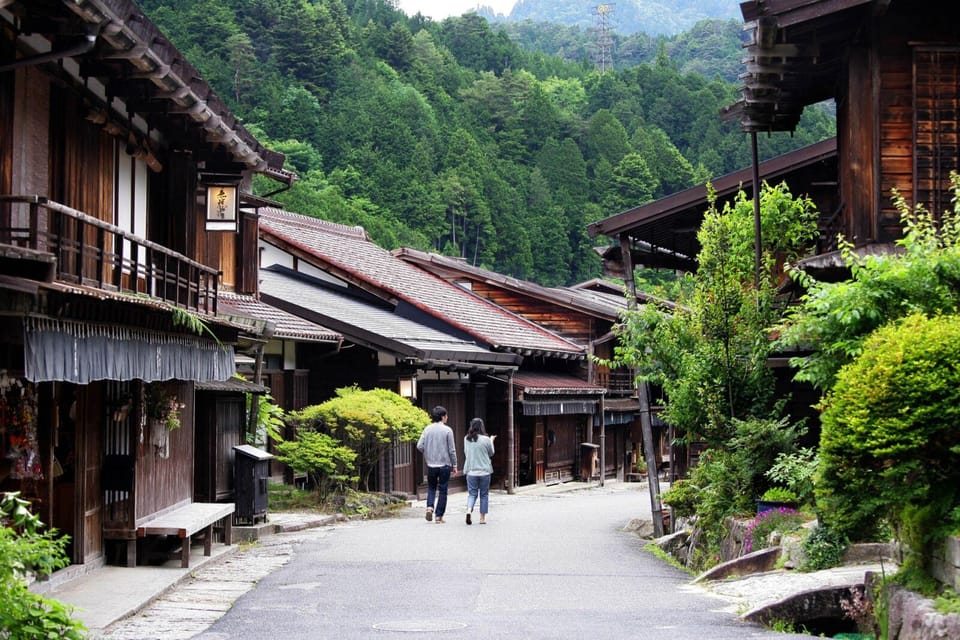
This 1-day tour offers an immersive journey through Japan’s historical landscapes, exploring the well-preserved townscape of Tsumago-juku and hiking the 8-kilometer Nakasendo Trail to Magome-juku.
The tour includes a guided exploration of Tsumago-juku, providing insights into Edo-period travelers along the Nakasendo Trail, followed by a challenging 3-hour hike with scenic vistas.
Participants will discover the charming town of Magome-juku, known for its well-preserved Edo-period architecture and the Nakasendo Highway, an ancient trade route.
The tour includes round-trip transportation, an English-speaking guide, and a provided lunch, catering to the needs of international travelers.
While the tour offers an immersive experience, it may not be suitable for young children due to the strenuous hiking involved and requires appropriate footwear and preparation for hot and humid weather conditions.
More tours and experiences nearby.
- Chubu Airport (Ngo): Private Transfer To/From Nagoya Shrine
- Chubu Airport (Ngo): Private One-Way Transfer To/From Nagoya
- Nagoya: Private and Personalized Eat Like a Local Tour
- Nagoya Airport To/From LEGOLAND Private Transfer
Tour Overview
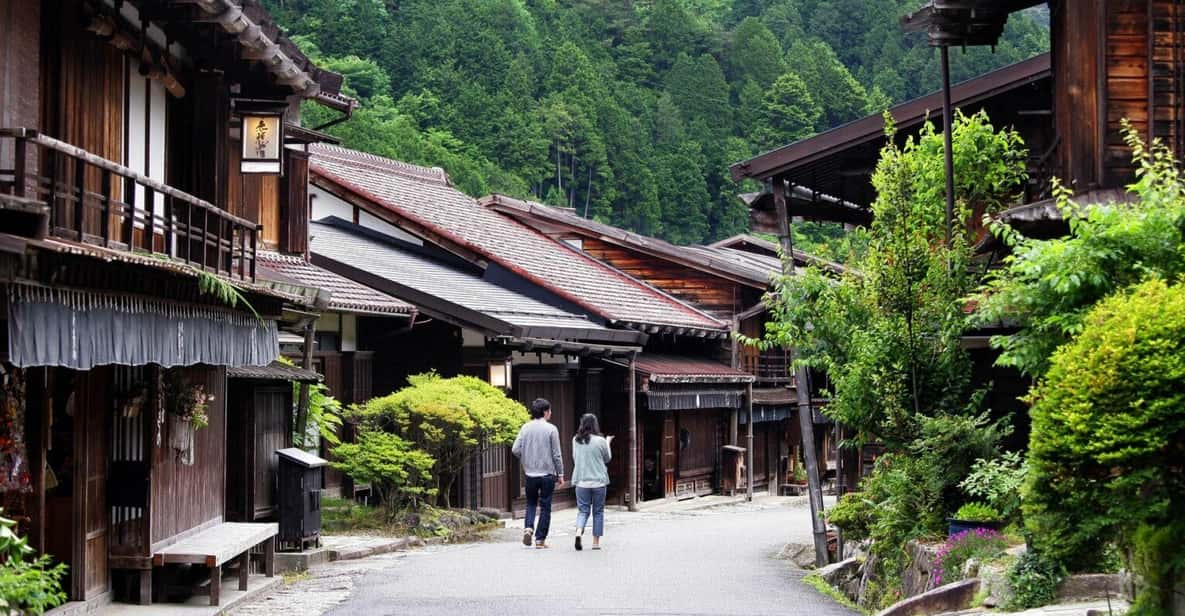
This Nakasendo Trail hiking tour offers an immersive journey through Japan’s historical landscapes. Over the course of 8 hours, travelers will explore the well-preserved townscape of Tsumago-juku , hike the 8-kilometer Nakasendo Trail to Magome-juku , and discover the charming town of Magome-juku.
The tour includes round-trip transportation from Nagoya Station, a knowledgeable English-speaking guide , and a provided lunch. Hikers should be prepared for significant walking and hot, humid weather, and the tour isn’t recommended for small children. With its combination of cultural sights and scenic natural beauty, this Nakasendo Trail adventure promises an unforgettable experience.
Tsumago-juku Exploration
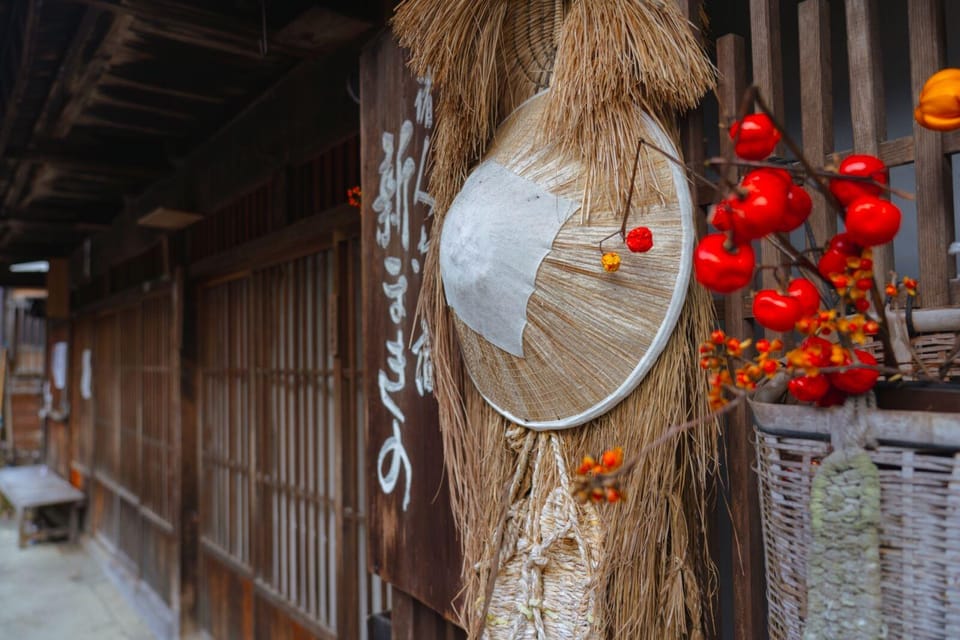
After a 2-hour bus or coach ride from Nagoya Station, the tour begins with a guided exploration of Tsumago-juku . This well-preserved post town offers a glimpse into Japan’s feudal past.
The guide leads the group through the historic streets , pointing out the traditional machiya townhouses, the old honjin inn, and the wakareshuku rest house. Visitors can imagine what it was like for Edo-period travelers along the Nakasendo Trail . The 45-minute tour provides context and sets the stage for the upcoming hike.
With an understanding of Tsumago-juku’s history and architecture, the group is now prepared to embark on the iconic Nakasendo Trail.
Nakasendo Trail Hike
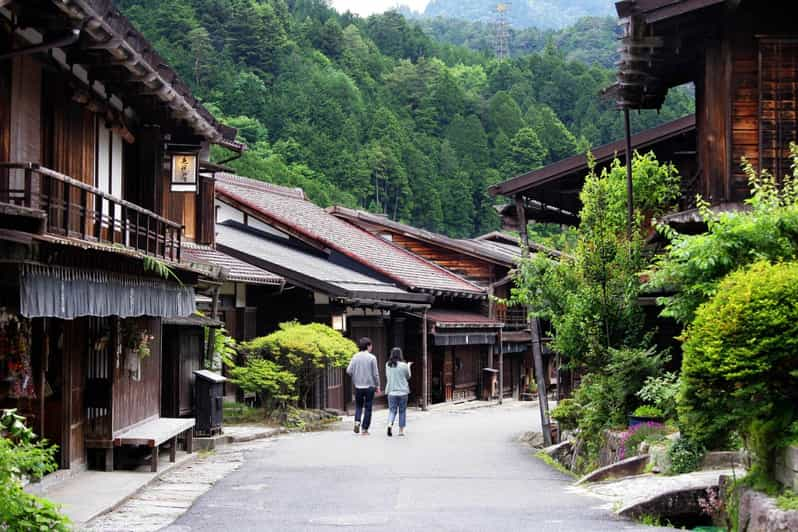
The group sets off from Tsumago-juku , embarking on the iconic Nakasendo Trail . The 8-kilometer hike leads them through lush forests and over rolling hills, offering breathtaking views of the surrounding countryside.
Along the way, they encounter remnants of the historic highway, including well-preserved Edo-period roadside stations and natural landmarks that serve as reminders of the trail’s rich history. The group navigates the challenging terrain, taking breaks to admire the scenic vistas and learn about the significance of the Nakasendo from their knowledgeable guide.
After several hours of steady hiking, they arrive at the charming town of Magome-juku , where they explore the quaint streets and experience a glimpse of traditional Japanese life.
Magome-juku Discovery
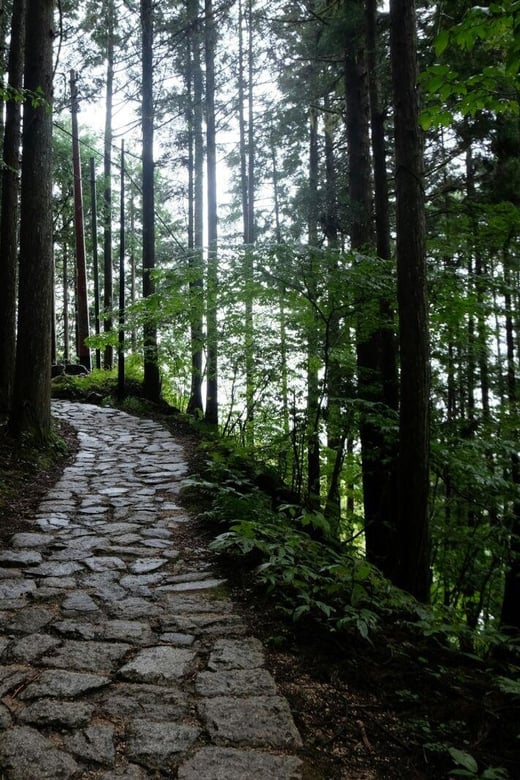
Reaching the historic town of Magome-juku , the group eagerly steps into its quaint, time-honored streets. The guided tour provides insights into the town’s well-preserved Edo-period architecture , including:
- Traditional machiya townhouses with distinctive tiled roofs and wooden lattice windows.
- The Magome-juku Honjin, a historical inn that once accommodated feudal lords and samurai.
- The Nakasendo Highway , the ancient trade route that connected Edo (modern-day Tokyo) and Kyoto, now a peaceful walking path through the town.
Granted ample time to explore Magome-juku, the group wanders the charming alleyways, pausing to admire the scenic vistas and enjoy the timeless atmosphere of this captivating post town.
Transportation and Logistics
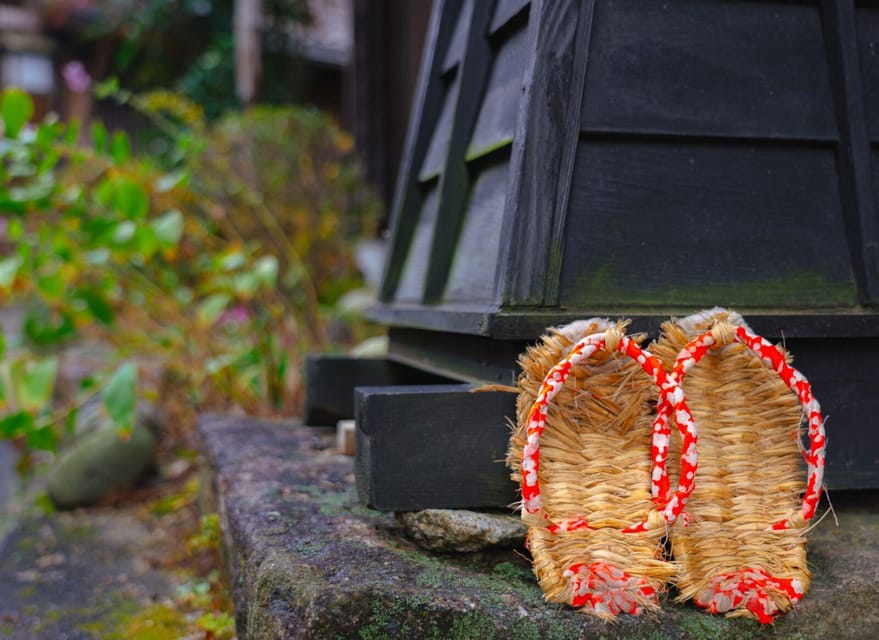
The tour begins with a 2-hour bus or coach ride from Nagoya Station to the historic post town of Tsumago-juku. Once there, participants explore the well-preserved townscape on a guided 45-minute tour .
After the tour, they set off on the 8 km Nakasendo Trail , hiking from Tsumago-juku to Magome-juku, a journey that takes around 3 hours. Upon reaching Magome-juku, the group enjoys a guided tour and free time to discover the quaint town.
Highlights and Inclusions
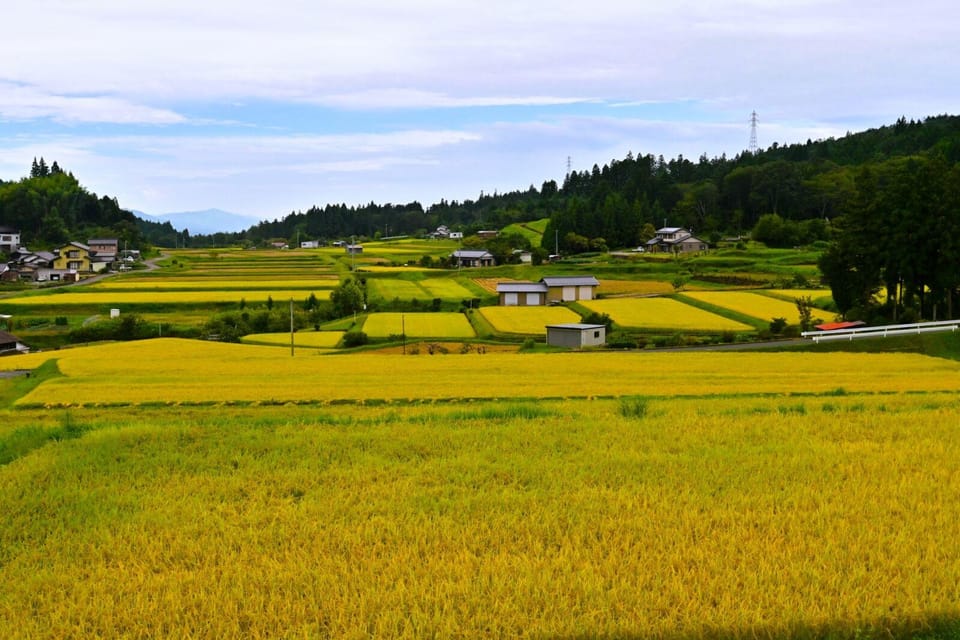
On the Nakasendo Trail hiking tour , participants can expect to visit the well-preserved townscape of Tsumargo-juku , a historic post town.
The tour also includes:
- A guided 3-hour hike along the 8 km Nakasendo Trail, connecting Tsumargo-juku and Magome-juku , offering scenic views of the countryside.
- A guided tour and free time to explore the quaint town of Magome-juku.
- Lunch and transportation during the tour, as well as an English-speaking guide to provide insights throughout the day.
The tour is best suited for active travelers, as significant walking is required. Proper footwear and preparation for varying weather conditions are recommended.
Important Considerations

While the Nakasendo Trail hiking tour offers an immersive experience through Japan’s historic countryside, there are a few important factors to consider before booking.
The trek covers over 8 km, so participants must be prepared for significant walking . Appropriate footwear is essential, as the trail can be uneven and challenging.
Plus, the tour runs during the hot and humid summer months , so staying hydrated and dressing for the weather is crucial.
Lastly, the tour may not be suitable for young children, as the hiking portion could be strenuous . Considering these practical concerns will help ensure a safe and enjoyable experience on the Nakasendo Trail.
Booking and Availability
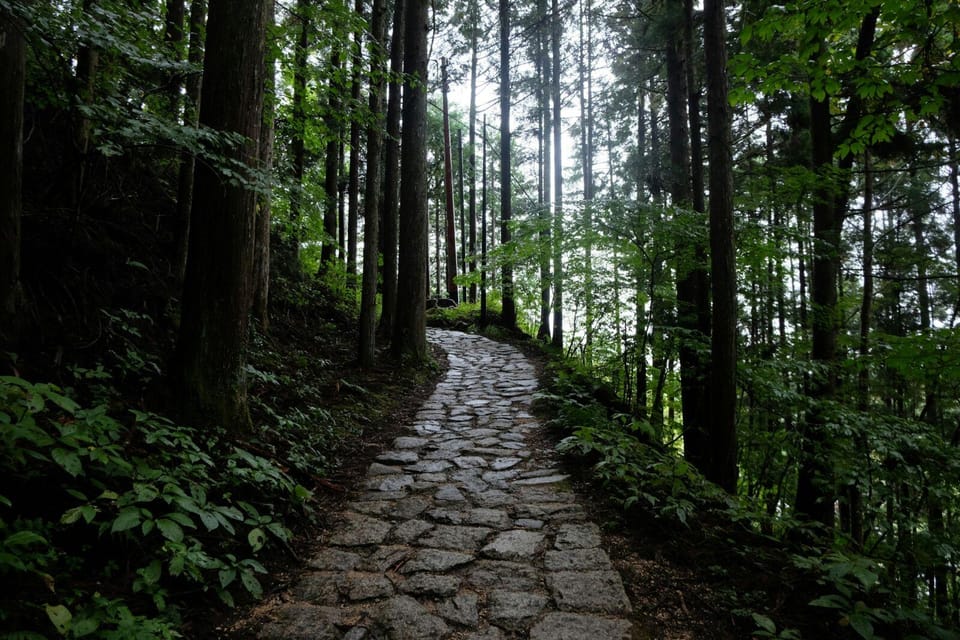
Booking the 1-day Nakasendo Trail hiking tour from Nagoya is available on select dates throughout the year. To reserve your spot, you can check the availability and book directly on the tour provider’s website.
Some key points about booking this tour:
- Availability is limited, so it’s recommended to book in advance to secure your preferred date.
- The tour can be booked using the "Reserve now, pay later" option, which allows you to hold your spot without immediate payment.
- Once booked, you’ll receive confirmation details , including meeting location , schedule, and what to bring .
Here's a few more nearby tours and experiences we think you'll like.
- Nagoya: Japan/ Asia Esim Roaming Mobile Data Plan
- Nagoya: Private One-Way Transfers To/From Suzuka Circuit
- Chubu Airport (Ngo): Private One-Way Transfer To/From Aichi
- Nagoya: Customized Private Tour
- Chubu Airport (Nagoya): Private One-Way Transfer To/From Kanazawa
- Nagoya: Full-day Kisoji Nakaendo Trail Tour
Frequently Asked Questions
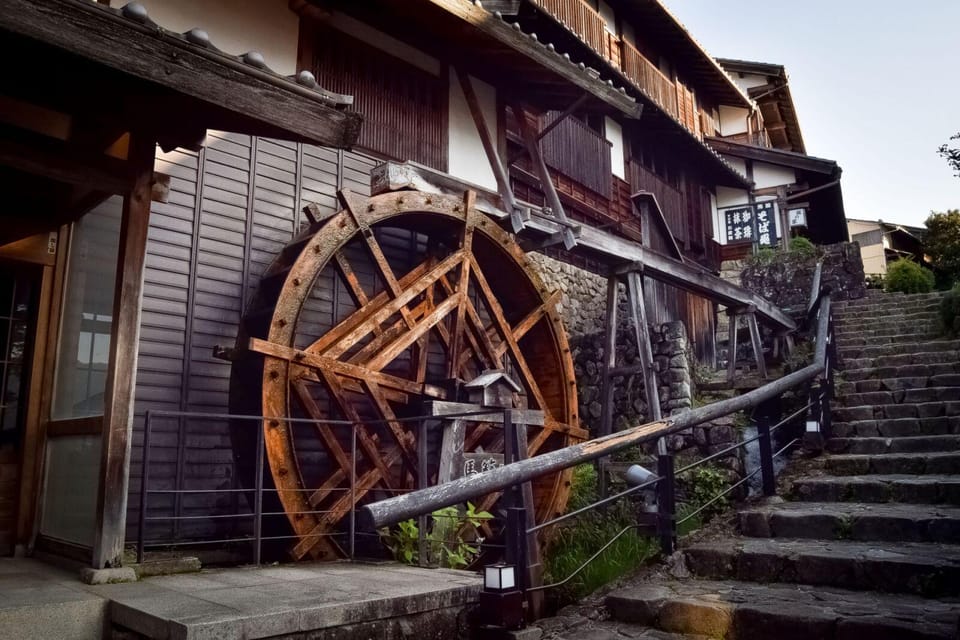
Can I Customize the Tour to Fit My Preferences?
While the tour’s itinerary is pre-set, customers can inquire about customizing certain aspects to fit their preferences, such as adjusting the hiking distance or adding extra time in the towns. The tour operator may accommodate reasonable requests if feasible.
How Difficult Is the Hiking Portion of the Tour?
The hiking portion of the tour involves a 3-hour trek along the rugged Nakasendo Trail, covering around 8 km. It’s considered a moderately challenging hike, requiring appropriate footwear and preparation for hot, humid weather, though it’s not suitable for small children.
Are There Any Age Restrictions for the Tour Participants?
The tour doesn’t have any specific age restrictions, but it’s not suitable for small children due to the significant amount of hiking involved. The tour is best suited for participants who are physically fit and able to complete the 8 km hike.
Can I Bring My Own Food and Drinks During the Tour?
Participants are allowed to bring their own food and drinks during the tour. However, a complimentary lunch is provided as part of the tour’s inclusions. Carrying snacks and water is recommended, especially for the hiking portion of the excursion.
What Should I Do if I Encounter Any Medical Issues During the Tour?
If a participant encounters any medical issues during the tour, they should notify the English-speaking guide immediately. The guide can provide first aid assistance, contact emergency services if necessary, and help the participant get the appropriate medical attention.
Not for you? Here's more of our most recent tour reviews happening neaby
- Private Tour Nagoya. Nagoya Heritage & Modernity
- From Nagoya: Embrace Rural Japan in Kiso Valley and Magome
- Hida Takayama From Nagoya Bus Ticket One-Way/Round-Trip
- Nagoya: Hida Takayama and Gassho-zukuri Village Day Tour
- Nagoya 1-Day Trip: Hida Takayama and Shirakawa-go Village
- 1-Day Tour: Eat Like a Local in Nagoya
- Nagoya Samurai & Toyota Tour Guided by Friendly Locals
- Nagoya: Grandma’s Home Cooking Cute Bento Workshop
- To/From Tokyo:Private Luxury Transfer To/From Nagoya (1 Way)
- Grandma’s Nagoya Specialties Cooking Class
- Chubu Airport (Ngo) To/From Nagoya Private Transfer
- Private Tour Nagoya to Shirakawa-go & Takayama
- Nagoya (NGO): Chubu Centrair International Airport Lounge
- Day Tour: Nagoya’s Industrial Legacy and Toyotas Innovation
- From Nagoya: Hida Takayama and Shirakawago UNESCO Day Trip
The 1-day Nakasendo Trail tour offers an immersive experience into Japan’s rich history and natural beauty. Hikers will explore the well-preserved Edo-period townscapes , traverse the scenic 8-kilometer trail, and gain insight into the lives of historical travelers. With round-trip transportation, an English-speaking guide , and provided lunch, this tour provides a unique opportunity to connect with Japan’s cultural heritage in a challenging yet rewarding way.
Similar Posts

Photography With Traditional Flamenco Dress

Cappadocia Vip Green Tour With Nar Lake (All Included, Small Grp)

Surf Lessons for All Levels

Kruger Park Scheduled Full Day Safari Drive From Hazyview

Venice Carnival Traditions Private Tour With Mask Workshop

Arabian Desert Safari Abu Dhabi: 6HOUR Tour With BBQ & Live Shows

IMAGES
VIDEO
COMMENTS
Japan itinerary 4 days 3 nights: Trip cost for 4 days in Japan. Airfare: USD 615 because I bought it 2 weeks in advance. Day 1: Transportation: $8.77 (by public transport) Shabu-shabu hot pot: $13.16; Stay: Toyoko Inn: $140.22/night/double room for 2 people; Japanese Beef Hot Pot (Shabu Shabu) | 4 days in japan
Day 3 - Cultural Tokyo Itinerary - Tsukiji (7)- Ginza (8) - Akihabara (9) Day 4 - Food and Fun Tokyo Itinerary - teamLab Borderless (11) - Shinjuku (12) The above itinerary depends on where you're staying. If your accommodation is in the Shinjuku area, I'd move (12) Shinjuku from Day 4 to Day 1.
However, if you've never been before and don't know where to start, don't worry. We've put together the perfect 4-day Tokyo itinerary for first-time visitors. From visiting popular tourist spots to sampling delicious Japanese food, this fun-filled guide has it all! Get Your Guide. DAY 1. TeamLab Planets.
Simply choose the Japan tour package that suits you, and immerse yourself in the beauty and culture of Japan. Our operations team is available 24/7 to ensure everything runs smoothly, with their top priority being that you have a stress-free and enjoyable trip. We offer a variety of package tours in Japan to cater to different needs and budgets.
Remote and Untouched Japan Tour Itinerary (4 Days | 3 Nights) Highlights: Yakushima Island | Kagoshima | Nagasaki. This journey takes you on a 40-minute flight from Kagoshima to the southern island of Yakushima, a World Heritage Site, where nature is abound in ancient cedar forests with trees dating back 7000 years, with monkeys and turtles roaming the dramatic coastline.
To give you an idea, you should expect to travel in Japan with an average daily cost of about USD $45~ per person on a budget, or at least $120~ if you want to experience more comfort in activities, tours, hotels, and more. (Values below show low budget to medium budget ranges). Hotels: $25 to $120 USD / day.
Tokyo 4-Day Itinerary Summary. Four days allows you to see Tokyo and one nearby place. Base yourself somewhere central to save time. On Day 1, visit modern Tokyo on the west side. On Day 2, visit traditional Tokyo on the east side. On Day 3, take a day trip outside of Tokyo to Nikko, Kamakura or Mt Fuji. On Day 4, visit the Imperial Palace Area ...
Day 1: As mentioned in the 2 day itinerary. Day 2: As mentioned in the 2 day itinerary. Day 3: Weird and wonderful. - Sumo wrestling morning. - Geisha studio transformation. - Owl or hedgehog cafe. - Dinner at the Robot Cafe or Ninja restaurant (the one not chosen for Day 1)
Escorted 4-day Tokyo tour to all the Tokyo must-sees including Tokyo Tower, Senso-Ji Temple, Tsukiji Market & More. 24/7 customer service, refund is guaranteed. ... Japan Tours; Classic Tokyo Tour; Classic Tokyo Tour. 4.9/5 590 Latest reviews . Tour Code: ODY-JP-017. Destination: Tokyo, Mt. Fuji . Duration5 Days;
11 days & 10 nights. USD 2,313.99. Treasures of Japan | Group Tour Package. 7 days & 6 nights. USD 1,784.42. Discover the magic of travel with Thrillophilia's exclusive 3 Nights 4 Days Japan tour packages, with each itinerary thoughtfully designed to cater to your unique preferences. Choose from our diverse range of packages and embark on a ...
The varied choice of food places was great, and we loved the "cooking class" experience when having Okonomiyaki. A great group of people to enjoy it with, too. We offer 3 great 4-Days Japan tours and itineraries in 2024/2025. Our 4-Days itineraries and tours in Japan are offered by some of Japan's best tour operators.
Here are the highlights of Kyoto I'll be explaining in further detail below: KYOTO ITINERARY HIGHLIGHTS: 1: Arashiyama Bamboo Grove ~ 2: View from Sanjo Ohashi Bridge ~ 3: Daigo-ji Temple ~ 4: Kinkaku-ji Temple ~ 5: Fushimi Inari Shrine ~ 6: Backstreets of Gion ~ 7: Gio-ji Moss Gardens ~ 8: Kiyomizu-dera.
The following is a suggested itinerary for first time travelers to Japan who spend 4 days, 3 nights in the Kanto Region around Tokyo. Day 1 - Arrive at Narita Airport. Arrive at Narita Airport, and spend the remaining day in Tokyo. Day 2-3 - Tokyo. Spend two full days in Tokyo. Consider our suggested Tokyo itineraries.
Browse the best tours in Japan with 5,035 reviews visiting places like Tokyo and Kyoto. All Major Brands. Biggest selection. Best Prices. Home / Asia tours / Japan tours; Japan Tours & Trips 4.5 ... 9 Day Independent Japan 4.5 2 Reviews by TourRadar travelers "I really appreciated the inter-city travel and accommodation being sorted." ...
Tour Descriptions. Immerse yourself in the unique charm of Tokyo with our Private 4-Day Tour. Guided by an expert, uncover the city's blend of tradition and modernity, from serene temples and shrines to the vibrant pop culture hub of Shibuya. Our tailored itinerary showcases the best of Tokyo for an unforgettable journey.
Day 4: Nara and Hiroshima: Historical and Peaceful Reflections. Morning. Travel to Nara, Japan's first permanent capital.Visit the Todai-ji Temple, home to the Great Buddha statue, one of the largest bronze statues in the world.Stroll through Nara Park, where you can interact with friendly deer that roam freely.. Afternoon. Head to Hiroshima to visit the Peace Memorial Park and Museum ...
6 Days 5 Nights | from US $1998.00. Tour the very best destinations from Tokyo to Kyoto, including a day at Mount Fuji / Hakone, in the enchanting cherry blossoms season during this special 6-day Cherry Blossoms Tour. Tue. Mar 25, 2025. Tue. Mar 24, 2026. Tue. Mar 31, 2026.
Pro Tip: If you are travelling to other parts of Japan, don't activate your JR pass until the morning you leave Tokyo at the earliest. The JR pass is best used for long-distance travel throughout Japan. Check out this incredible 3 -week itinerary which will take out all the stress of planning an amazing trip to Japan!. Another train ticket option is a Suica or Pasmo card which you can ...
This is one of the few parks in Tokyo that charges a small entrance fee of 200 yen. Location: Shinjuku Gyoen (Shinjuku Entrance) Naitomachi, Shinjuku, Tokyo 160-0014, Japan. Opening hours: Daily 9 am - 4.30 pm (last entry 4 pm) Closed on Monday (except cherry blossom season) 200 yen.
Bullet train. The Shinkansen train between Osaka and Kyoto is cheap and lightning fast. This trip is included in many Japanese rail passes, but if you're paying for a standalone ticket, you'll pay 1420 yen (about US$10). The trip takes 15 minutes, so slower local trains hardly seem worth the mildly cheaper price.
Japan by Train: the Grand Tour 4.5 11 Reviews by TourRadar travelers "Japan is a great country and by going out of your comfort zone and exploring outside of the tour in your free time really adds to the guided elements of the tour." ... Highlights of Japan - 7 Days 4.1 11 Reviews by TourRadar travelers "Itinerary gave us time at each ...
Day 4 - Transit to Osaka, Namba/Dotonbori Day 5 - Nara Day Tour Day 6 - Kyoto Day Tour Day 7 - Osaka Tour Day 8 - Universal Studios Japan Day 9 - Departure. If you want to take the train for Osaka-Tokyo-Osaka, get a nationwide JR Pass and make sure that long distance trips (Osaka-Tokyo, Tokyo-Osaka, Osaka-Nara) are all within 7 days.
DAY 4. PACKAGE INCLUSIONS: Roundtrip Airfare Manila- Haneda - Manila via Ana Air or similar. 4 days, 3 nights hotel accommodation in 3-stars on Twin/Triple sharing. All transfers for Sightseeing tour by an air-conditioned coach as per the itinerary ( SEAT-IN-COACH ) Full Day Mt Fuji - Hakone-Lake Ashi. Full Day Disneyland Tour.
Recap. The 1-day Nakasendo Trail tour offers an immersive experience into Japan's rich history and natural beauty. Hikers will explore the well-preserved Edo-period townscapes, traverse the scenic 8-kilometer trail, and gain insight into the lives of historical travelers.With round-trip transportation, an English-speaking guide, and provided lunch, this tour provides a unique opportunity to ...